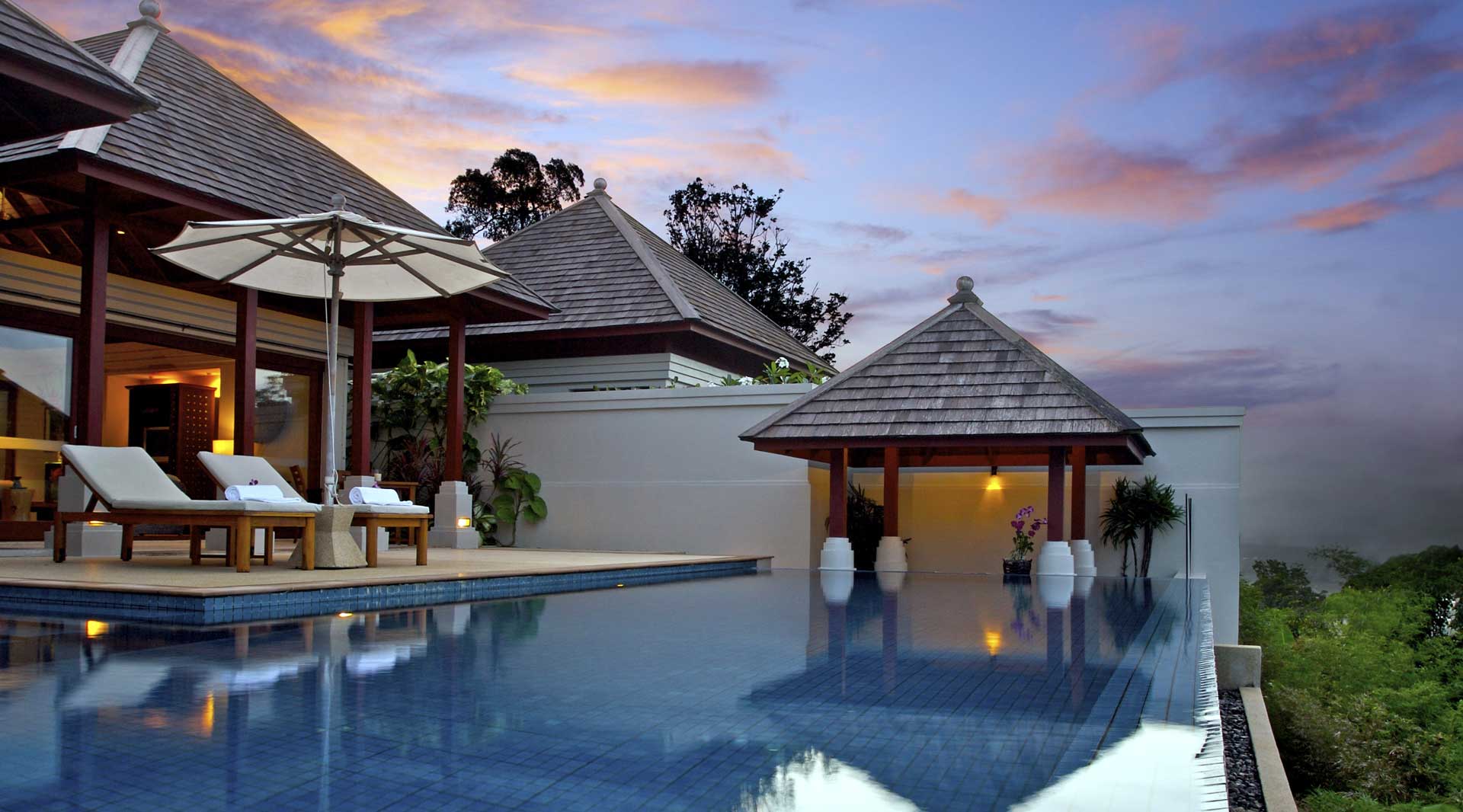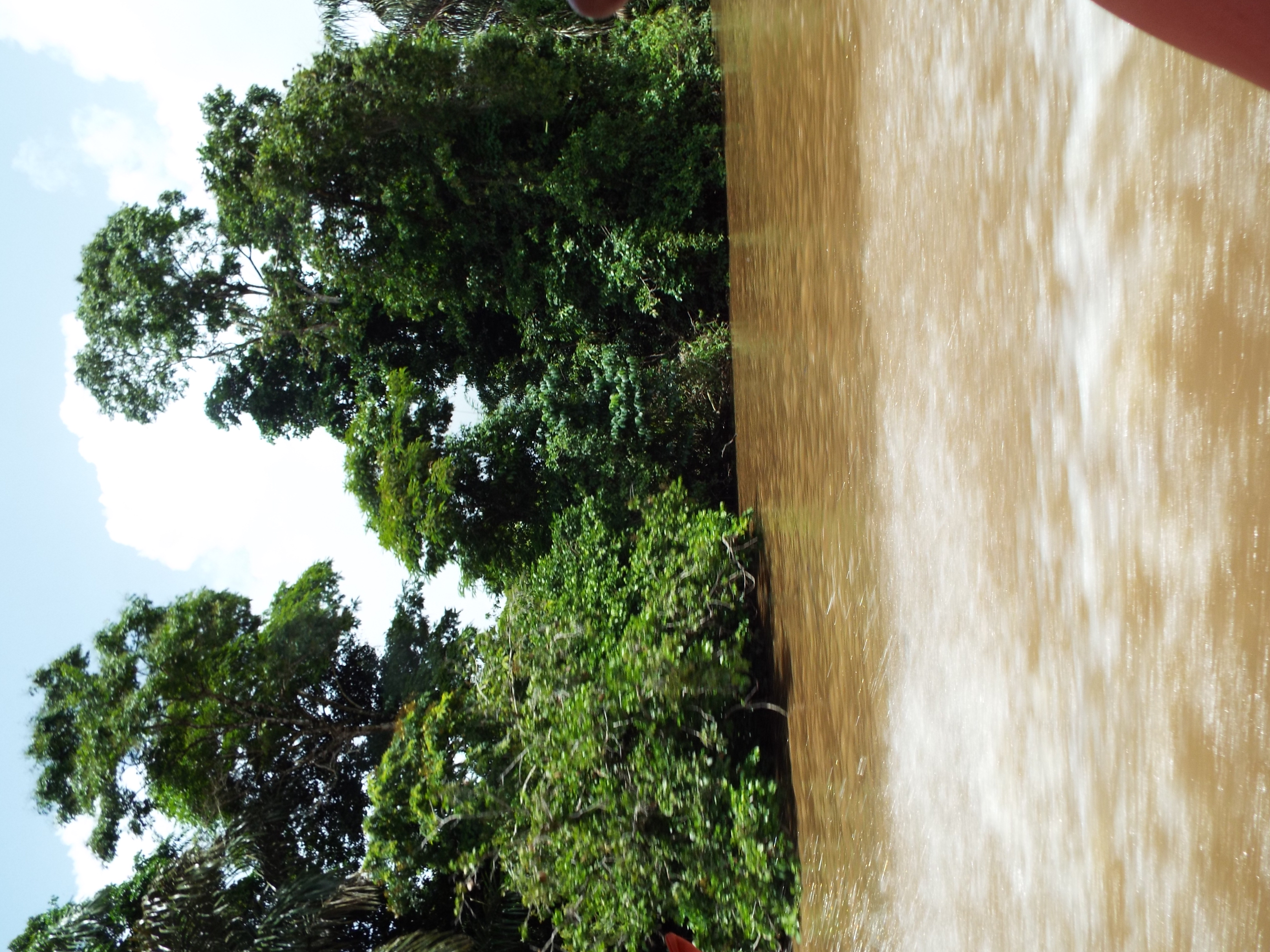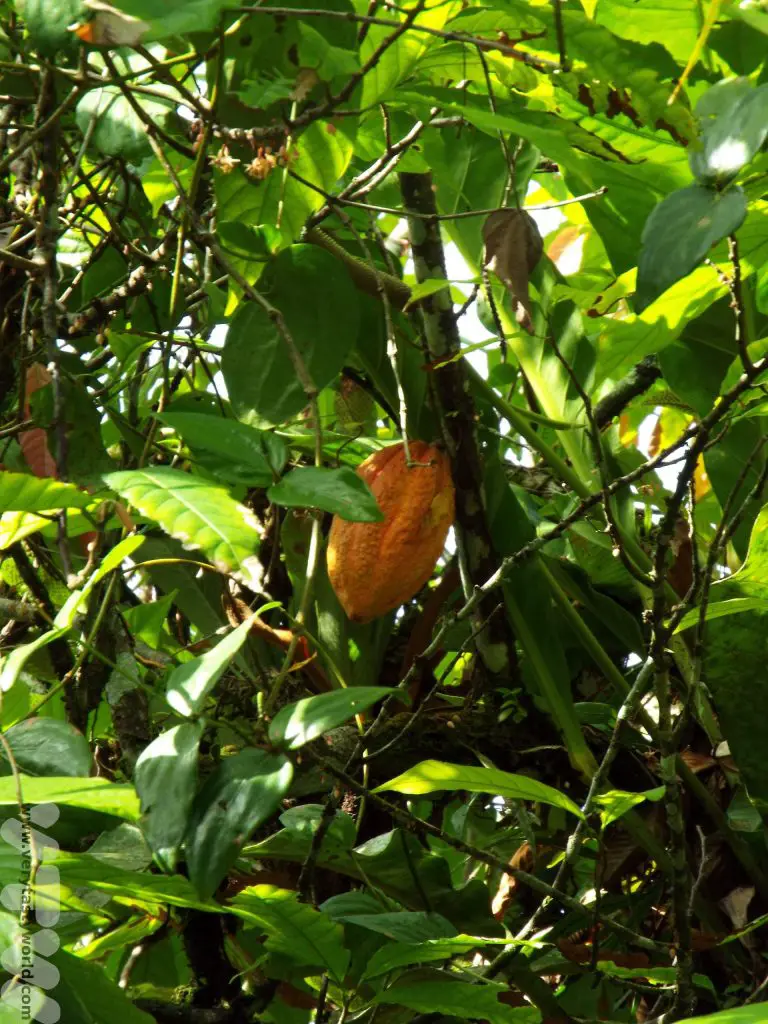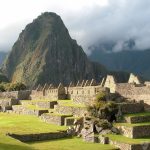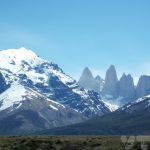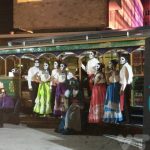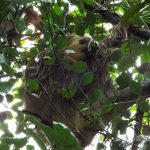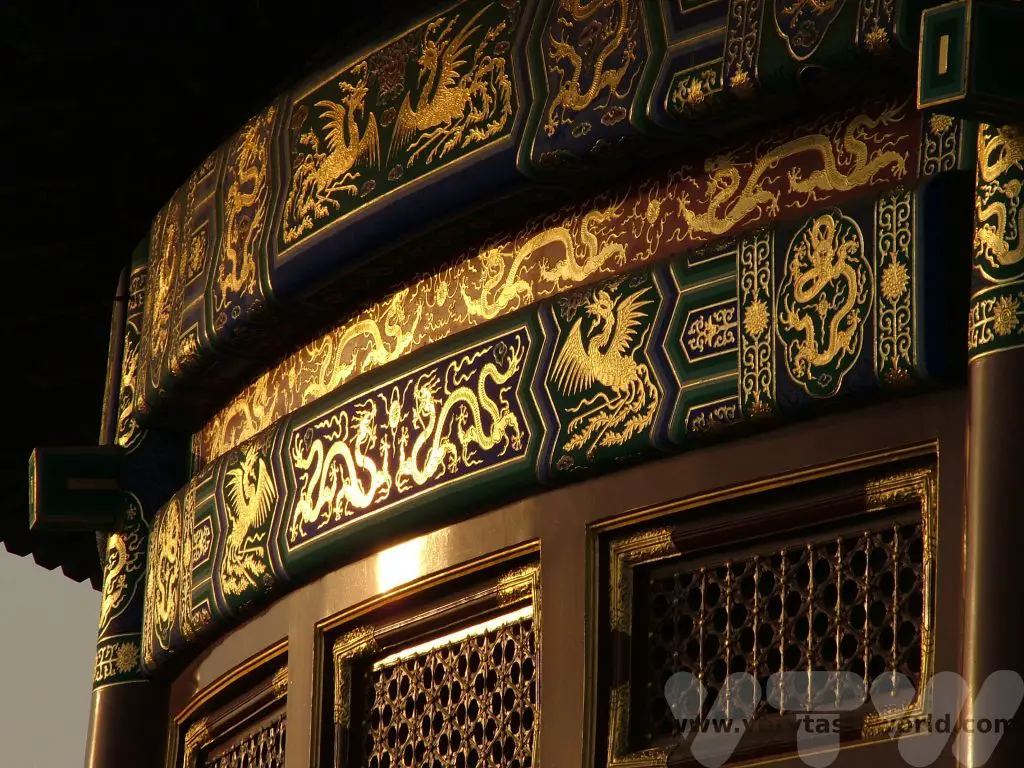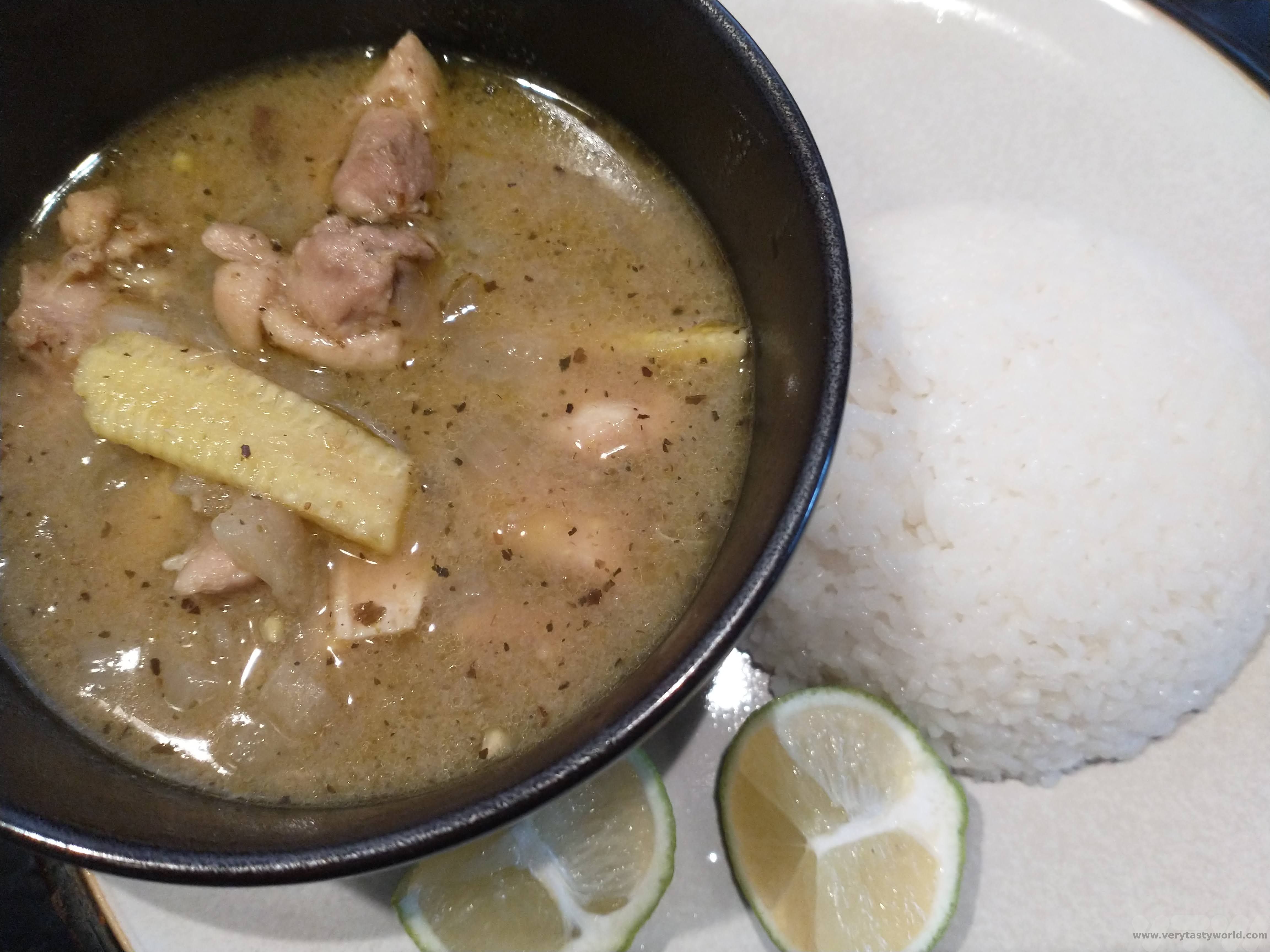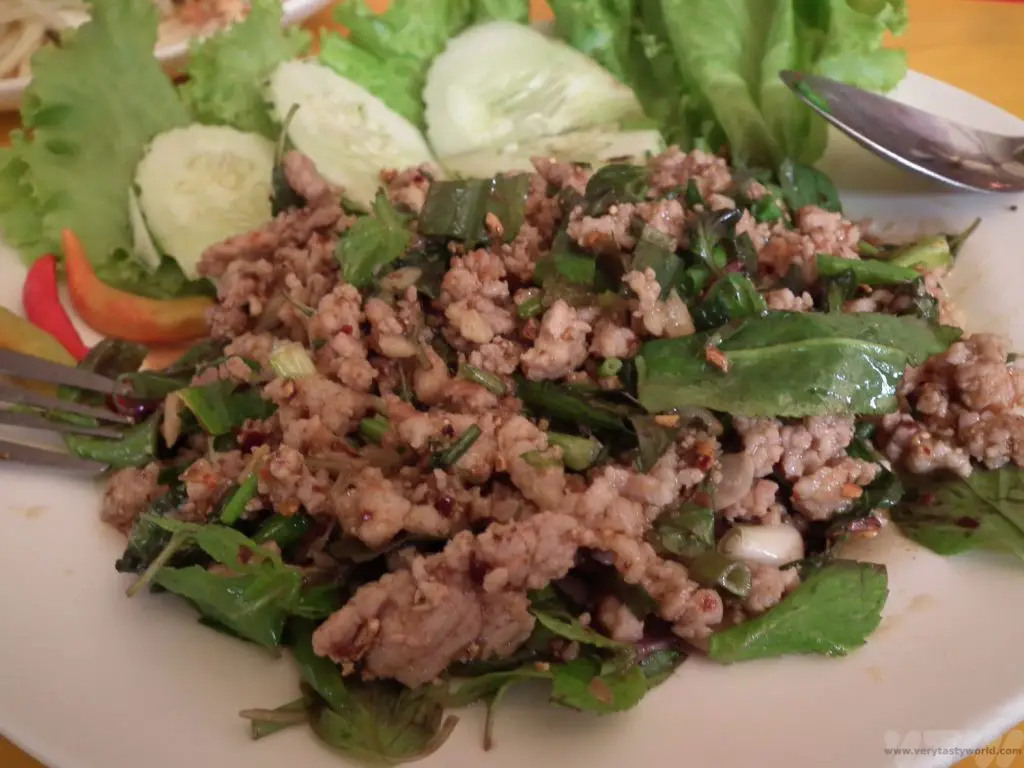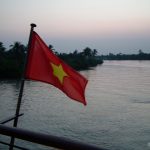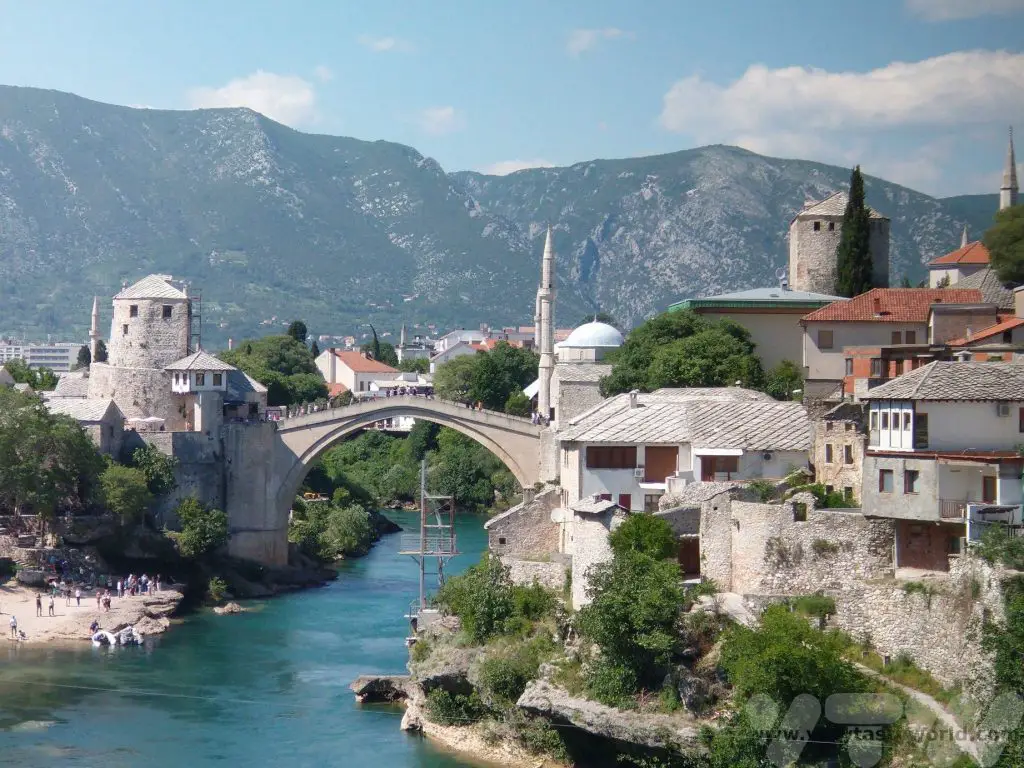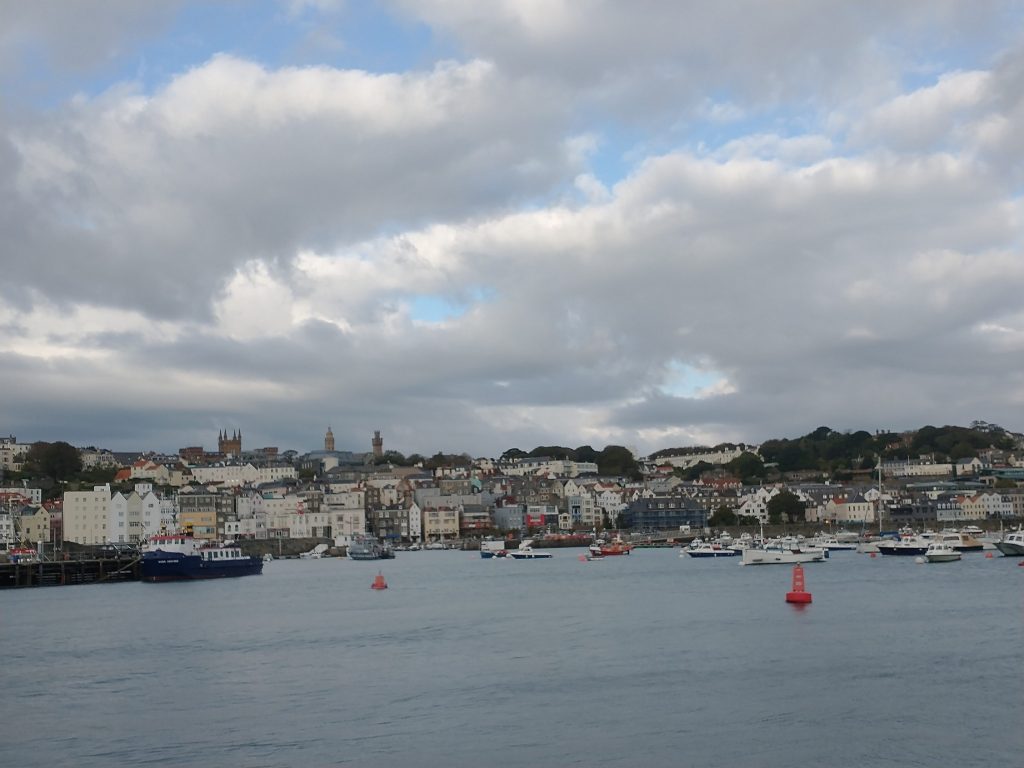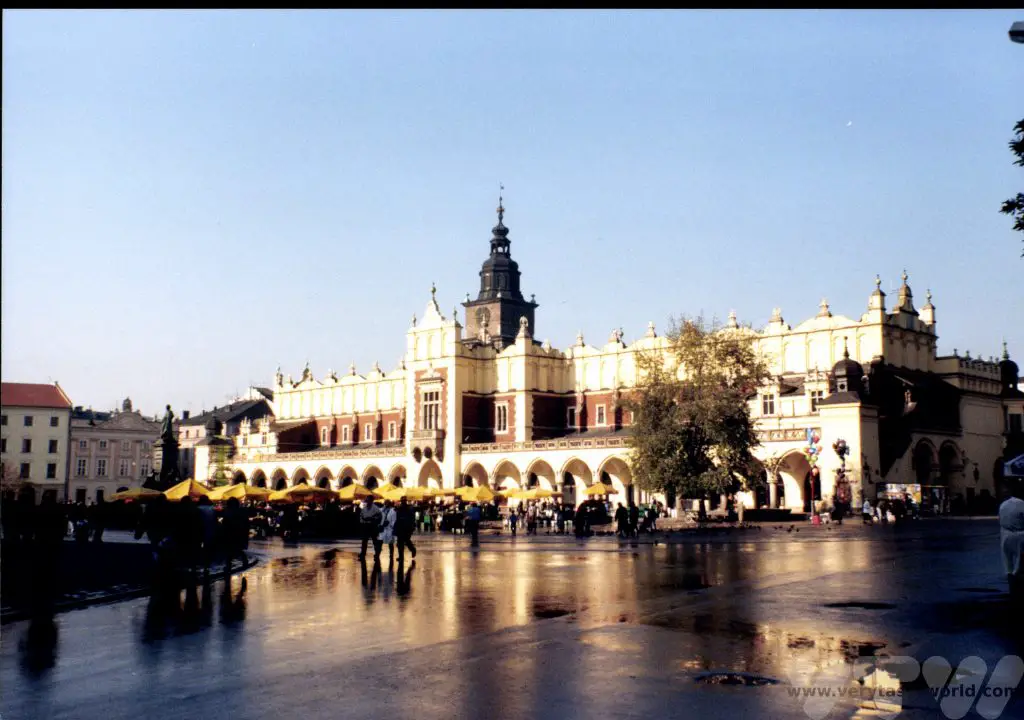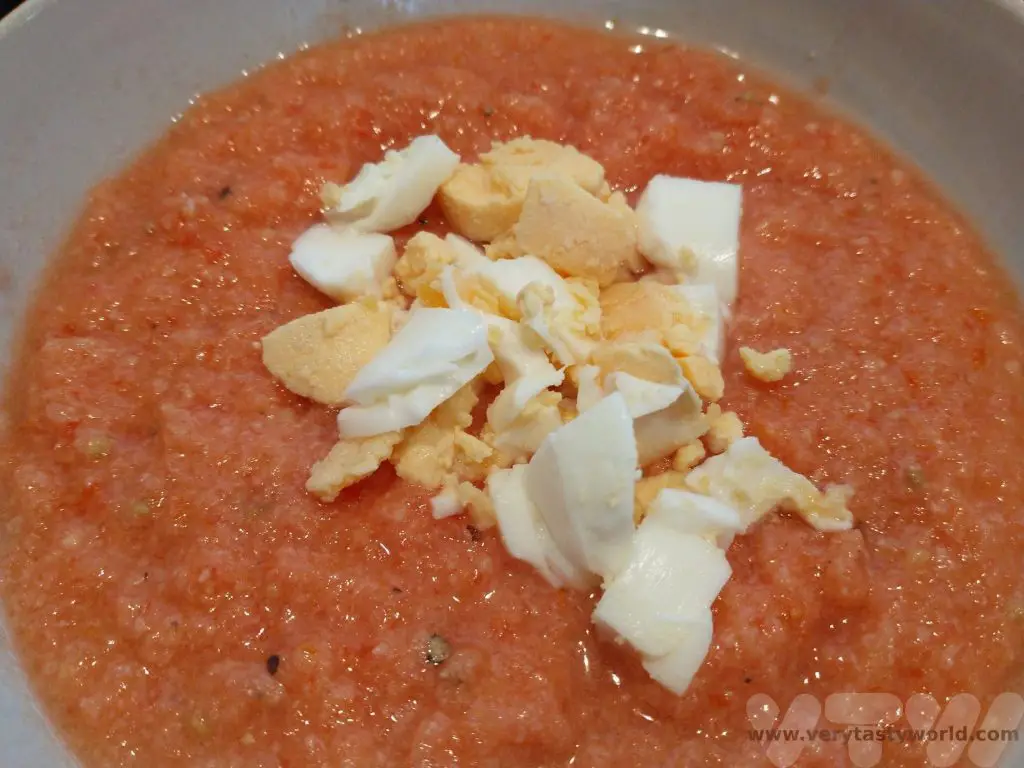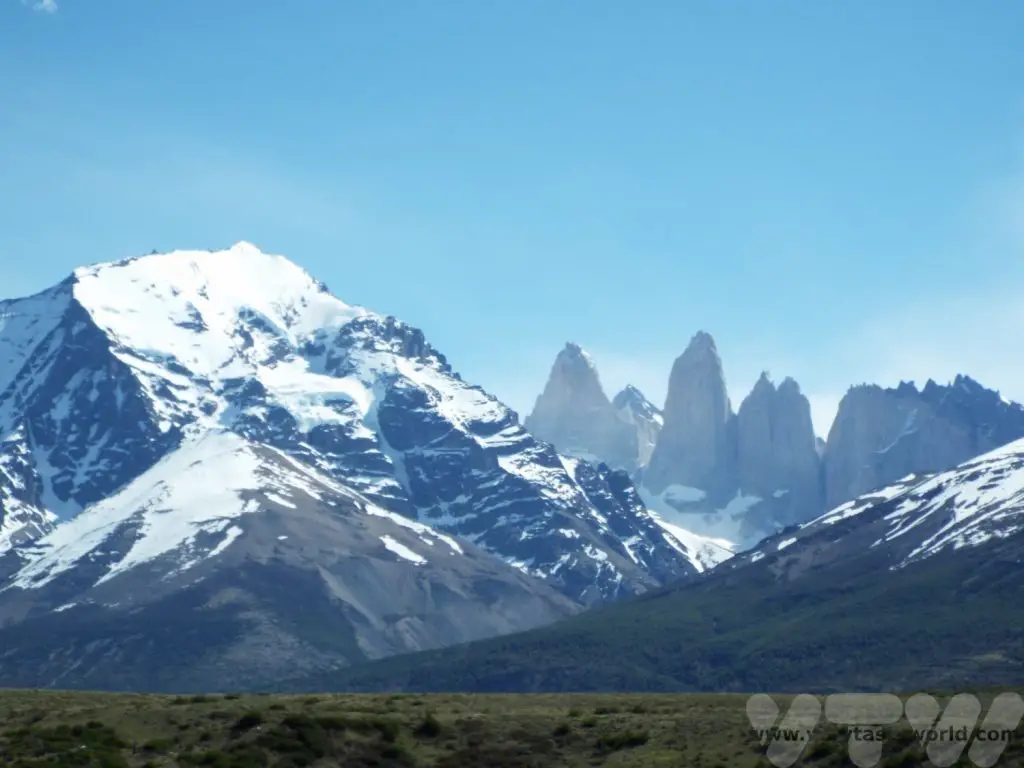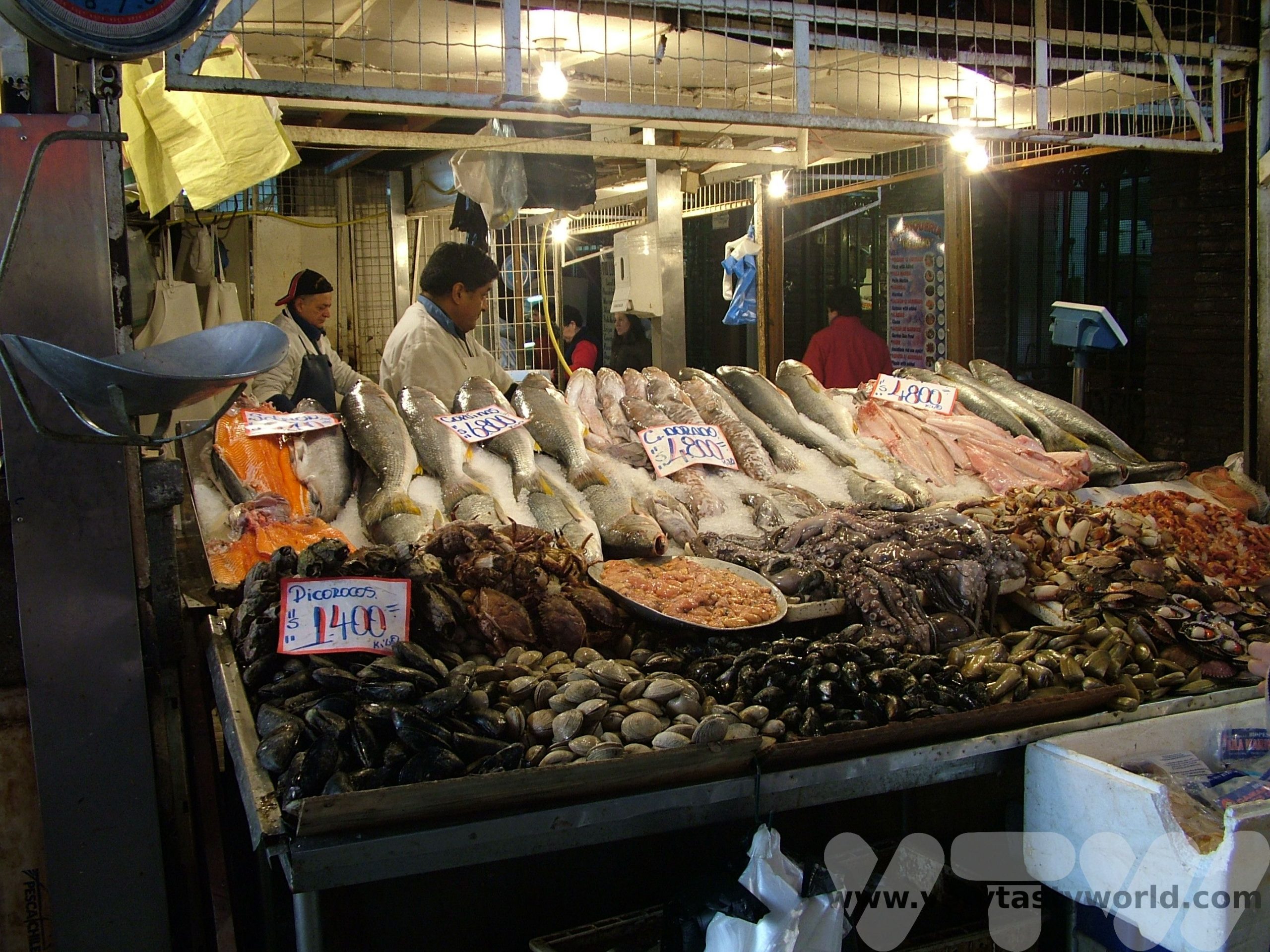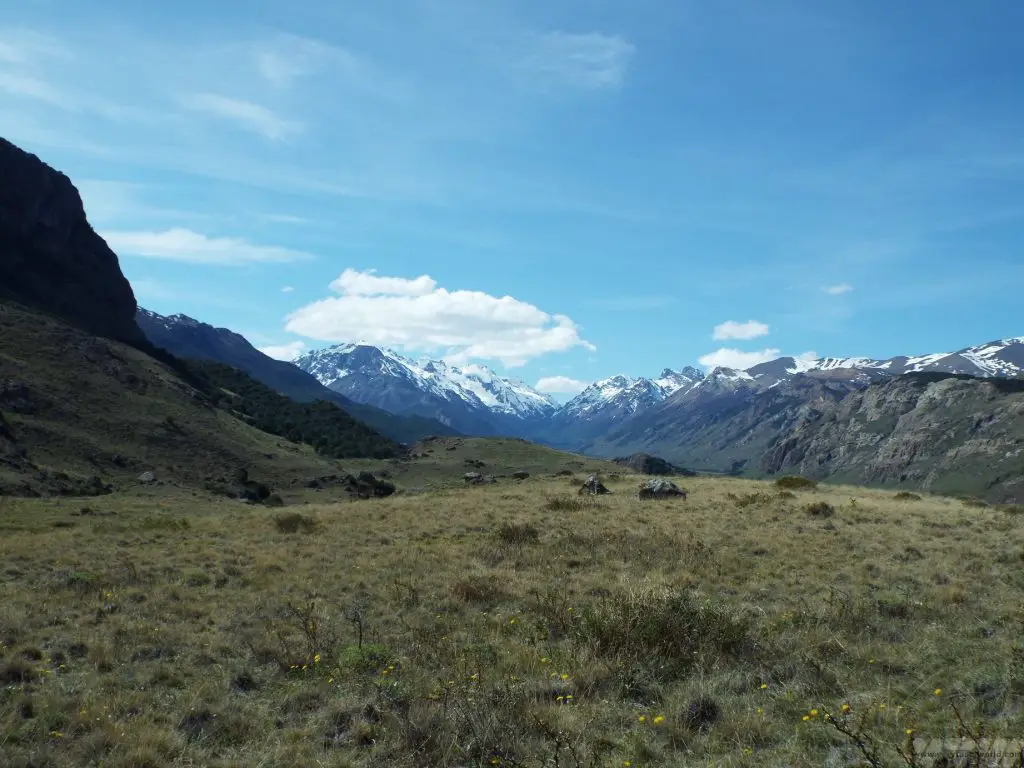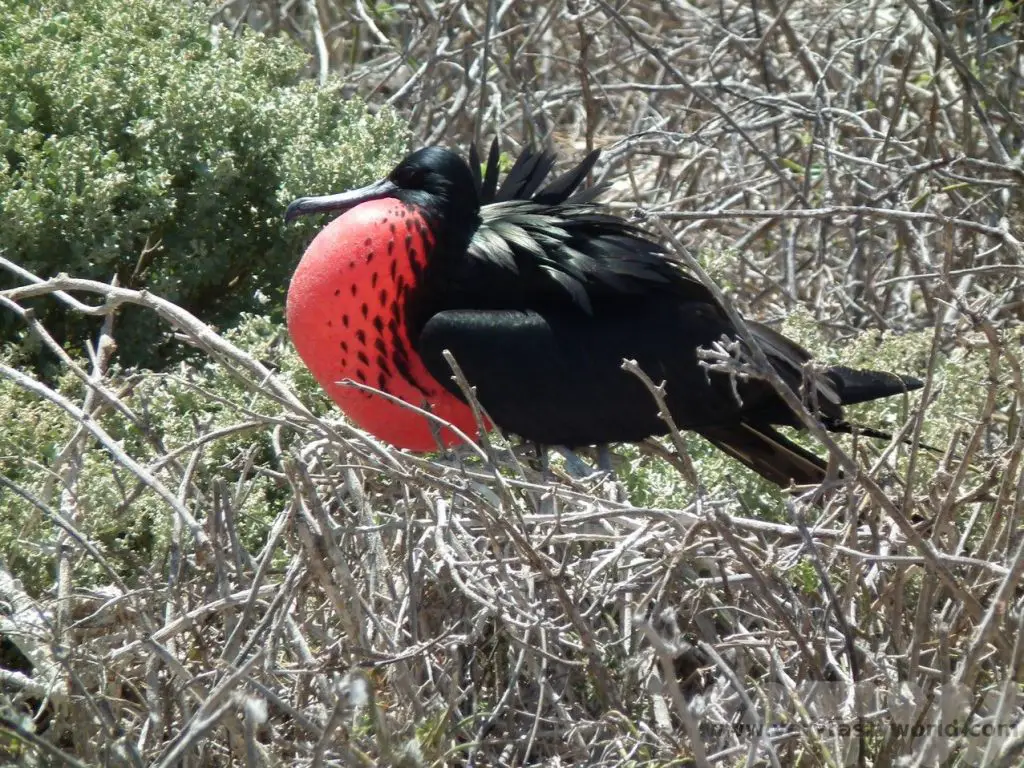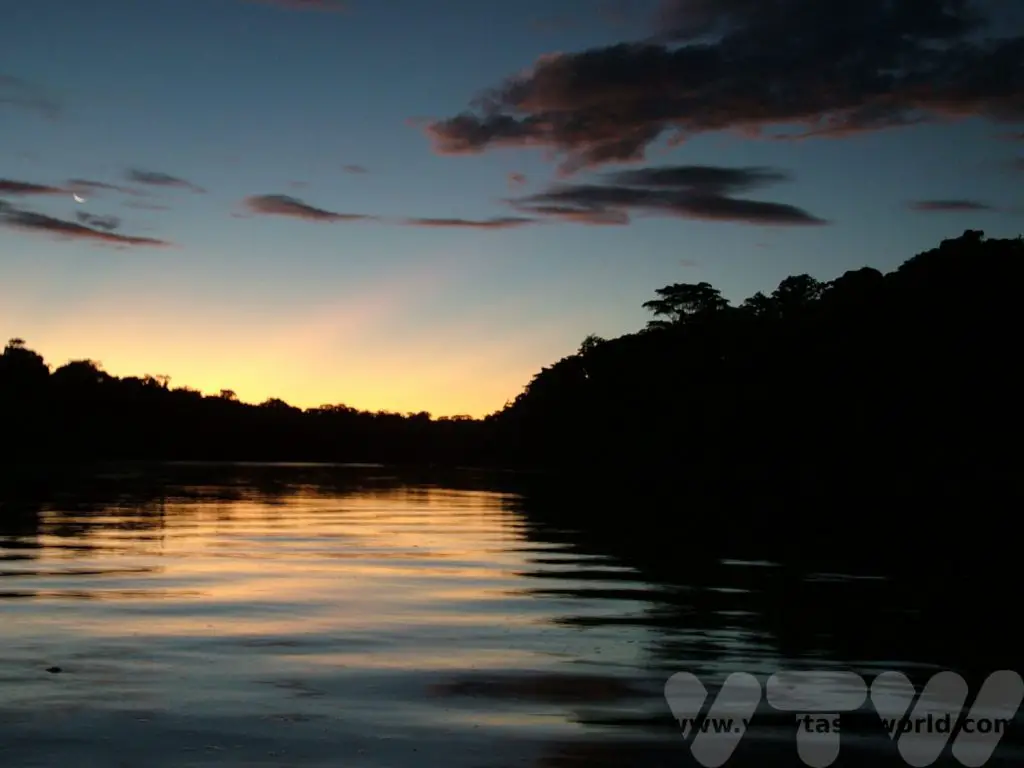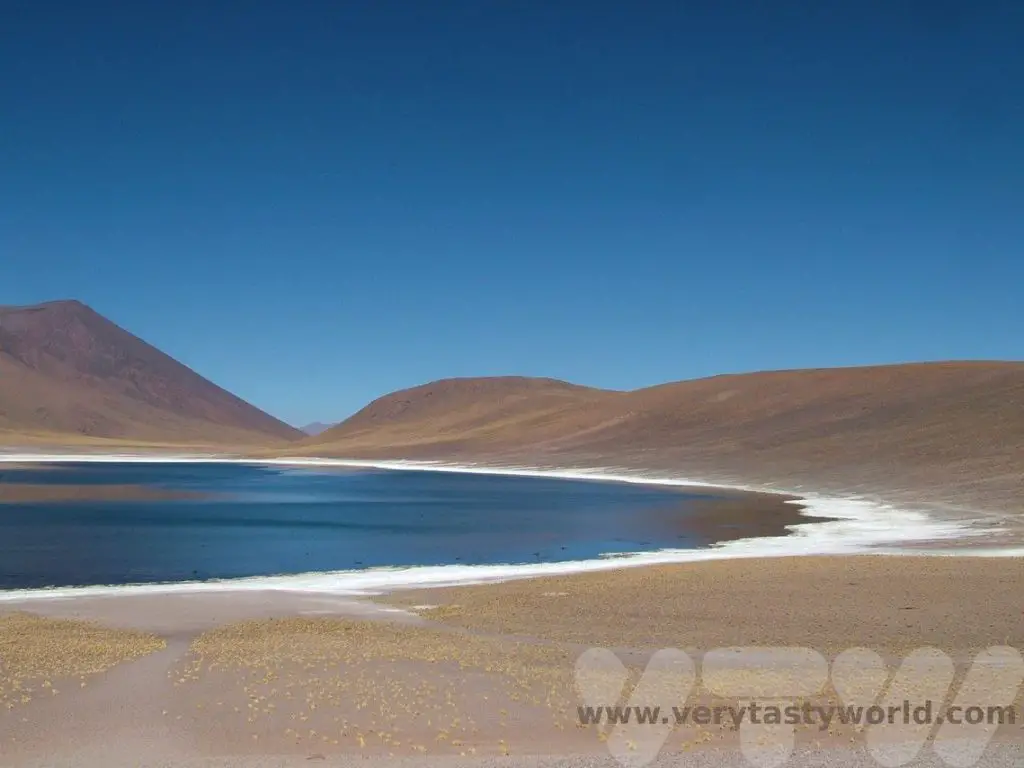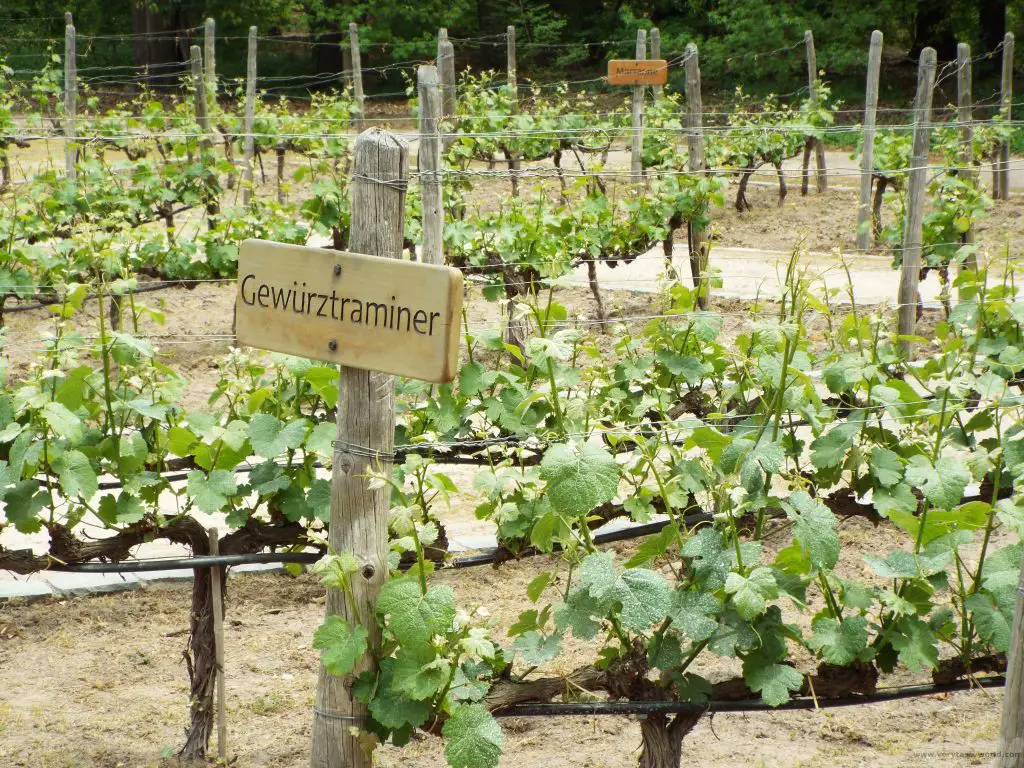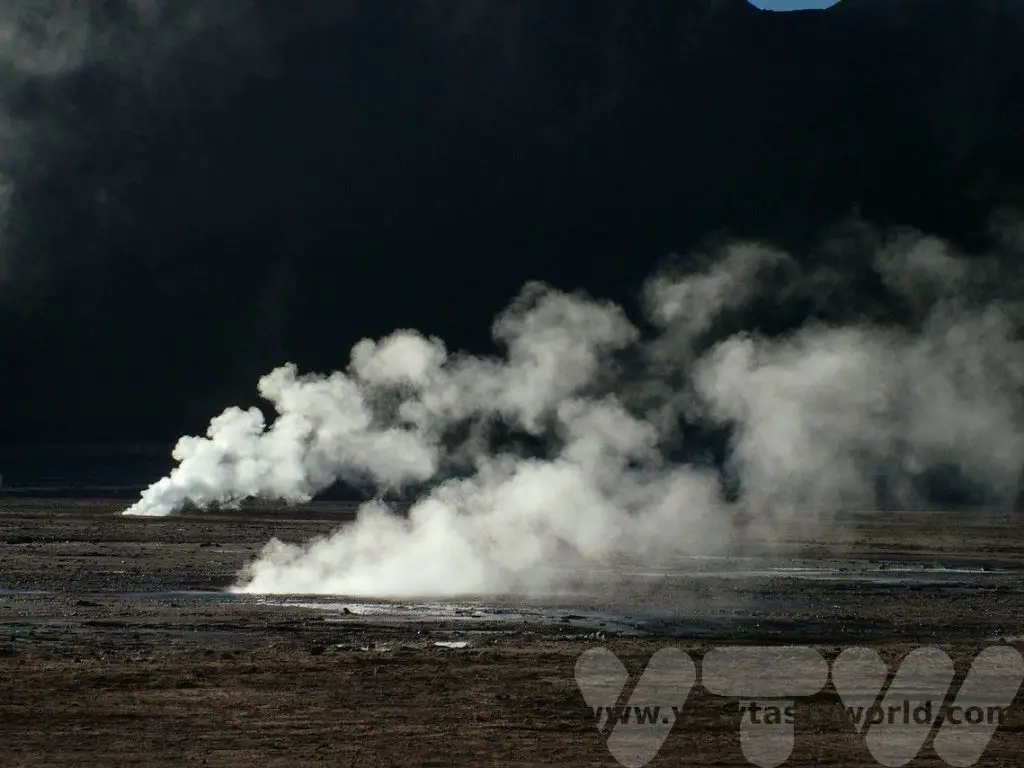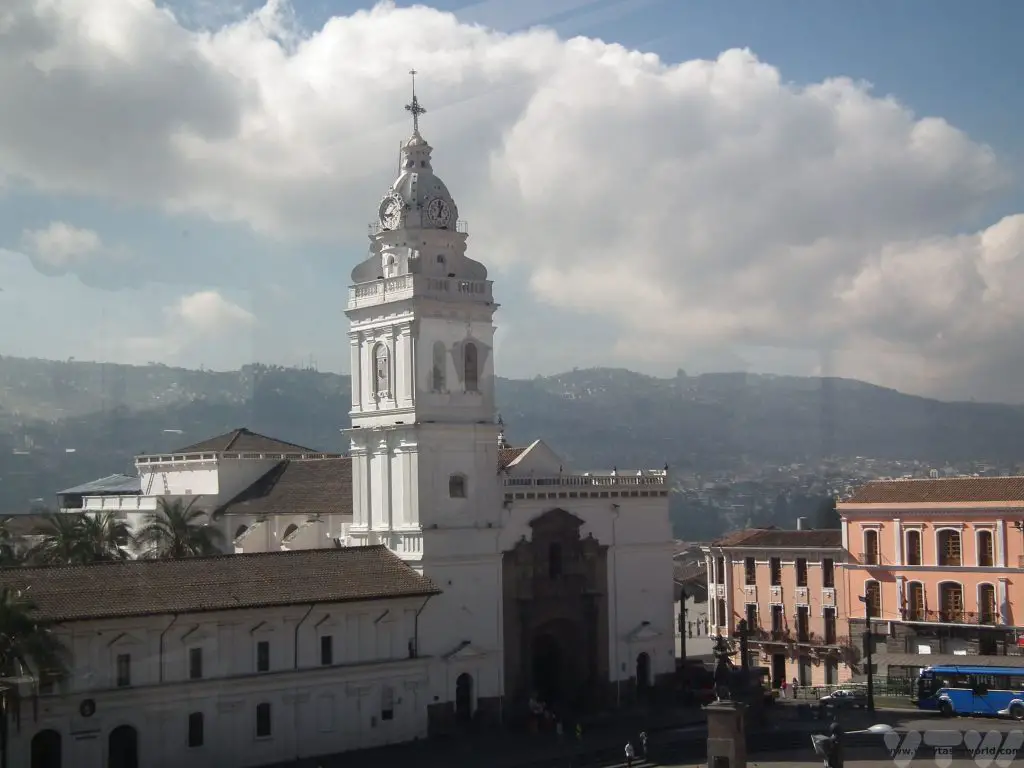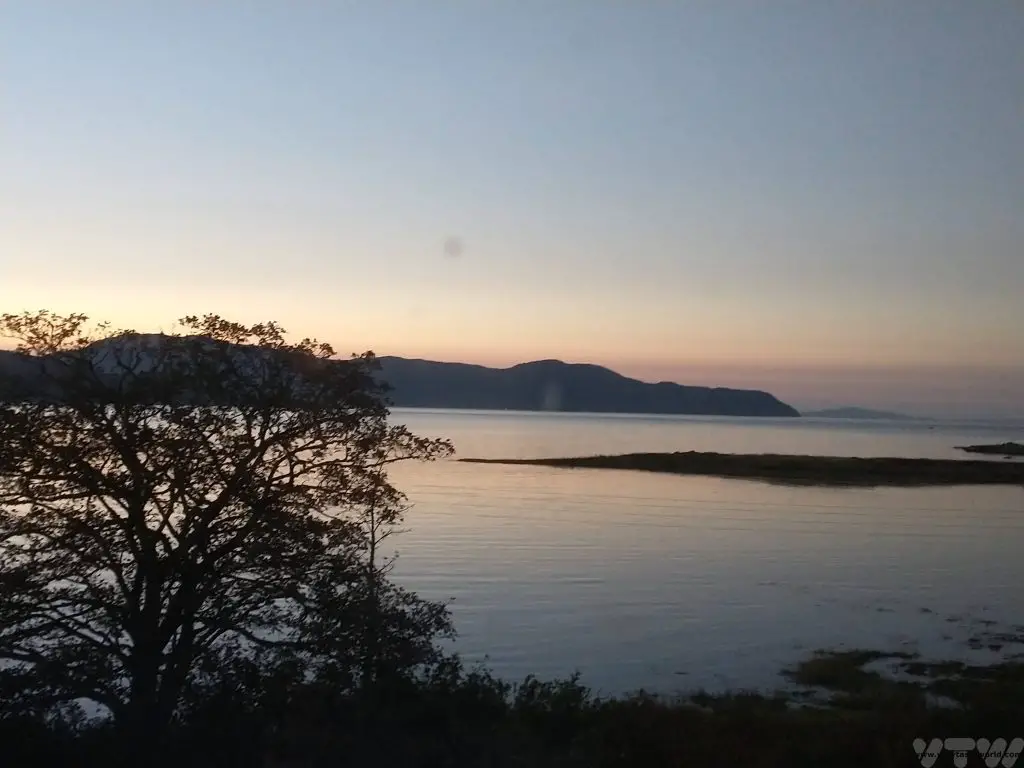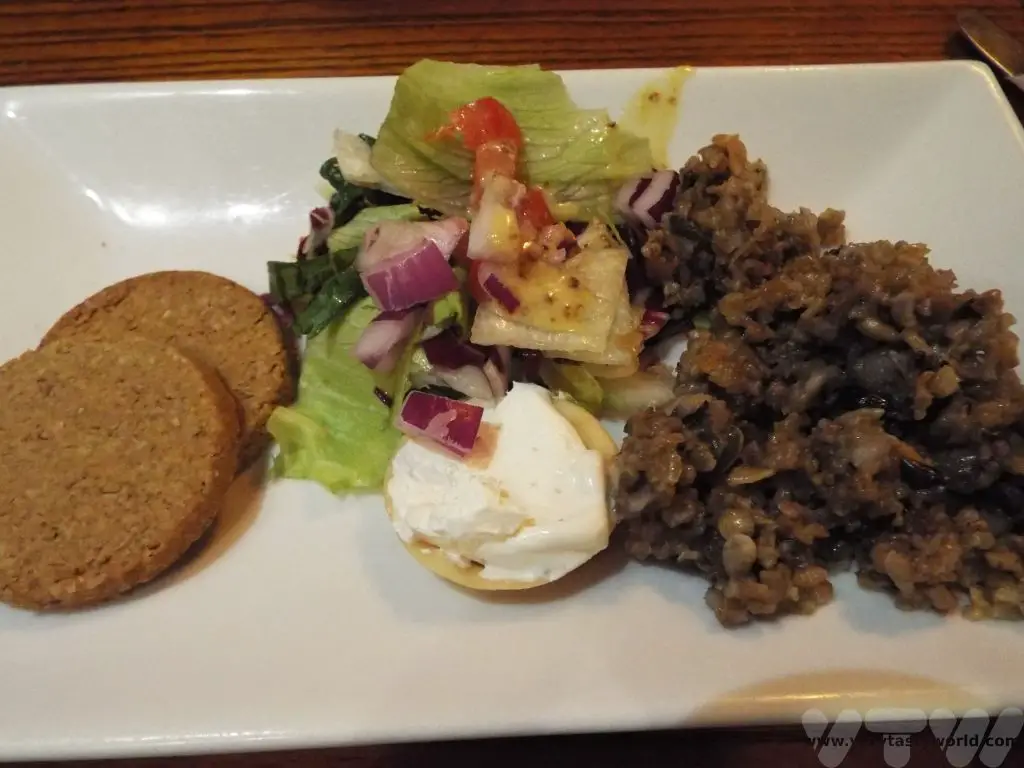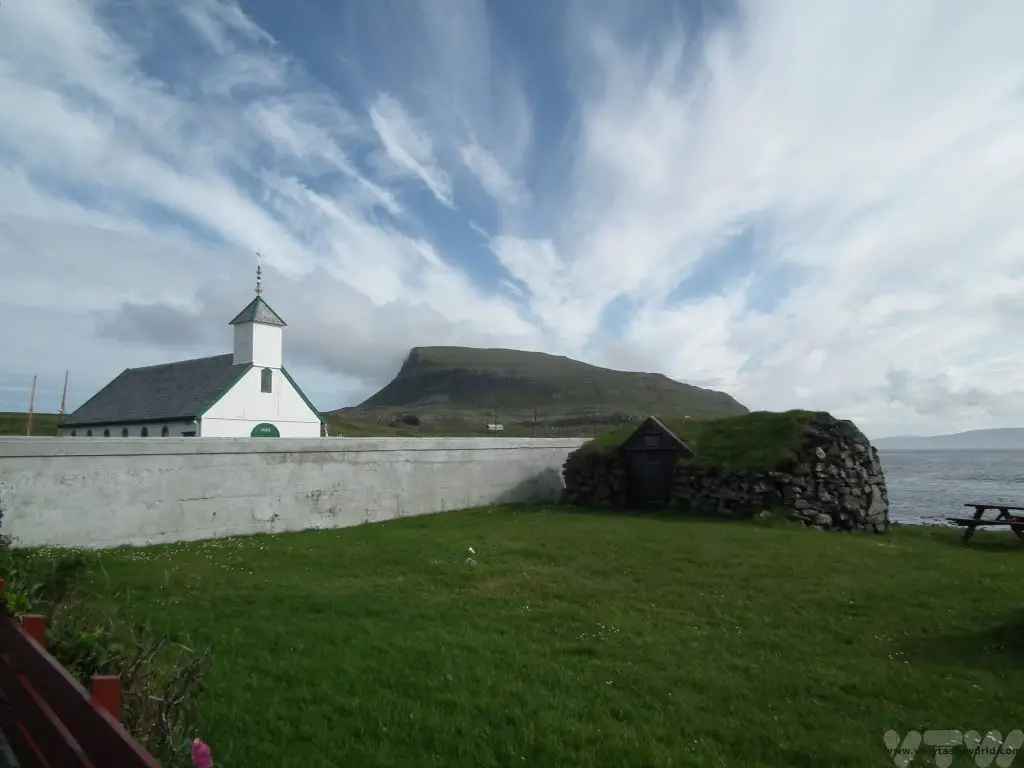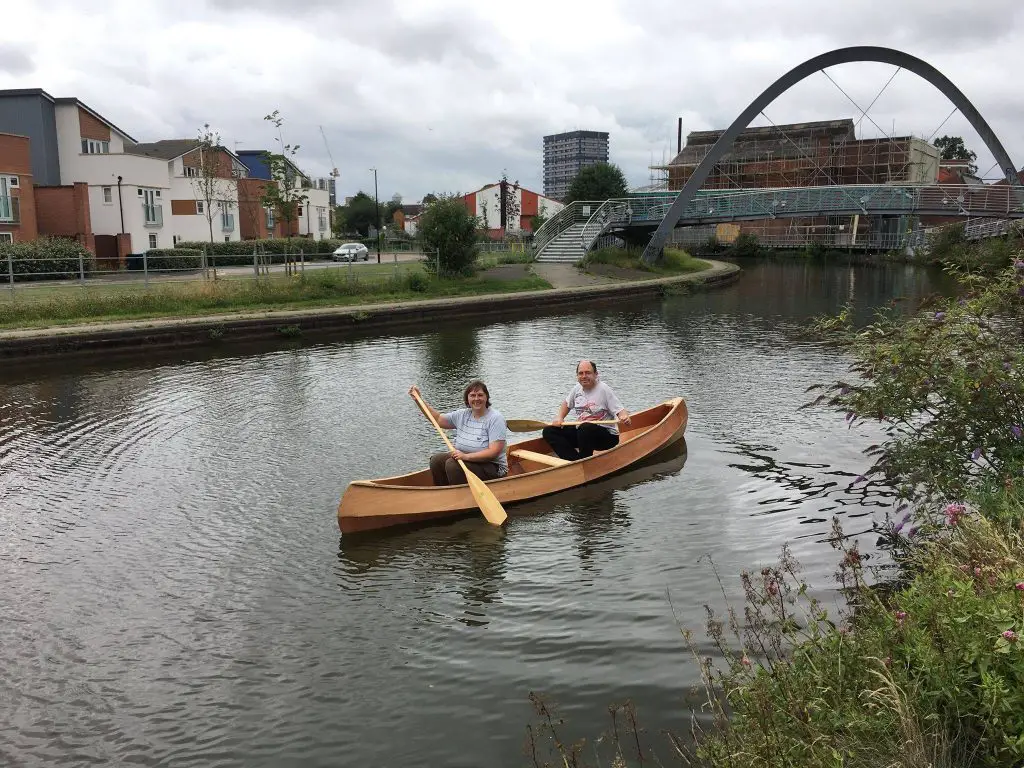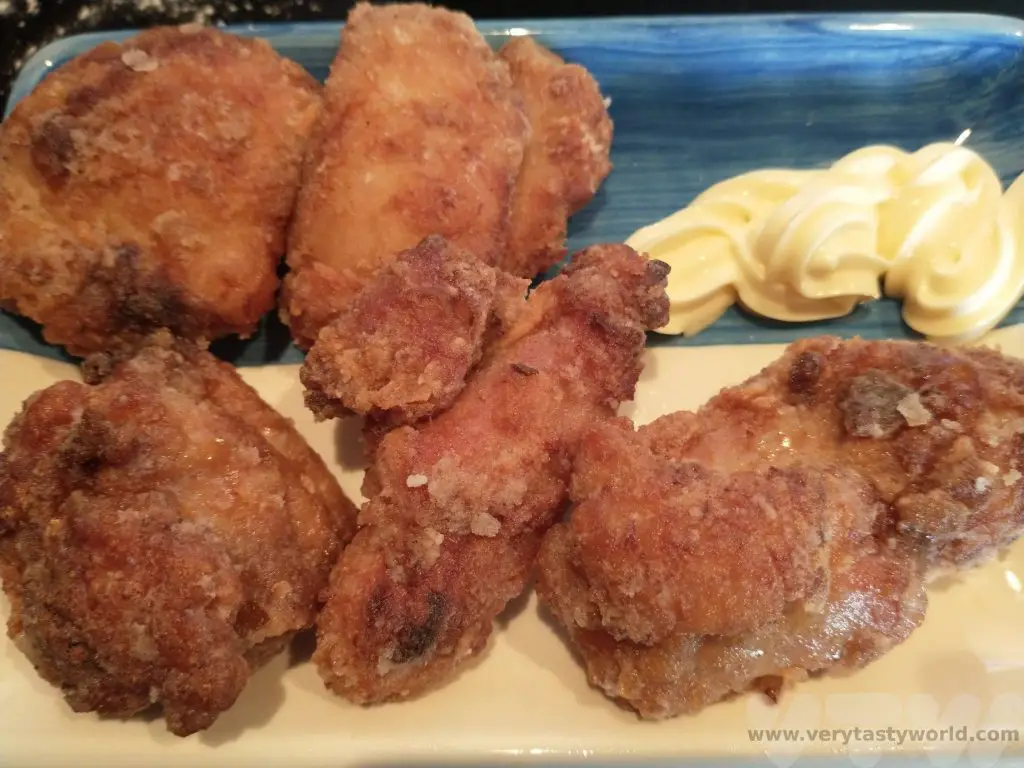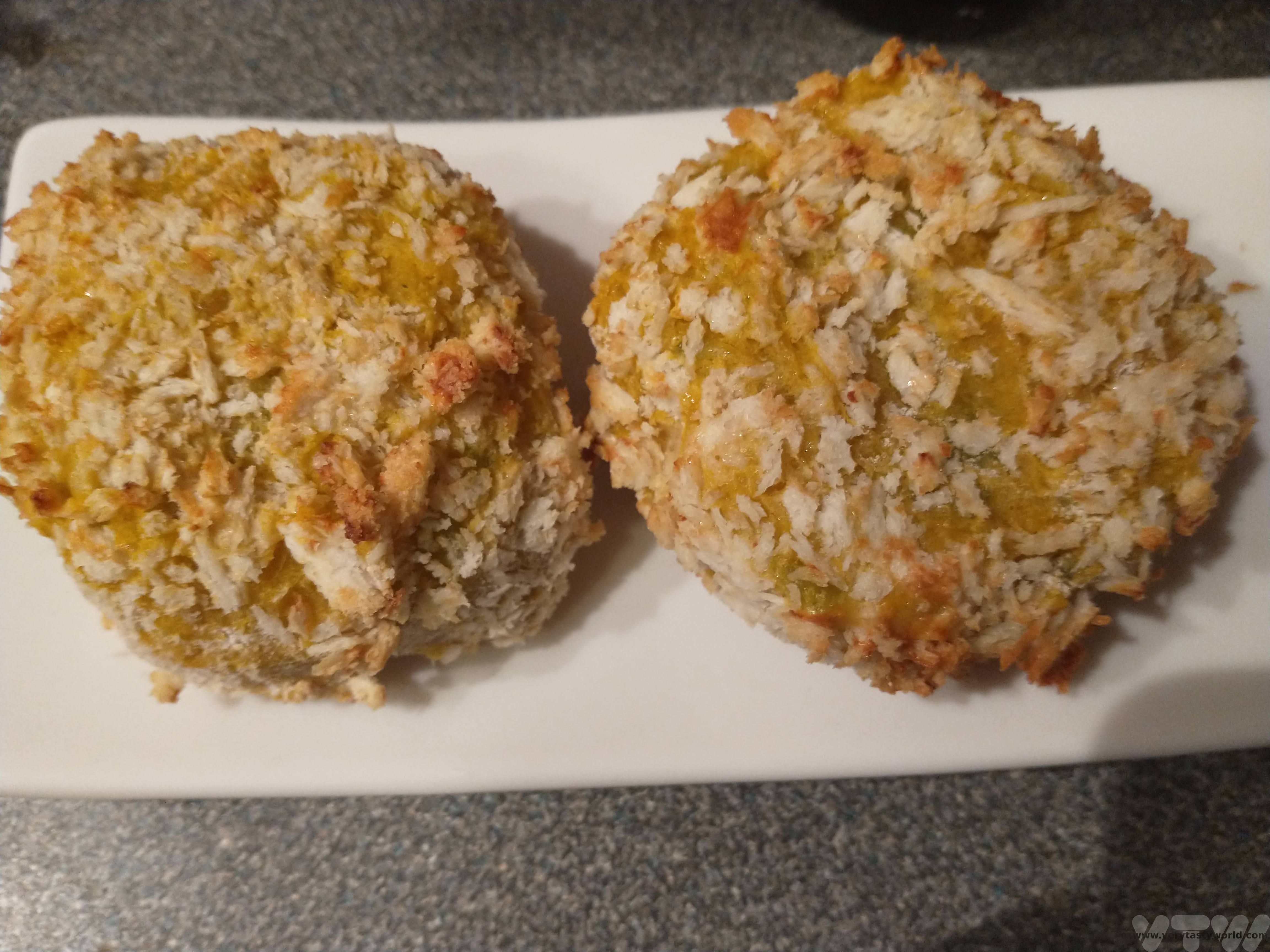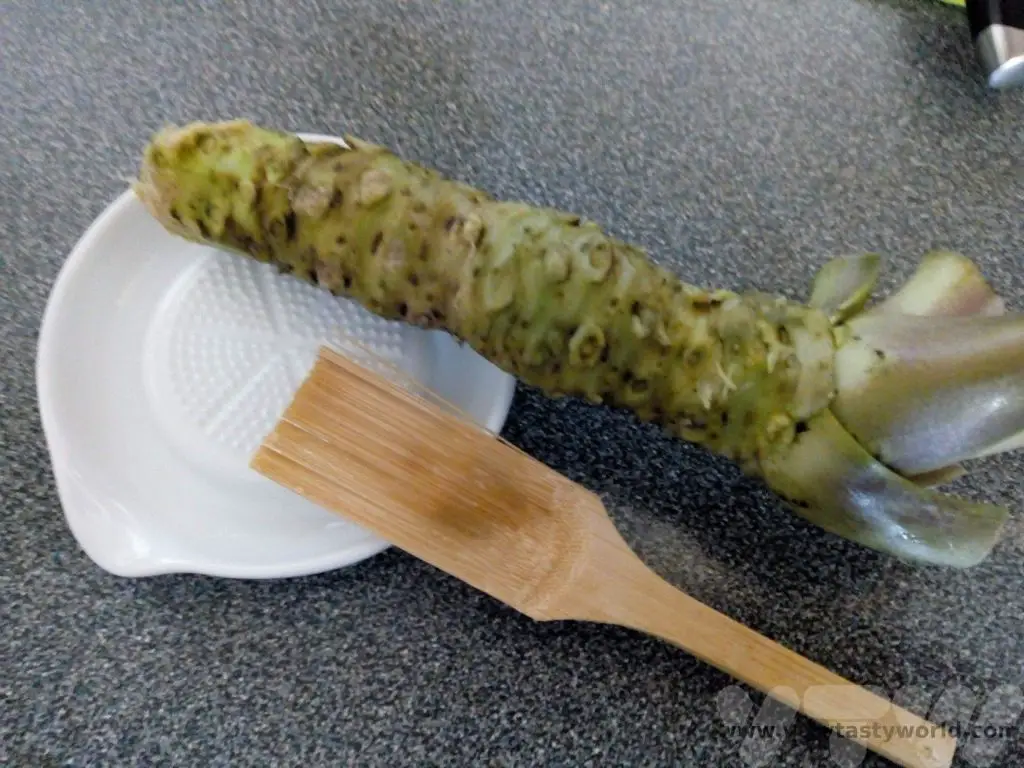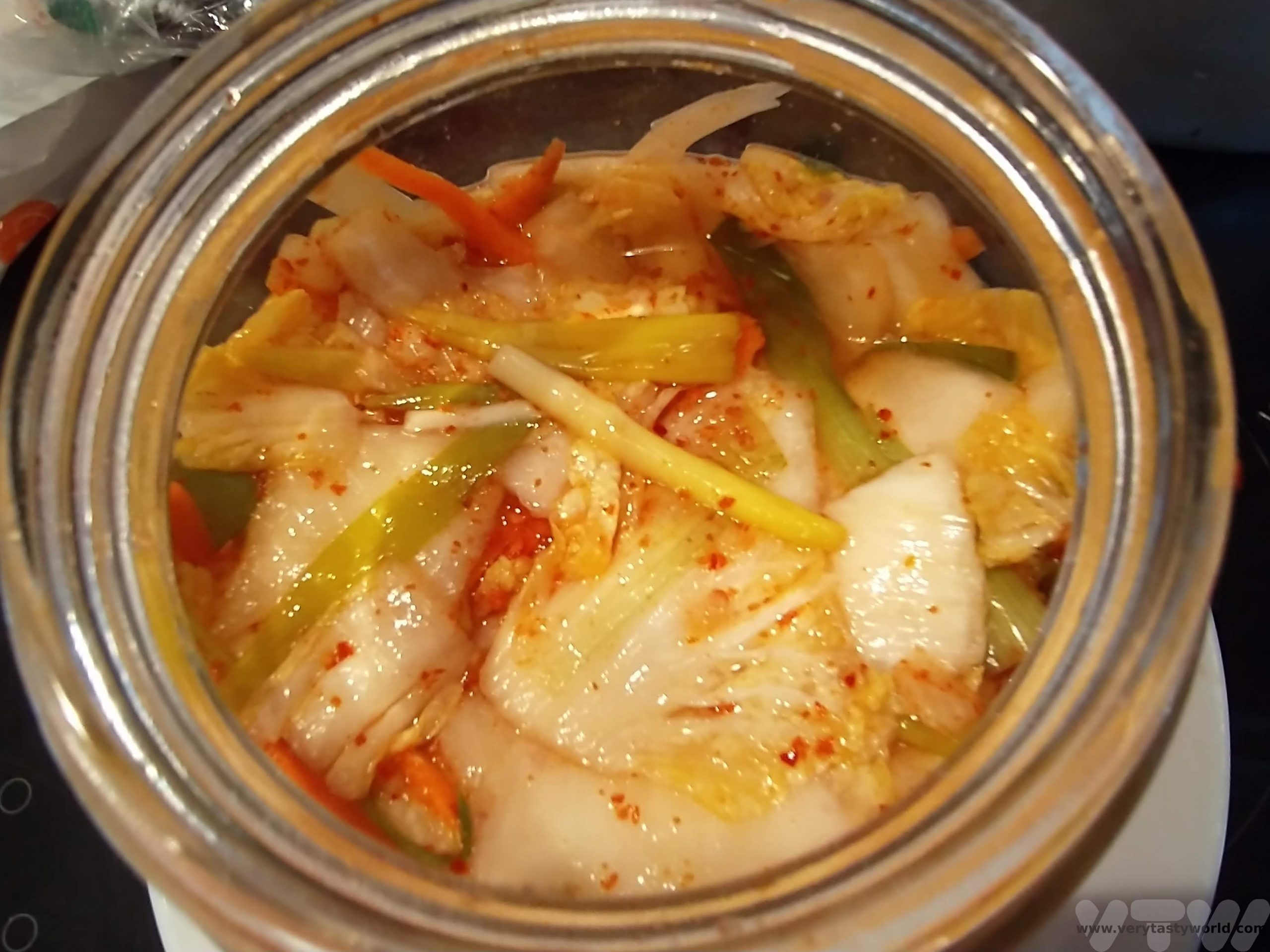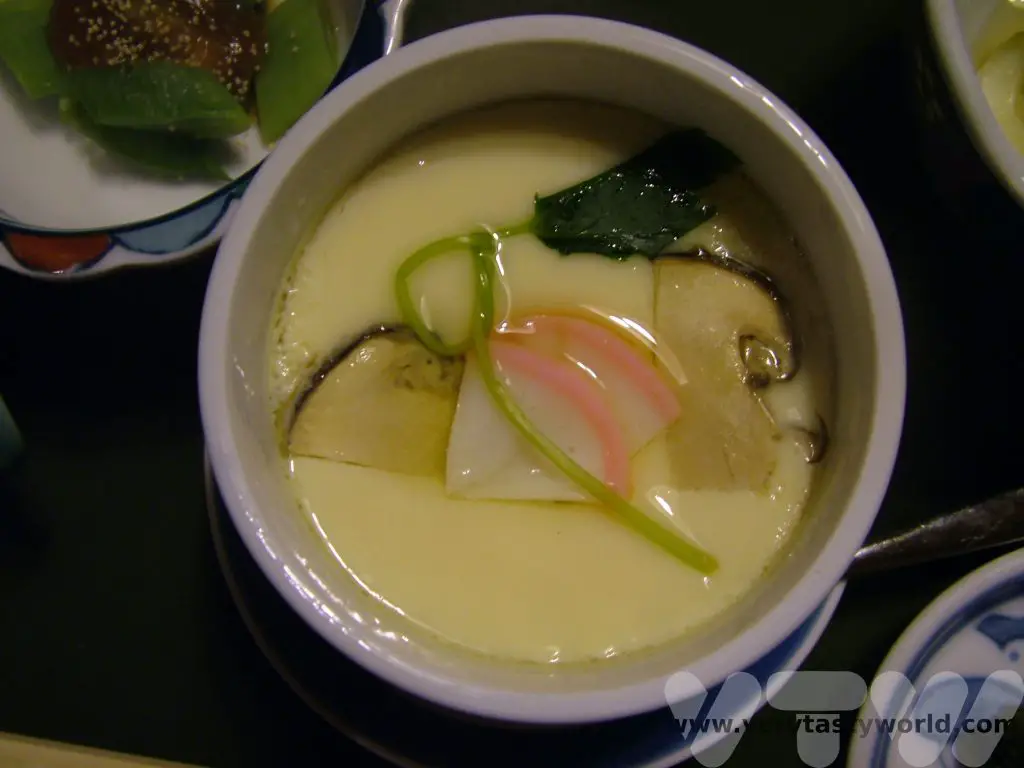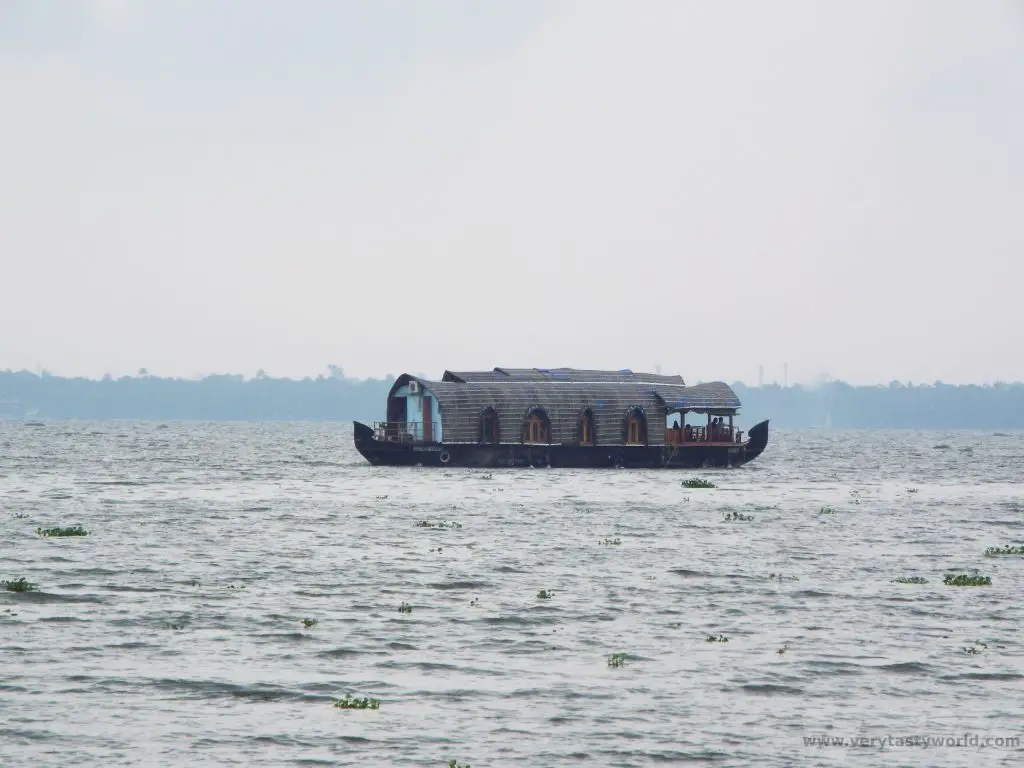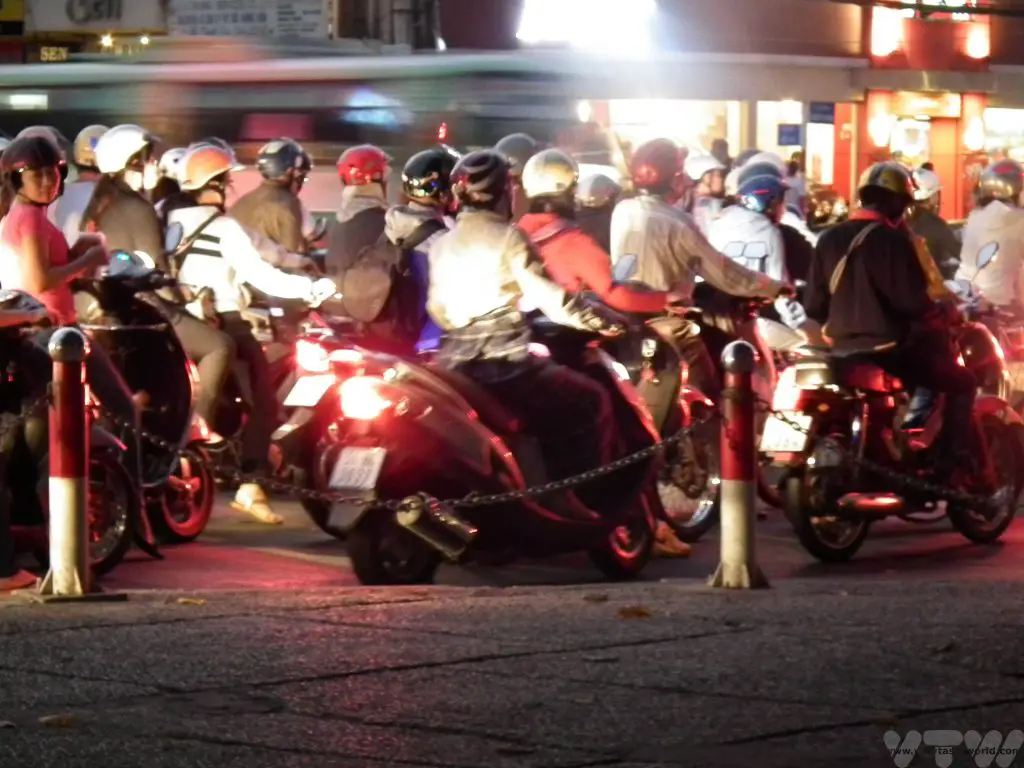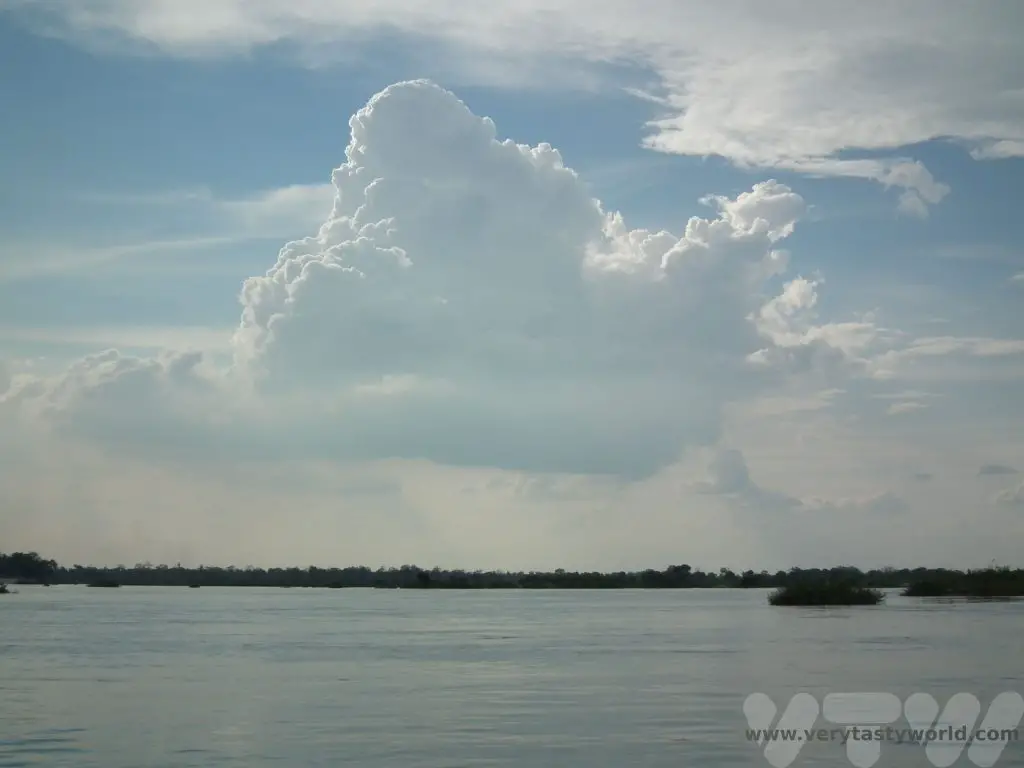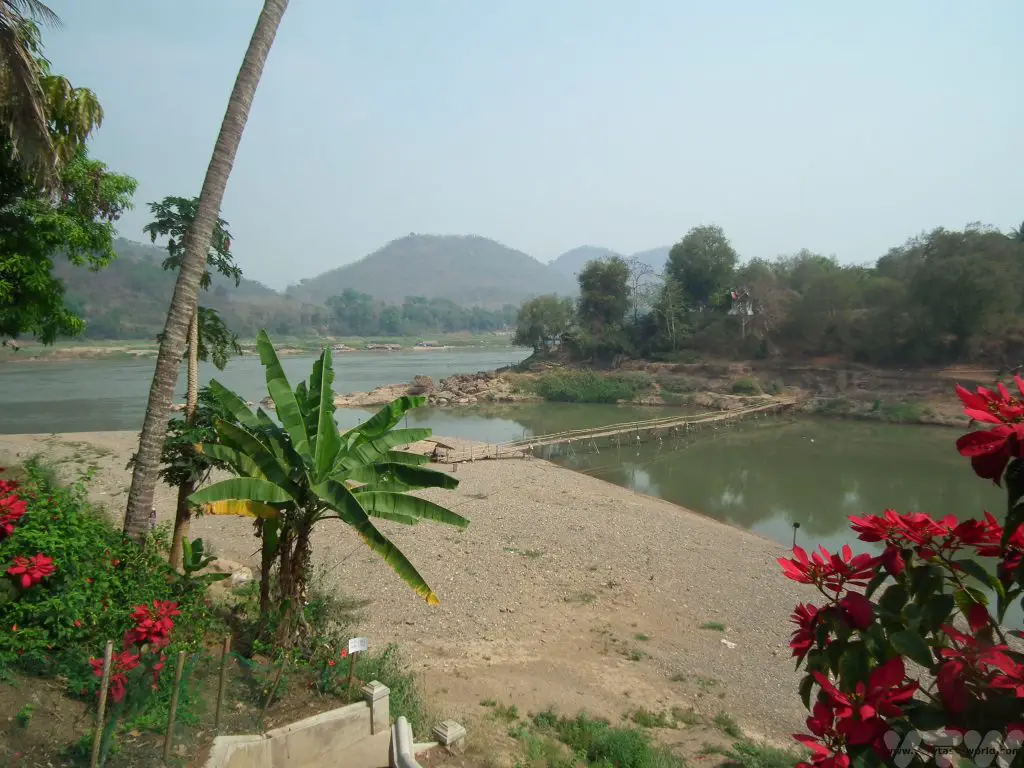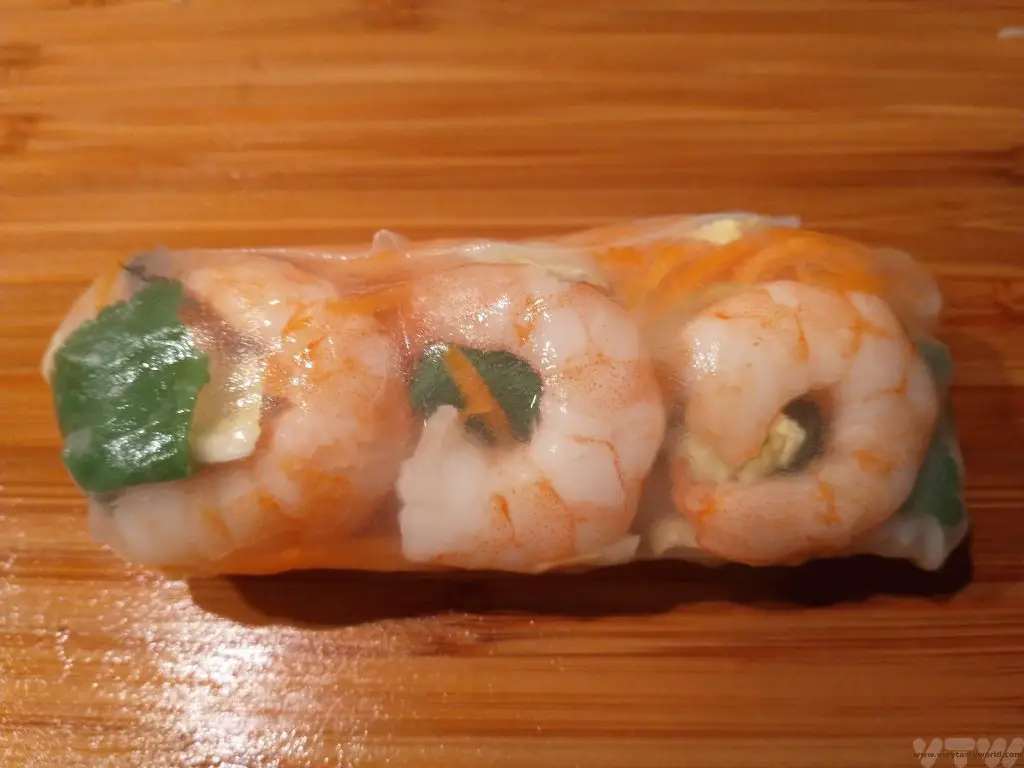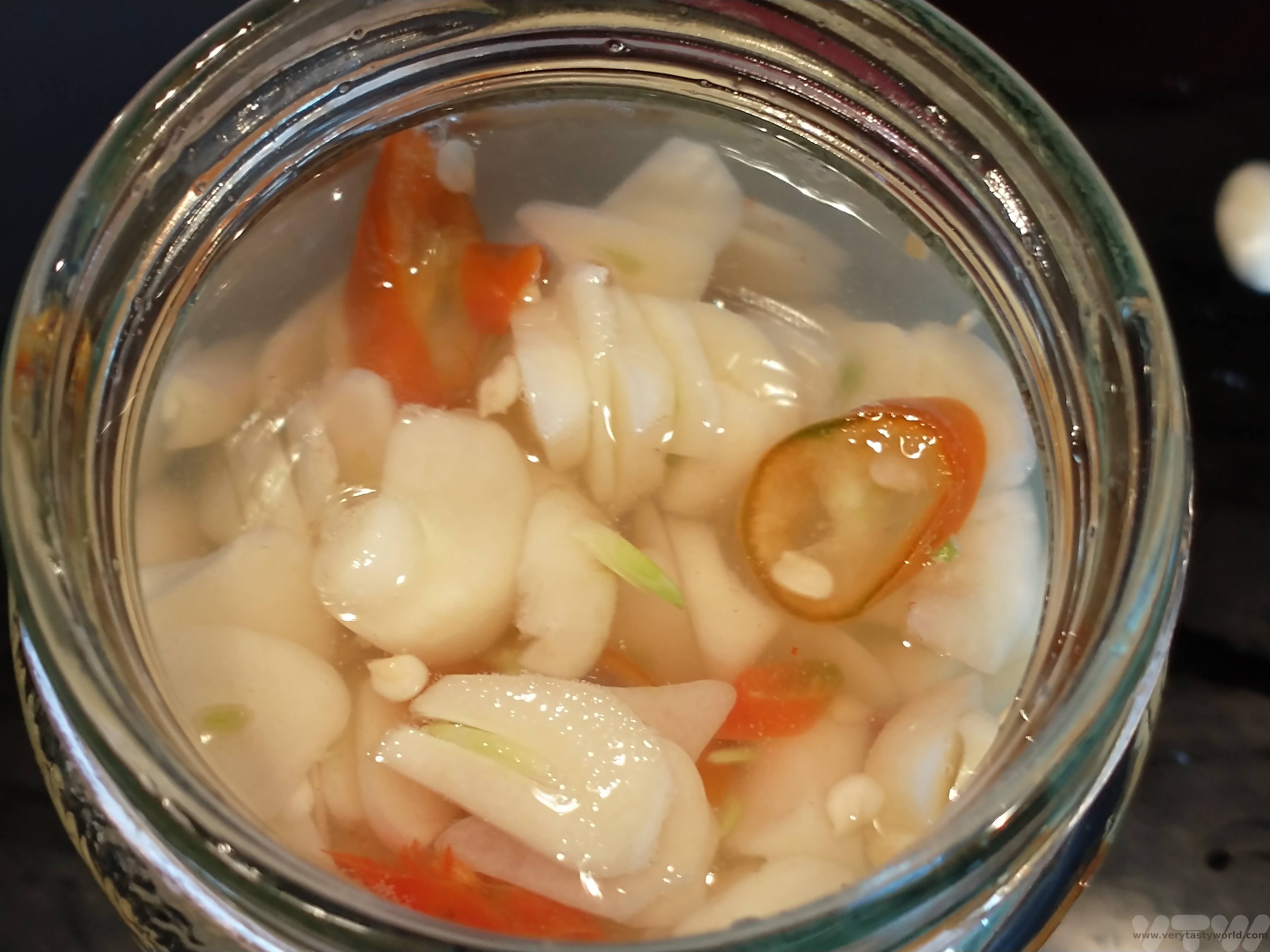Home » Food (Page 3)
Category Archives: Food
The Food of The Azores
The Azores are a tiny archipelago in the middle of the Atlantic Ocean and an autonomous region of Portugal. Their location means that they are an absolute magnet for marine life viewing because they have resident whales and dolphins, as well as many migratory species, such as the blue whale, which pass close by to the islands each year. We spent a week on Sao Miguel, the largest island, enjoying whale/dolphin watching excursions as well as some activities on the island, such as mountain biking and kayaking. But we didn’t realise what a great foodie destination the islands are. In between the activities we enjoyed some fantastic food of the Azores.
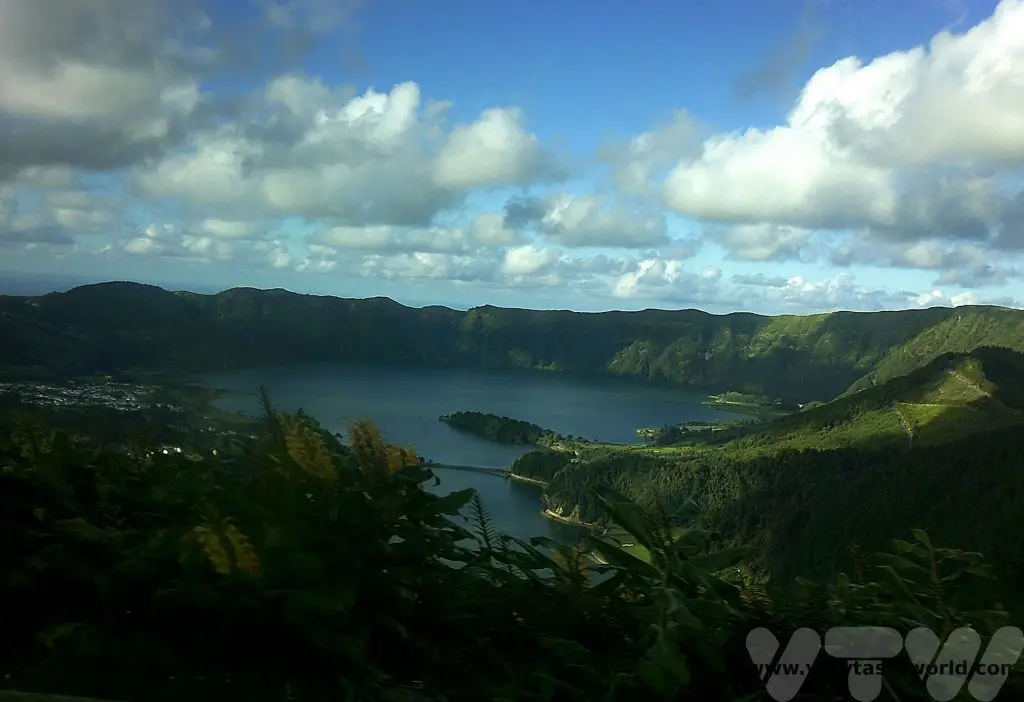
We stayed in the main town of Ponta Delgada. It’s a pretty place and has all amenities within walking distance.
Cheese – Food of the Gods!
One of the things we noticed when travelling through the beautiful green countryside was the number of cows and also fields of ripening corn. The corn is actually more likely to be grown to feed cows than people.
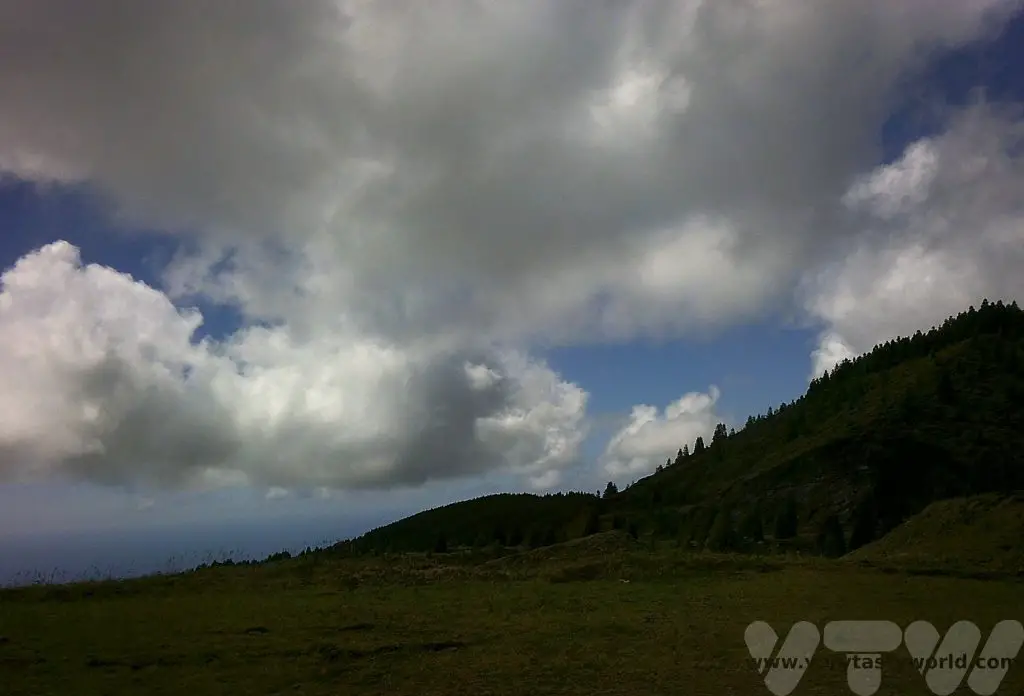
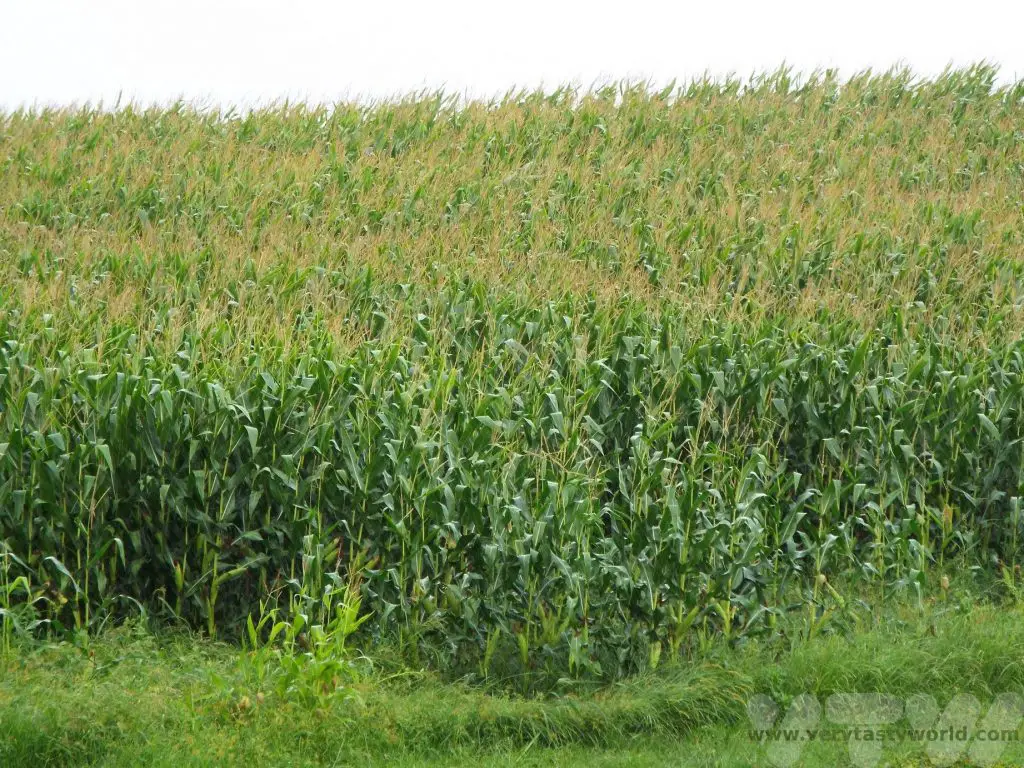
With mild winters and lots of rain the vegetation is lush and that’s perfect for the cows who produce rich milk that is turned into cheese. We were surprised to learn that around 50% of Portugal’s cheese is produced in the Azores.
Another striking feature of the landscape is the plethora of hydrangeas that line the roads. The cows tend to ignore them so they become natural fences that look glorious in the height of summer. We visited just after they were at their best but they still looked very pretty.
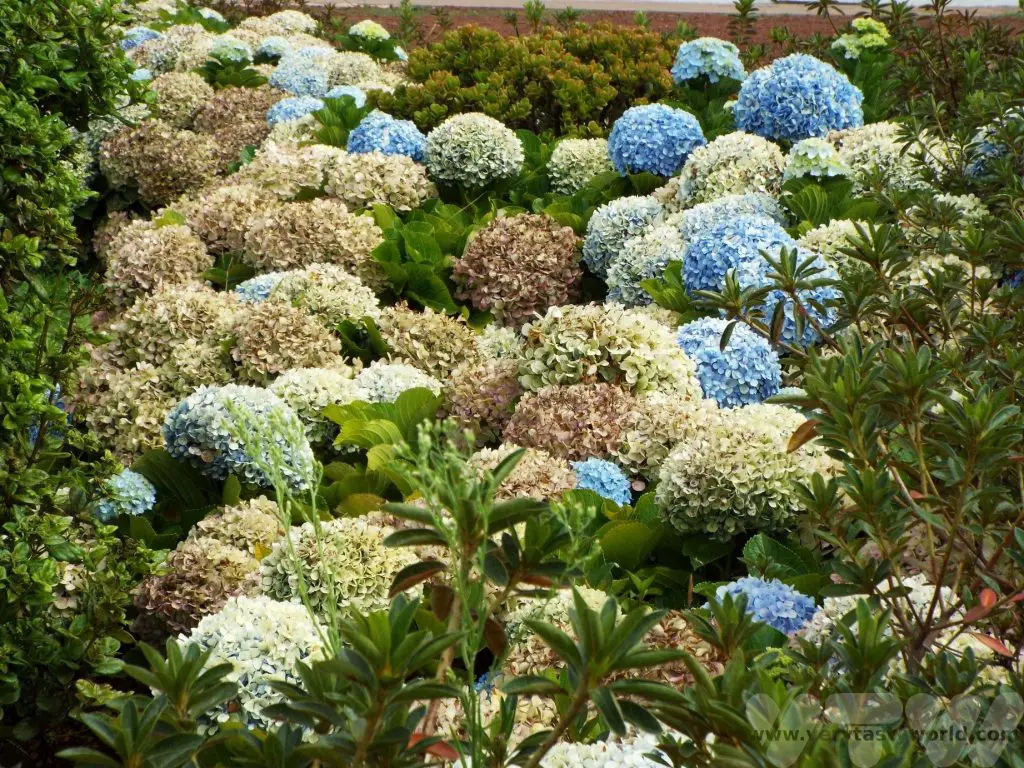
There are various cheese shops in Ponta Delgada – King of Cheese and Prince of Cheese – they aren’t modest about the quality of the product!
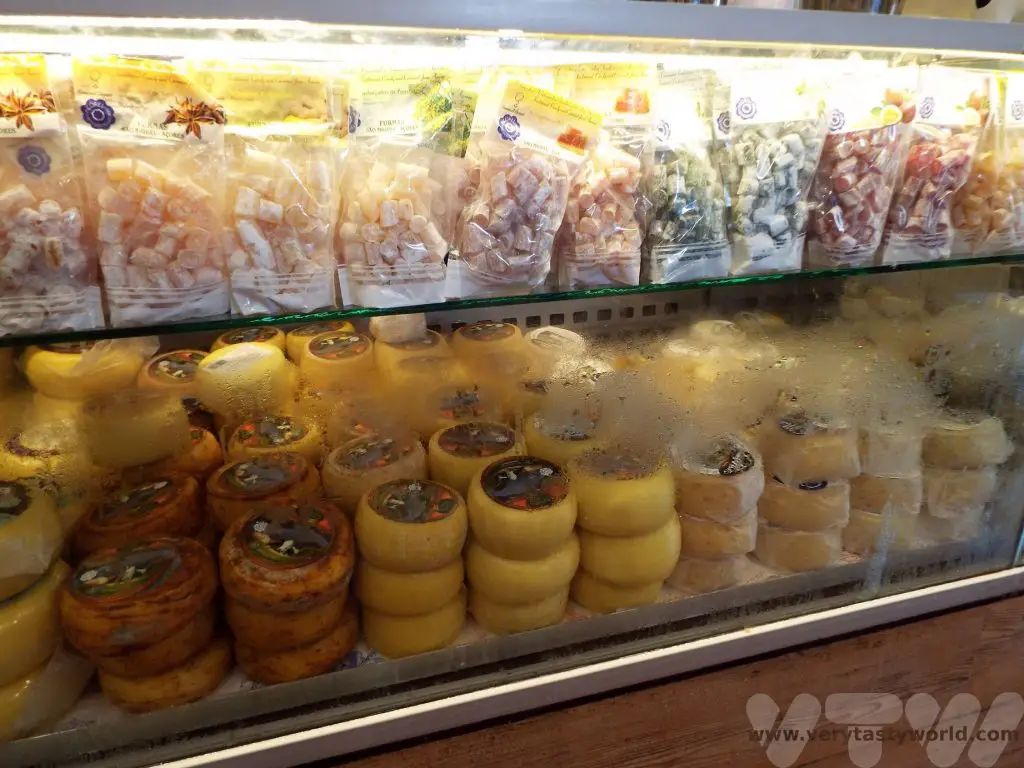
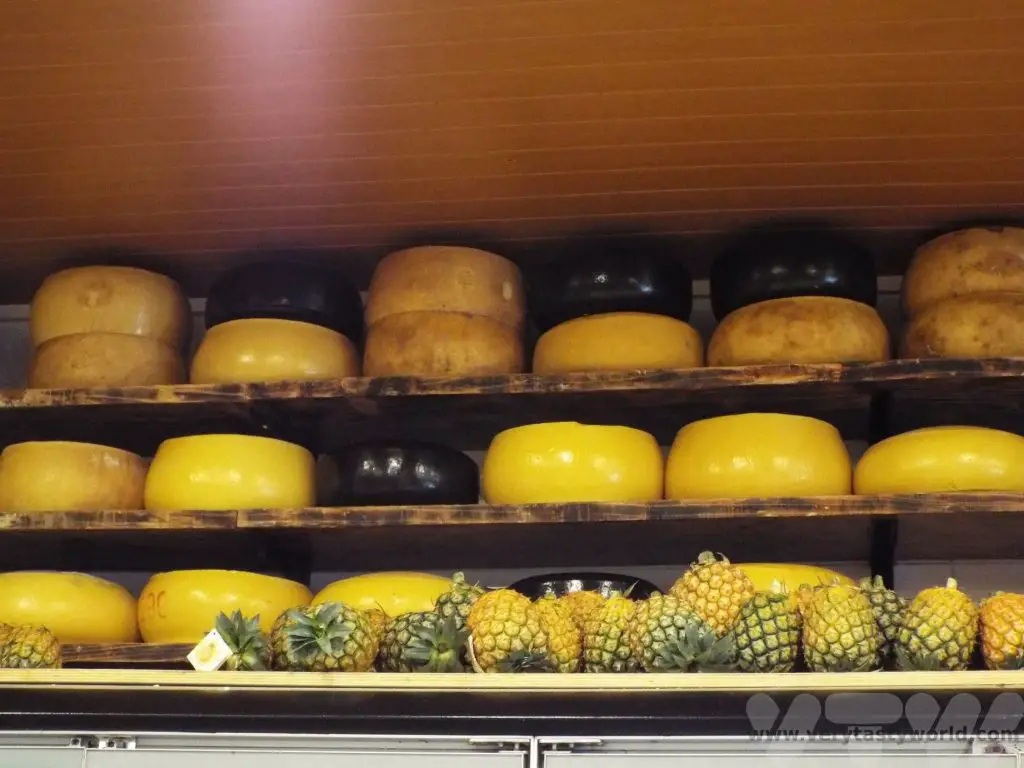
It’s fun visiting the shops – you can let them know about your cheesy preferences and they will recommend particular flavours and offer you a sample. We were keen to bring some cheese home and they were able to vacuum pack some very large slices for us so that we could store them in our hotel fridge and get them on the flight home. They survived very well and made sure that we weren’t going to run out of cheese for several weeks.
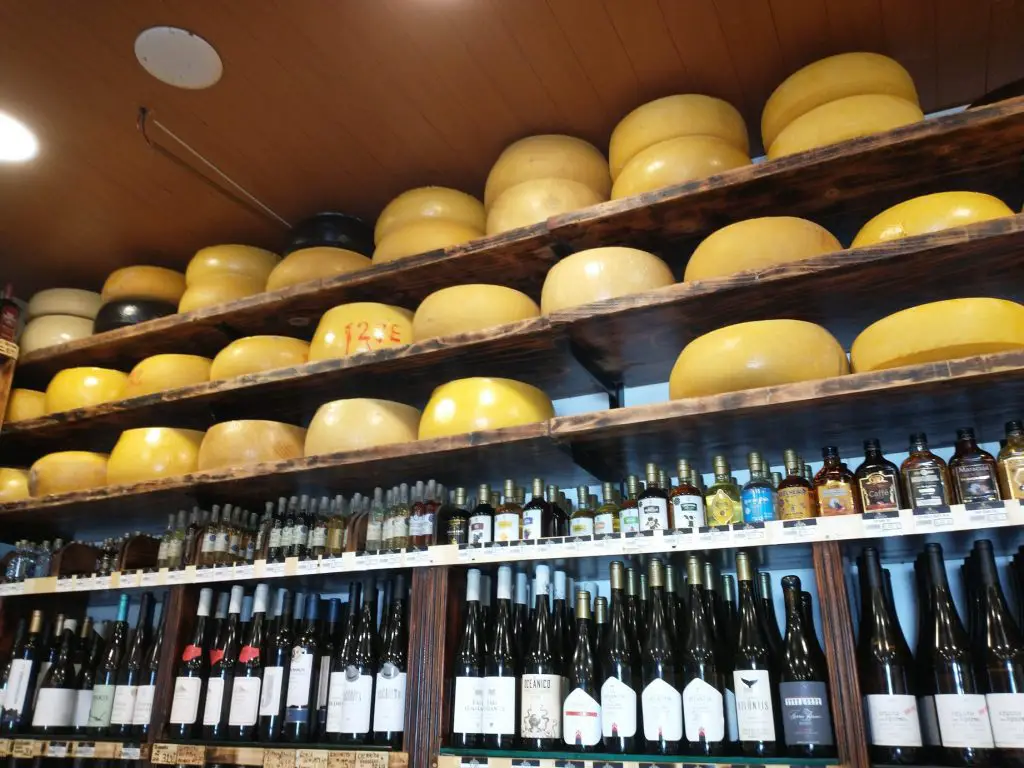
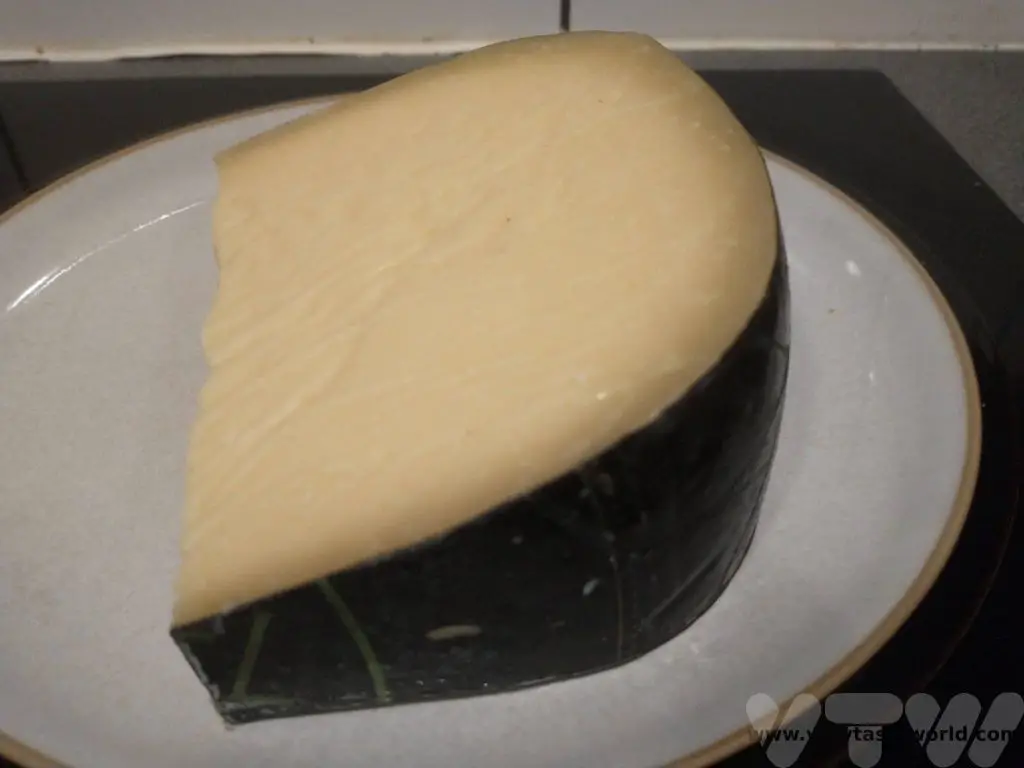
Sao Michel has a black rind and is the premier cheese of the island we were staying on. It’s a hard, very mature cheese with a lovely sharp flavour.
Sao Jorge cheese is produced on the Azorean island of the same name. It is a semi-hard cheese made from unpasteurised milk. It is milder than the other cheeses, with a nutty flavour
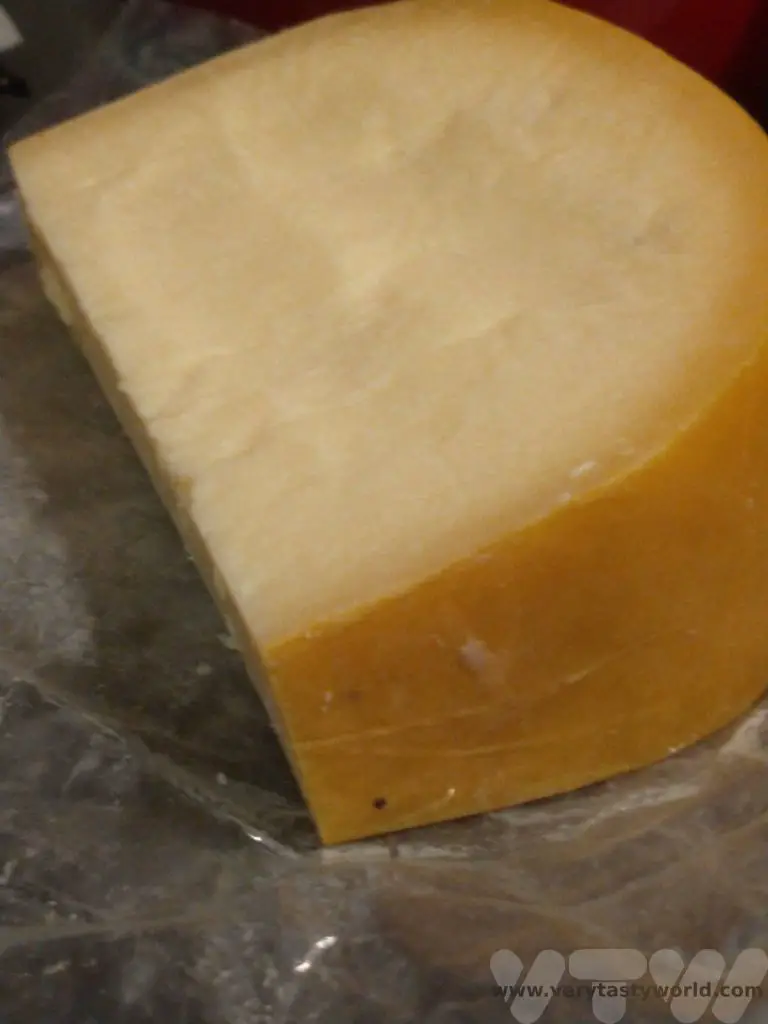
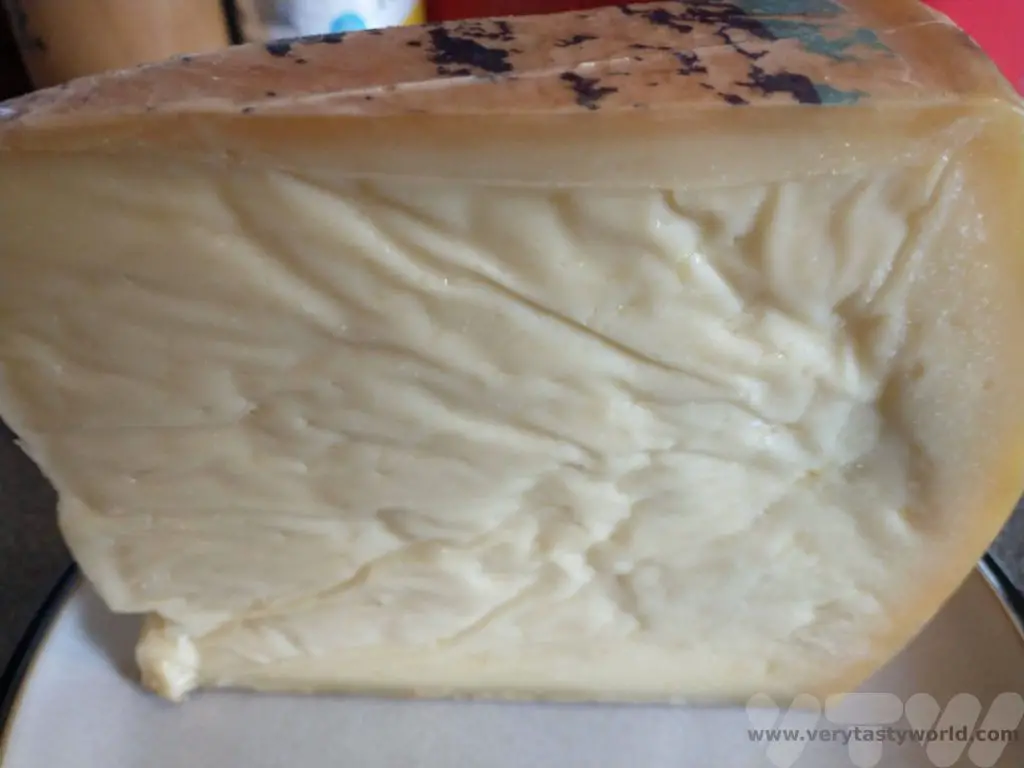
Vaquinha is from the island of Terceira. This one has a surprising initial creaminess for a hard cheese but this eventually flakes slightly. It is very mature, is almost spicy and has a real kick to the flavour!
Cheese is often provided as an appetiser at restaurants but this isn’t matured cheese, it is queijo fresco. It doesn’t have the fullest of flavour, in fact it’s pretty bland, so it is served with pimenta da terra (red pepper paste) which gives it a real pzazz, and it’s eaten with fresh bread. We were able to bring back a bottle of pimento de terra home with us.
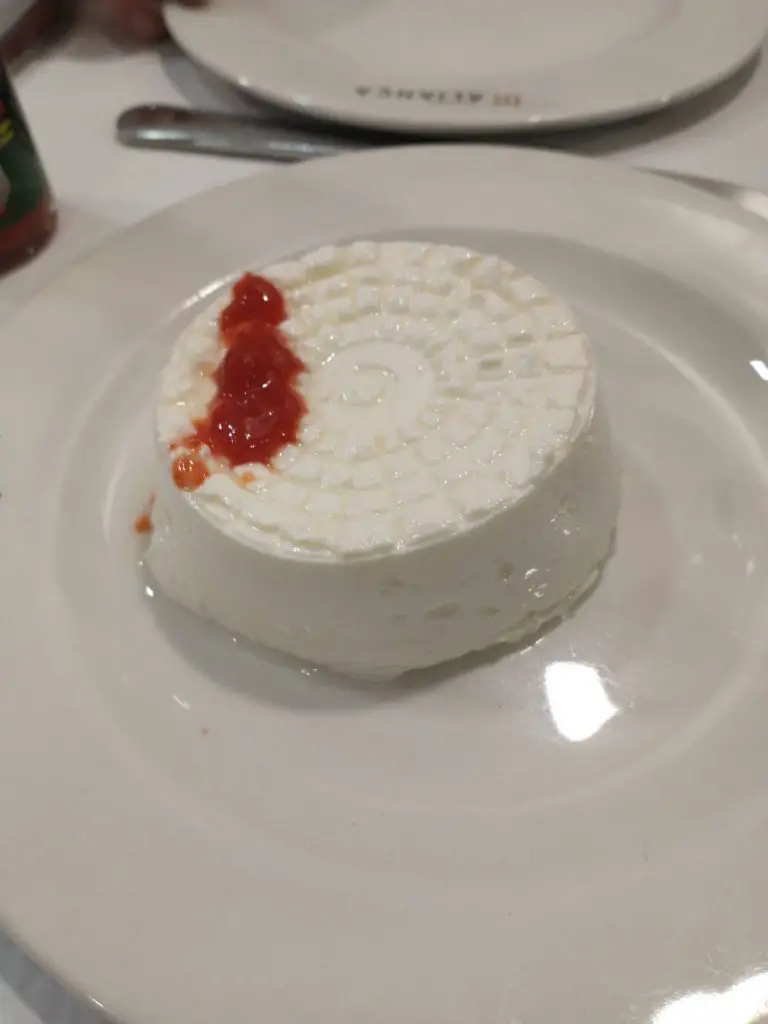
What Goes Well with Cheese? Pineapple of Course!
There is a pineapple plantation, located just outside Ponta Delgada, easily within walking distance of the city centre. You can visit the greenhouses and see the pineapples growing.
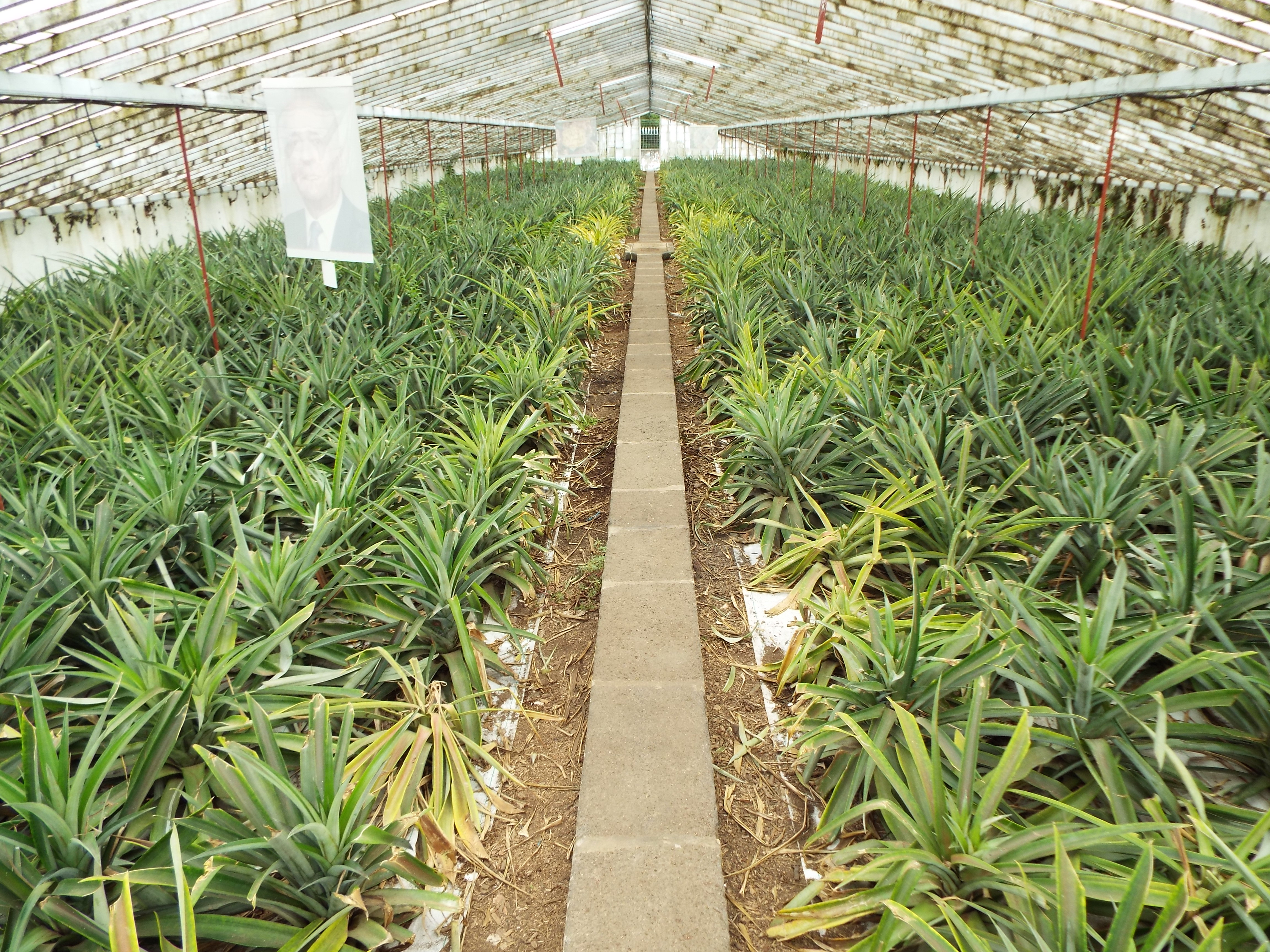
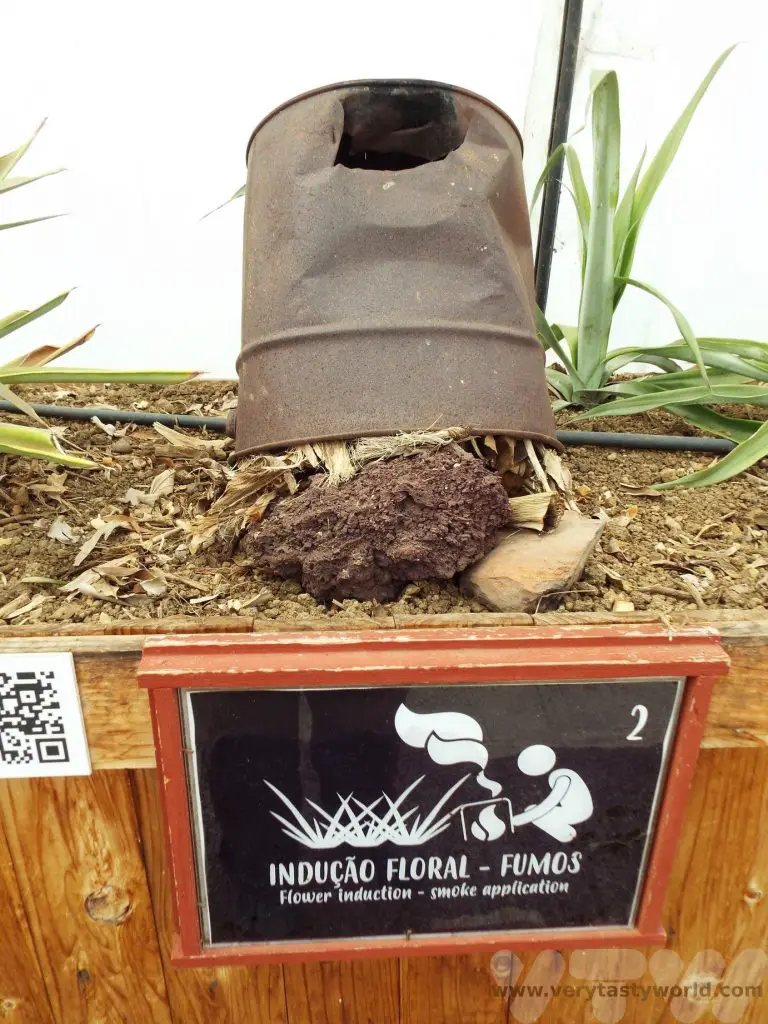
There are also some displays and videos which show the process for growing these fruit. It’s interesting that they use a smoking process to trigger the flowering of the plant.
And there’s a café on site which offers a complimentary shot of pineapple liqueur and a teeny piece of toast with pineapple jam.
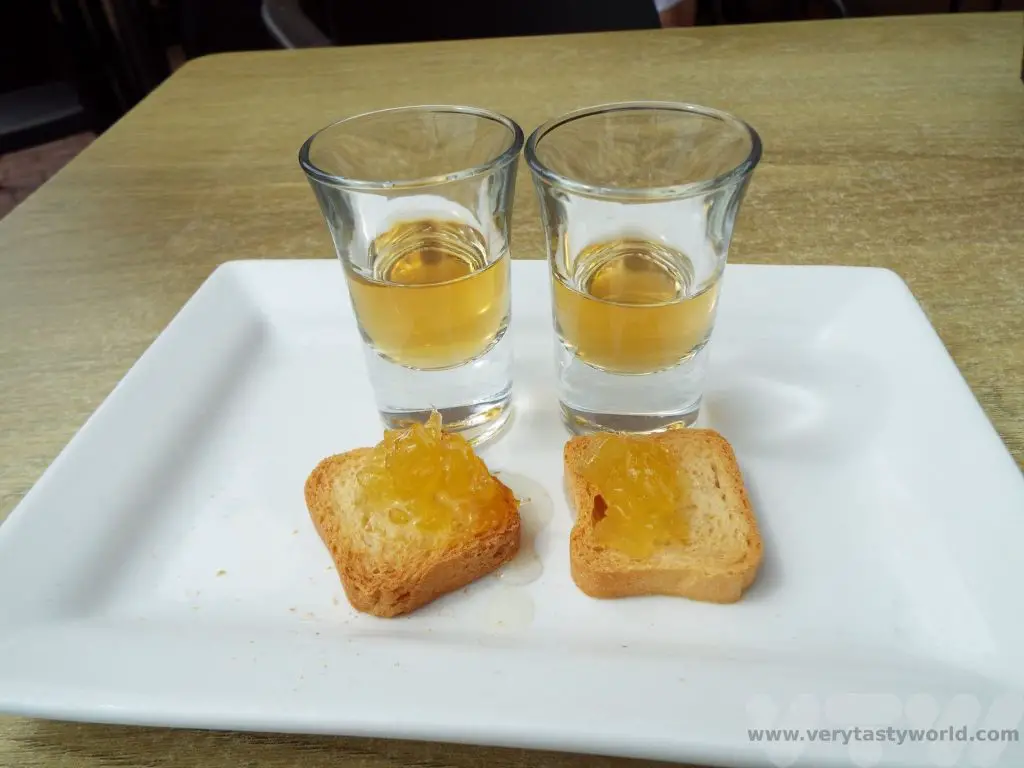
And, as we hadn’t had elevenses or lunch, we thought it would be rude not to enjoy a pineapple gelato, washed down with a caipirinha, a delicious cocktail made with crushed pineapple, lime and rum.
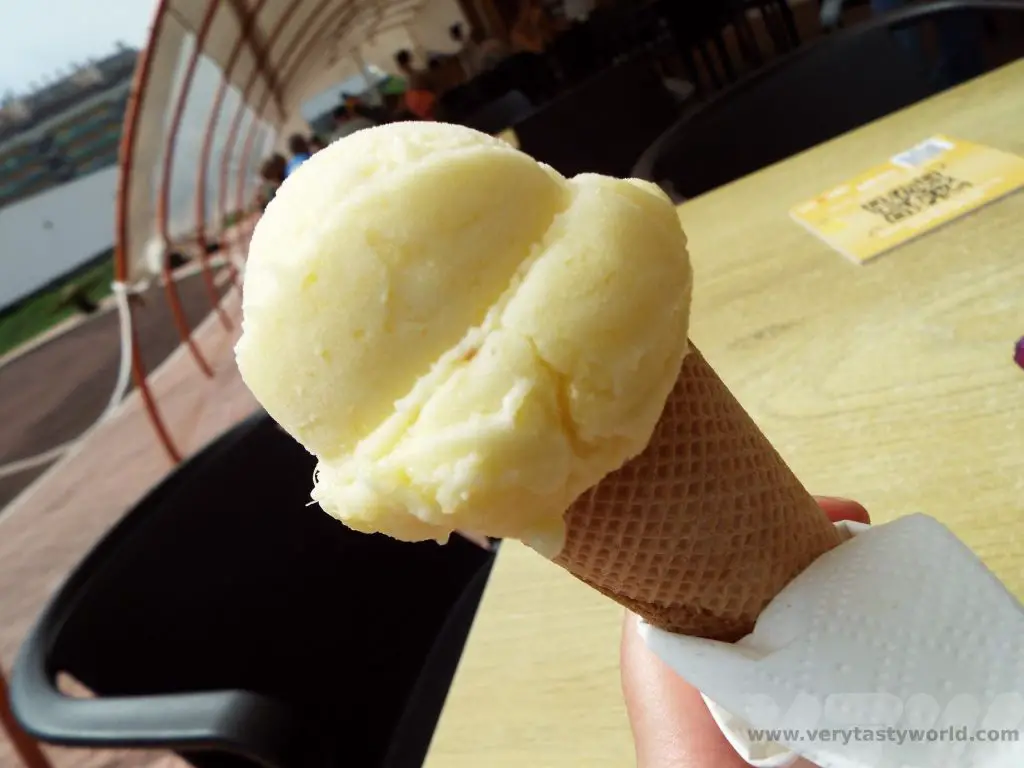
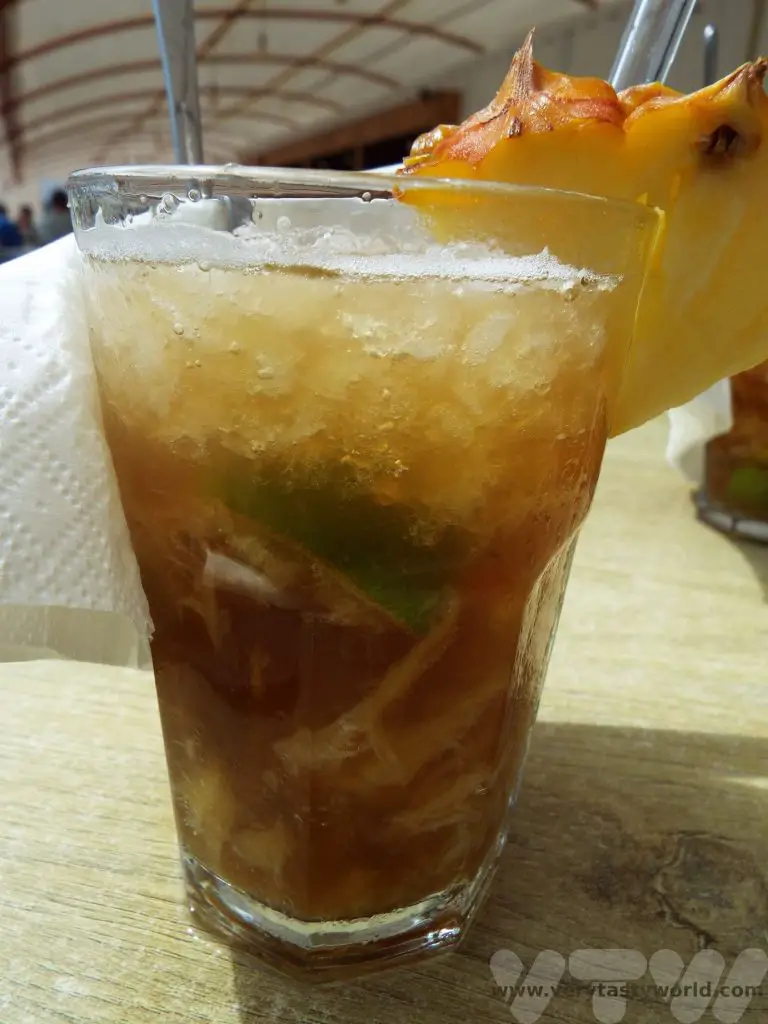
Everything Stops For Tea
The Azores also have a tea plantation, located on the north coast of Sao Miguel. The Gorreana Tea Factory was established in 1883 and is one of only two tea plantations in Europe. It’s possible to visit the factory and do a self guided tour.
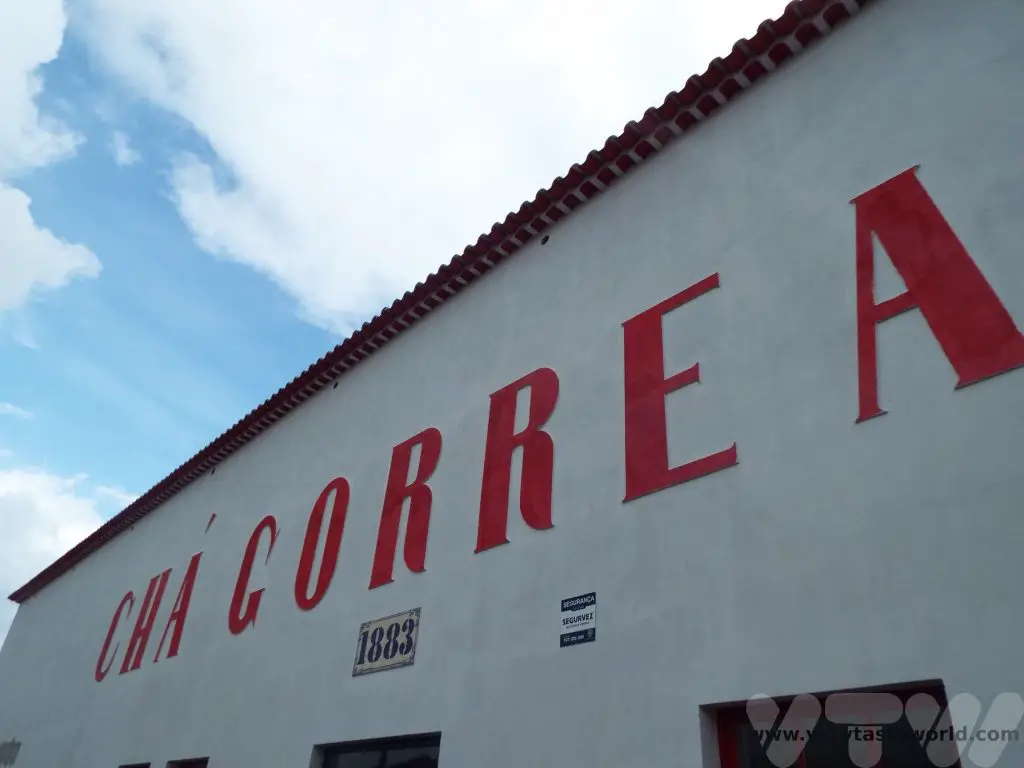
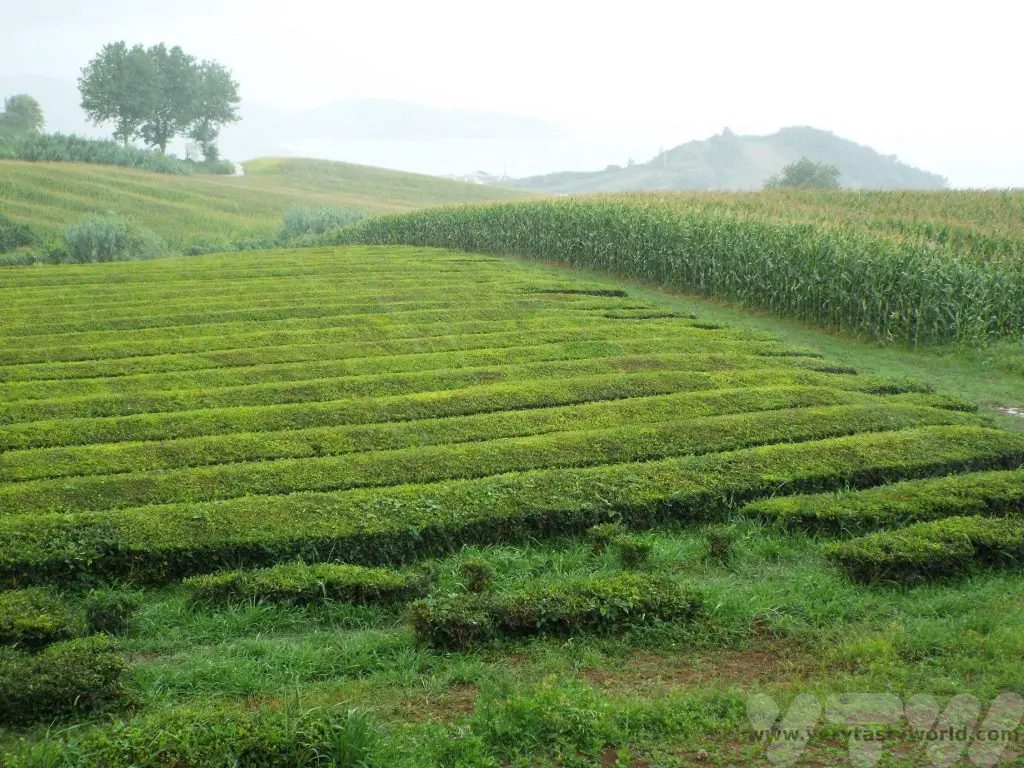
There are infographics showing how the tea is processed and you can enjoy a cup of their tea as well as visit the inevitable shop and café. They produce both green and black tea. Both taste good.
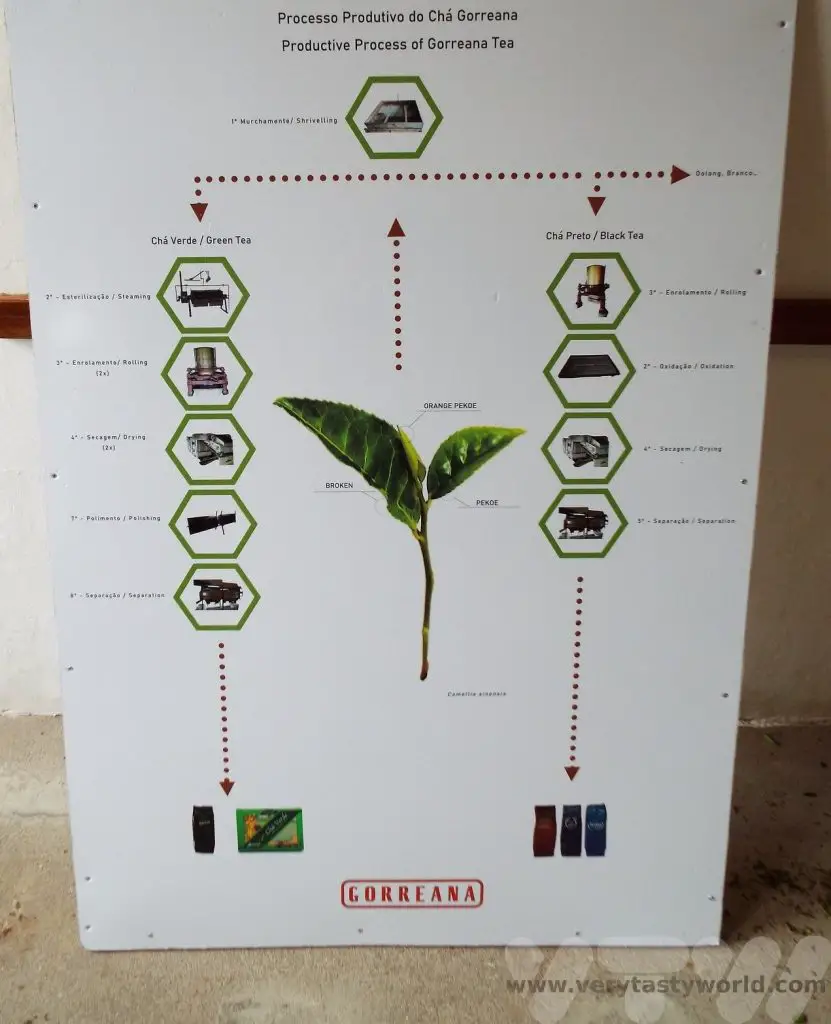
It’s lovely to be able to see the original machinery in action.
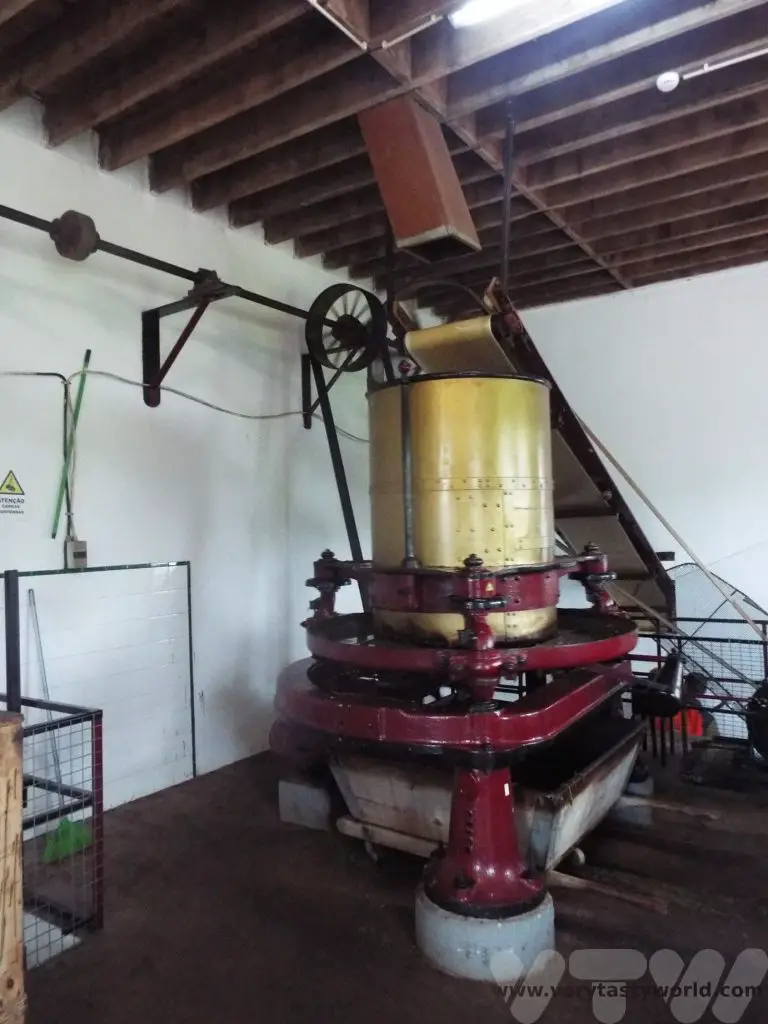
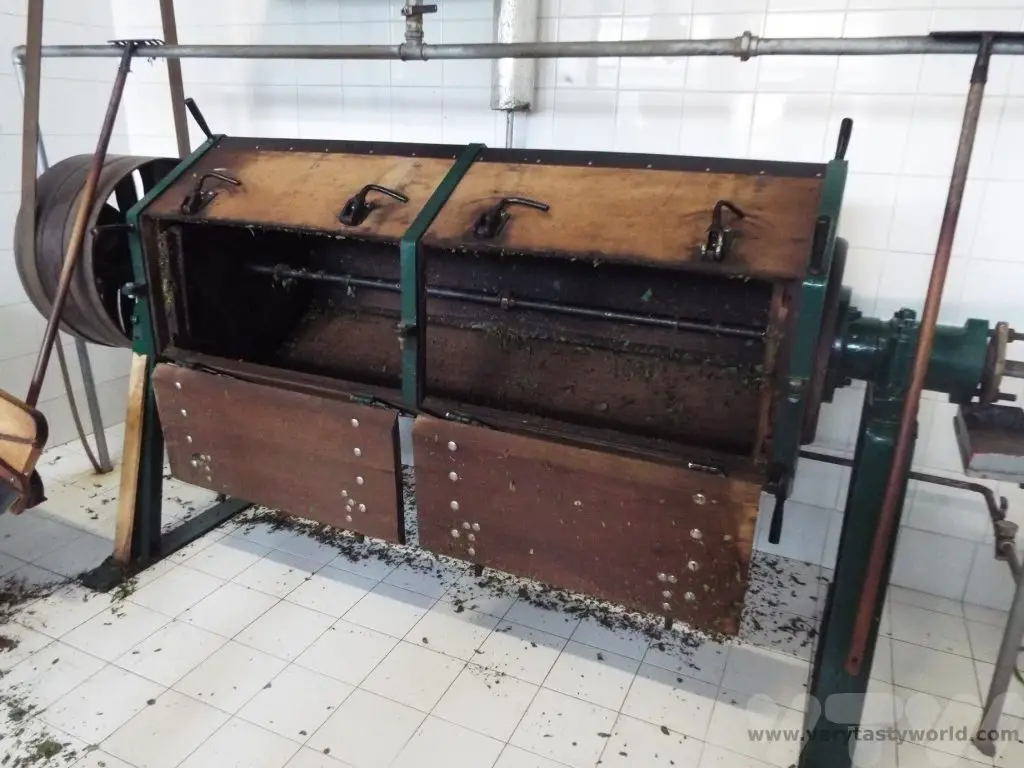
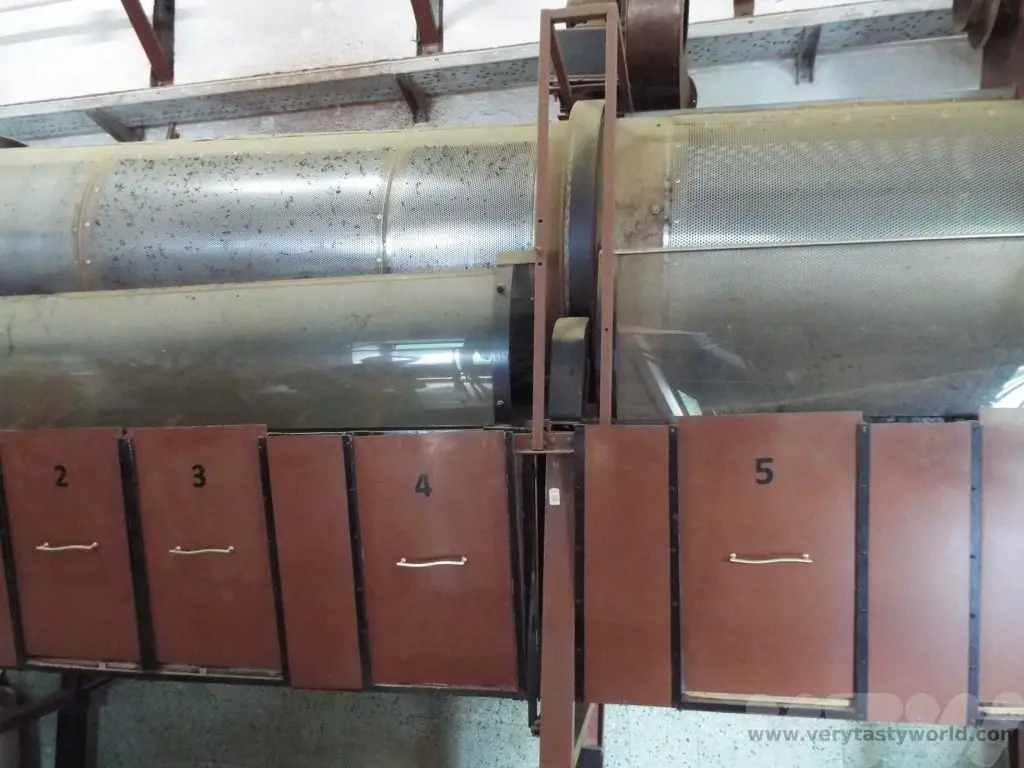
Volcanic Cozido das Furnas
The Azores are volcanic islands and some areas are still very geologically active. We enjoyed a day trip to Furnas towards the eastern end of the island.
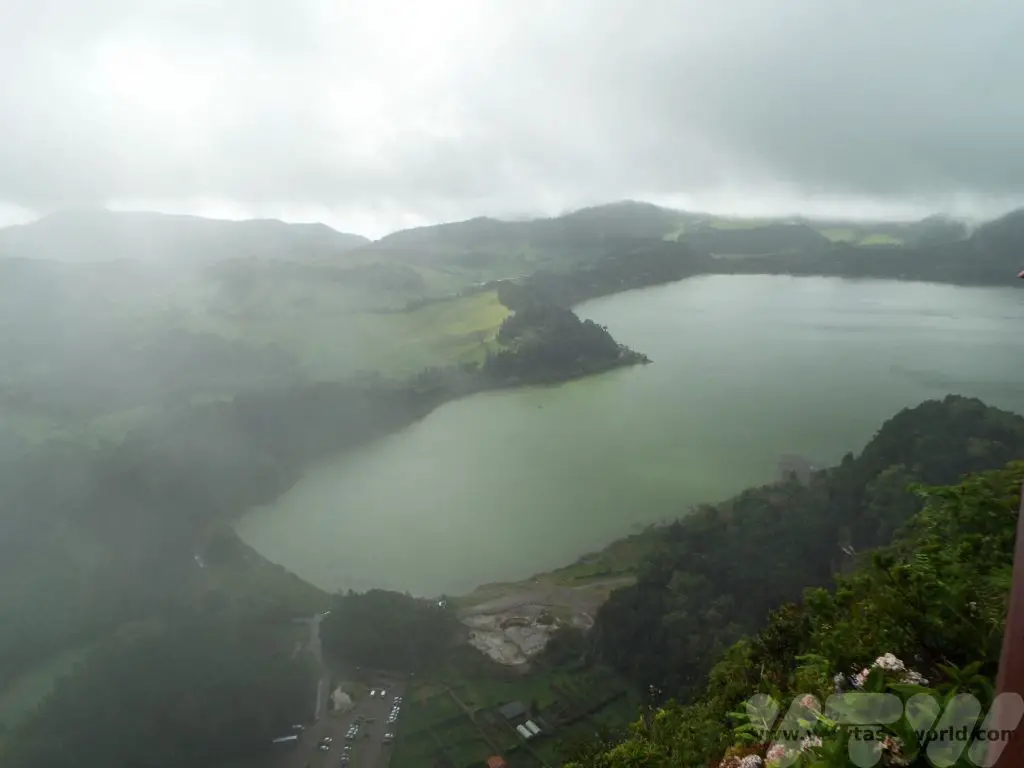
The local town has fumeroles which regularly steam, squirt and belch hot water. The area has a distinct whiff of rotten eggs due to the sulphur. Some of the water has a yellow colour (see the photo below on the right). This is not geological but local people put in bags of corn on the cob to cook.
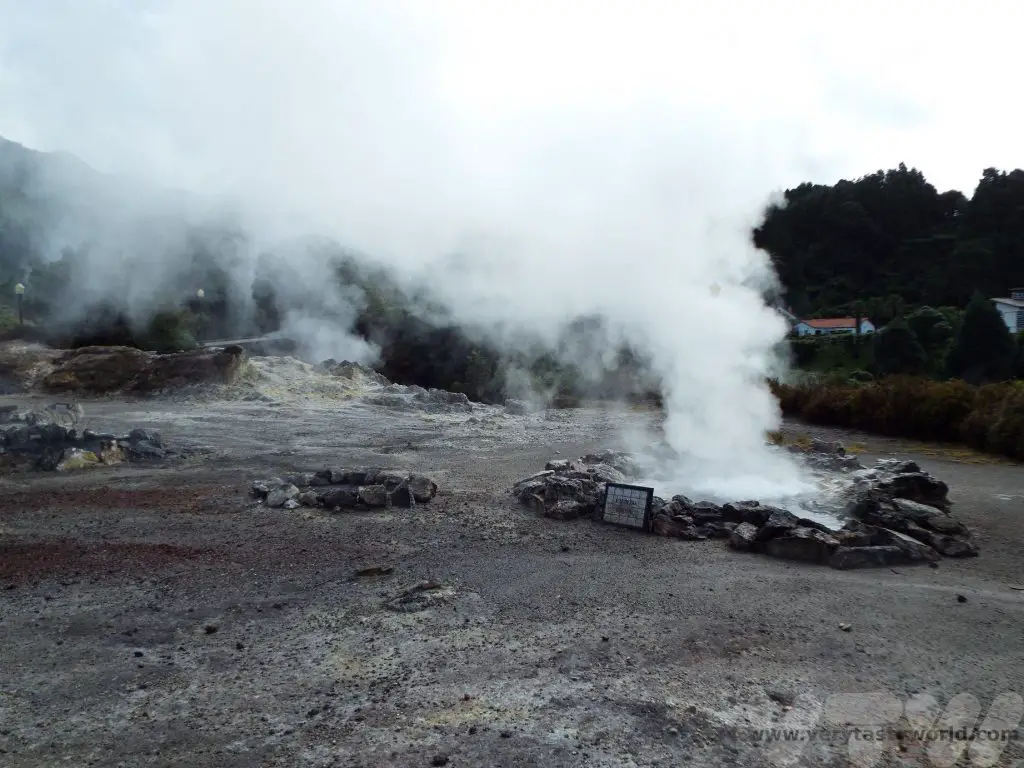
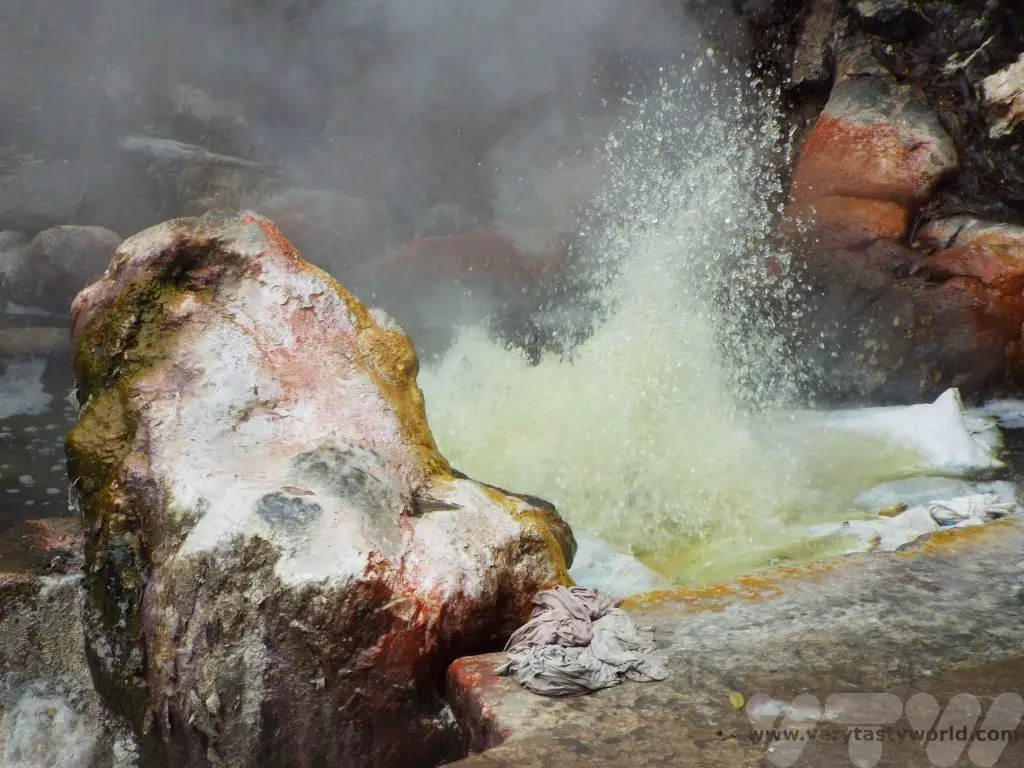
Taro plants, known as elephant ears, grow in the warm water. These have bulbous corms (like a tuber) which are edible and similar to sweet potatoes.
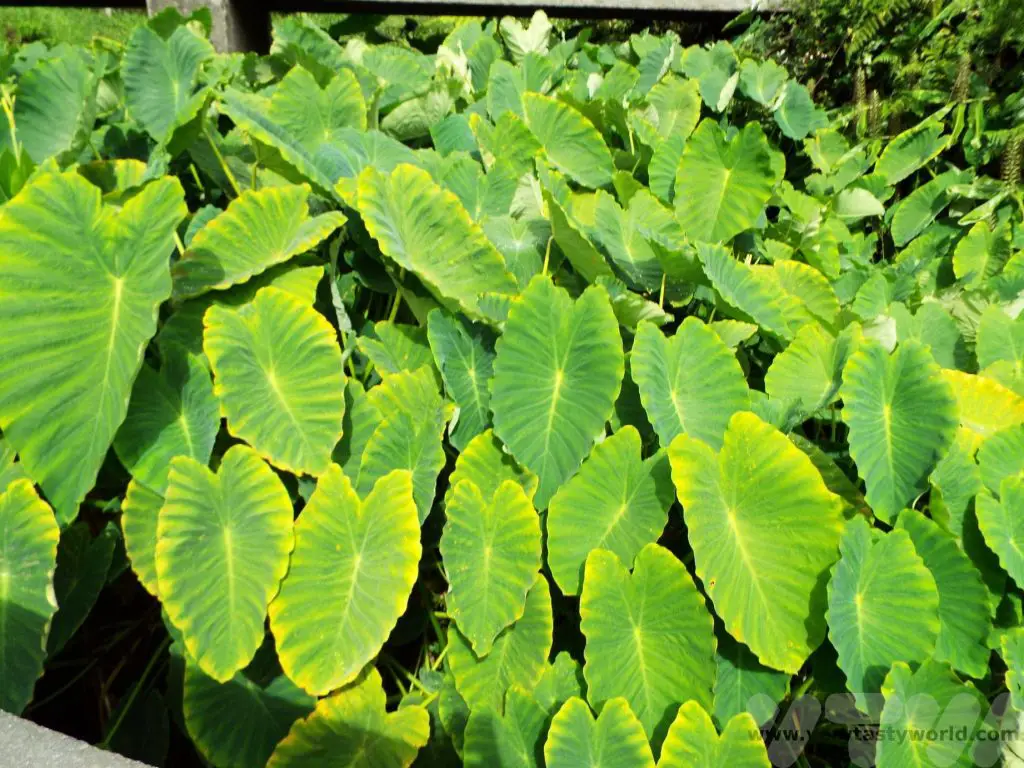
There are also some drinking fountains where you can taste the local water – it tastes very minerally and is an acquired taste for some. It’s also odd drinking warm water. These fountains are located just metres apart but the flavour of the water is surprisingly different!
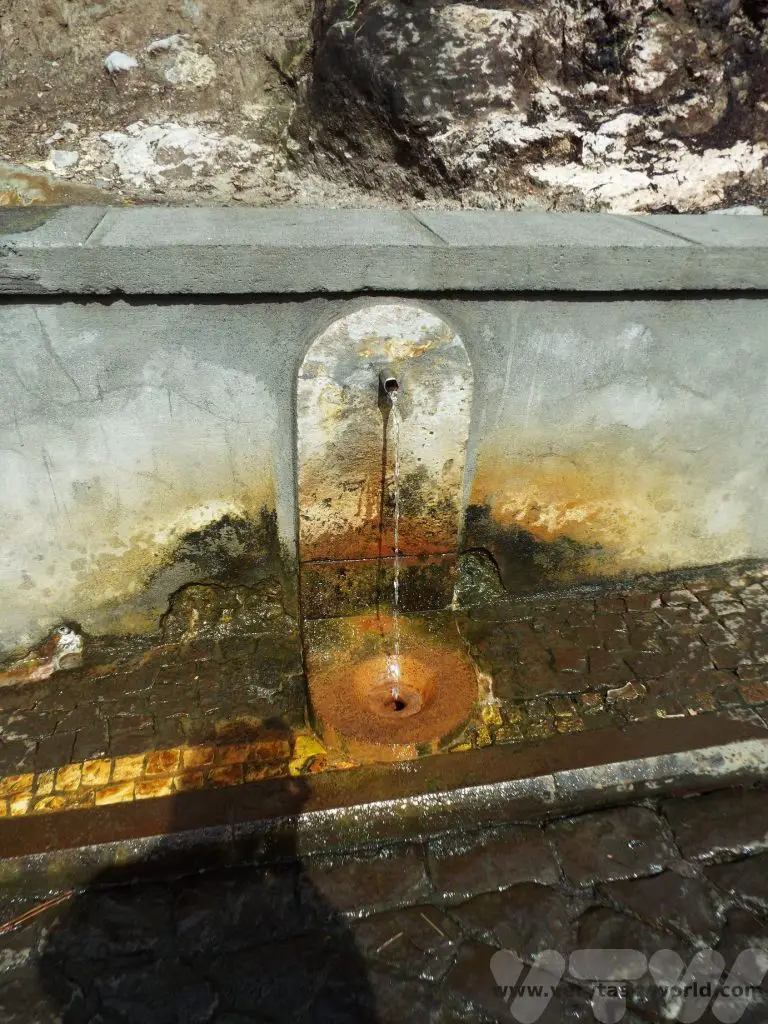
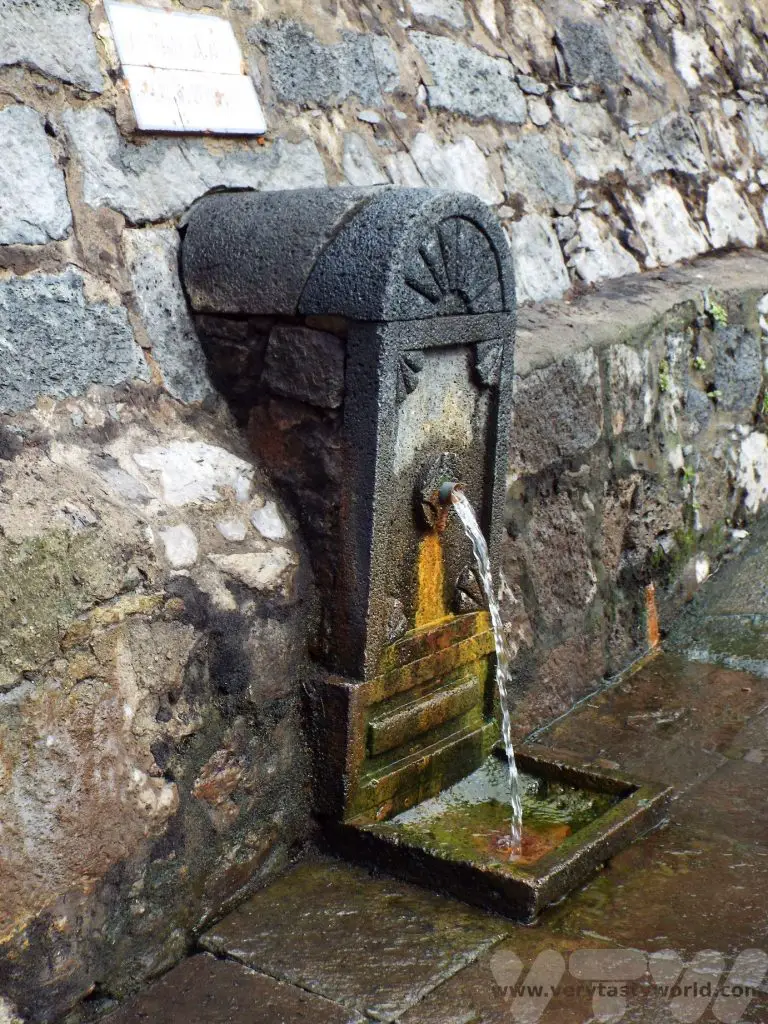
Most trips take you to a viewing point to see Furnas lake, and then you descend to the lake itself. You’re not allowed to swim in the lake but it’s possible to go boating on it. And walking around the area reveals some more of the steaming landscape.
There are a number of fenced off areas containing mounds of soil with name tags. On closer inspection these tags bear the names of various restaurants. Lunch!
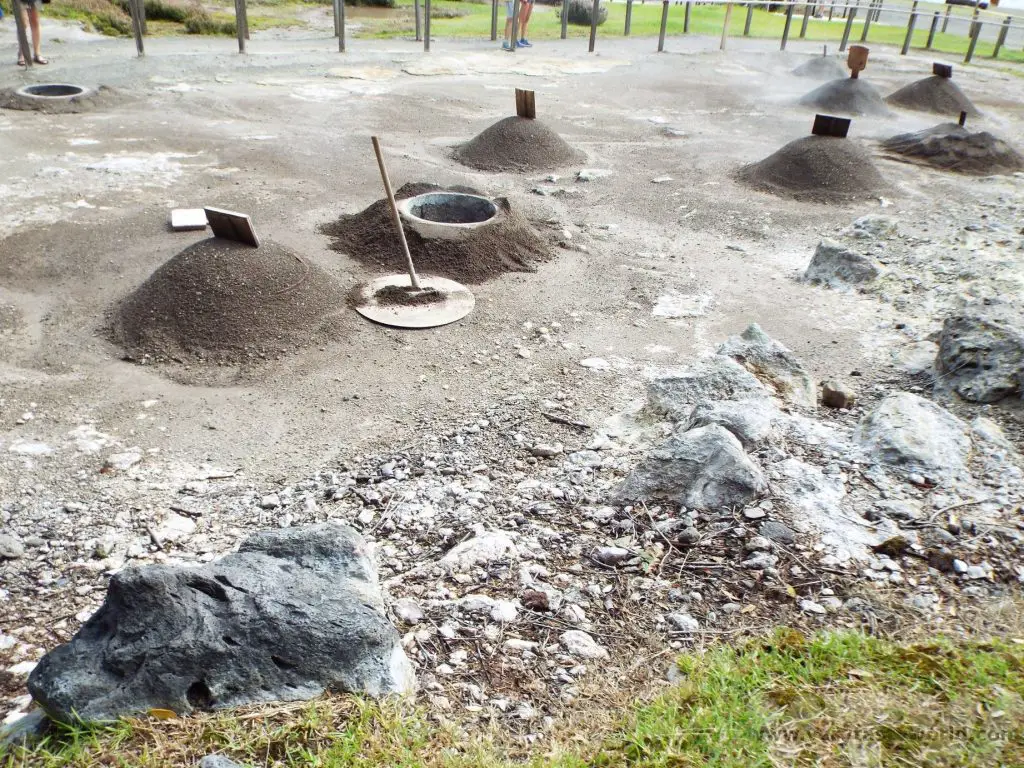
Every morning the restaurants prepare meat and vegetables and place them in a large pot. At 5am these pots are buried in the volcanic soil. Around six hours later a parade of vans arrive (and that’s the cue to grab a place by the fence if you want to take photos) and each restaurant owner will dig out their pots (or invite a hapless tourist to help) from the perfect slow cooker which has been cooking the food using free energy from the ground. It’s a brilliant system. And the site isn’t restricted to restaurants. Local people can hire a hole and bring their own food for a picnic/meal later in the day.
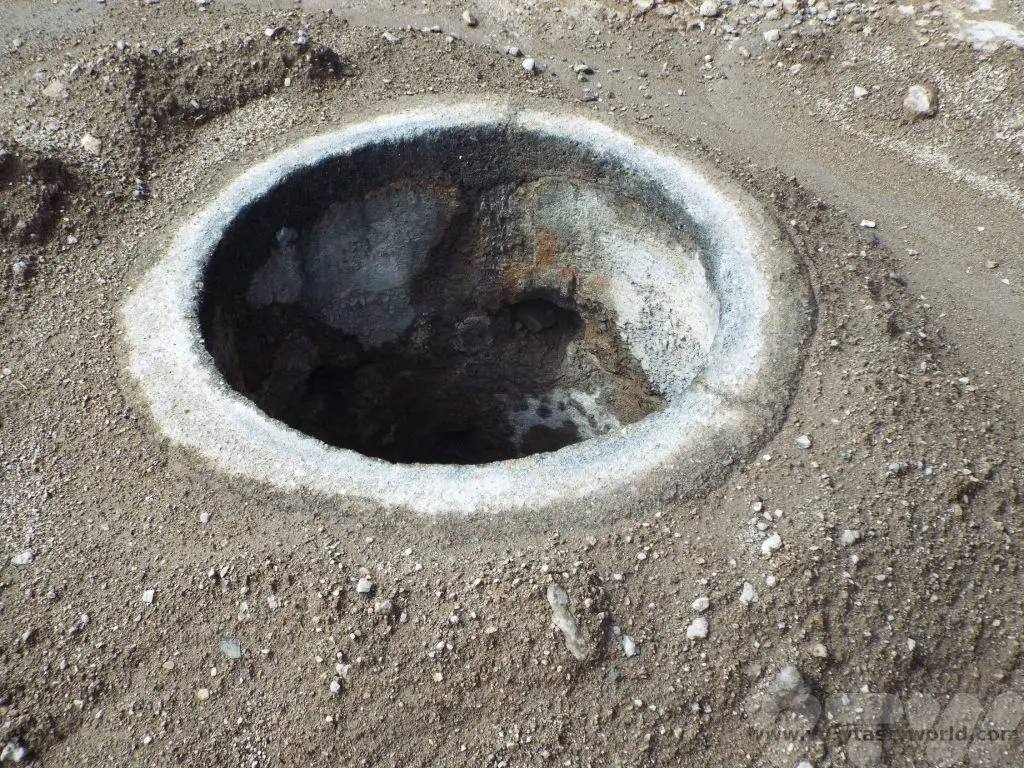
Back in town, the food is then served in the respective restaurants. A platter of meats and a platter of vegetables. (Vegetarians/vegans – the meat and veg will have been cooked together so if you want a veggie cozido, ask in advance and an unadulterated pot of pure veg can be supplied.)
The meats comprised pork, sausage, chicken, beef and blood sausage (Morcela) – all so soft and tender it could be cut with a spoon. It melted in the mouth.
The vegetables were potatoes, carrots, cabbage (which was served in large chunks so that it didn’t disintegrate during the cooking process) and the elephant ear yams.
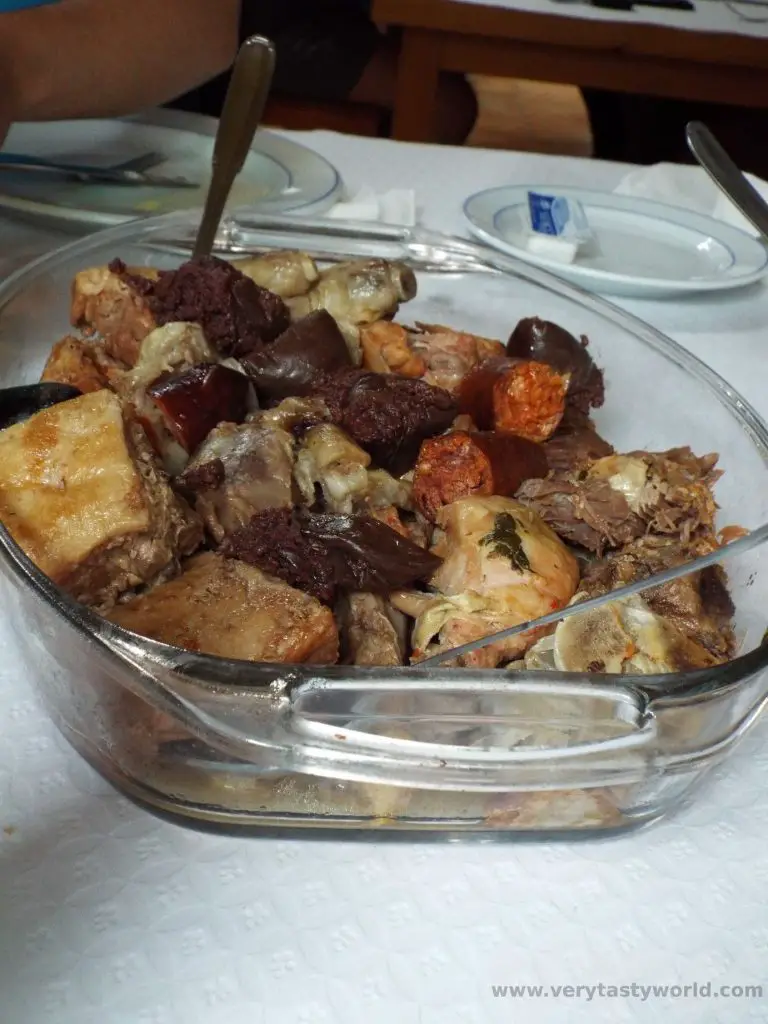
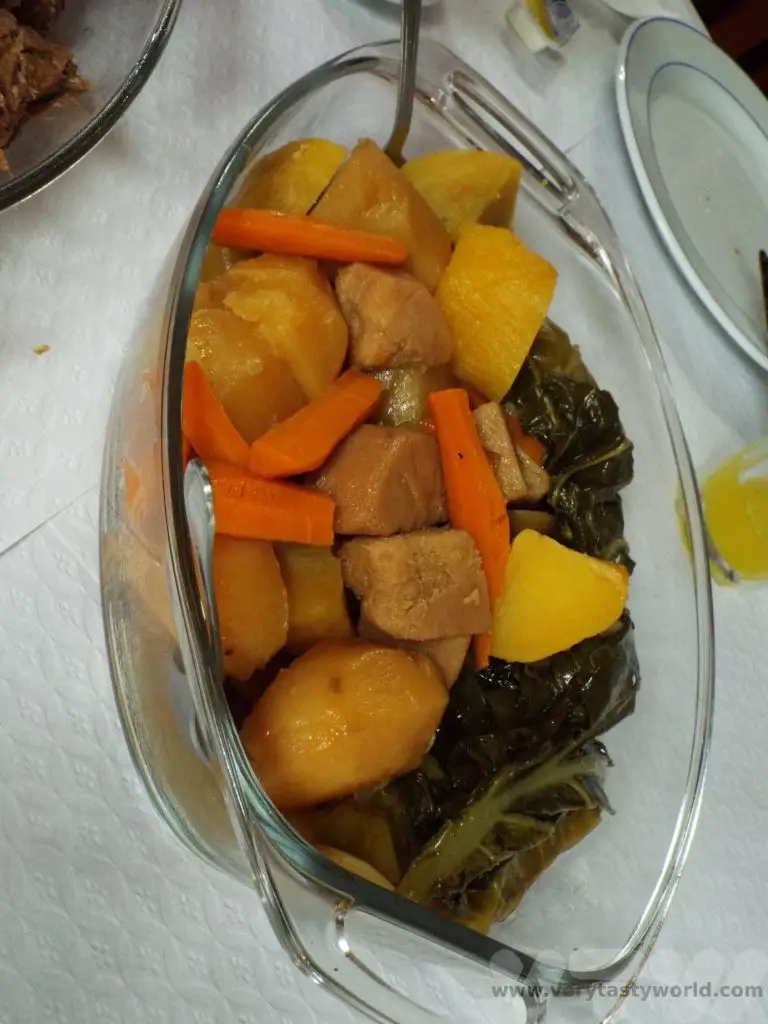
Cozido doesn’t have any additional flavours added – the food is served just as it comes out of the pot. But while it doesn’t offer complexity, the juices of the meat provide lots of flavour and you really get to enjoy the taste of the meat and vegetables. And it really is a feast!
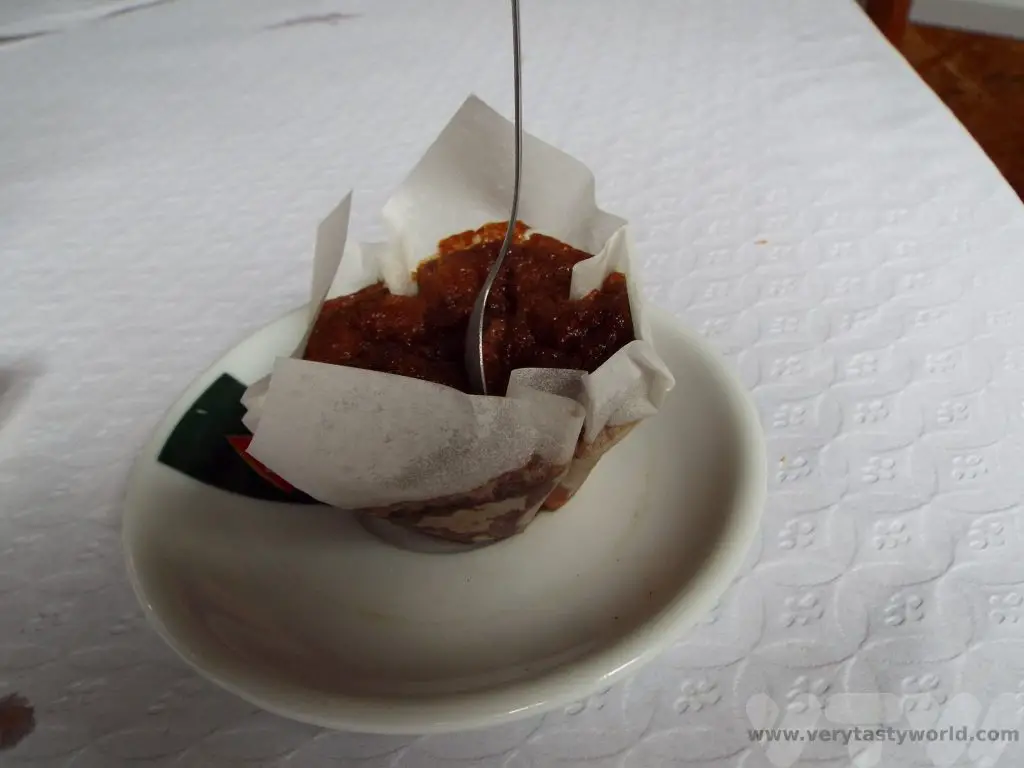
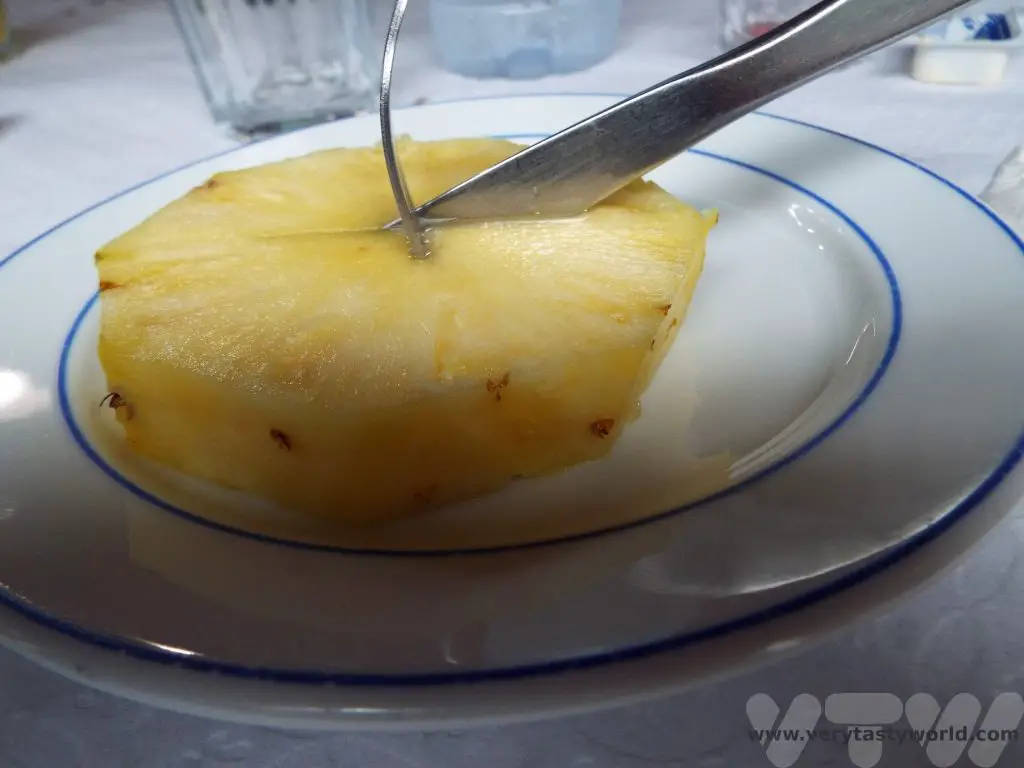
All washed down with local wine and a nice honey cake (if still hungry) or a slice of delicious local pineapple (if that’s all you can manage) for dessert, it filled us up for the rest of the day.
A Little Bit of Foraging
While the hydrangeas add glorious hues to the countryside and are very much welcomed, Sao Miguel has a more invasive plant – the yellow wild ginger – which is far less popular. It spreads quickly and does take over the landscape very quickly.
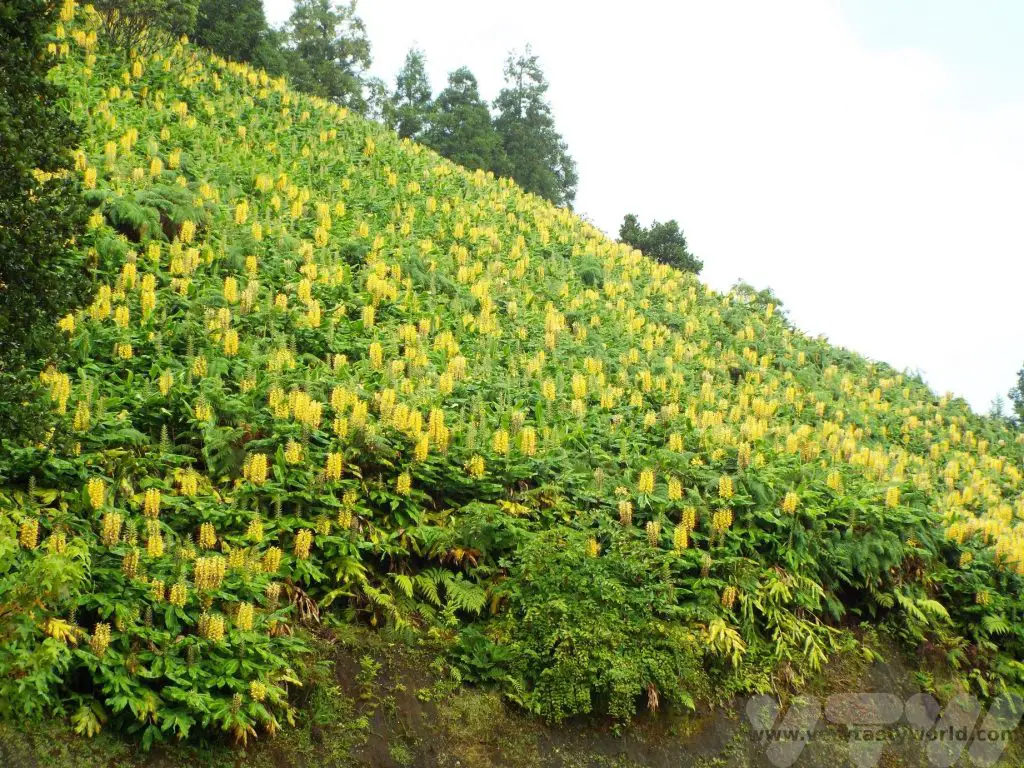
The local university is looking into uses for the plant and it’s looking hopeful that the fibrous leaves may be a useful material to replace use of some plastics in future. It is a good pollinator and inside the long yellow flowers is a drop of nectar. You can pick the flower, bite off the end – by a couple of centimetres – and spit that out. Then suck on the flower and you can taste the sweetness.
Dining on San Miguel – Ponta Delgada
First of all, if you want to dine at a particular restaurant, book! We visited at the end of the busy season and struggled to get a table at the best restaurants for an evening meal. At one of the restaurants we pretty much bagged the last table. We arrived five minutes before opening and people were already queuing for a walk-in but were politely turned away. Another option is to visit the restaurants at lunchtime when it should be easier to get a table.
Our favourites were Gastronomo and Michel. Both are deservedly popular and offered foods of the Azores that were local specialities. We received a very warm welcome in each place.
Gastronomo, R. da Boa Nova
Their queijo fresco and pimenta da terra were freshly made (some restaurants provide you with the cheese on a plate and a bottle of sauce) and served on a ginger plant leaf (one of the uses for the invasive plant) accompanied by home-made bread, including a sweet bread (a bit like a brioche) which was a wonderful contrast to the cheese and chilli.
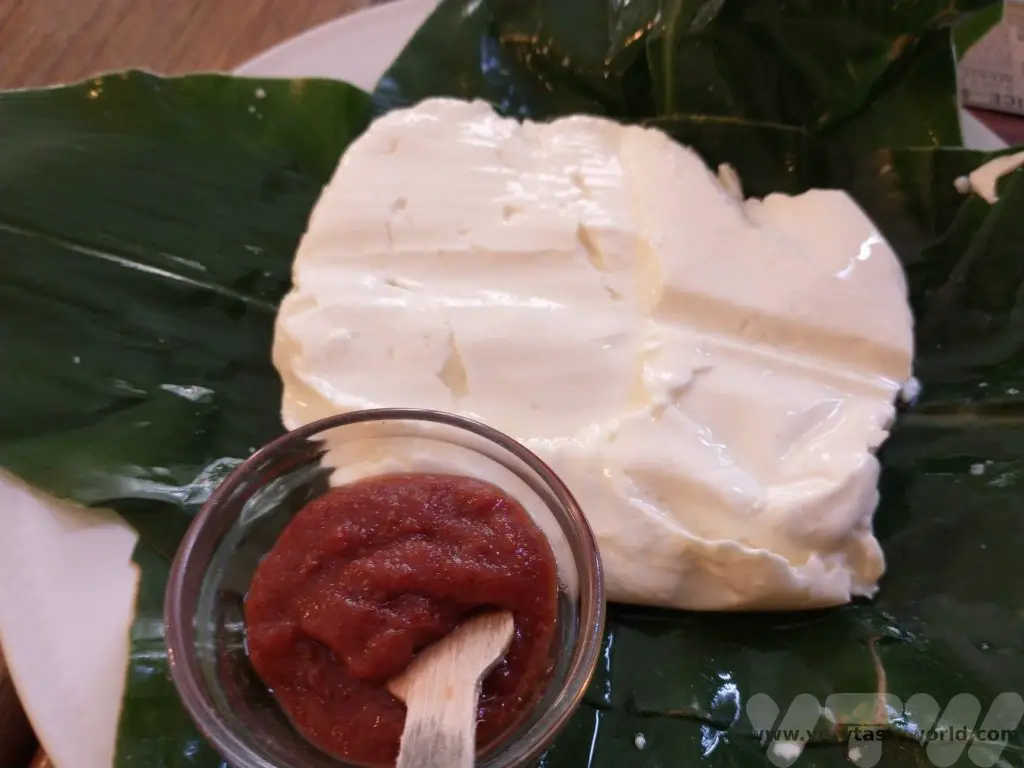
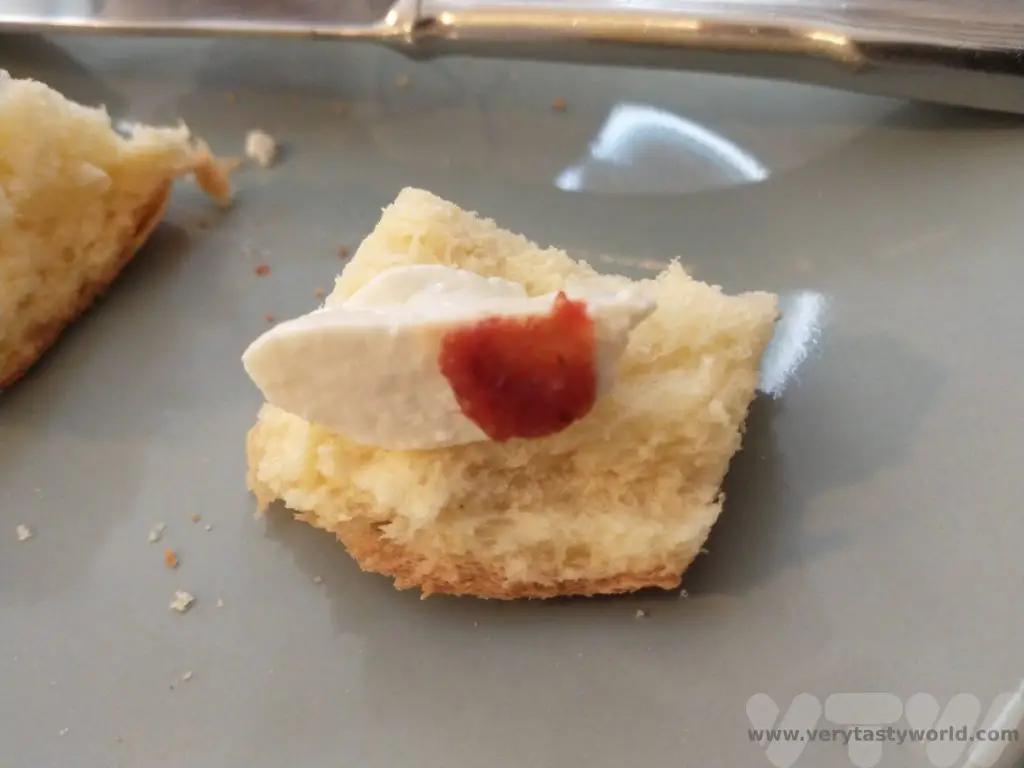
We shared a starter of black pudding and local pineapple which was an absolutely delicious combination of sweet and savoury flavours. The black pudding – a blood sausage – was one of the best we have eaten.
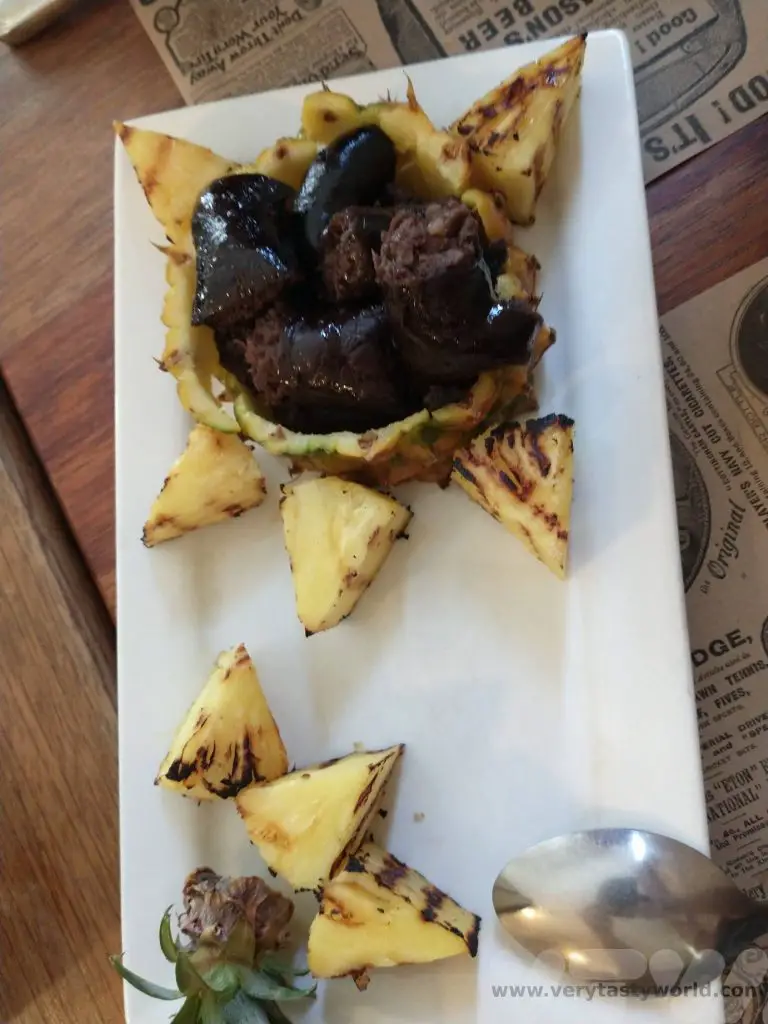
The Azoreans have a particular way of cooking steak. Bife steak with garlic and pimento and a fried egg.
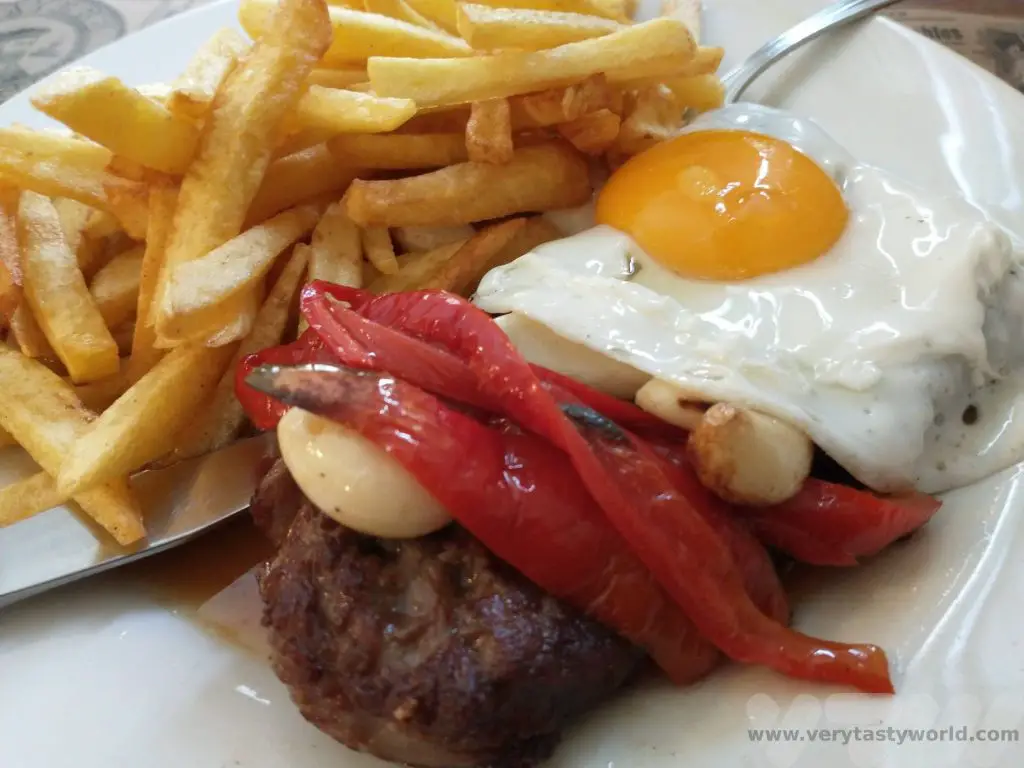
Bacalhau is not specifically Azorean but is a hugely well known Portuguese dish. It comprises salt cod, cooked with eggs and olives and served on fries.
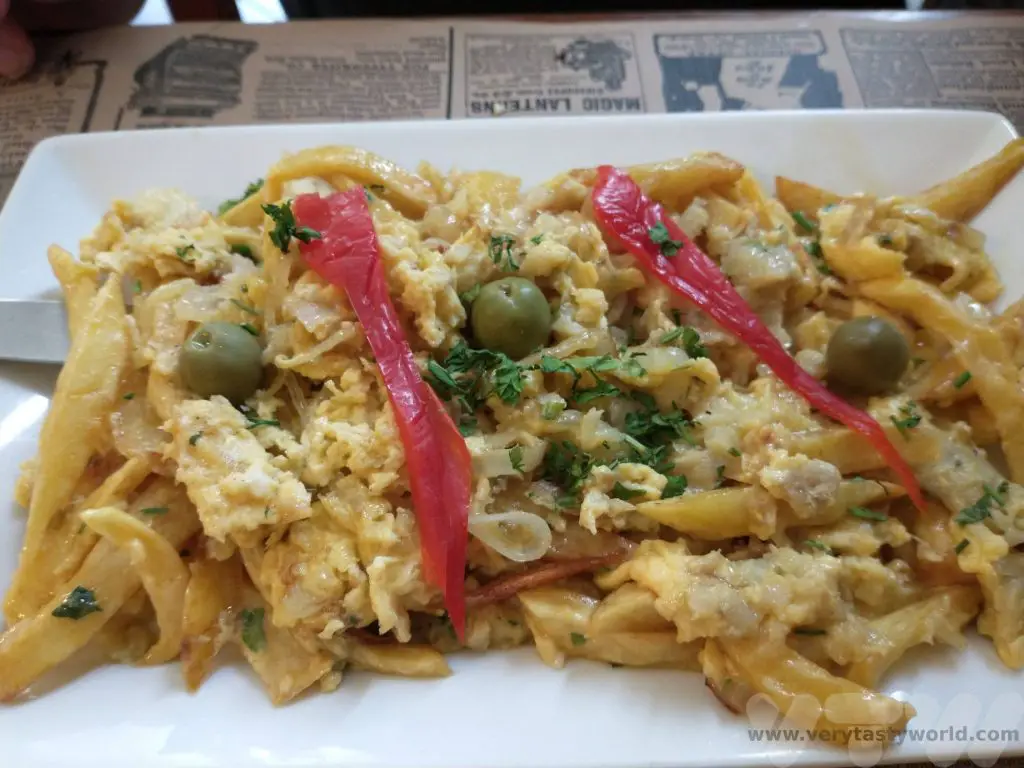
Michel, Rua Engº José Cordeiro Antiga da Calheta
We tried Azorean limpets and local shrimp to start with. Limpets are shellfish that are incredibly common all over Europe and, although we knew they were edible, had never seen them on a menu before. They have a tougher texture than a lot of shellfish but they were tasty.
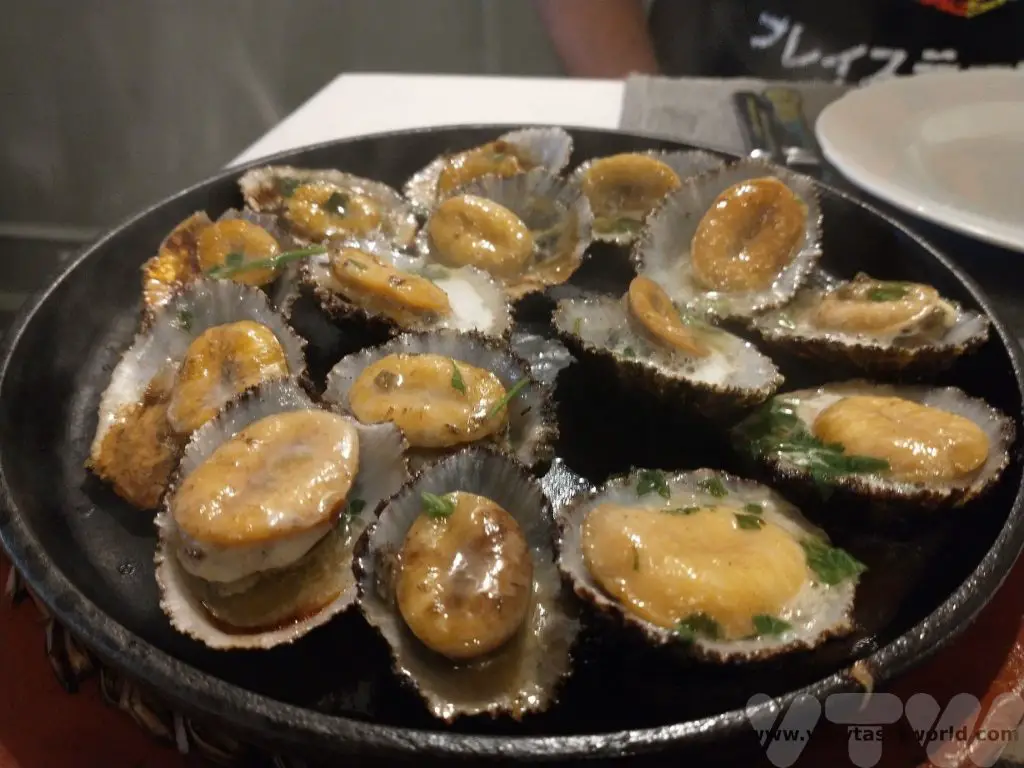
Pork and mashed yam (the elephant ears) and vegetables was utterly delicious.
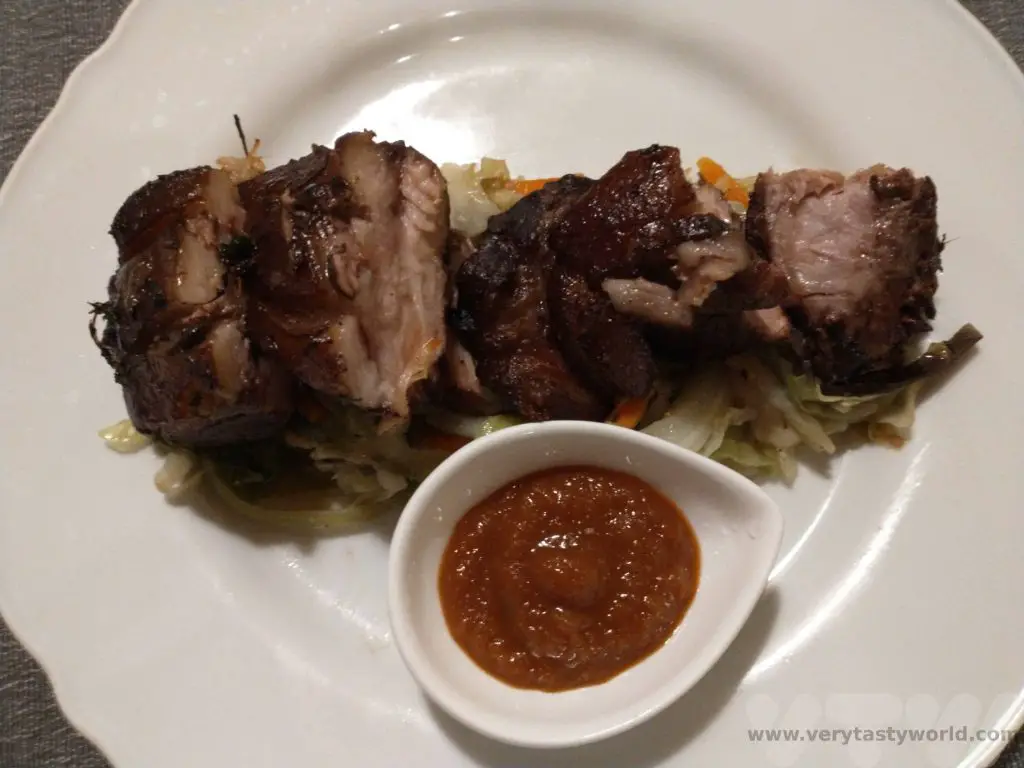
As was the oven roast lamb.
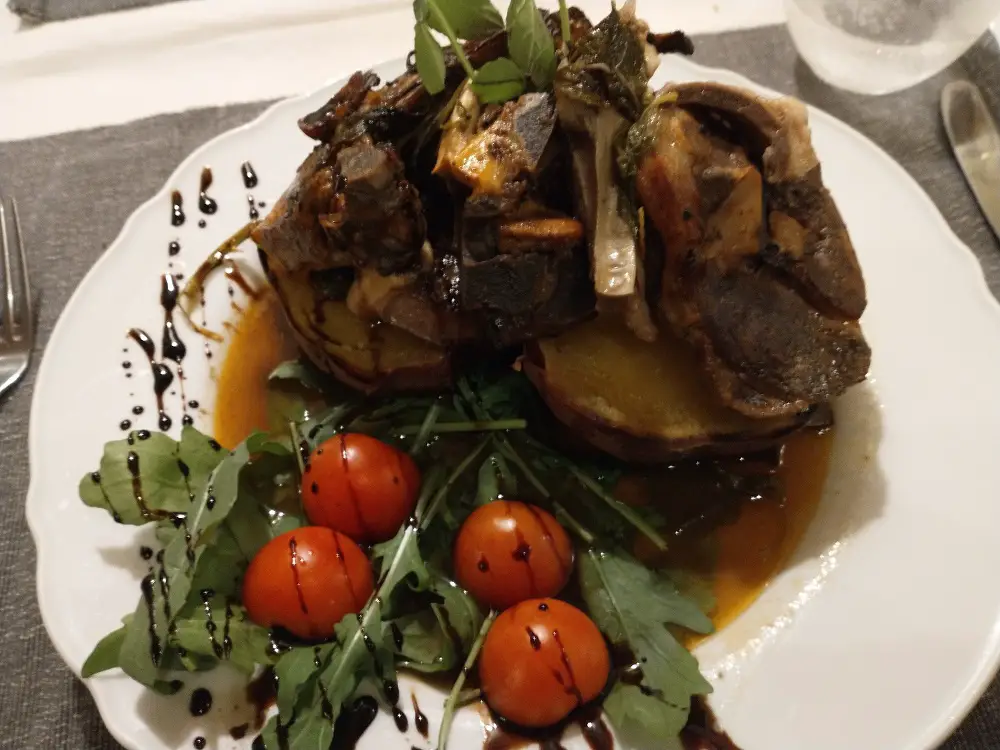

Costa Rica Wildlife Sanctuary – Caño Negro
Beautiful Costa Rica is well known for its amazing wildlife. This relatively small country in Central America has twenty-three national parks, three of which are UNESCO sites. We took a trip from the east coast to the west, visiting many wildlife parks. The tourism infrastructure is really well developed with easy transportation between locations and many tour operators that can offer trips to various attractions.
Please note that this post contains affiliate links. If you click through and decide to make a purchase we will make a small commission, at no extra cost to you, which will help towards the costs of running this site.
Having enjoyed Tortuguero, where we had been lucky to see a greenback turtle nesting, we moved onto La Fortuna de San Carlos, close the Arenal volcano, in the middle of the country. It is an ideal location to use as a base to explore this region and there are loads of exciting activities to undertake in the area, from caving to wildlife viewing.
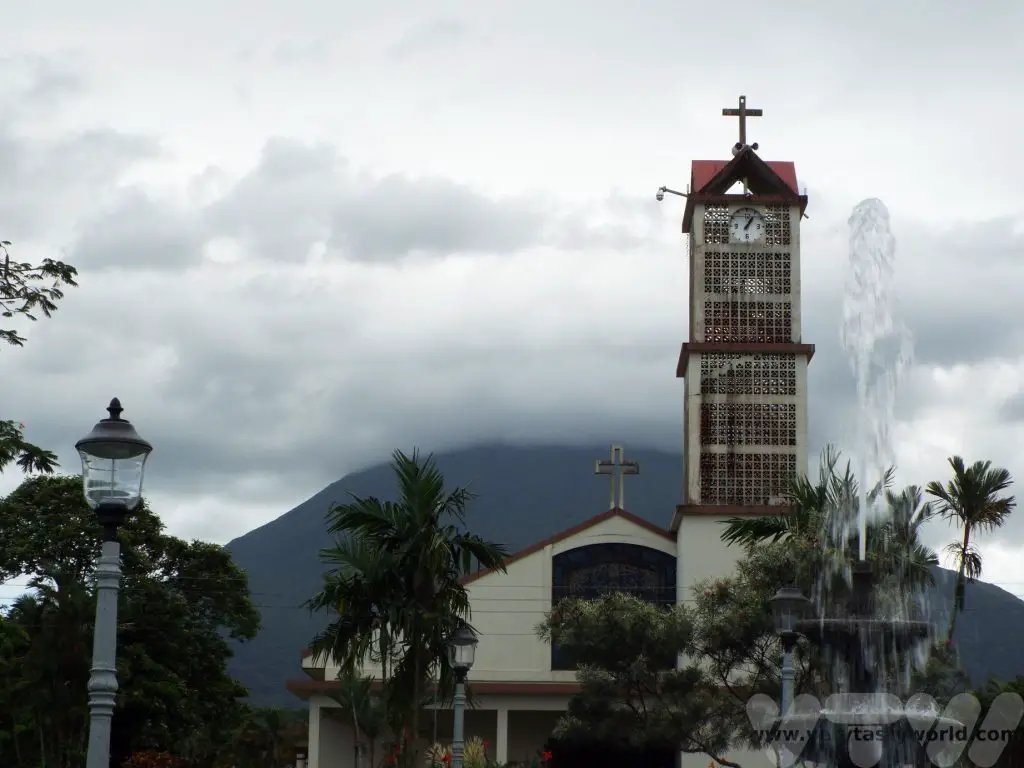
One of the trips we enjoyed was to the Caño Negro wildlife sanctuary. As with most tours in Costa Rica, there are companies in La Fortuna that can arrange the trip and will pick you up from your hotel or guest house.
It’ll take a couple of hours to get there from La Fortuna. Our guide was a naturalist who was not only knowledgeable about the local wildlife but was also really keen to tell us all about the fruit that grows in the region as well.
The Caño Negro, close to the Nicaraguan border, is a Costa Rica wildlife sanctuary which has the status of a national park, a Ramsar wetland of international importance, and one of the most biologically diverse areas in the country.
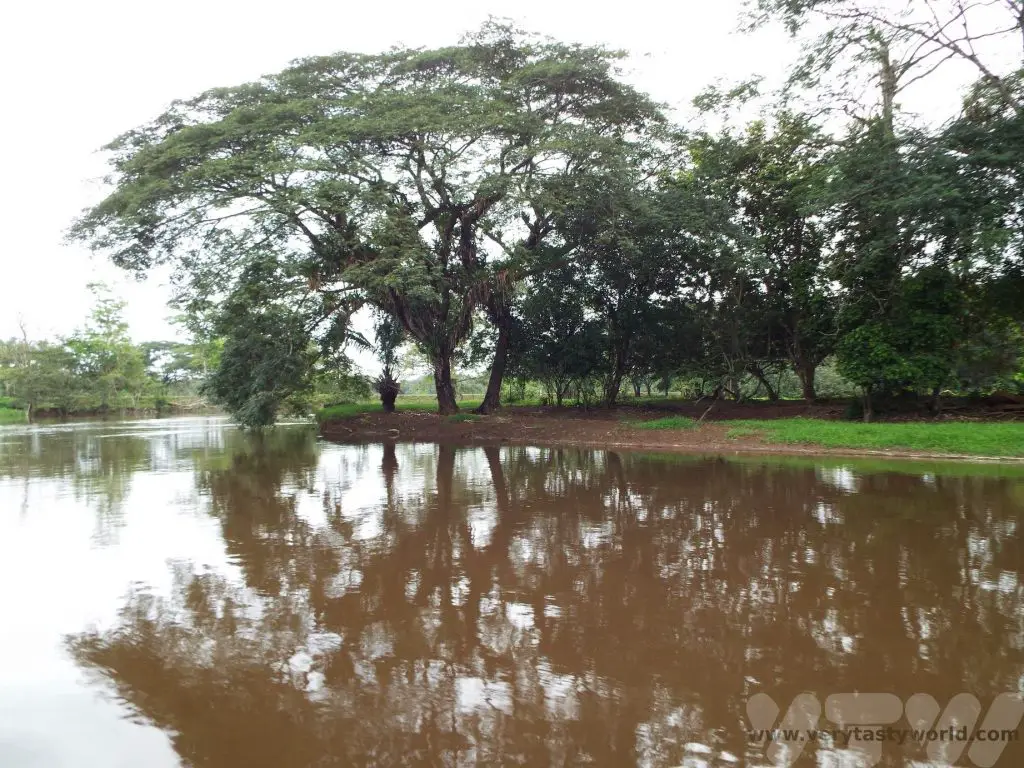
Boat Trip on the Río Frío
Once at the Caño Negro you can board a boat and enjoy a fascinating cruise up and down the Río Frío.
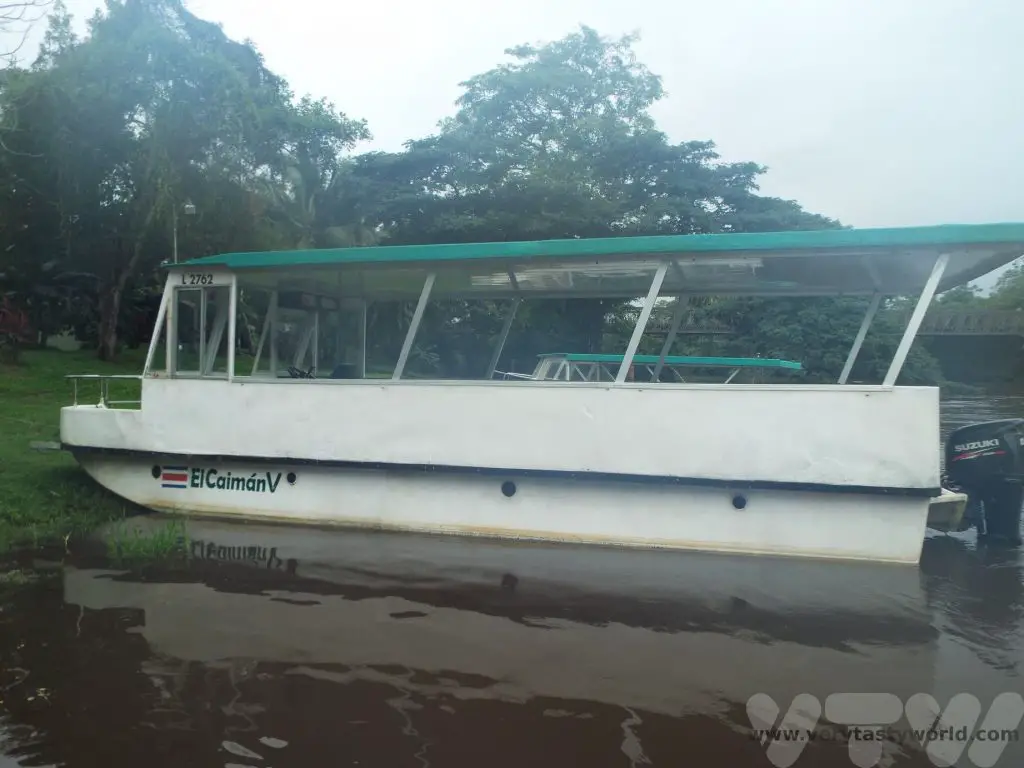
Wildlife viewings are pretty much guaranteed. Good guides will be able to spot plenty of birds, reptiles and mammals and, importantly, be able to point them out so that you can take pictures. Of course, you may not get to see the more elusive residents: the cougars, jaguars and ocelots, but there were plenty of monkeys, iguana, caiman, beautiful birds and, of course, sloths to see.
Howler monkeys are the loudest monkeys in the area. Their calls can travel 5km! They use the vocalisation to communicate with each other and establish territory.
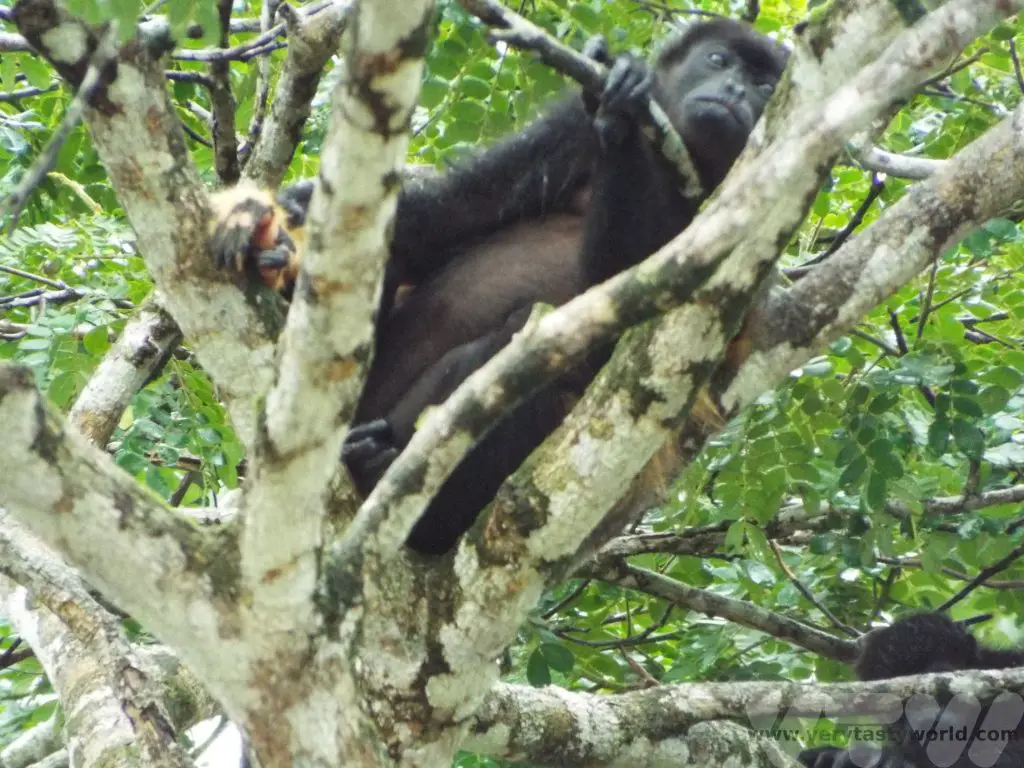
White faced monkeys, also known as capuchin monkeys, look adorable but are very naughty. They are regarded as the most intelligent of the monkeys in the region but can be quite vicious, fighting over the fruit in the trees and stealing from each other.
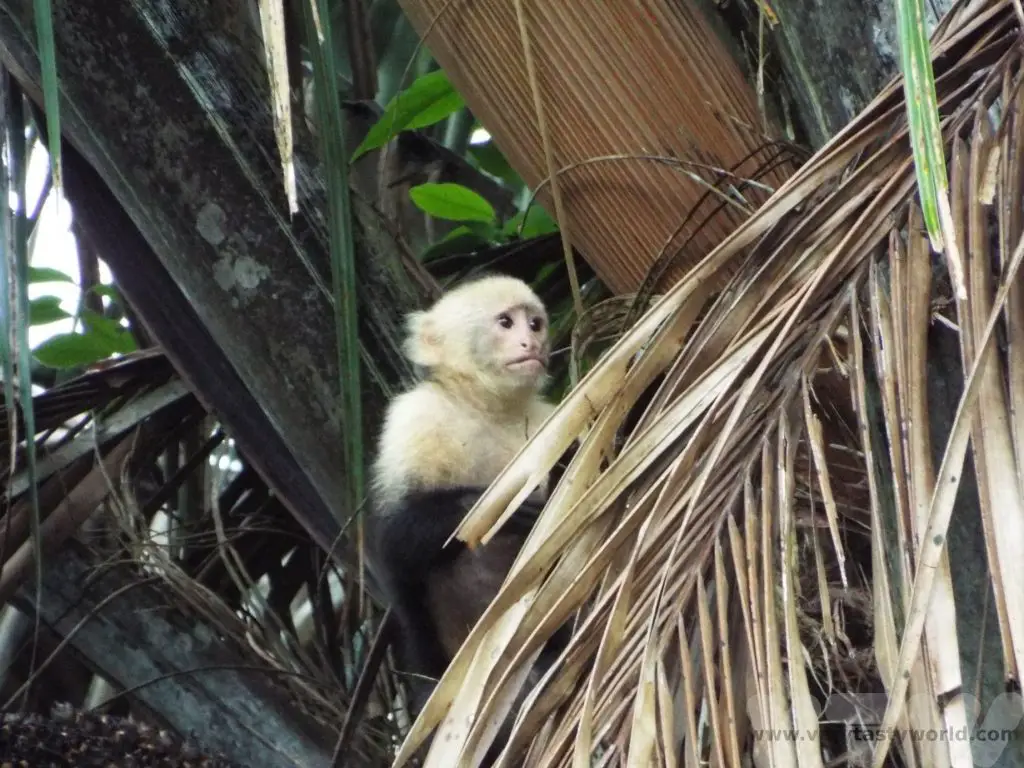
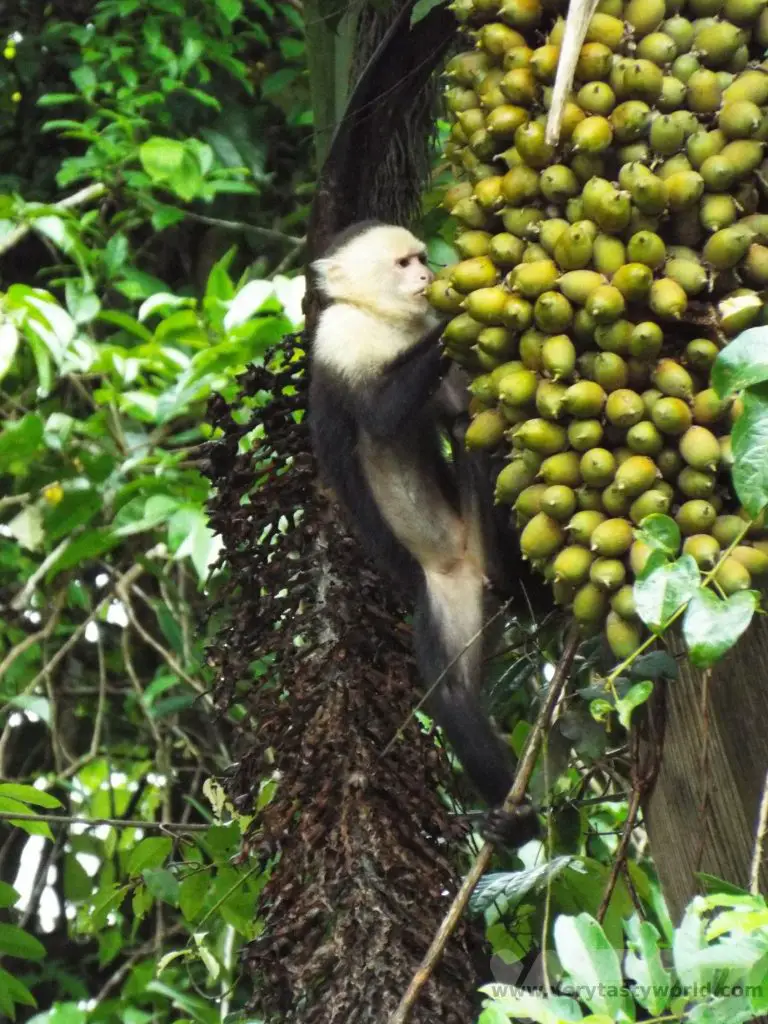
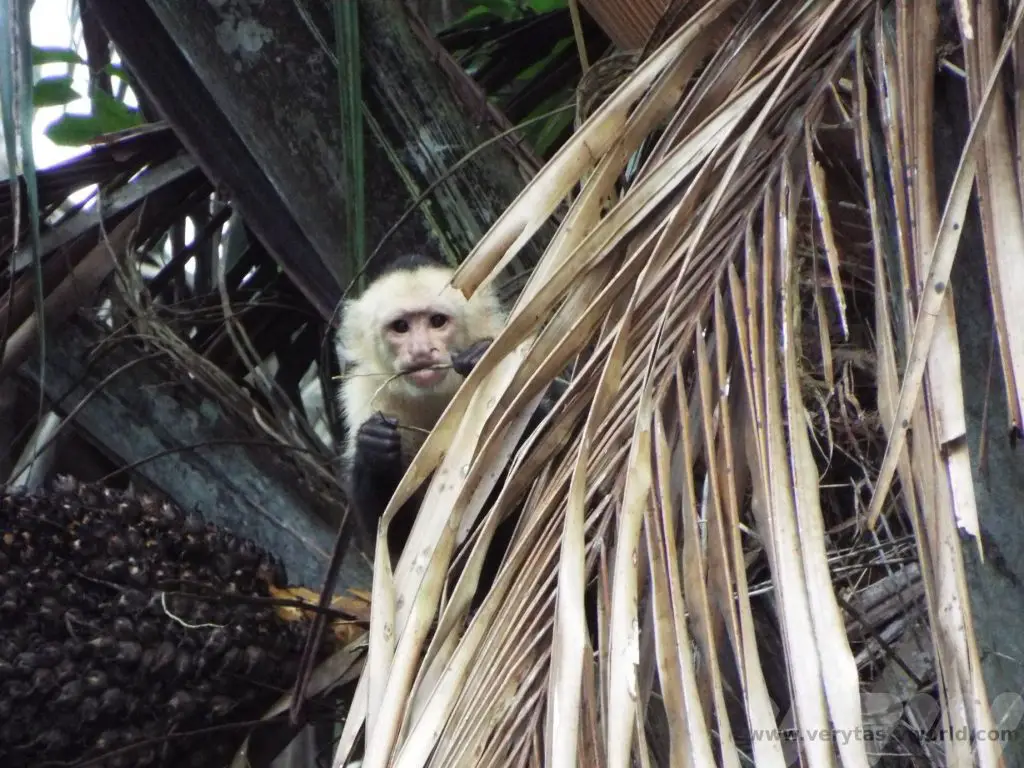
This beautiful kingfisher got lucky catching a fishy snack.
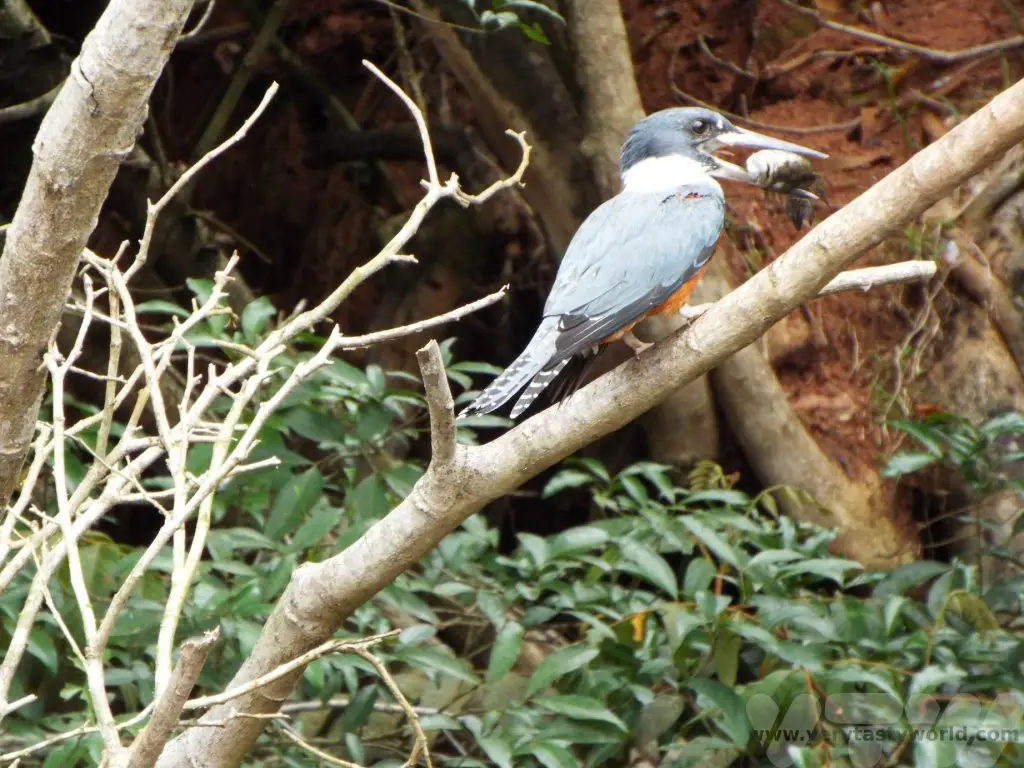
And this egret was having a good wade searching for food.
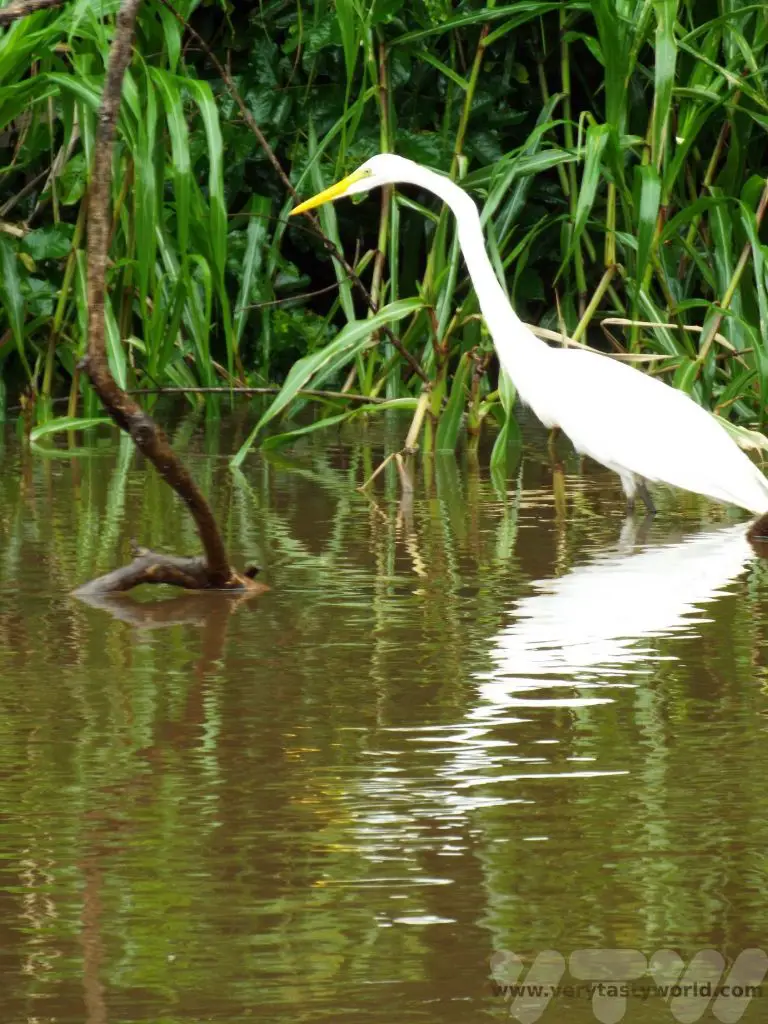
And there were plentiful iguana hanging around in trees and on the surrounding fields.
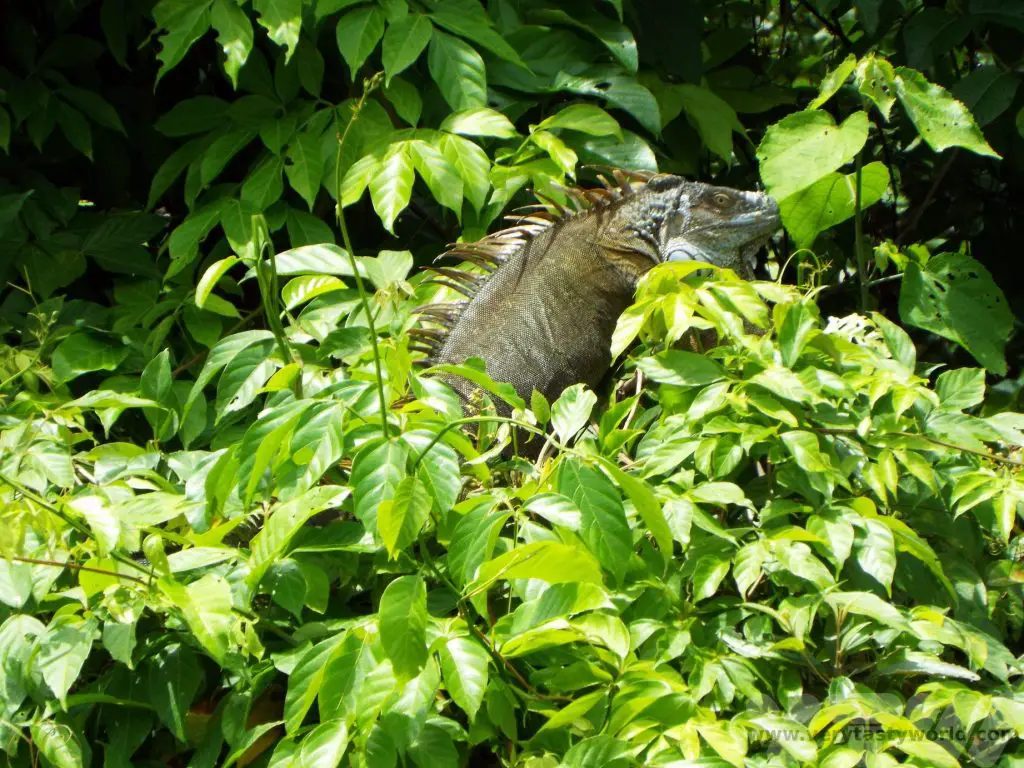
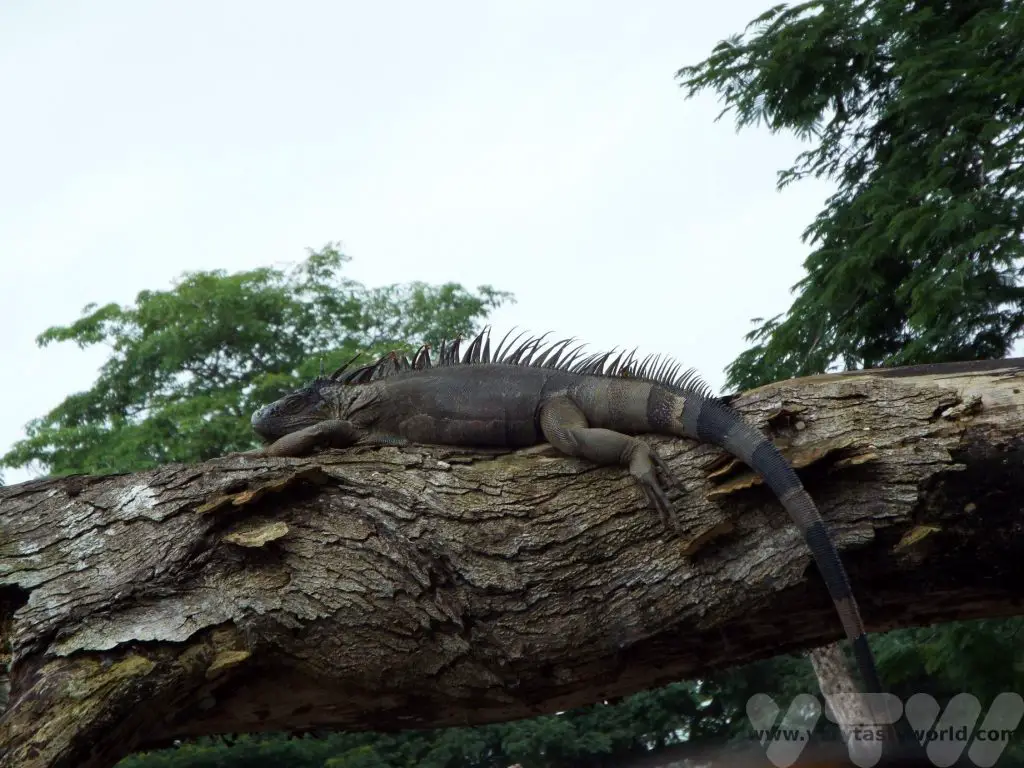
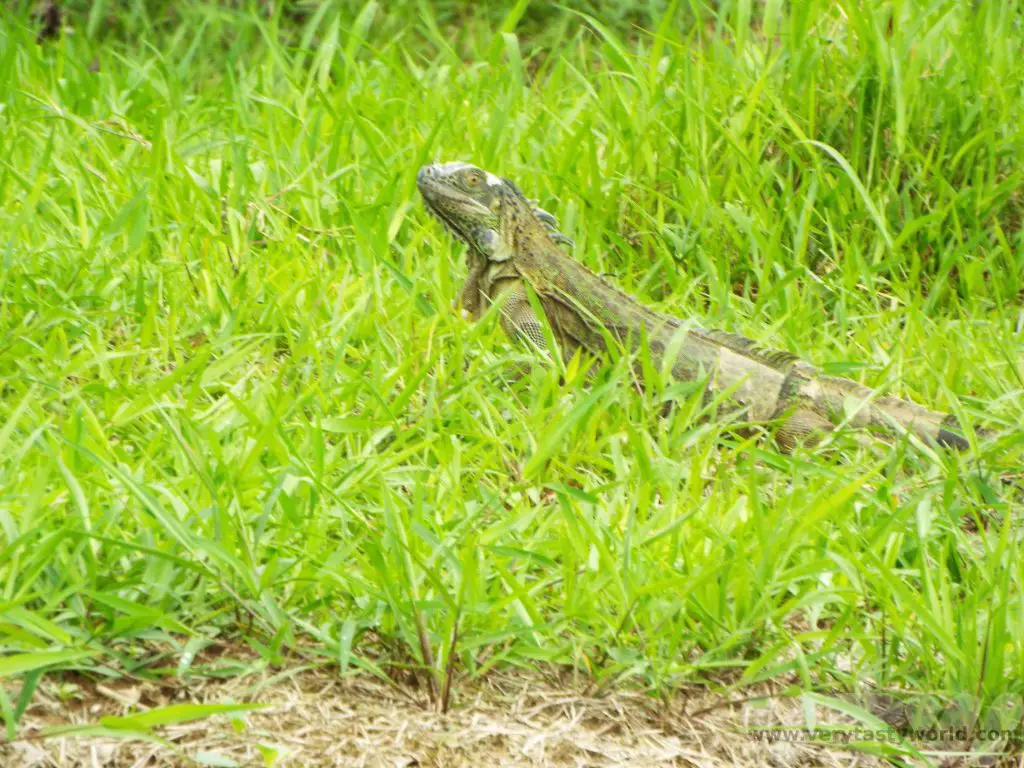
The anhinga is also known as the snake bird because when it swims in the water you can only see its elongated neck, which has the appearance of a snake gliding through the river.
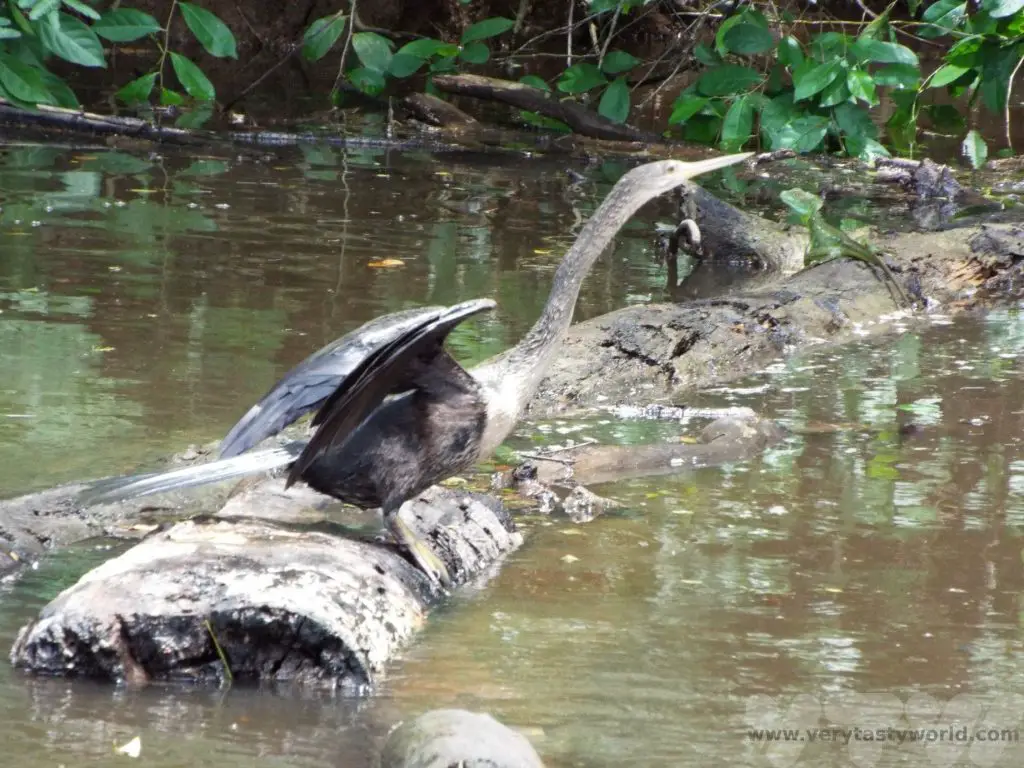
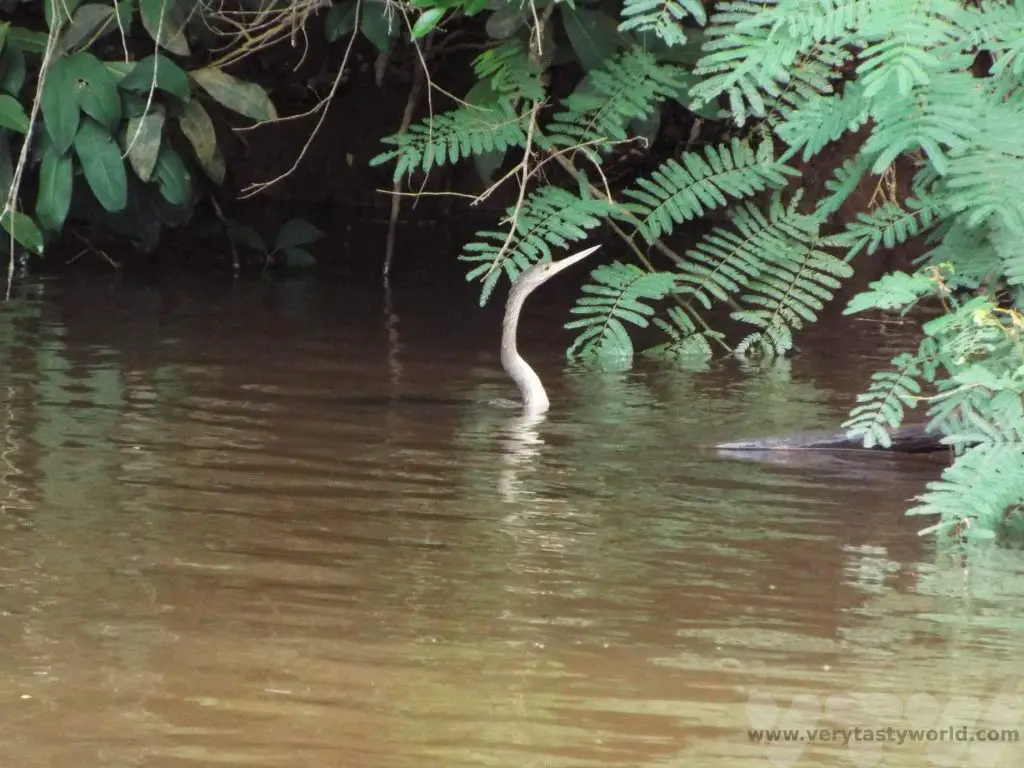
The Jesus lizard, or to give it its correct name, basilisk lizard, derives its moniker from being able to run across the water on its rear legs. It is possible for the species to do this because they have little scales on their back toes which form webs that trap water and air bubbles underneath them. If they run quickly enough the bubbles underneath these webs prevent them from sinking into the water. The lizards are able to swim if they go too slow.
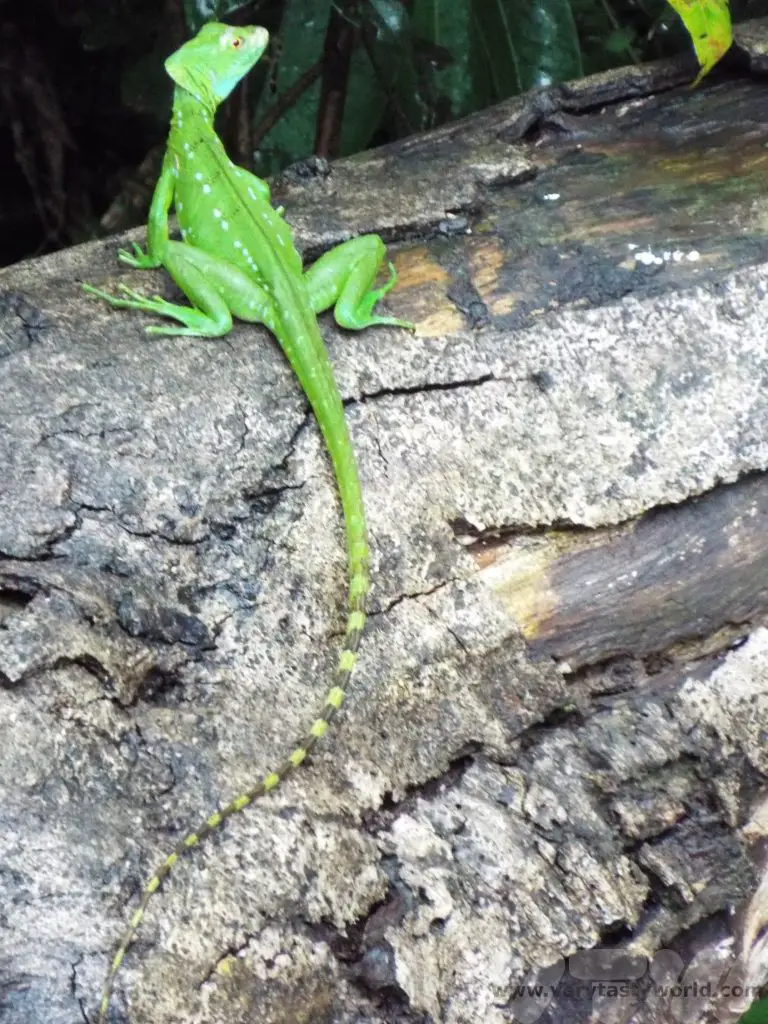
We sailed past a nonchalant caiman.
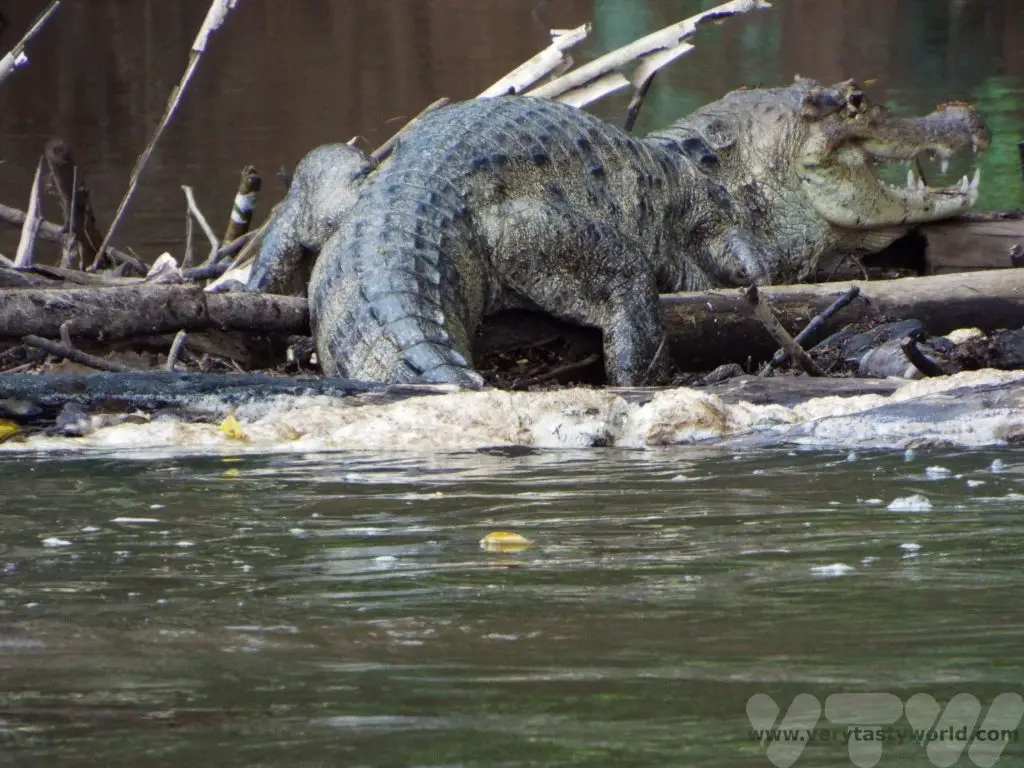
Sloths are probably the creature that most visitors to Costa Rica definitely want to see. On this excursion we saw a Two-Toed sloth, hanging around in the tree, which is what sloths do best.
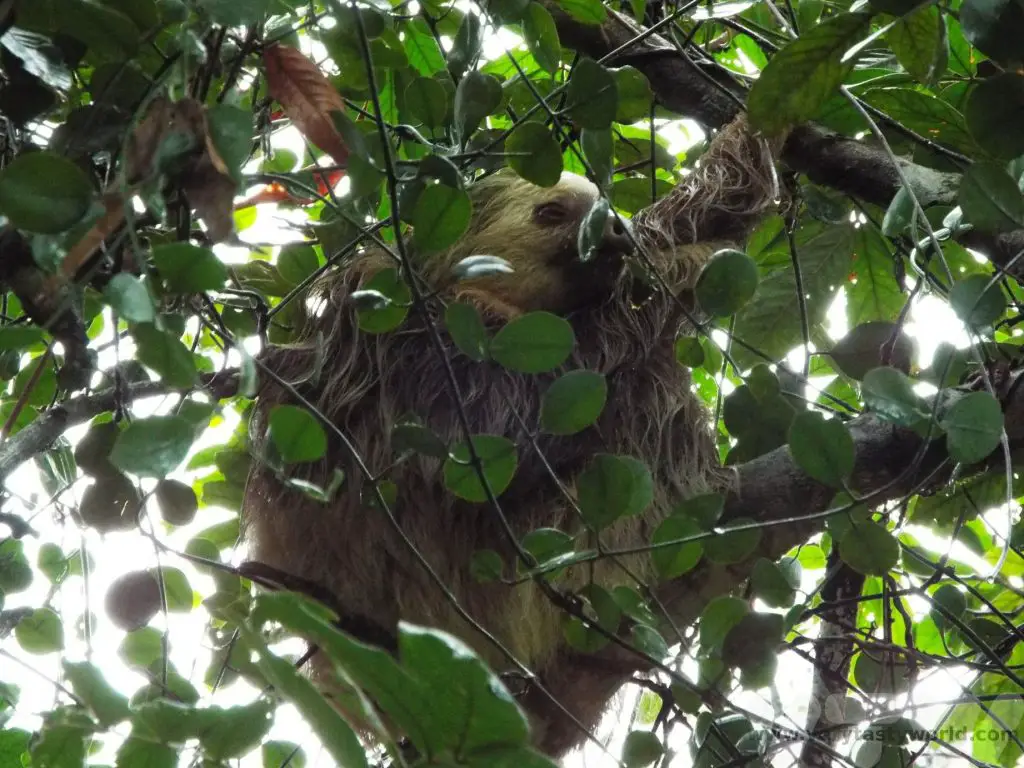
There are two species of sloth in Costa Rica: Two-Toed and Three-Toed. (We did see the Three-Toed Sloth, but on the Pacific coast, not on this river trip.) They are absolutely fascinating creatures – they appear to be incredibly lazy but this is largely because they have a very slow metabolism and most of their time is spent in the tree canopies. They have a multi-chambered stomach that is capable of digesting tough leaves but the digestion process takes a very long time. Once they are up a tree they will stay there for several days, only coming down for a poo, which happens once week. Pretty much everything else happens in the trees – eating, sleeping, mating, even giving birth.
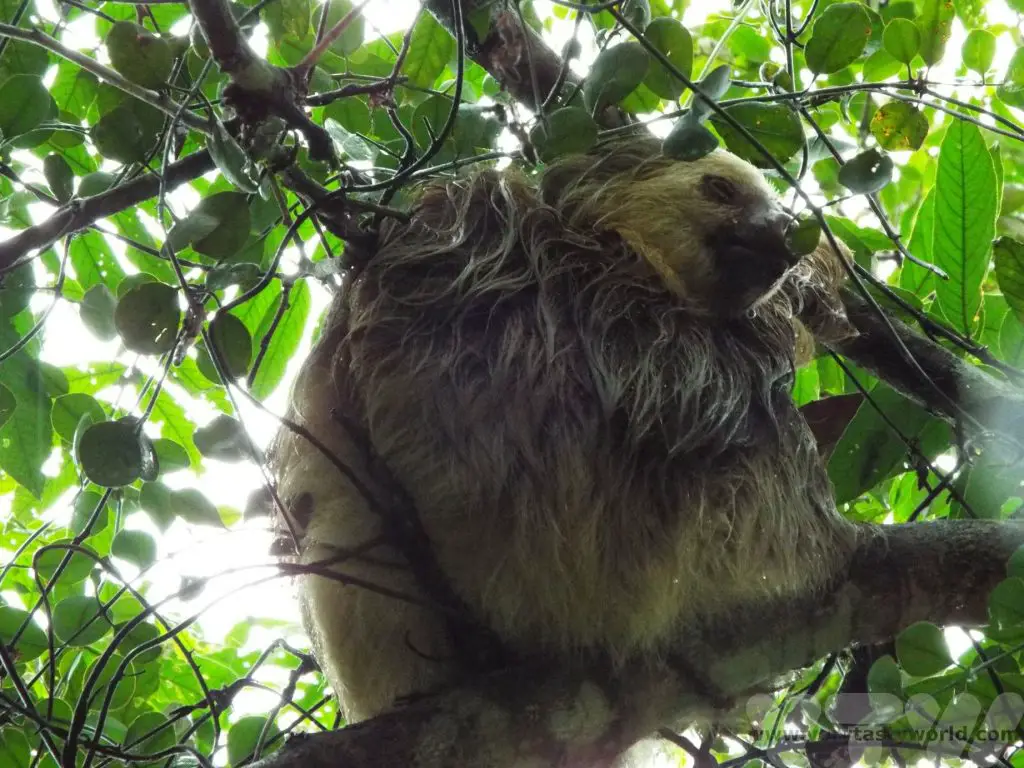
They are often covered in green algae, with which they have a symbiotic relationship, the algae providing them with some nutrition. In turn, the sloth’s fur, which retains water well, is an idea environment for the algae to thrive. It also helps provide camouflage – the sloth’s natural predators include ocelot and jaguar.
The species have been around for 65 million years, so there’s probably something to be said for taking things easy in life!
A Downpour
The river trip was hugely enjoyable but as we were travelling in the mid-season in June/July (it is rainy but not hurricane weather) we did experience something of a downpour. When it rains in Costa Rica, it rains! (Some areas we visited receive around 5000mm annually.) The showers at this time of year are extremely heavy but usually short-lived, lasting no more than twenty minutes to half an hour. The boat had a roof and our captain kindly rescued some kayakers who were enjoying their gentle paddle on the river until they got a complete soaking! They were hugely relieved when we picked them up and they stepped aboard looking somewhat bedraggled. We always recommend bringing wet weather gear if travelling at this time of year.
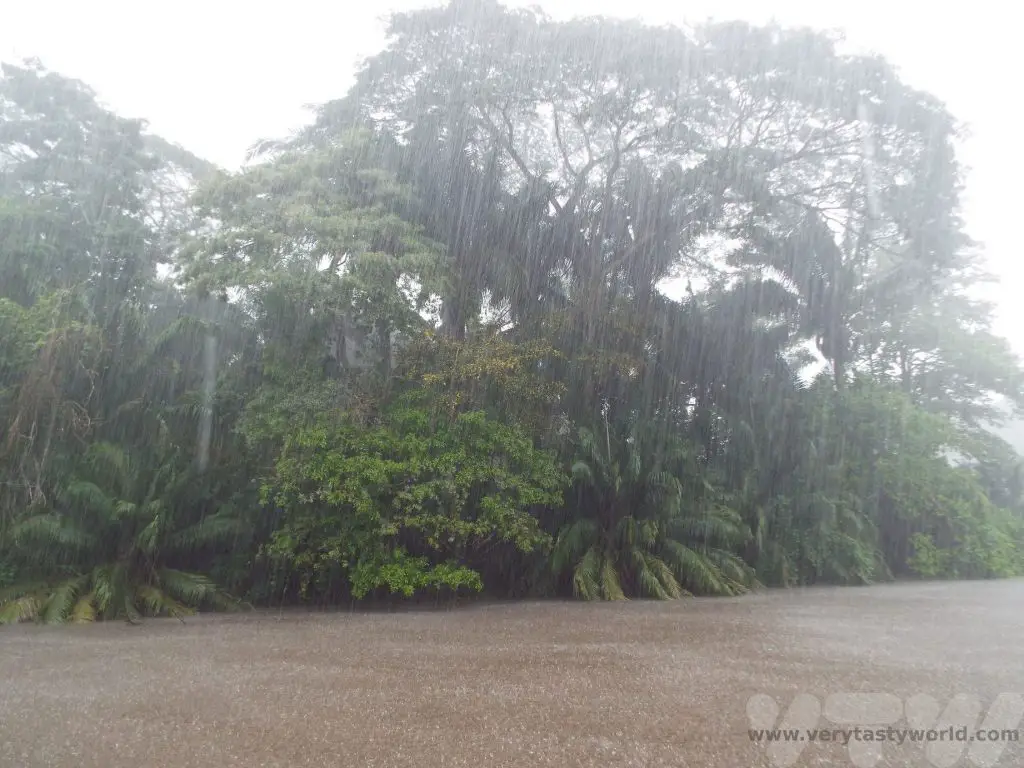
Feeling Fruity
After the boat trip through the wildlife sanctuary, lunch was provided. It was quite common at the end of most excursions we enjoyed in the country. We were treated to a fruit feast.
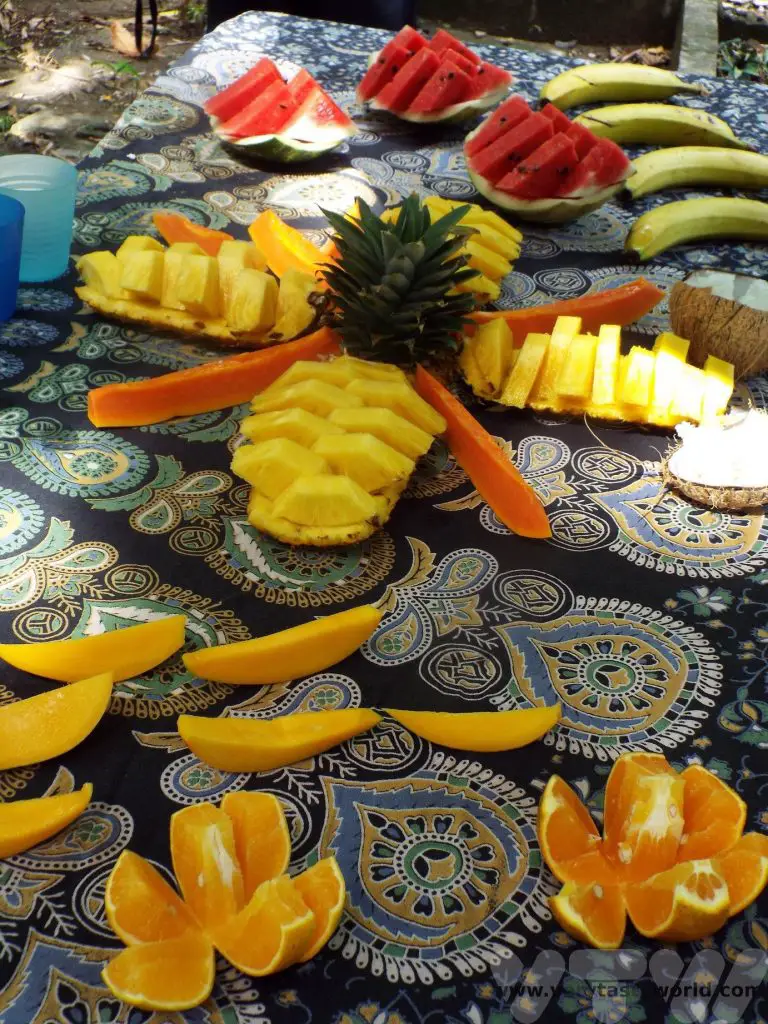
One of the wonderful things about Costa Rica is the utter deliciousness of the fruit. Around the Arenal Volcano area the soil is incredibly fertile and on our way to Caño Negro we saw vast plantations growing all sorts of fruit. In fact, the tour guide stopped the minibus a couple of times to buy some fruit from local sellers, so that he could offer us a taste. He also provided a running commentary throughout the journey telling us about the fruit industry in Costa Rica.
The pineapples were a revelation. Even the freshest pineapples we’ve ever eaten in the UK (often from Costa Rica!) were nothing compared to the organic local fruit. Most pineapples that are grown for export are treated chemically where they are stored (they can last up to a year) and ripened after they have arrived at their destination. It is such a shame that so many pineapples are grown this way – it isn’t good for the environment and the fruit’s flavour isn’t as good as it could be. Compare that to an organic pineapple and the taste is completely different. The local fruit had a really rich vibrant flavour, both sweet and tart.
The pineapple is actually a flowering plant. Only one flower grows each year per plant and it is only possible to gain a pineapple in three successive years. The first year’s is the biggest and these are the ones that are usually exported overseas. The second year’s pineapple is smaller and would generally be used for the local market or taken to a processing factory where it would likely end up in a tin. The third year’s fruit will be very small and will become juice.
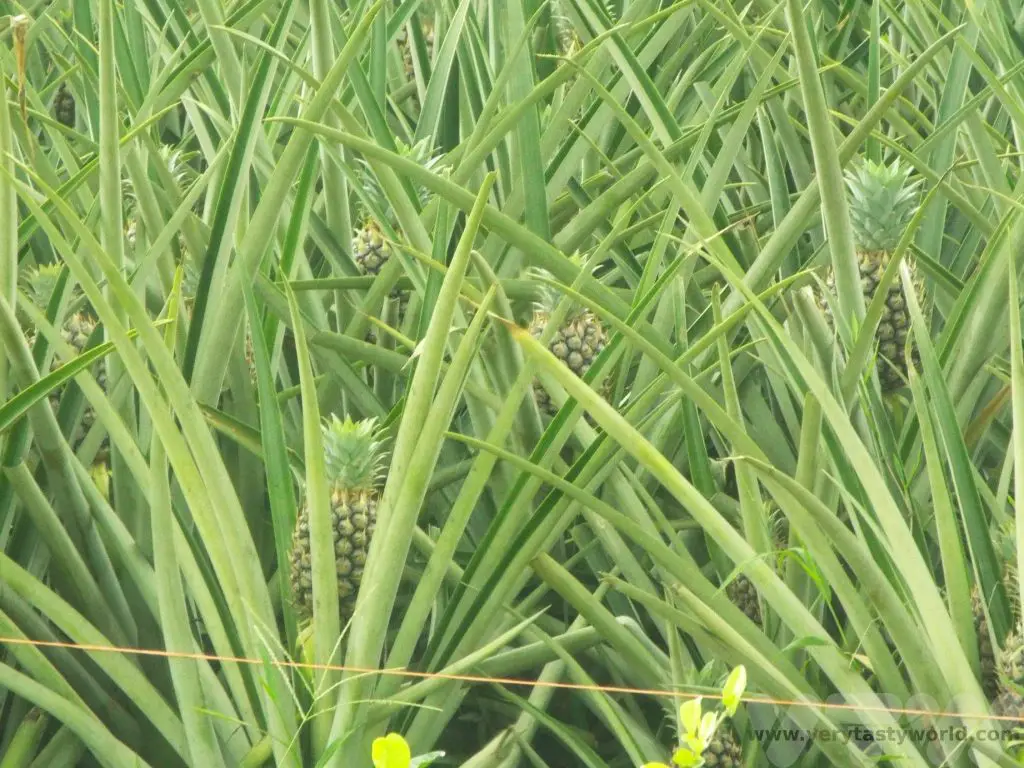
There’s a perception in many western countries that oranges should actually be orange. But many oranges aren’t as luridly orange as those classic fruit from Seville. The oranges in Costa Rica might not look the part but taste just fine. Bananas are another fruity staple of Costa Rica and plantations can be seen all over the country.
Many of the fruits grown in the country are familiar as they are exported around the world. However, there are some more unusual offerings which we were delighted to discover. Rambutan, also known as Mamon Chino, which apparently translates to Chinese Sucker, is a bizarre looking tropical fruit. You have to peel the pretty and colourful soft spikes to reveal the clear coloured flesh. They look similar to grapes or lychees and have a comparable texture although the flavour is very different, sweet and slightly sour, and nowhere near as perfumed as a lychee. There’s a seed inside that you need to be aware of – don’t bite too hard!
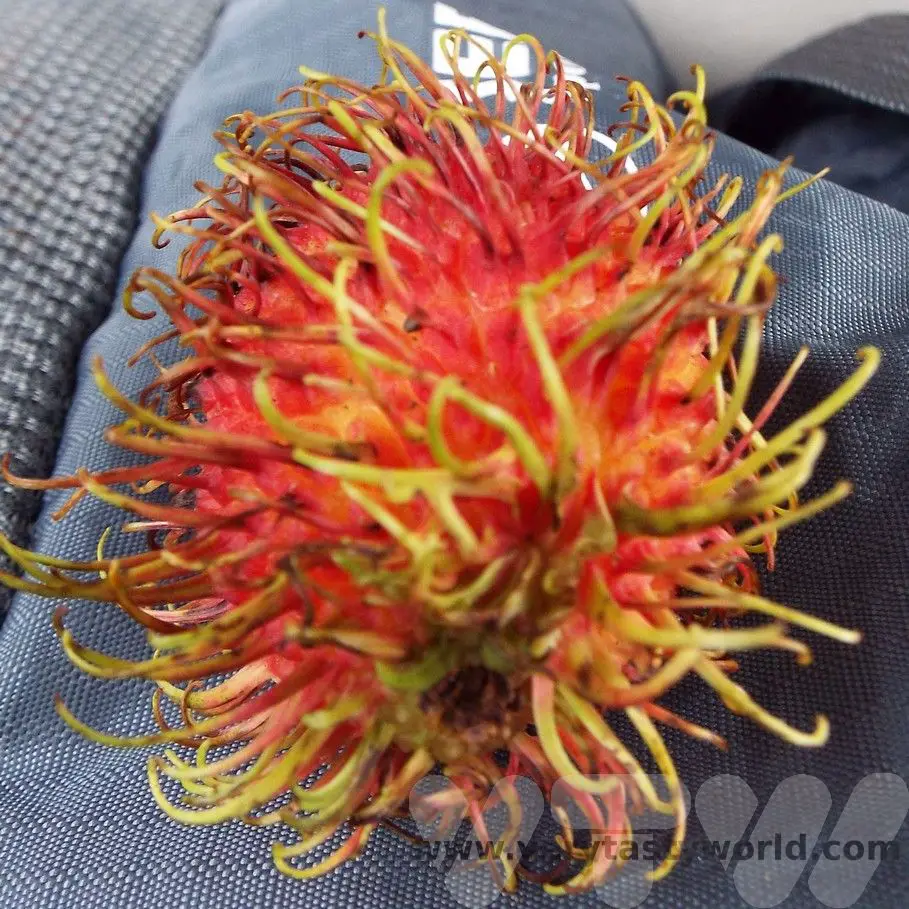
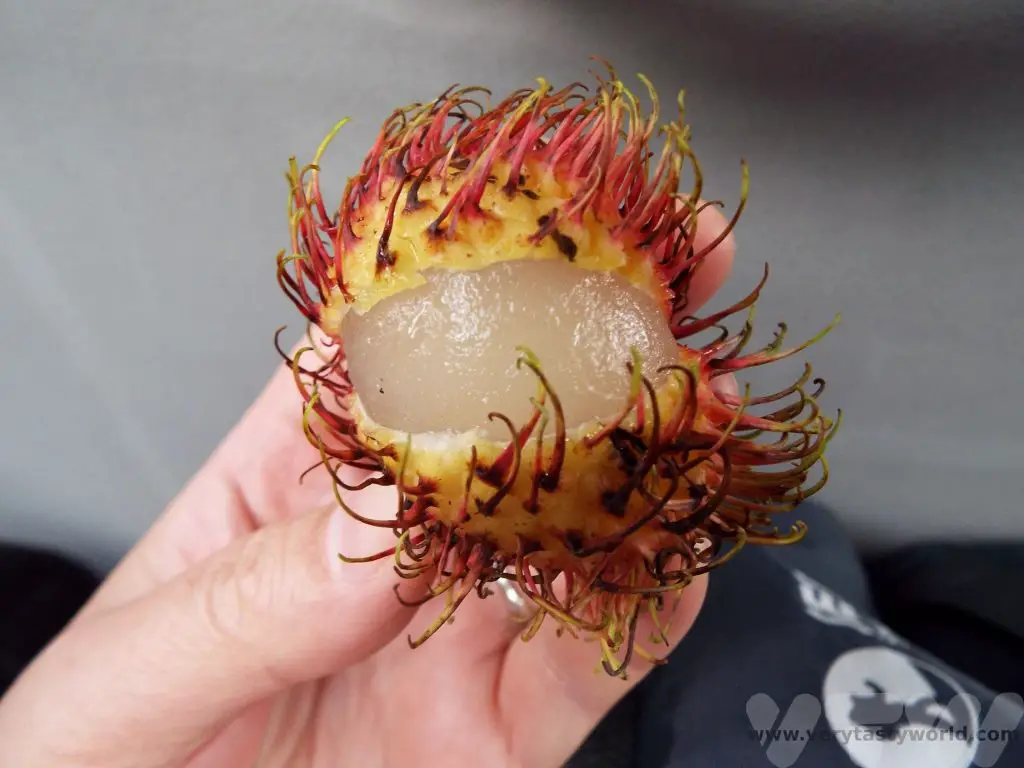
Noni is smelly and tastes bitter but apparently has health benefits. It’s not a fruit you would eat for pleasure. Some people mix it with other fruits in smoothies to disguise its flavour.
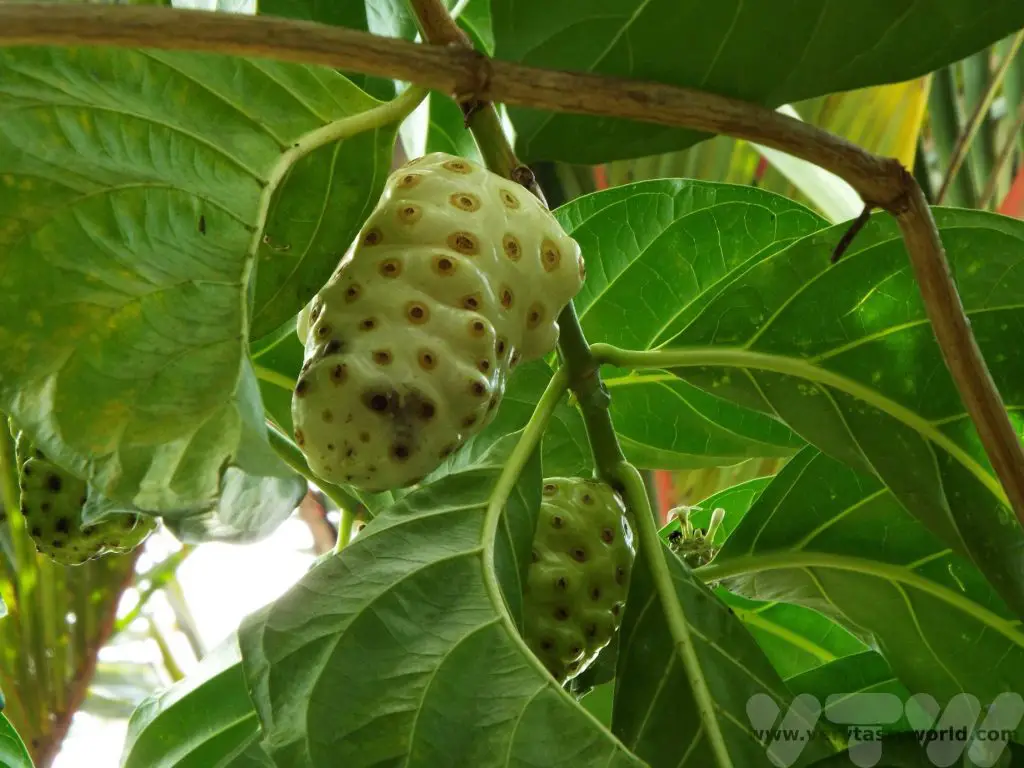
In Costa Rica you are guaranteed to enjoy at least ten of your ‘five a day’.
Related Posts You May Enjoy

- Best Time To Visit Machu Picchu 2024 Update
- A 2 Week Patagonia Itinerary
- Day of the Dead in Campeche
- A Galapagos Land Based Itinerary
- RECIPE: How to Make Costa Rica’s Gallo Pinto
- A Tasty Puebla Food Tour
- Costa Rica Wildlife Sanctuary – Caño Negro
- Visit Torres del Paine National Park in Patagonia
- Atacama Desert Itinerary
Recipe: Japanese Simmered Pork Belly – Buta no Kakuni
Japanese simmered pork belly, known as buta no kakuni, is a rich, indulgent dish that is sweet, savoury, sticky and utterly sumptuous. Pork belly is a really fatty cut of meat but fat means flavour and the process of cooking the pork for a long time ensures that a lot of the fat will melt away. Any fat that remains is soft and juicy.
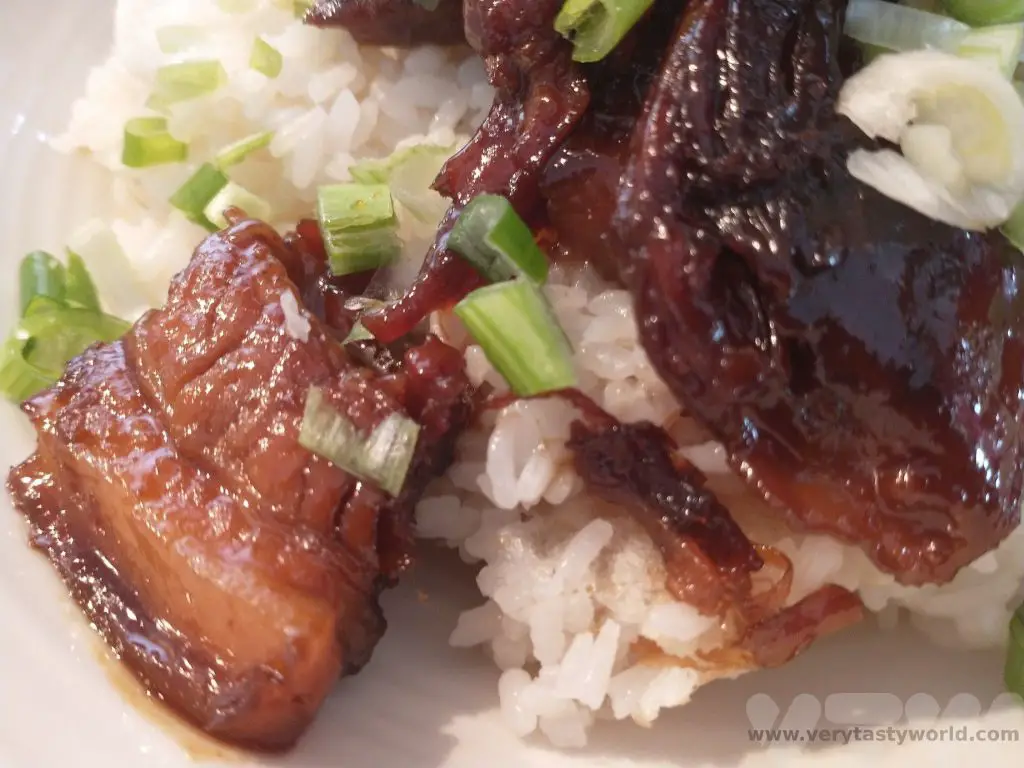
In Japanese, buta means pork and kakuni derives from two longer words: kaku- to cut into cubes and ni – simmer.
It is traditional to serve kakuni with a drop of Japanese mustard called karashi (辛子 or からし). Karashi is a bit darker yellow than most other mustard. It does not really have much acidity in it (unlike other mustards) and very hot. It is perhaps closest to hot English mustard, which is a good substitute.
How to Make Buta No Kakuni Japanese Simmered Pork Belly (Serves 2)
Ingredients
Portion of pork belly per person (allow around 150-200g per person depending on how hungry you are)
Water
Stock cube – dashi stock if possible or you can make your own
2 spring onions, sliced into 2-3cm chunks plus another for garnish
2 inches of ginger, peeled and cut into strips
16 tbs (1 cup) of water
4 tbs (1/4 cup) soy sauce
4 tbs (1/4 cup) cooking sake (if you can’t get sake, white wine will be a good substitute)
4 tbs (1/4 cup) caster sugar
4 tbs (1/4 cup) mirin (if you can’t get mirin, add a little more sake and sugar)
Generous splash of rice vinegar (we like this to counterbalance some of the sweetness of the dish)
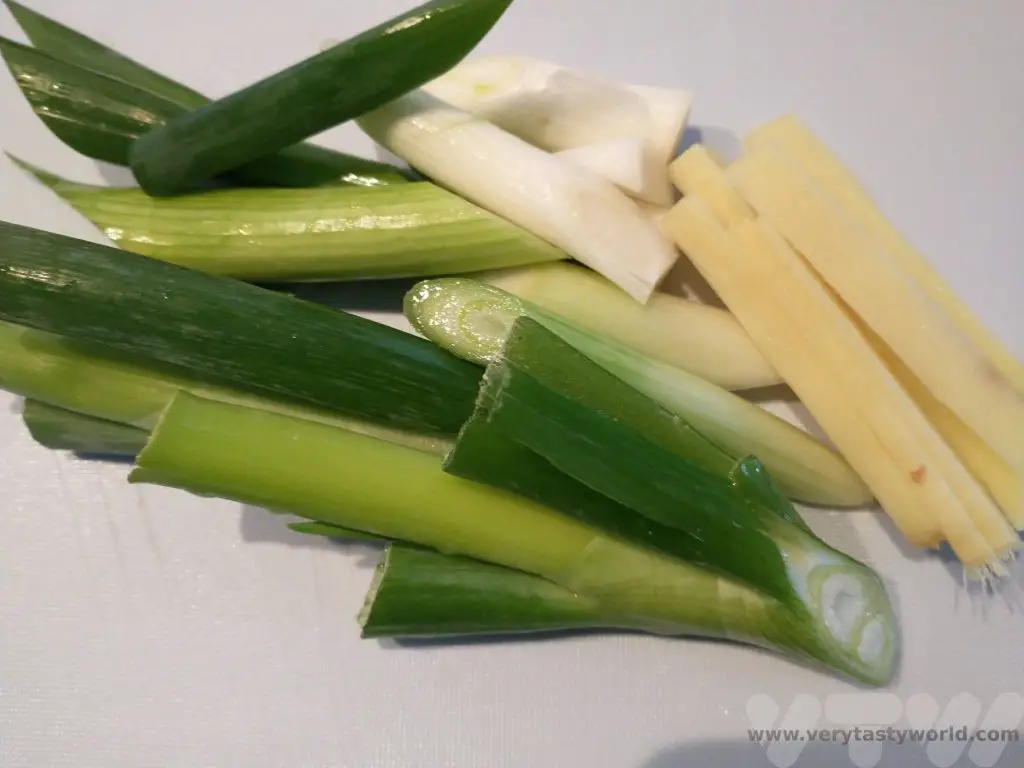
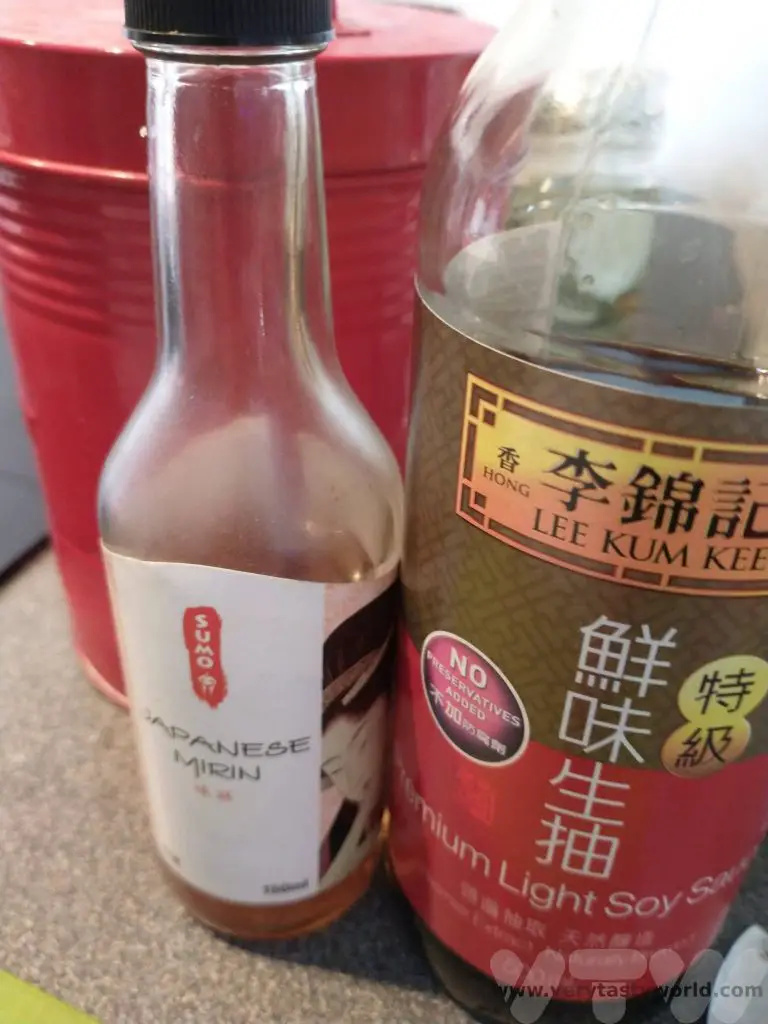
Method
Place the pork belly in a frying pan and sear on both sides for a couple of minutes.
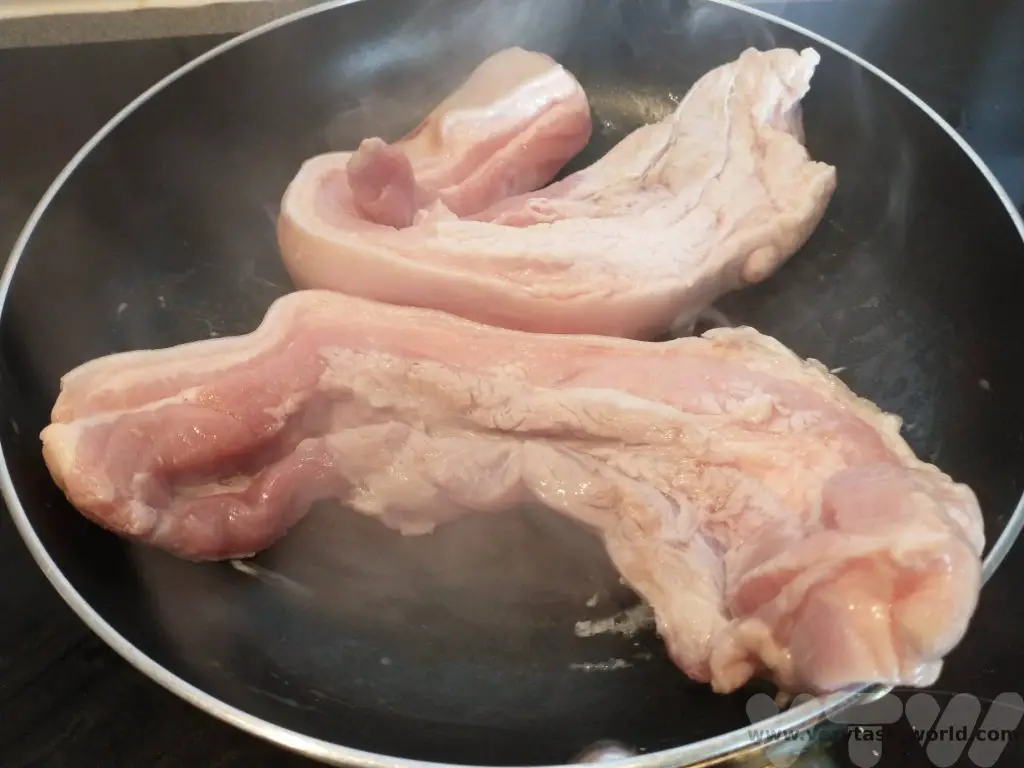
Place the pork belly in a pot and cover with water. Add the stock cube, spring onion and ginger. Turn on the heat and bring the water up to a simmer. Simmer the pork for 2 hours or until nice and tender. Alternatively, you can do as we do and use a pressure cooker. Just prepare the pork as above and cook at pressure for 40 minutes.
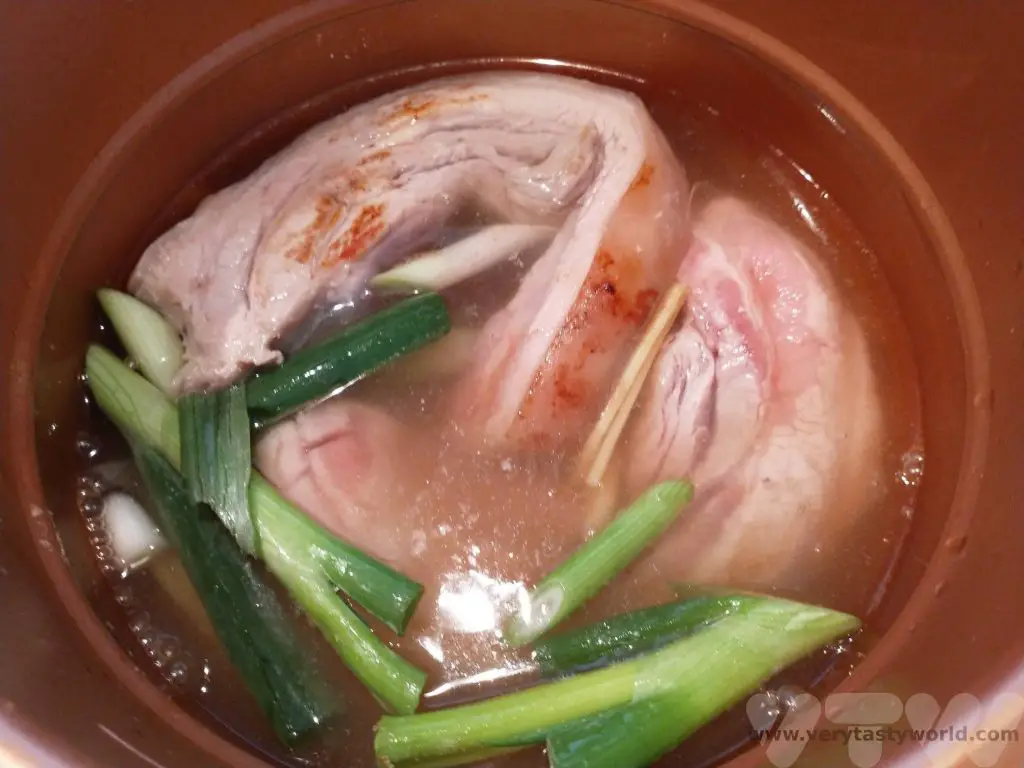
When the pork comes out it should be wonderfully soft and close to falling apart (but not actually falling apart). Cut the pork into chunks – about 2cm length. We also decided to cut off the rind at this stage.
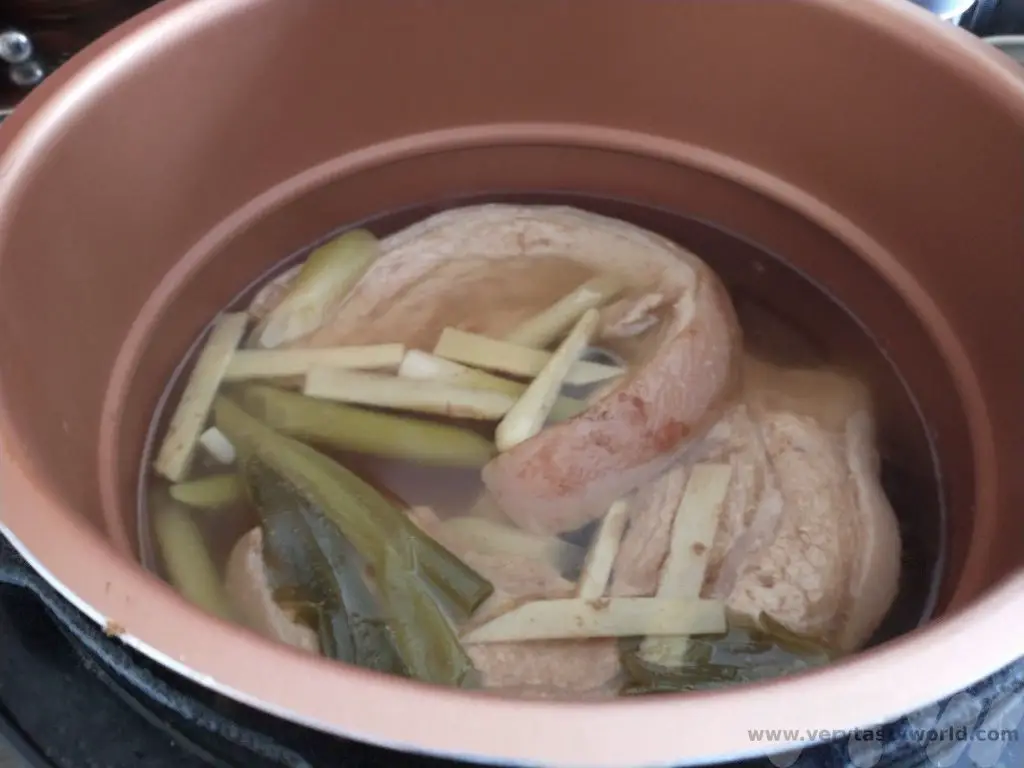
Don’t forget to keep the stock – it will make a wonderful base for ramen noodles or soup. You can pop it into the freezer if you’re not going to use it immediately.
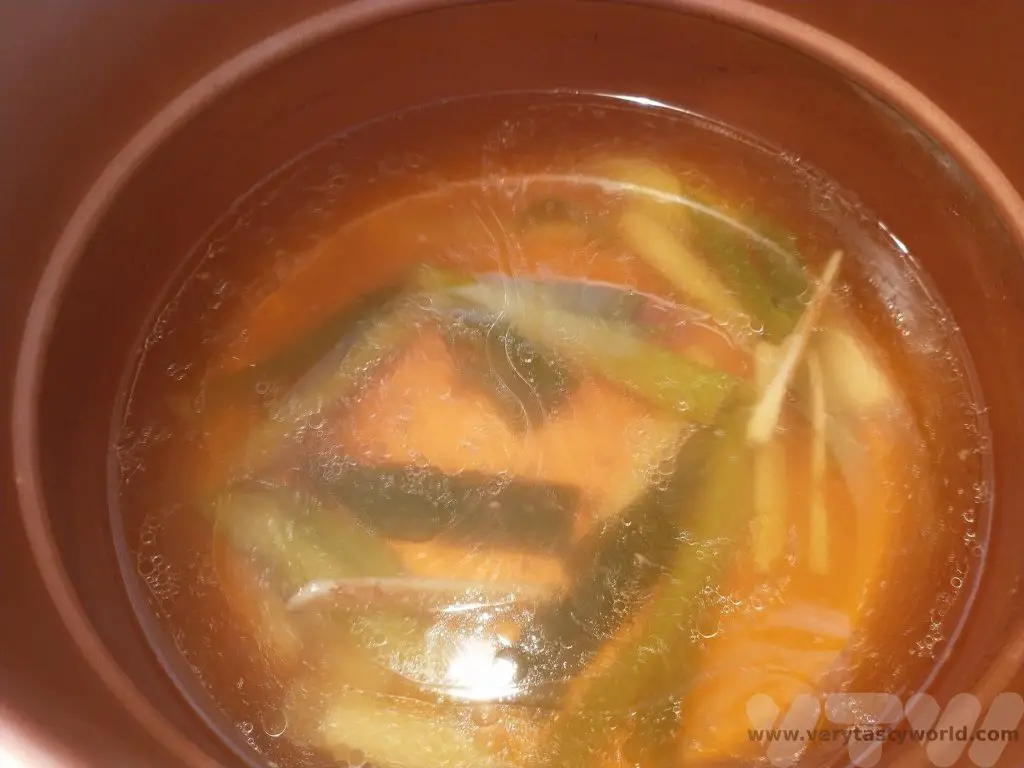
Put the water, soy sauce, sake (or wine), mirin and sugar into a pan and bring to the boil.
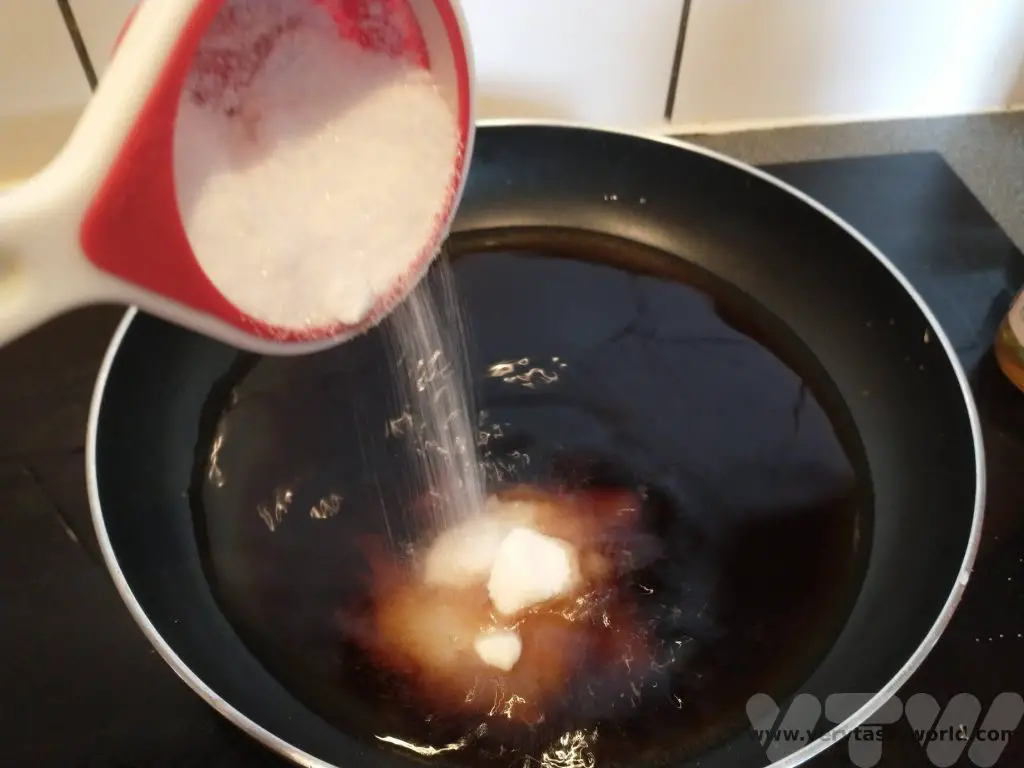
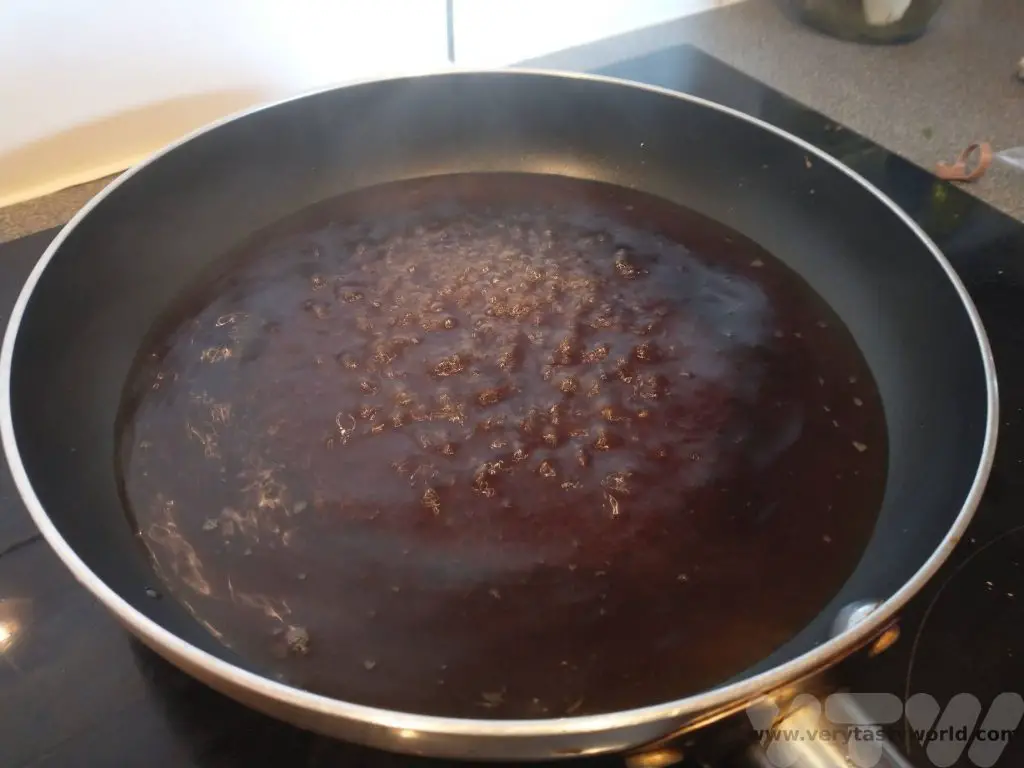
Carefully place the pork chunks into the pan and press down so that the sauce completely covers them.
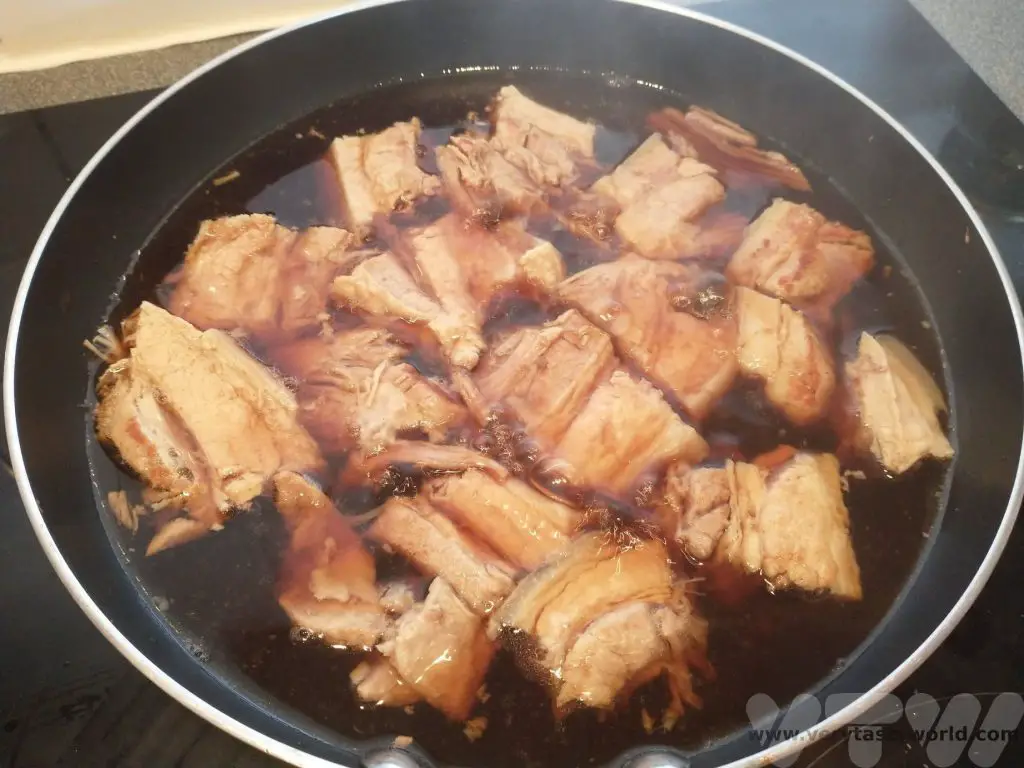
(In retrospect we should have put the pork into a deeper pan – a casserole dish – because the sauce did splutter a lot and because there was sugar in it, it stuck to our hob which made clearing up a bit of a nightmare!)
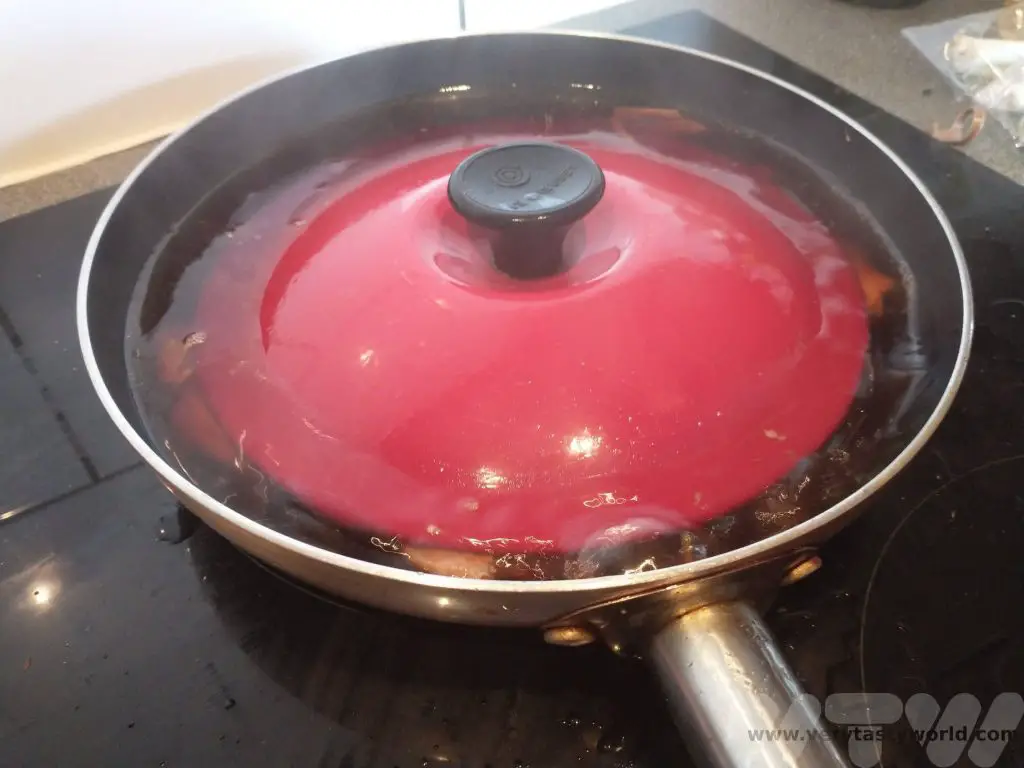
Reduce the sauce until it has almost become a paste – it will have coated the pork and caramelised on the underside. It will look glossy and luscious.
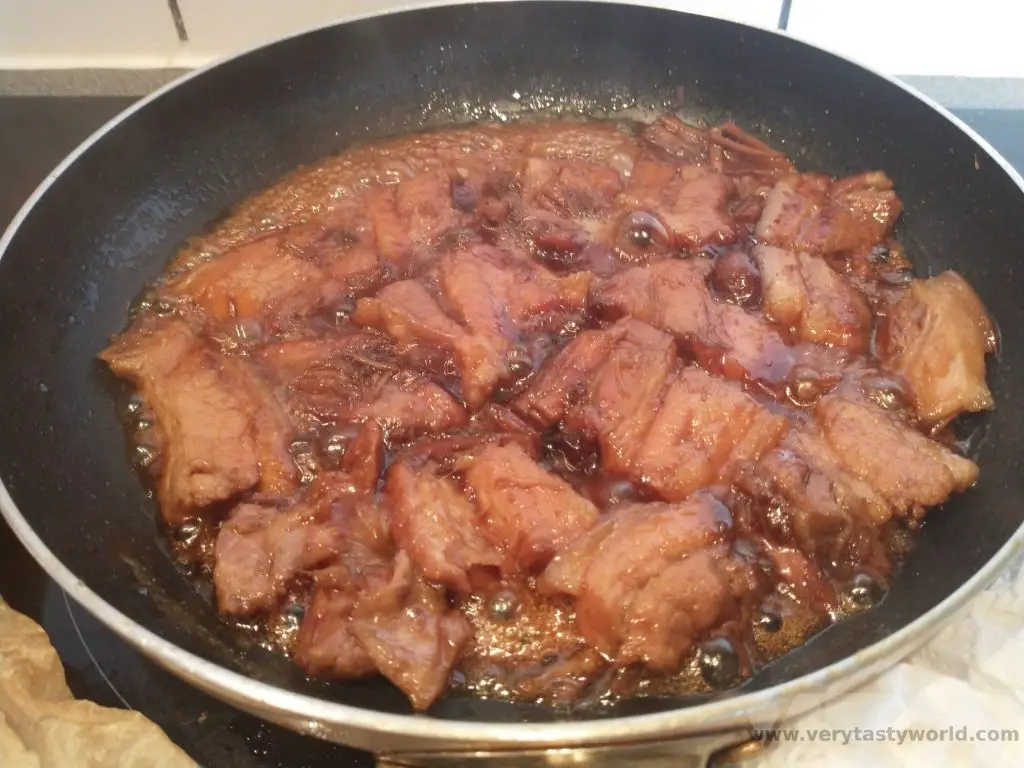
Serve atop plain white rice garnished with chopped spring onion. It is often accompanied with a splodge of karashi. We like adding some pickled ginger as well.


- RECIPE Oyakodon Donburi
- Zero Waste Recipes Before Your Holiday
- RECIPE: Vegetable Biryani Tamil Nadu Style
- RECIPE: Vegan Wild Garlic Pesto
- Recipe: Venetian Pasta Sauce
- RECIPE: Biryani Raita Recipe
- RECIPE: How to Make Costa Rica’s Gallo Pinto
- Recipe: Japanese Simmered Pork Belly – Buta no Kakuni
- RECIPE: How to Make Umeboshi

- Recipe: Simmered Shiitake Mushrooms
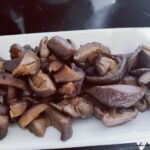
- How to Use Public Transport in Japan

- RECIPE Oyakodon Donburi

- Planning a Trip to Japan
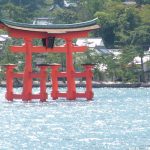
- The Makanai: Cooking for the Maiko House

- Setsubun Food – Bean Throwing Day

- The Gassho Farmhouses of Rural Japan
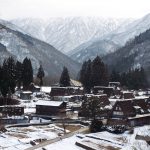
- Recipe: Japanese Simmered Pork Belly – Buta no Kakuni

- RECIPE: How to Make Umeboshi

A Chiang Mai Tour in Northern Thailand
Chiang Mai is the largest city in northern Thailand and is a lovely place with a very laid back vibe. There are plenty of things to see and these aren’t just confined to the city itself. There are loads of activities to suit all interests – whether cultural or natural – both around town and into the wider countryside. It’s definitely worth spending time exploring this lovely city and surrounds, whether on an organised Chiang Mai tour or exploring independently. We spent five days in and around the region and combined our own exploration with some guided walks which were great for understanding the history of this delightful city.
An Old City With Walls and A Moat
Chiang Mai was founded by the Lanna King, Mangrai, in 1296. The Lanna people were from Northern Thailand and the name translates to ‘Kingdom of a Million Rice Fields.’ Mangrai had established the city of Chiang Rai in 1262 as the capital of his kingdom and later, following both friendship pacts and wars with other local kingdoms, he moved further south. Due to its location Chiang Mai was vulnerable to invasion from the Taungoo Dynasty of the Bamar People (from Myanmar) and the Mongol empire. As a result it was heavily fortified with both a moat and a high city wall, which remain to this day. The old city is surrounded by an extremely pretty walled canal with four gates.
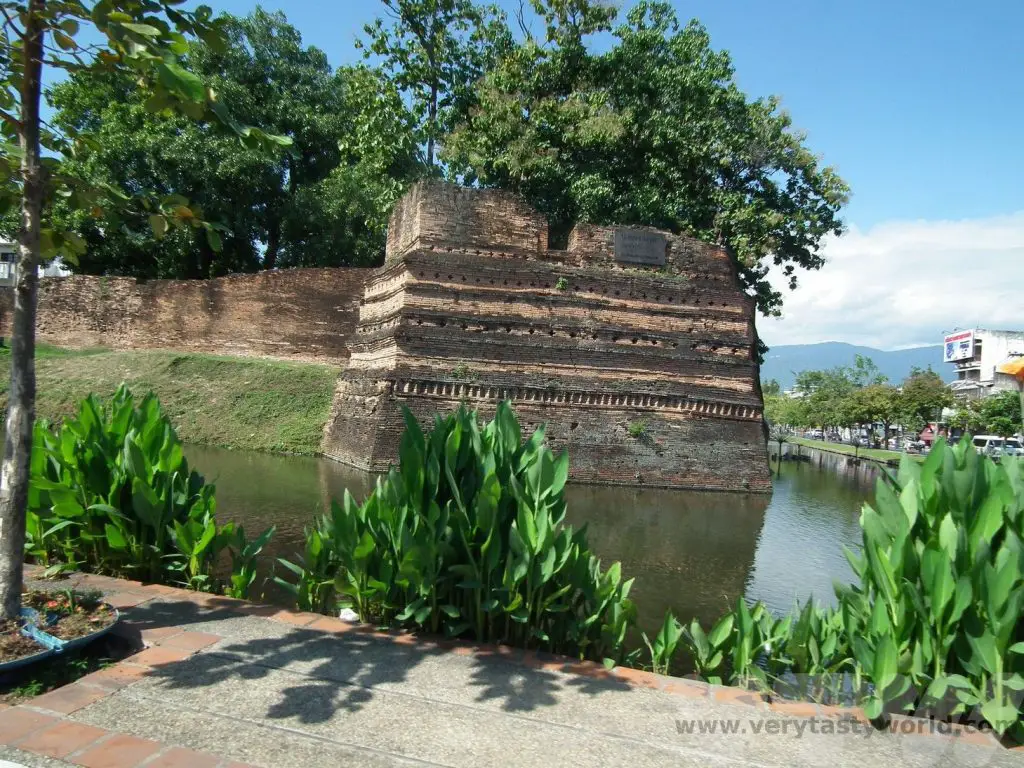
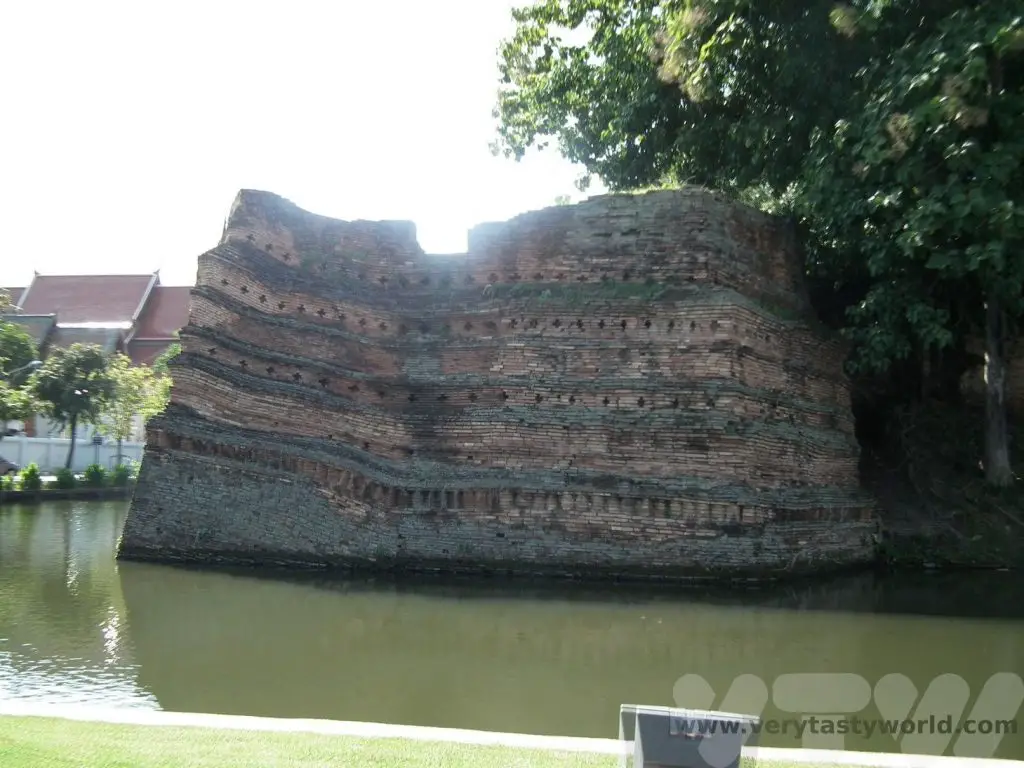
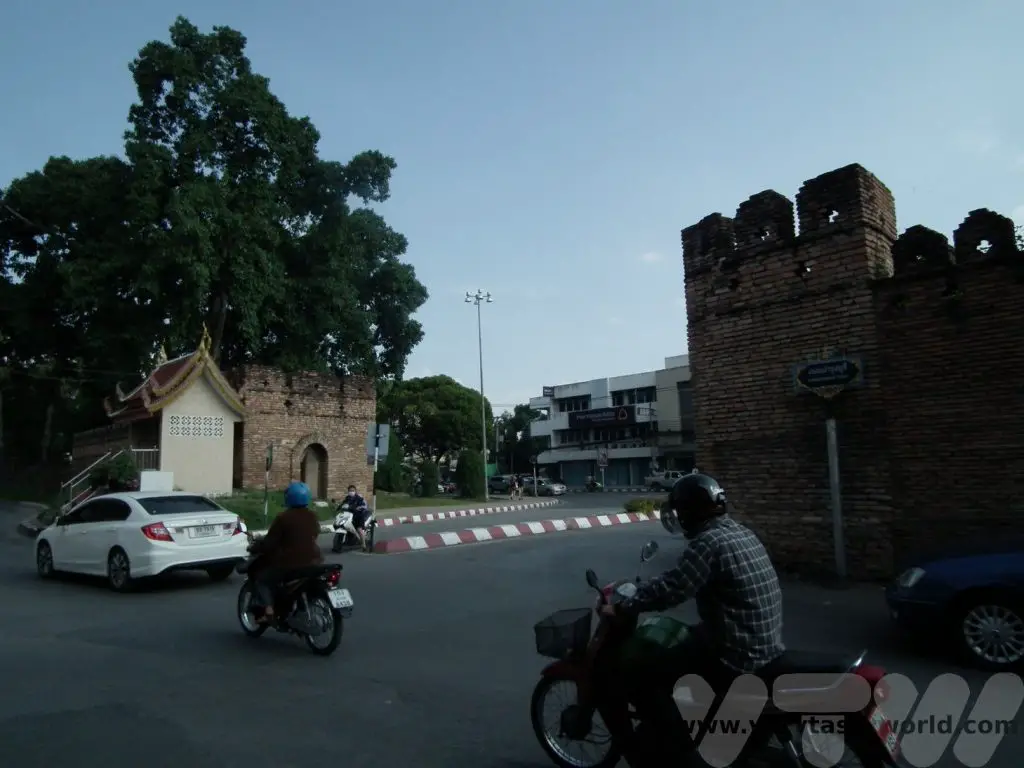
Old Town Chiang Mai Temples
Chiang Mai has well over a hundred temples and it is a pleasure just wandering through the city to discover the many gems that the city to offer.
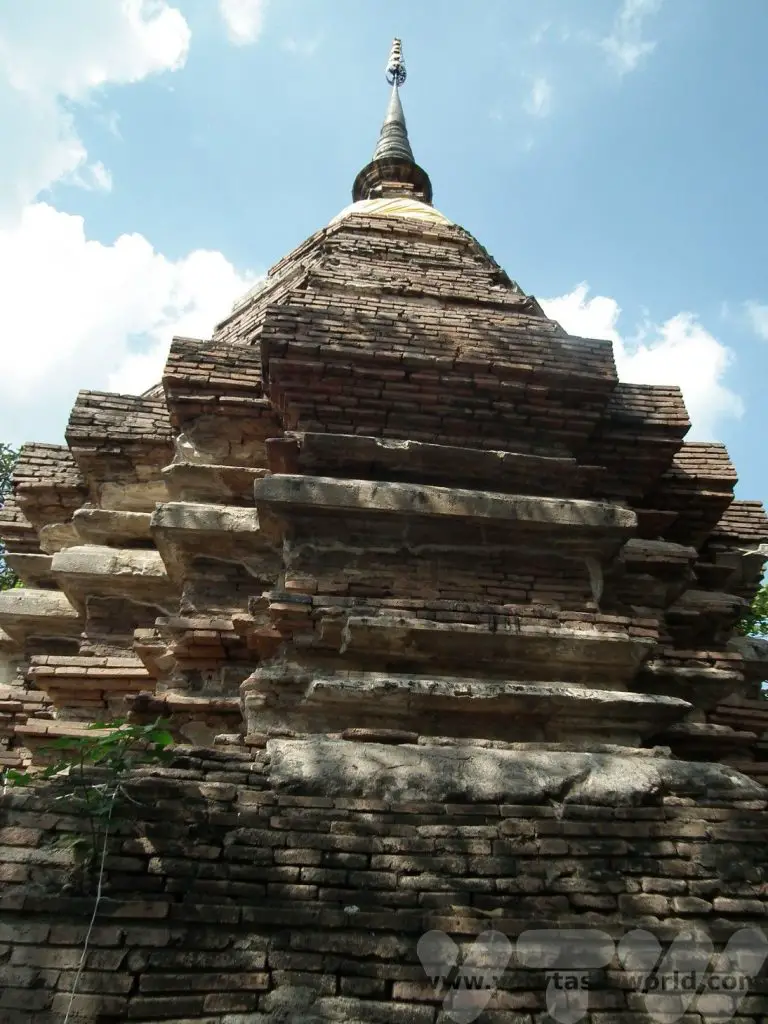
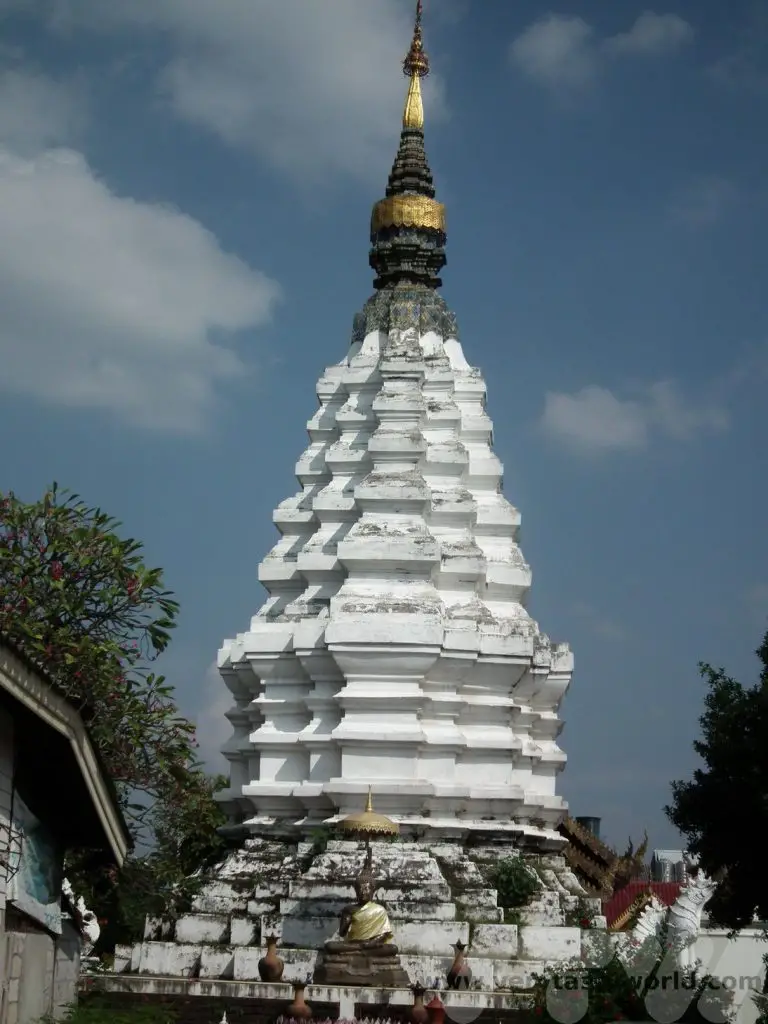
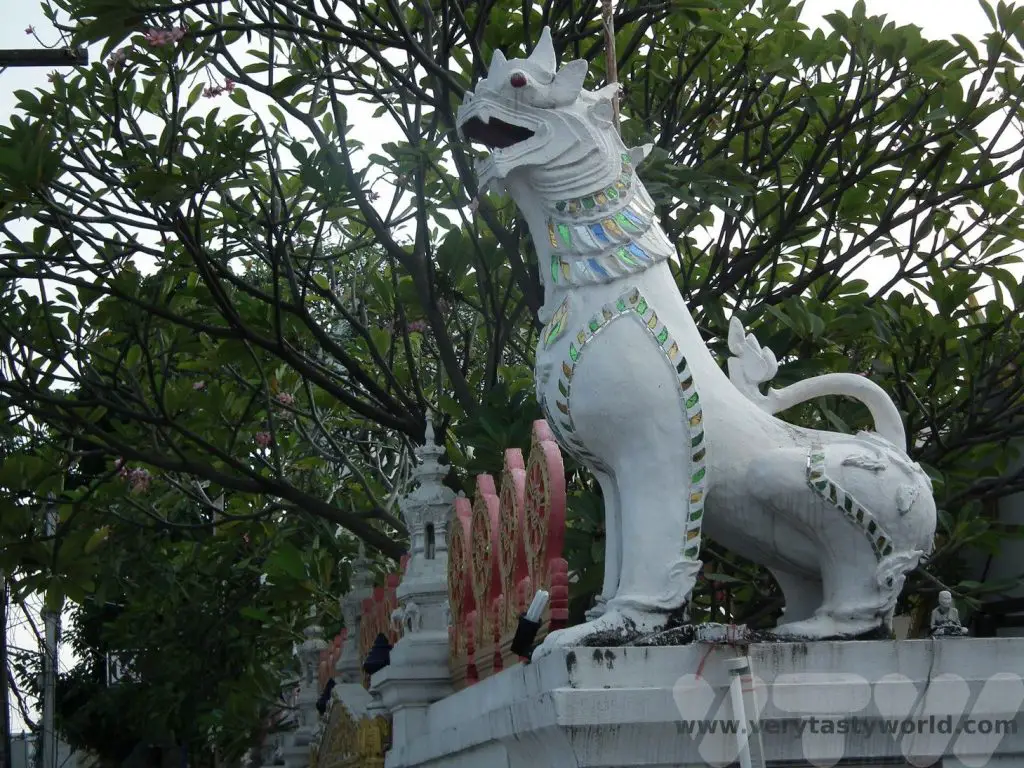
Wat Chiang Man
Wat Chiang Man is the city’s oldest temple, located by the north east corner of the walled old city. It was constructed at the behest of King Mengrai.
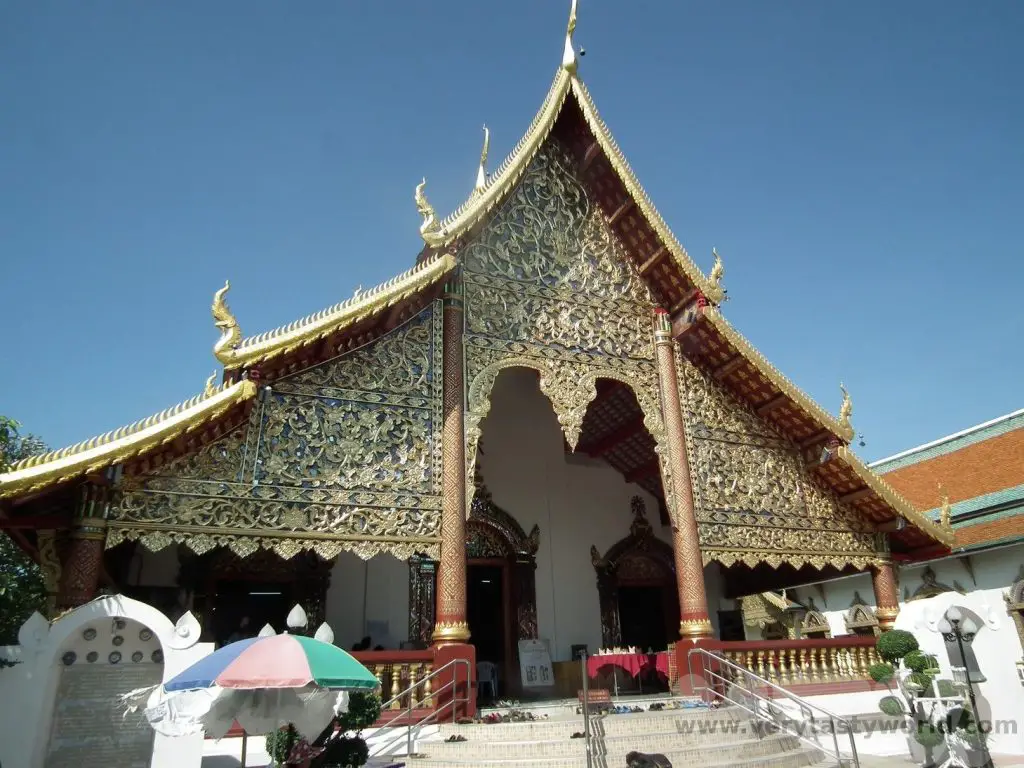
The wihan of a temple is the assembly hall and there are two at Wat Chiang Man. Both contain very old and highly revered Buddhas.
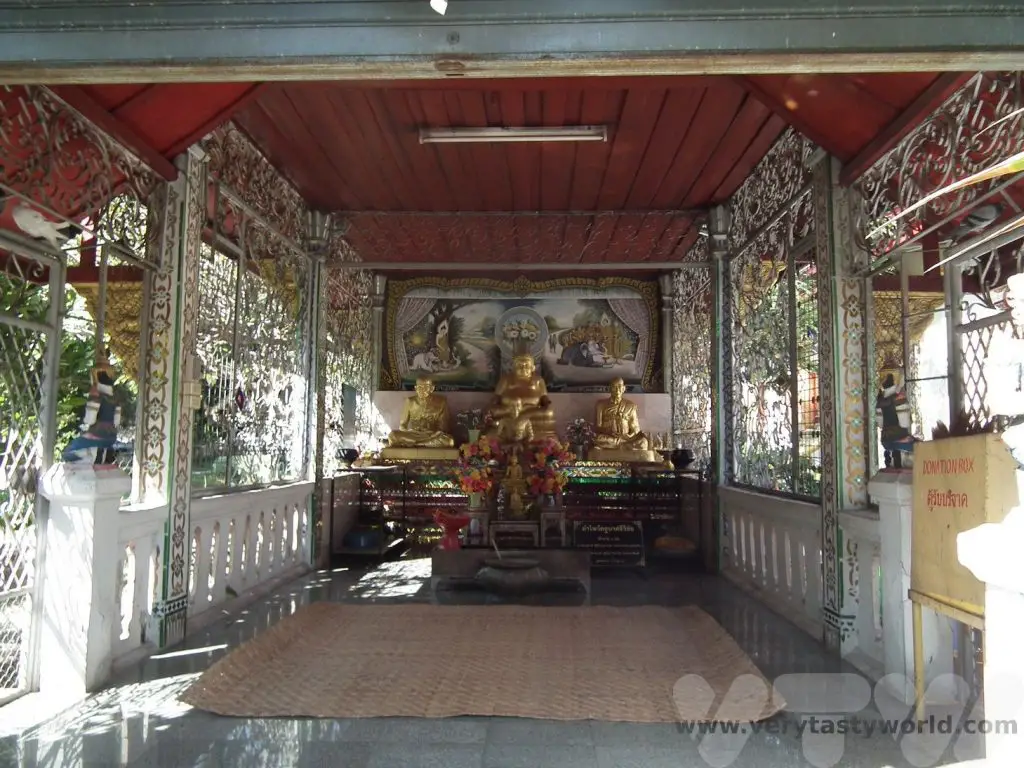
The chedi, also known as a stupa, is traditionally the oldest part of a temple. Wat Chiang Man has an elephant chedi, called Chedi Chang Lom, where fifteen stone elephants support the golden relic chamber.
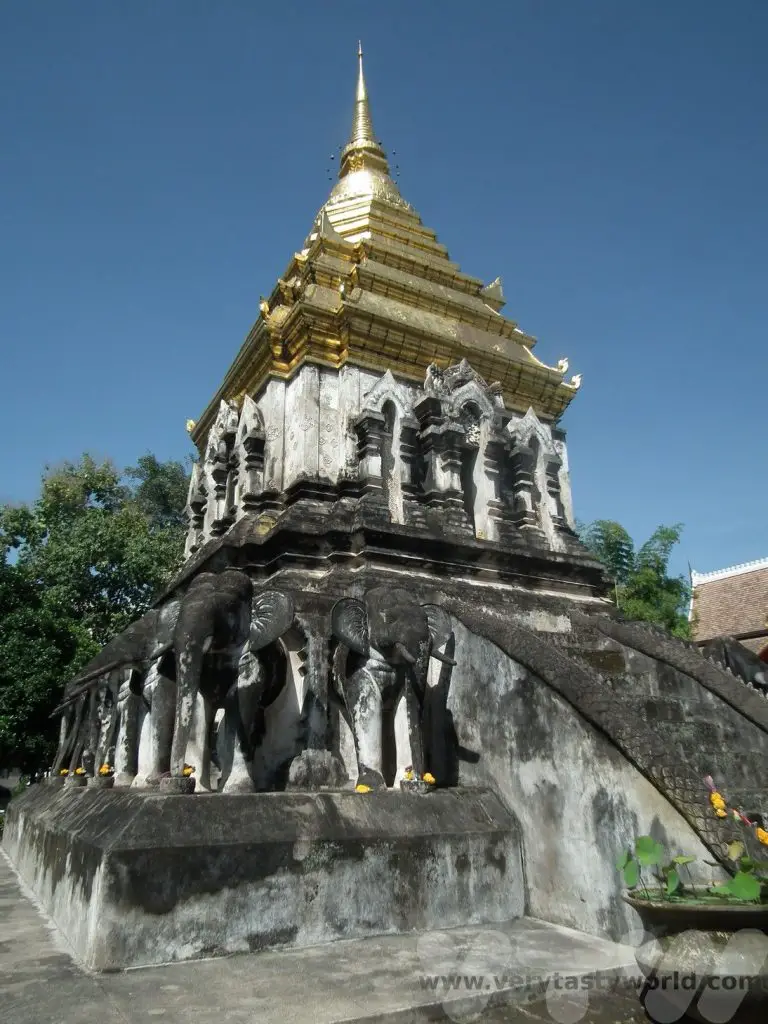
Wat Phra Singh
Another important temple, Wat Phra Singh, was constructed in 1345 by King Phayu, the fifth Mangrai king, who wanted to build a chedi for his late father’s ashes. It was enjoying a face-lift when we visited, so we didn’t see it in its full glory.

Wat Phra Singh Wihan Lai Kham was constructed to house the precious Phra Buddha Singh statue.
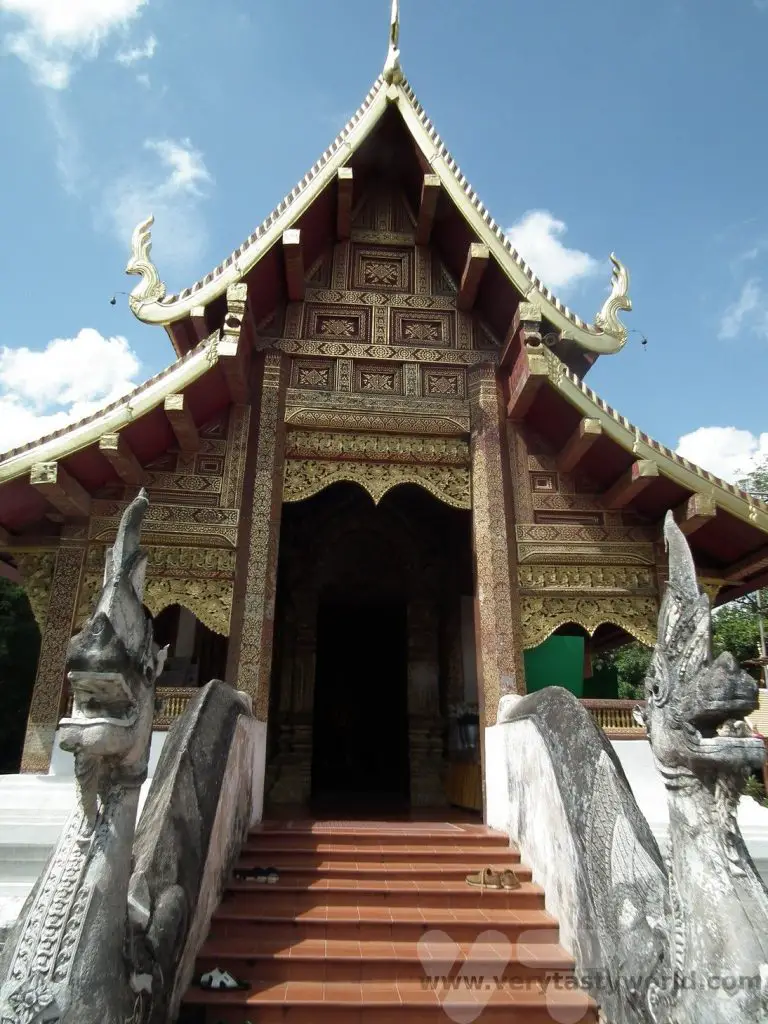
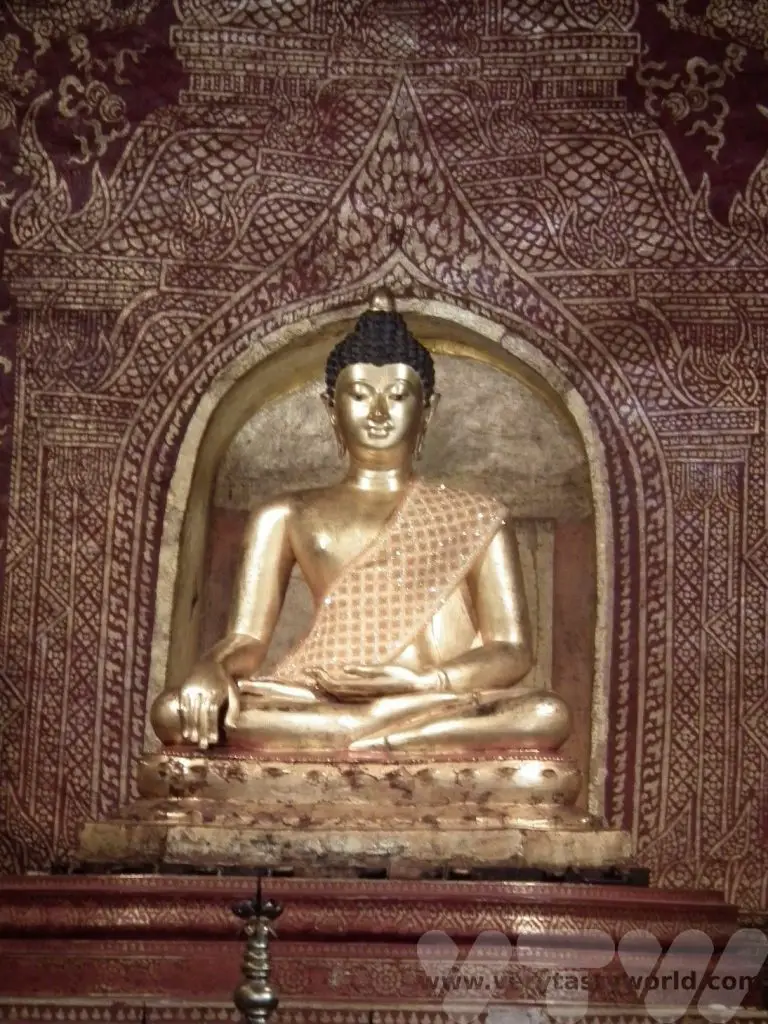
The interior also contains some fascinating murals.


A common – and striking – characteristic of many temples in Thailand are the naga – semi-divine creatures that are a cross between a human and serpent. These are the guardians of the temple – they may look dramatic and a scary but their purpose is generally thought to be protective. It wouldn’t be appropriate to have a holy place guarded by demons.
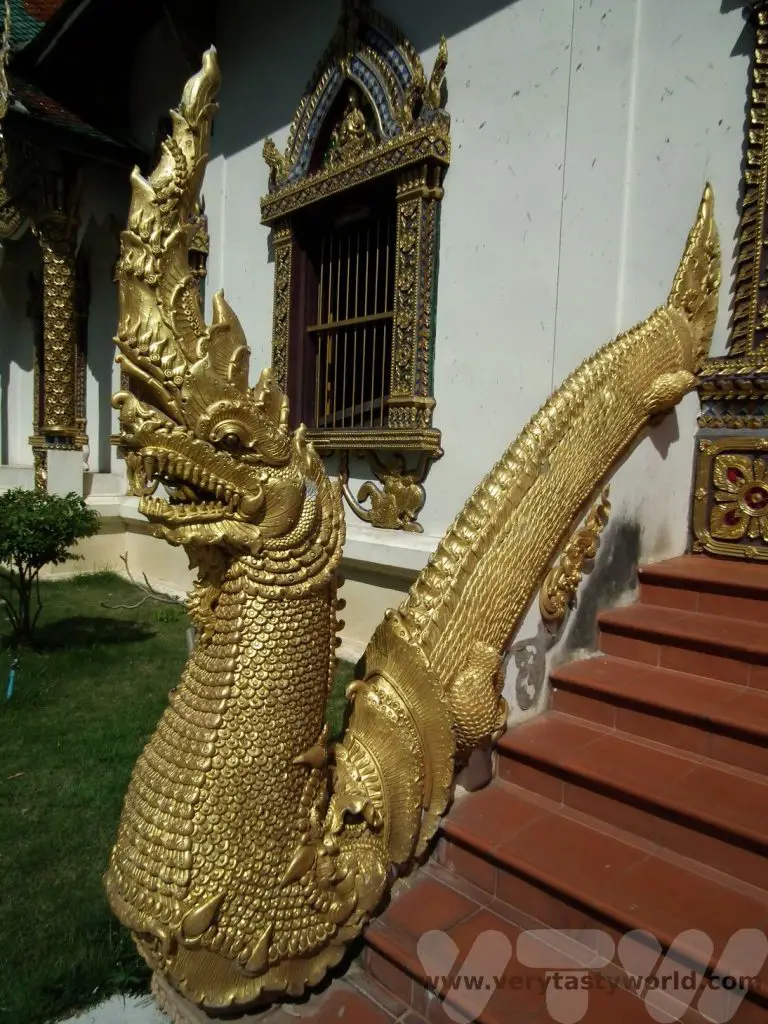
The roofs of many of the temple buildings are beautiful- highly decorative and elaborate.
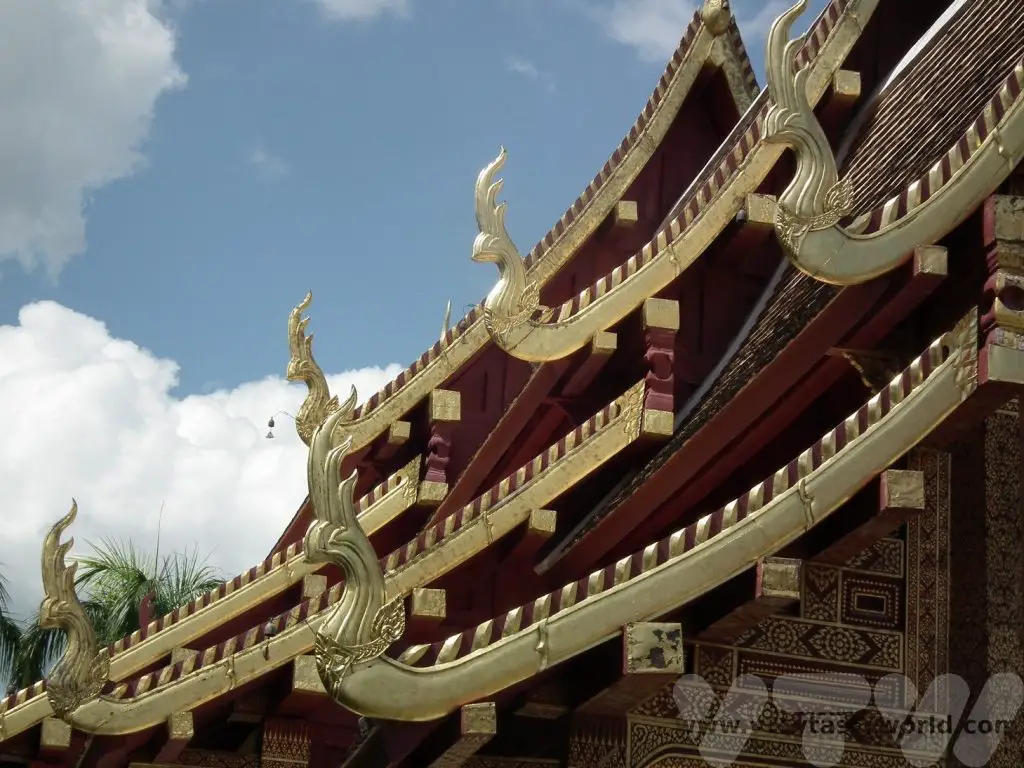
Chiang Mai Cultural Centre
Slightly out of town on the Prapoklao Road is the Chiang Mai Arts and Cultural Centre which used to be the royal hall. It runs evenings showcasing northern Thai food and culture. You can join in to enjoy a delicious meal followed by entertainment such as dancing, martial arts and traditional games.
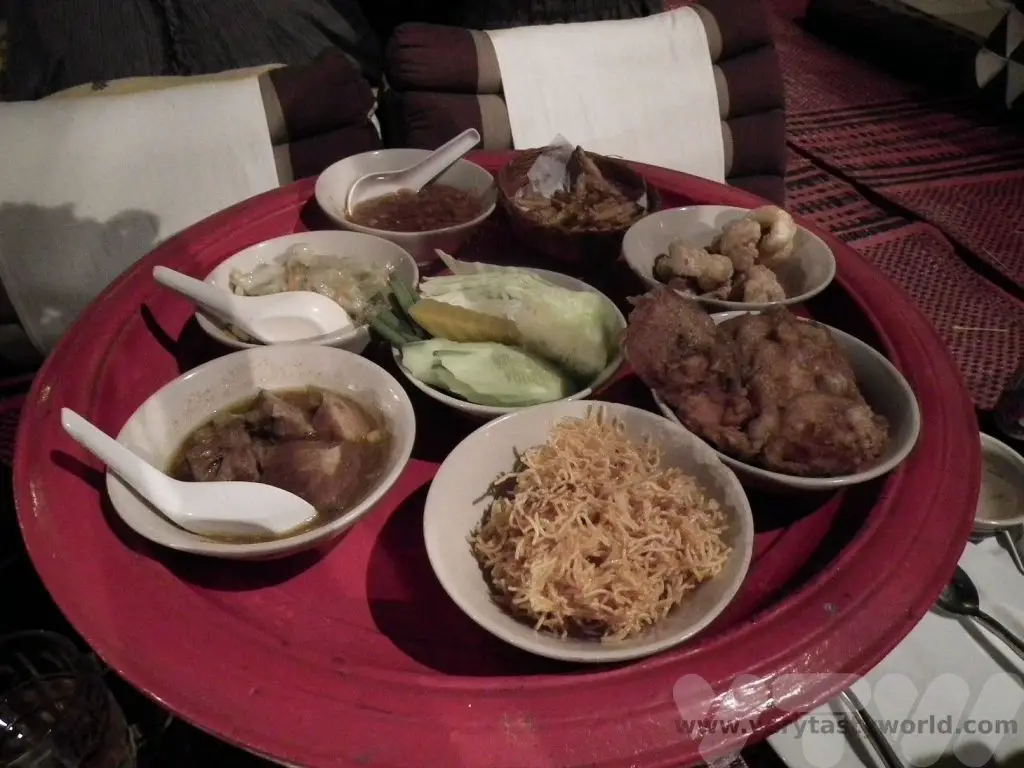
Then the entertainment started with some dancing and martial arts…
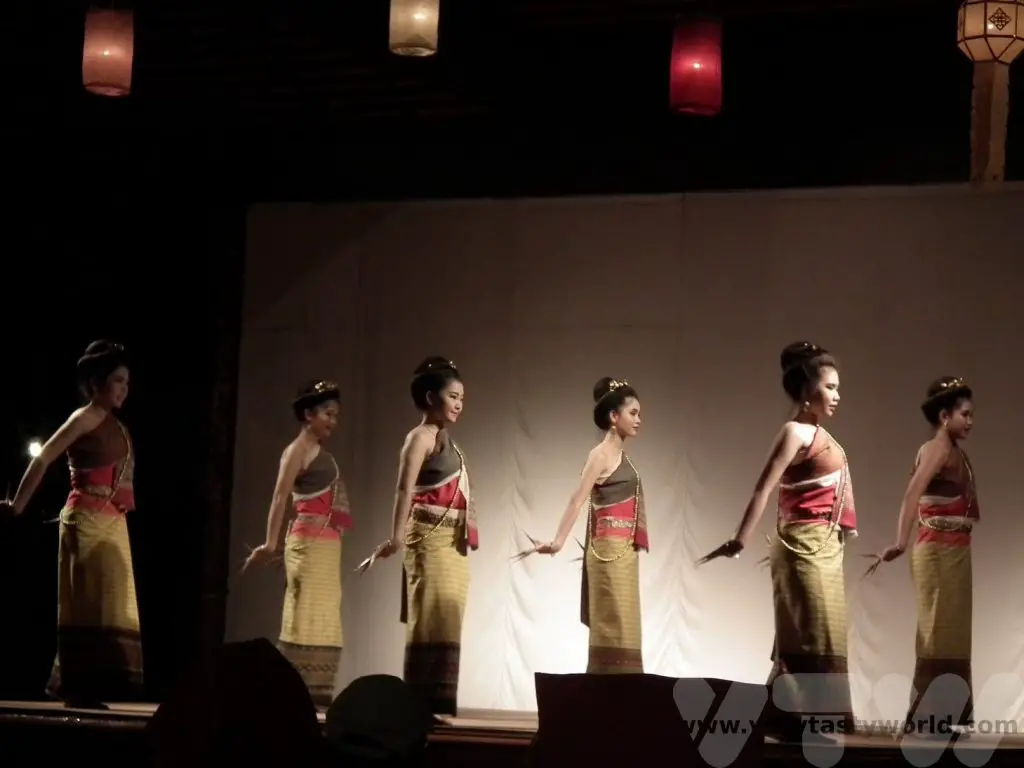
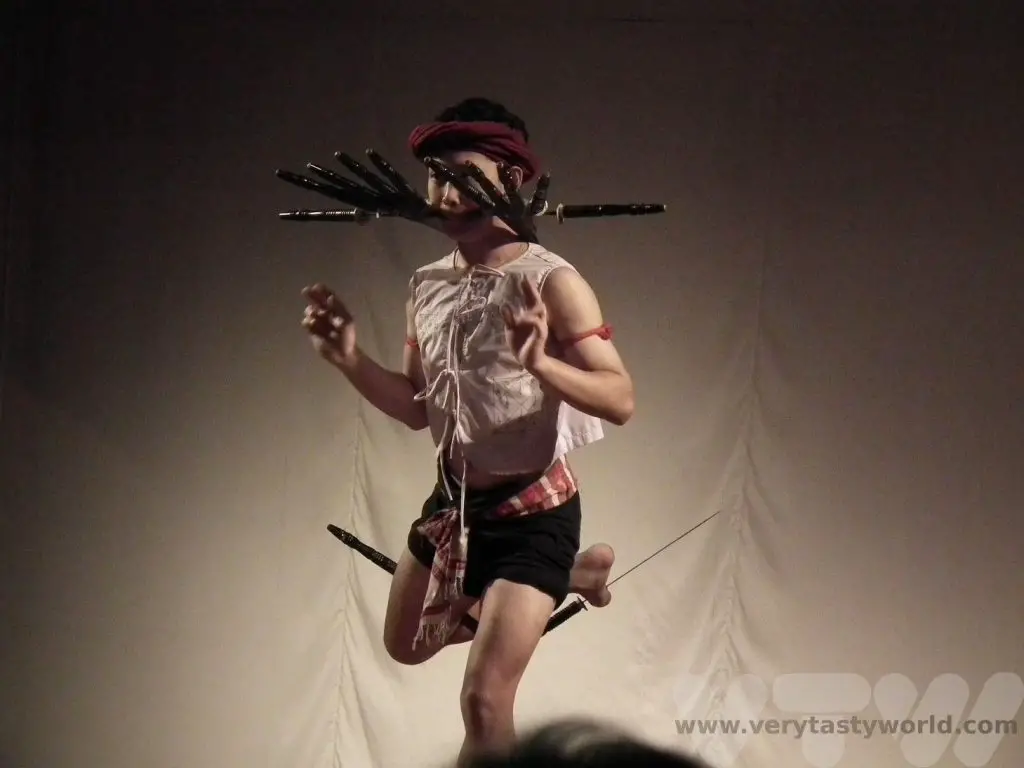
…before we moved outside to see some fire-based martial arts and a cute lion dance.
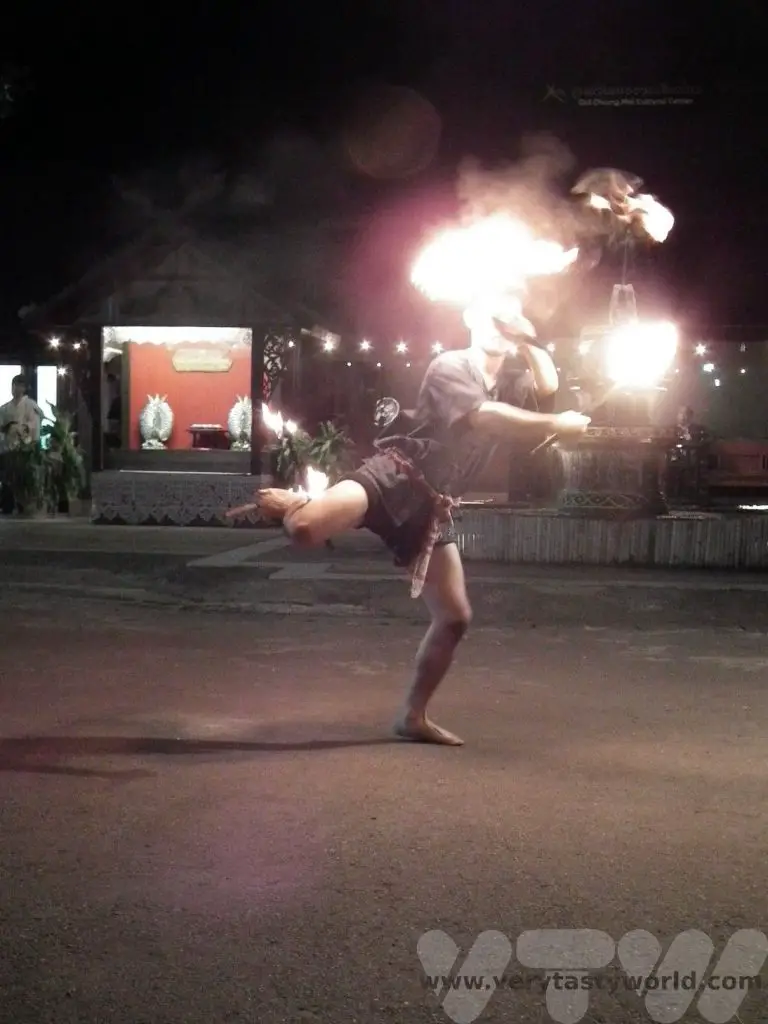
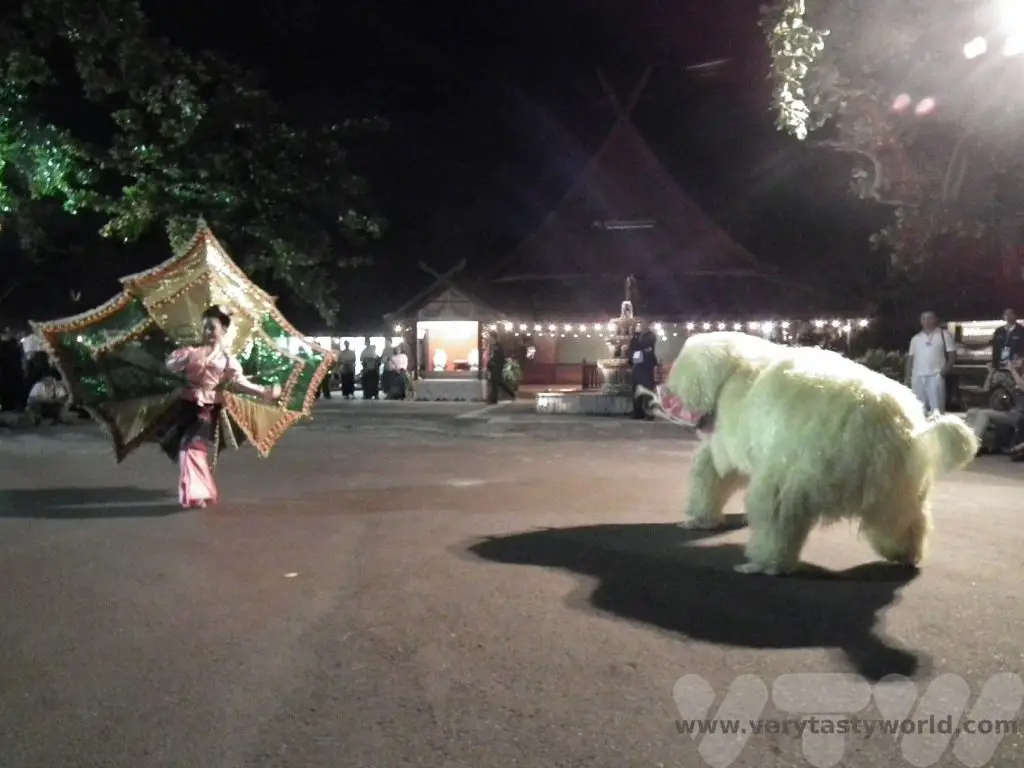
It is a bit touristy but was a fun evening out and an introduction to the culture of the region.
Temples Further Afield
If you don’t get templed out in Chiang Mai itself, there are many more wats to visit in the area surrounding the city. If you don’t have a pre-arranged tour, it’s possible to reach them by taxi. These can easily be arranged with local hotels and hostels. It’s worth agreeing a price first and consider asking for a round trip where the taxi driver will wait for you to explore the temple before taking you back. Both Wat Inthrawat and Wiang Kum Kam, located a few kilometres from the city centre, were definitely worth exploring.
Wat Inthrawat
Wat Inthrawat is one of the best preserved wooden temples in the region. It’s located in the Hang Dong district around 10 km south of Chiang Mai, in the village of Ban Ton Kwen. Small, but perfectly formed, this temple is still in its original state.
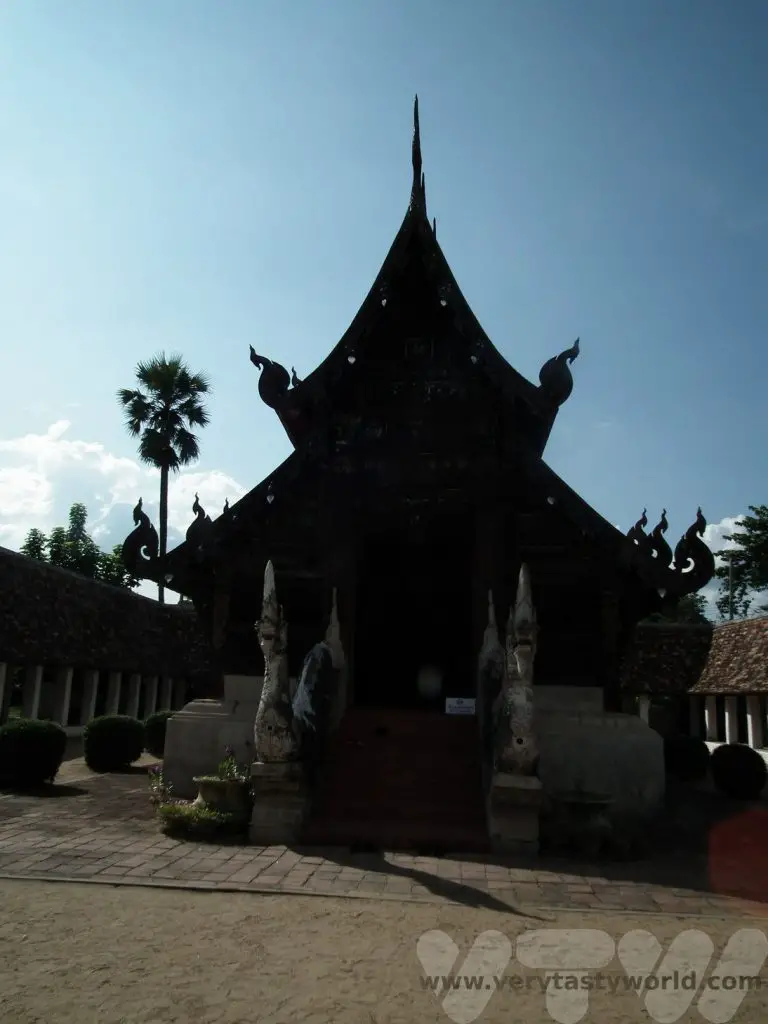
It has a wihan built in the Lanna style with typical nagas at the entrance steps.
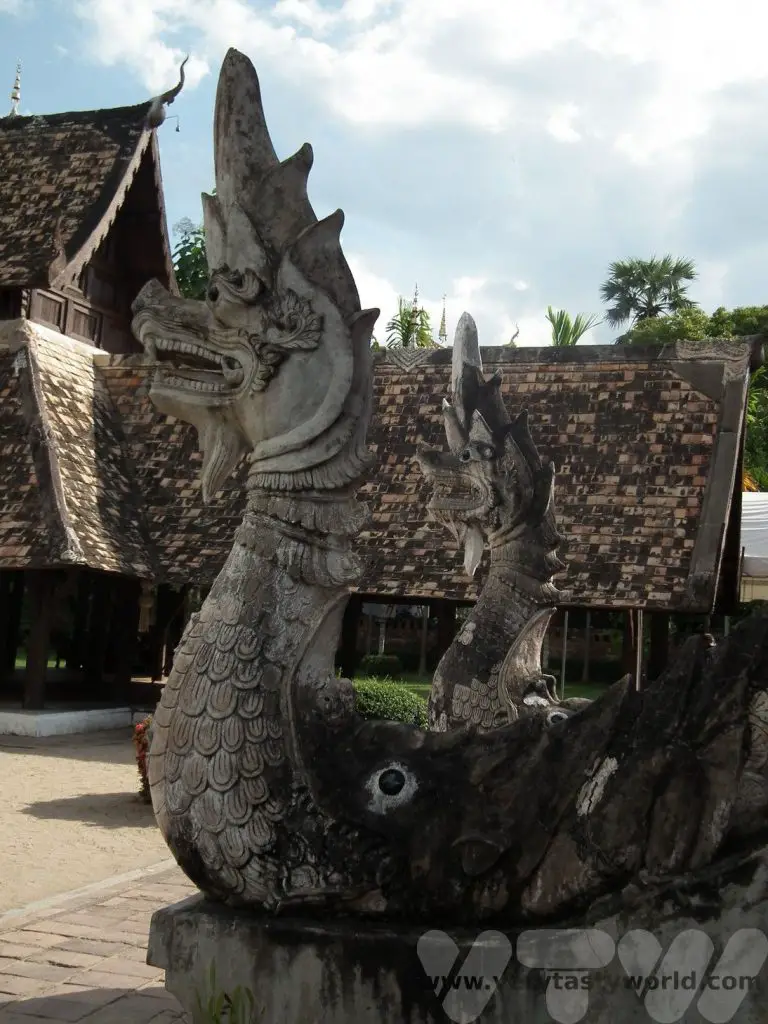
The roof has three tiers and also features some impressive and very decorative features at the tips of each tier. The quality of the craftsmanship is remarkable.
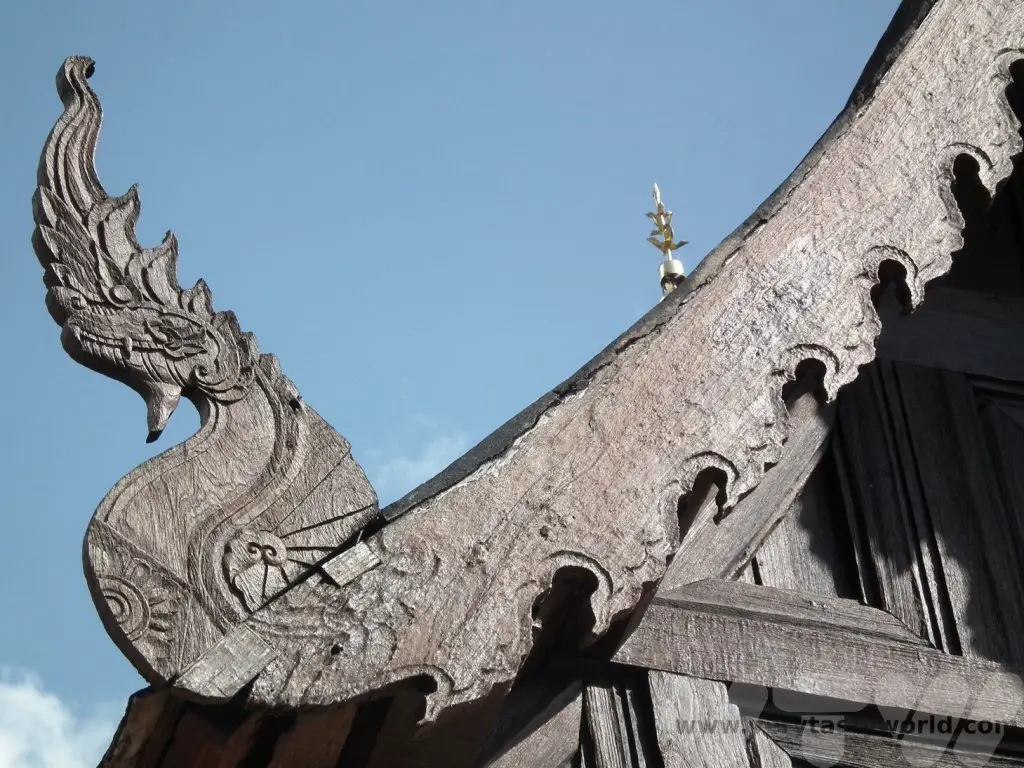
Wiang Kum Kam
Around 5km southeast of Chiang Mai lies the archaeological site of Wiang Kum Kam. This former city was built by King Magram. It was originally the capital of the Lanna in the 13th century but Magram decided to relocate to Chiang Mai, situated at an altitude 12m higher, due to serious flooding at this site. Although the area remained inhabited for several centuries it was finally abandoned after a massive flood which deposited a huge amount of sediment over the buildings. Much of the city has now been excavated and it’s possible to explore the ruins. It’s an extensive area and you can ride around the site in a horse drawn cart or tram. It has a visitor centre, located on Rte 3029, which has loads of information about the site and that’s also the place where you can pick up transportation. It’s possible to visit several temple complexes.
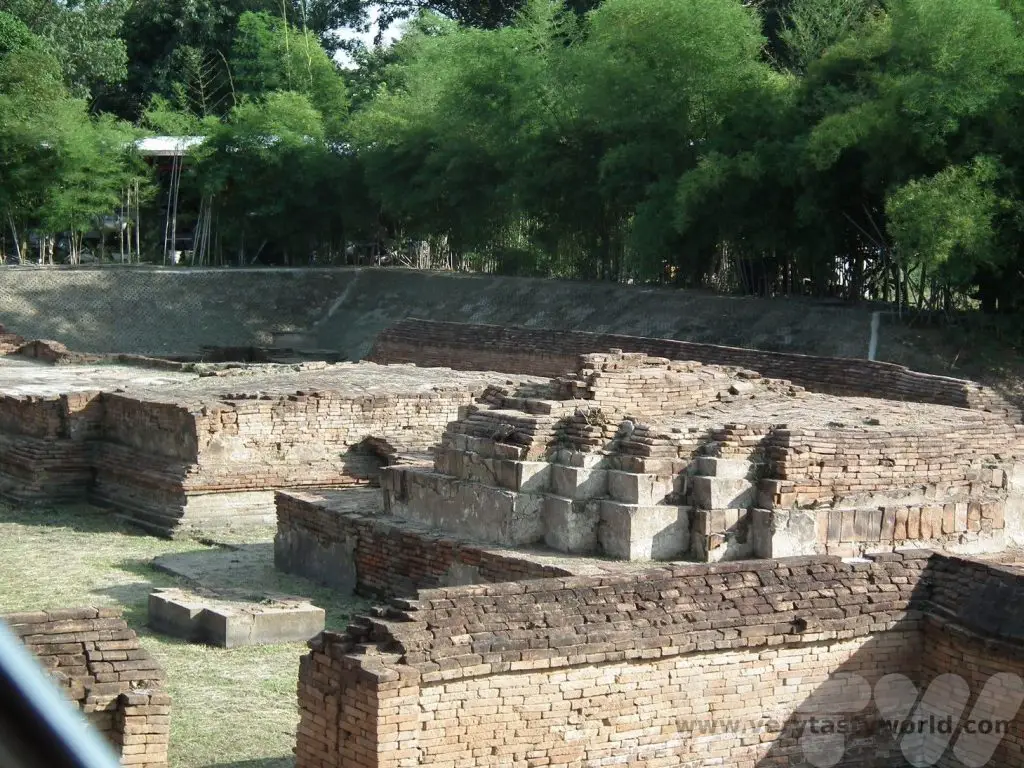
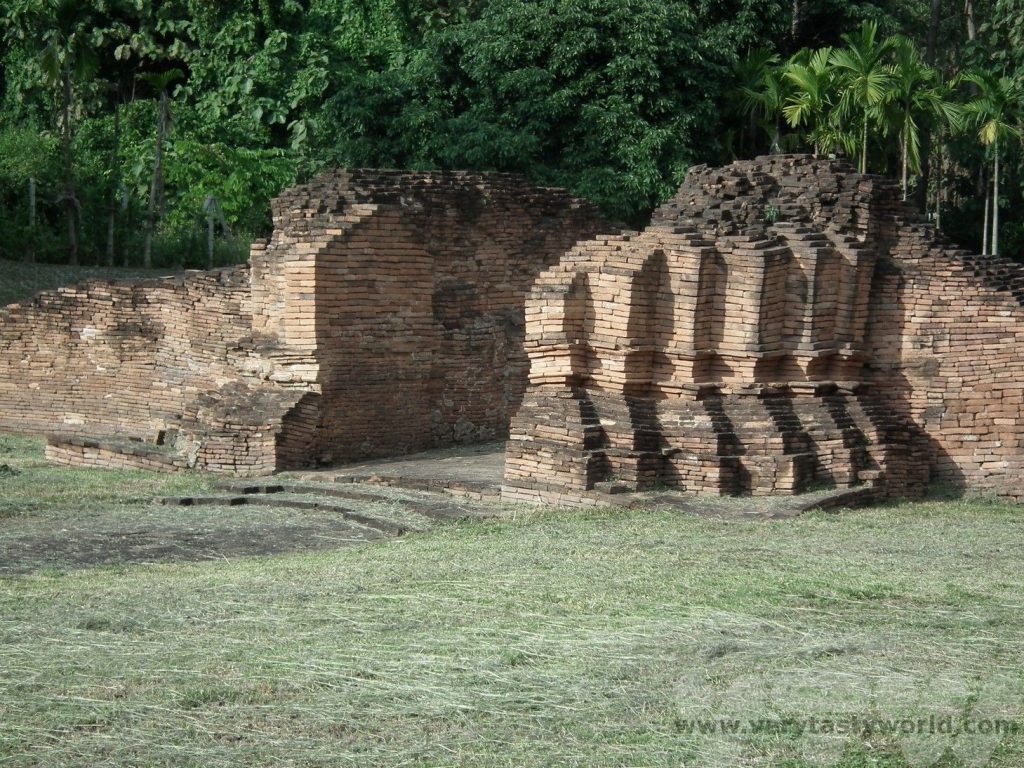
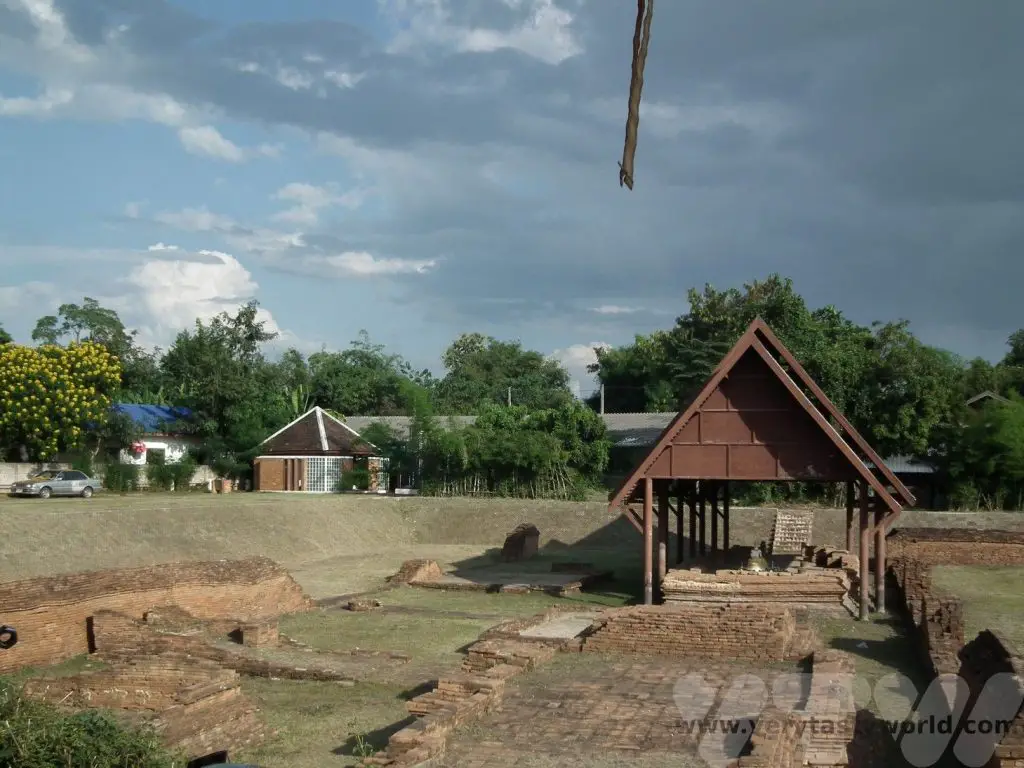
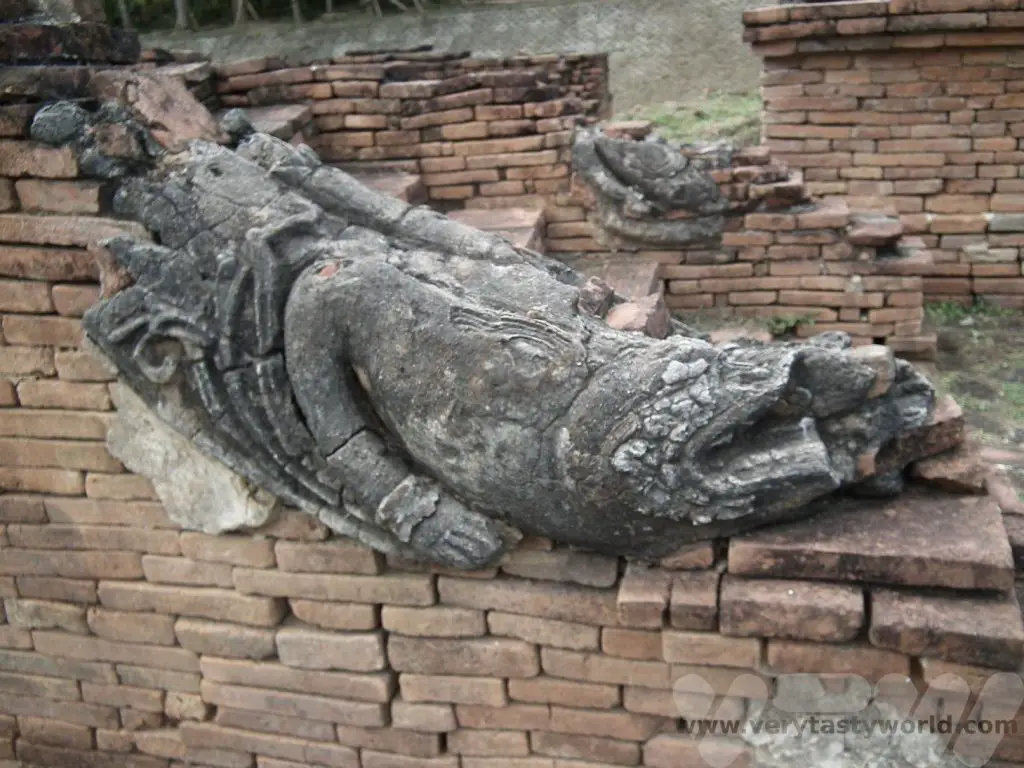
Wat Chedi Liam is the highlight of the complex. At over 30m tall, and taking the form of a pyramid structure, it has five main tiers. Each of these contain twelve Buddhas, three on each side, located inside their own alcove. It remained relatively unaffected by the floods over the centuries and remains a working temple.
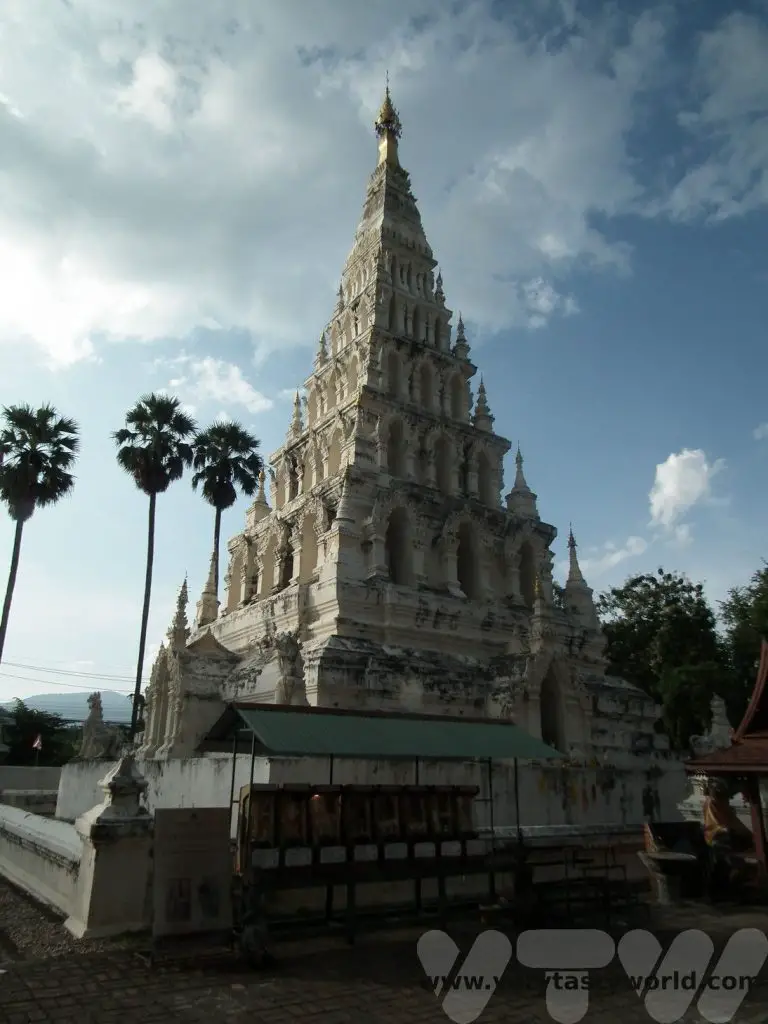
Activities in Chiang Mai’s Wider Area
Although it’s possible to spend quite some time exploring the city there are also loads of trips to take in the surrounding area.
This orchid farm was a pretty distraction for short while on the way to Mae Sa.
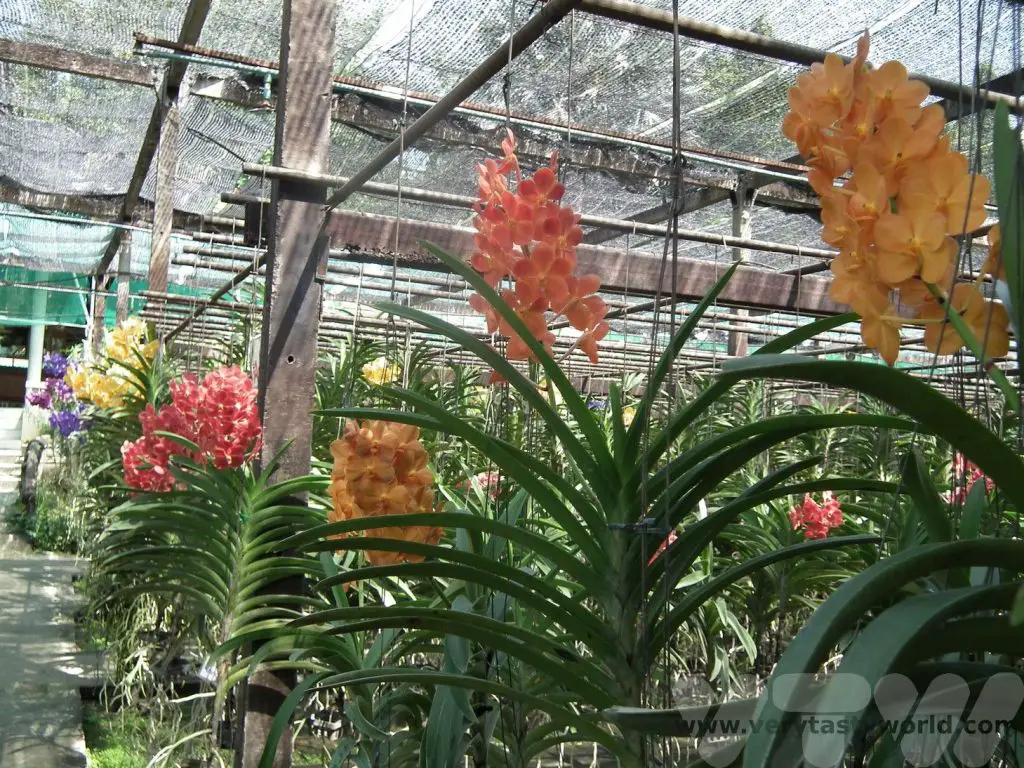
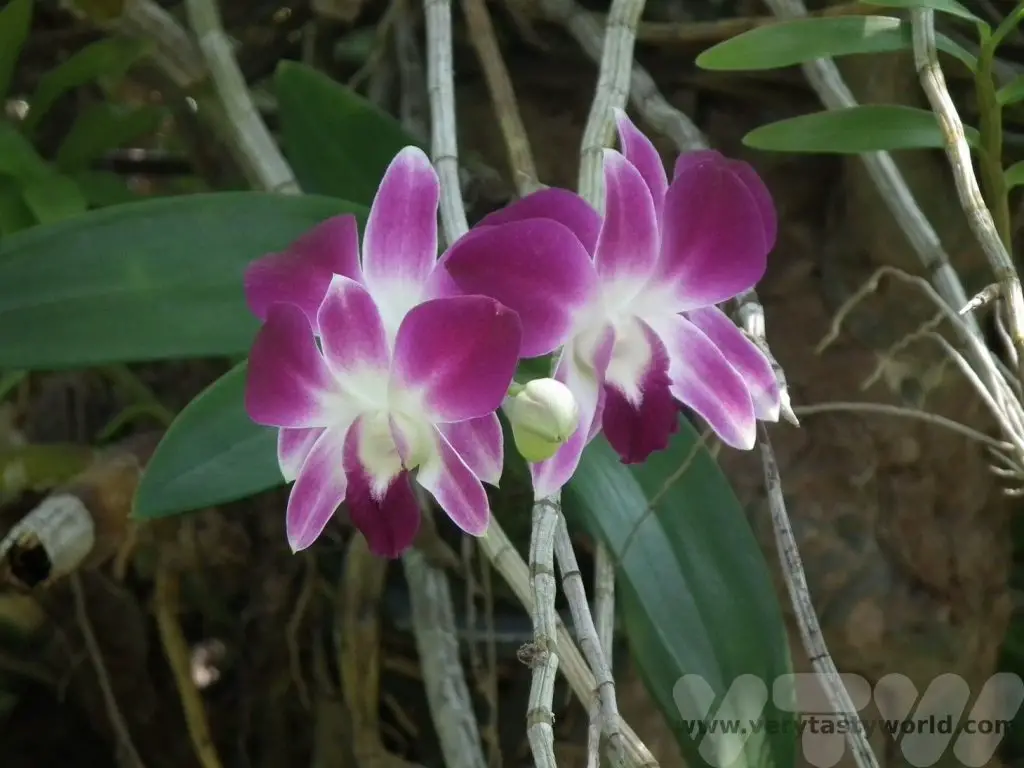
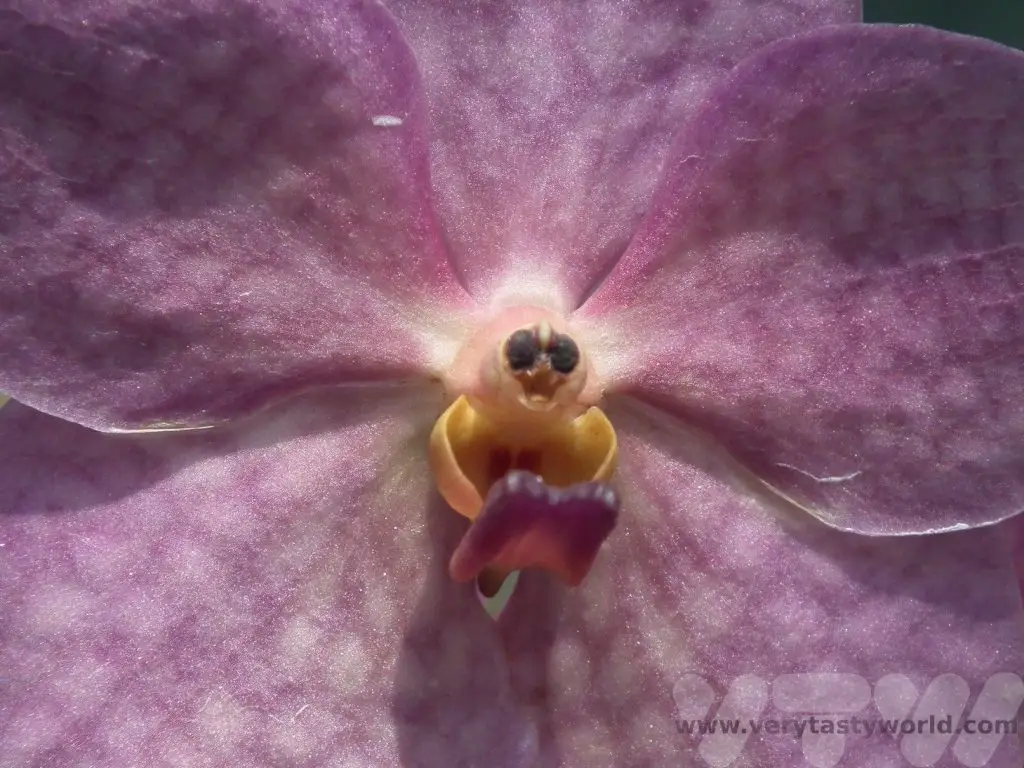
Mae Sa Waterfalls
Located in the Doi Suthep-Pui National Park, around 30km from Chiang Mai, Mae Sa offers a series of ten waterfalls spaced a few hundred metres apart. You can follow the pathway alongside the falls to enjoy a pleasant walk and swimming in the pools is allowed, if you desire. It’s not a challenging hike at all – just a pleasant stroll up a gentle incline. It gets quite crowded at the start of the trail but as you hike towards the upper falls the crowds melt away and you can enjoy the beauty of the surroundings. There are picnic spots along the way, so it’s possible to pack bathing suits and some tasty food to make a day trip if you fancy having a more relaxing time.
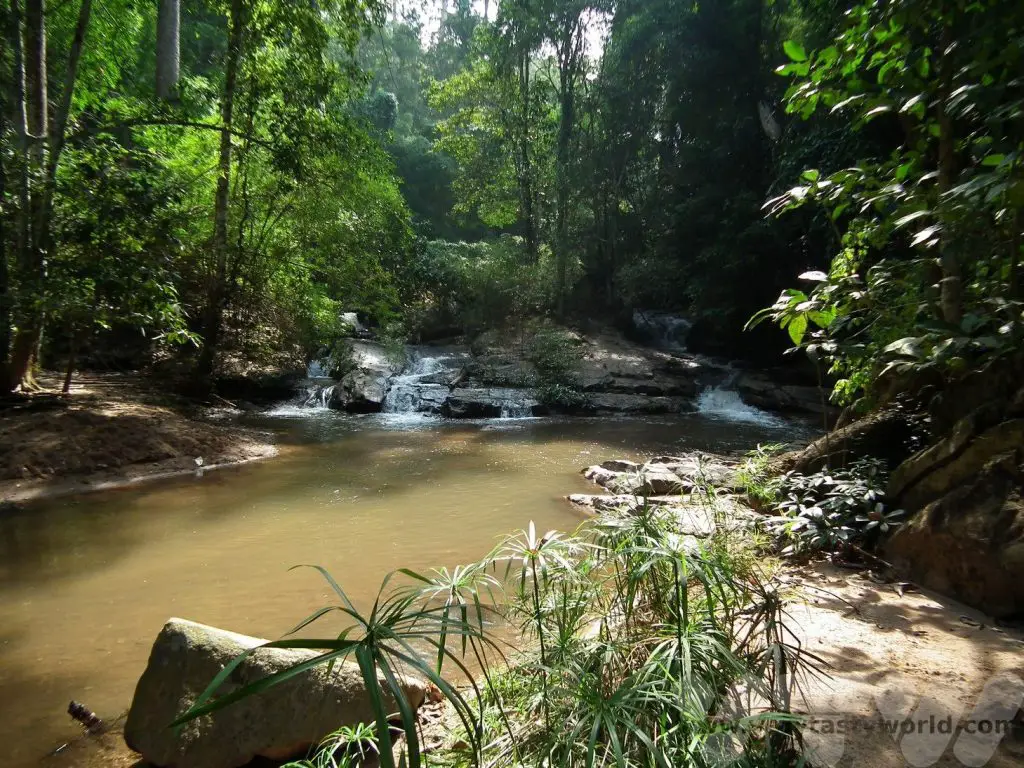
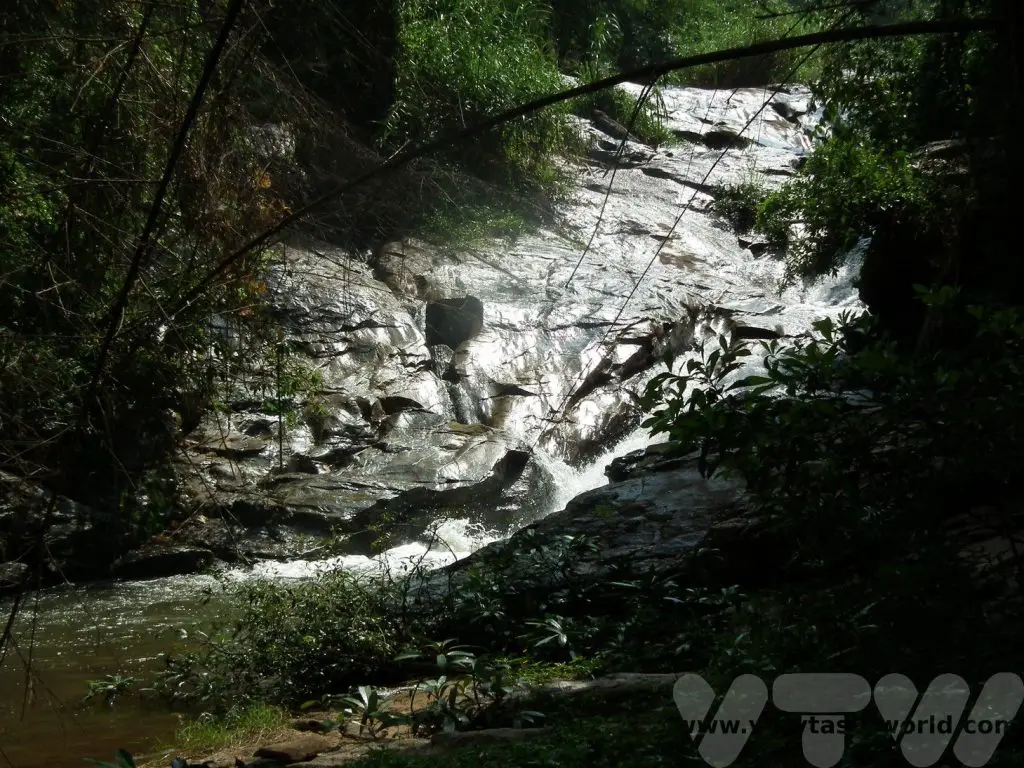
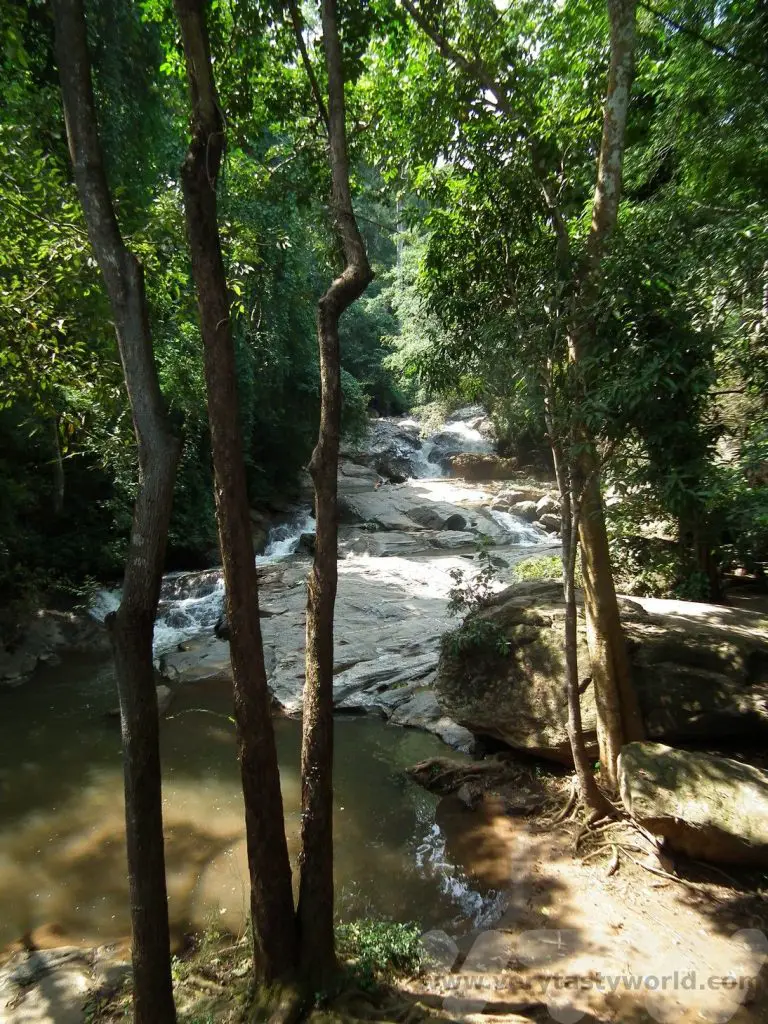
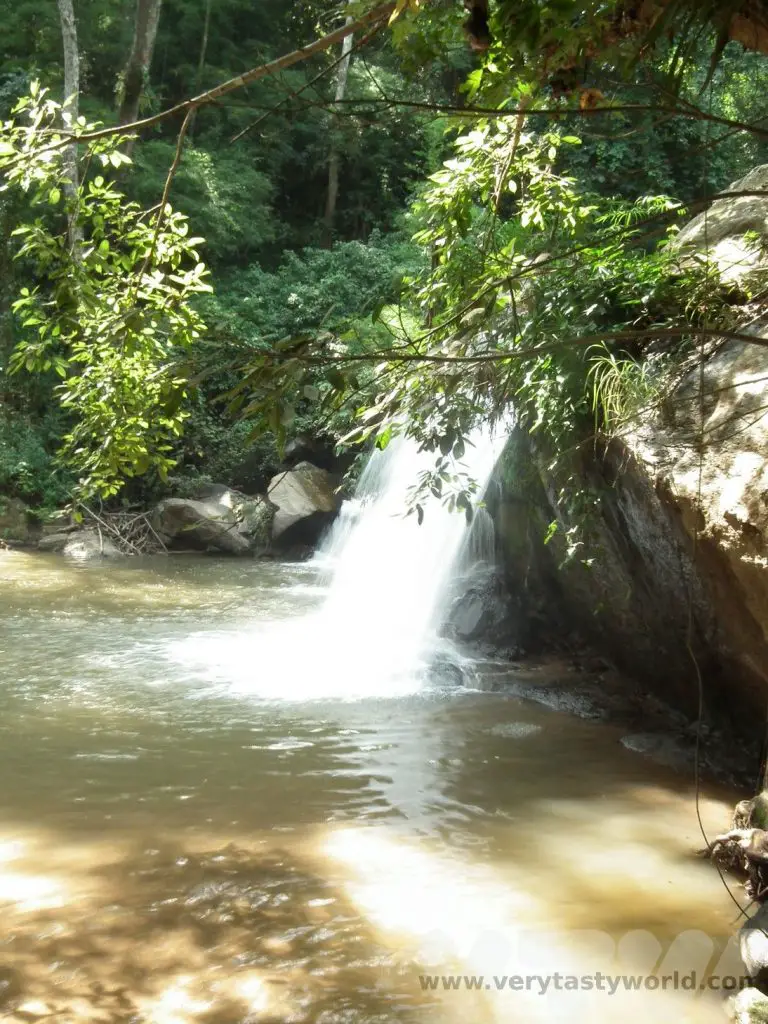
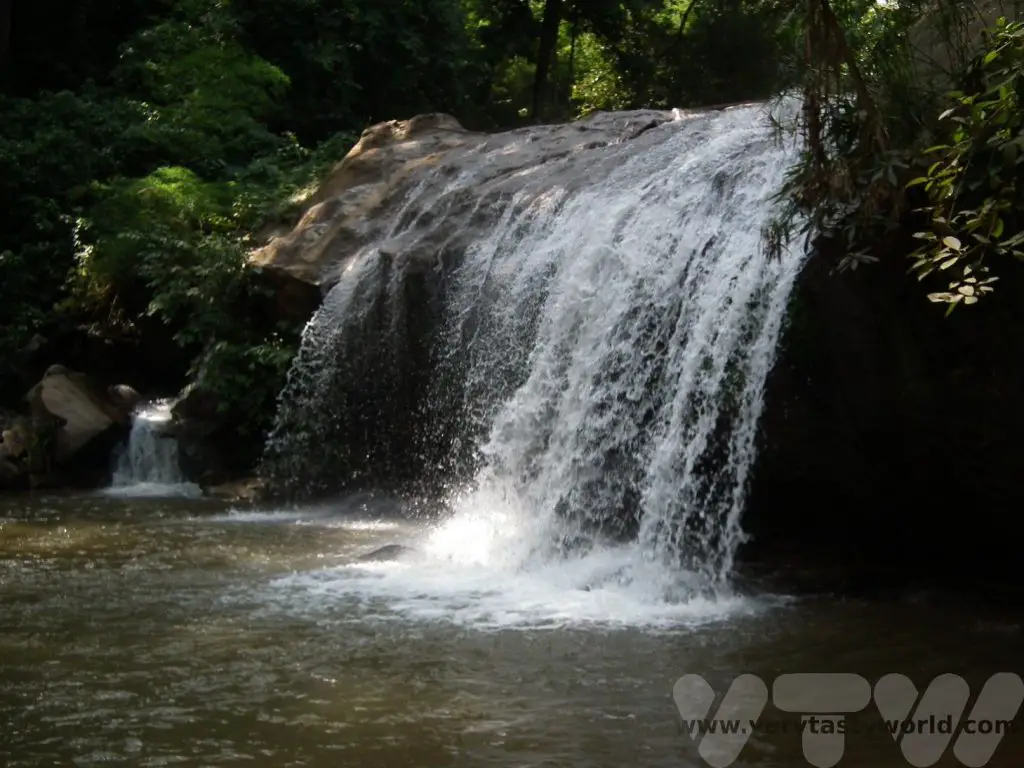
Elephant Sanctuary Visit
Visiting an elephant sanctuary is a very popular activity. There are loads in the area but do check which are responsible and ethical and make sure that they do not exploit the elephants. Many sanctuaries no longer allow elephant rides but focus on caring for and interacting with these remarkable creatures.
We visited a sanctuary a couple of hours away from Chiang Mai which is home to several elephants, all of whom have been rescued from the logging industry or from giving rides to tourists on iron chairs, a practice that really damages the elephants’ backs. When the sanctuary learns about elephants that are being mistreated they locate the creature and offer as much money as they can afford to convince the owners/abusers to sell their elephants. Each elephant has its own mahout (handler) who is responsible for its welfare. Set in 135 acres, the majority of the land is dedicated to growing food for the elephants. Tourists help provide much needed income to support the work of the sanctuary. Elephant riding (even bareback) is no longer allowed. We were able to meet the elephants and hand feed them – although some just helped themselves.
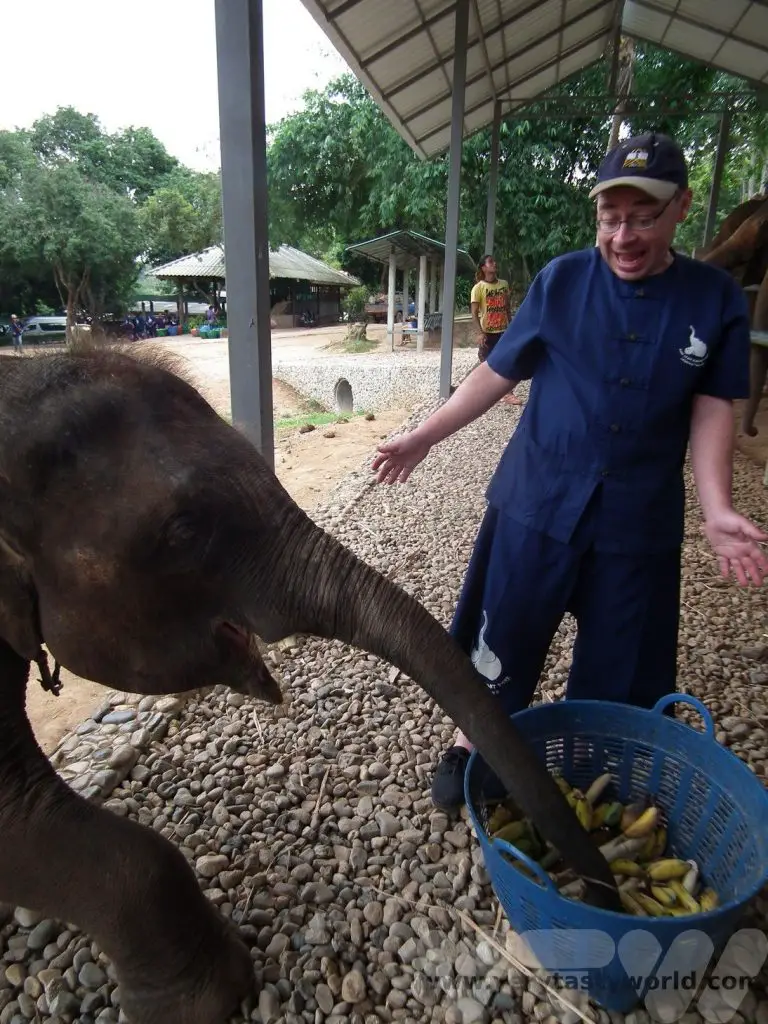
Elephants are highly intelligent creatures. Their brains weigh about 5kg. They are also emotionally intelligent; they recognise and interact with other elephants and have likes and dislikes just as we do. In fact, elephants that really hate each other need to be kept separated at the sanctuary. They also make judgements about the humans they interact with and, if they decide they don’t like someone, will refuse to co-operate with that person. Also – those cliches about elephants are true. They really have terrific memories. Thai people believe that you can judge an elephant’s character by the shape and quantity of its tail hair. Indeed, tail hairs are considered a sign of good fortune (and are sometimes kept as a lucky charm).
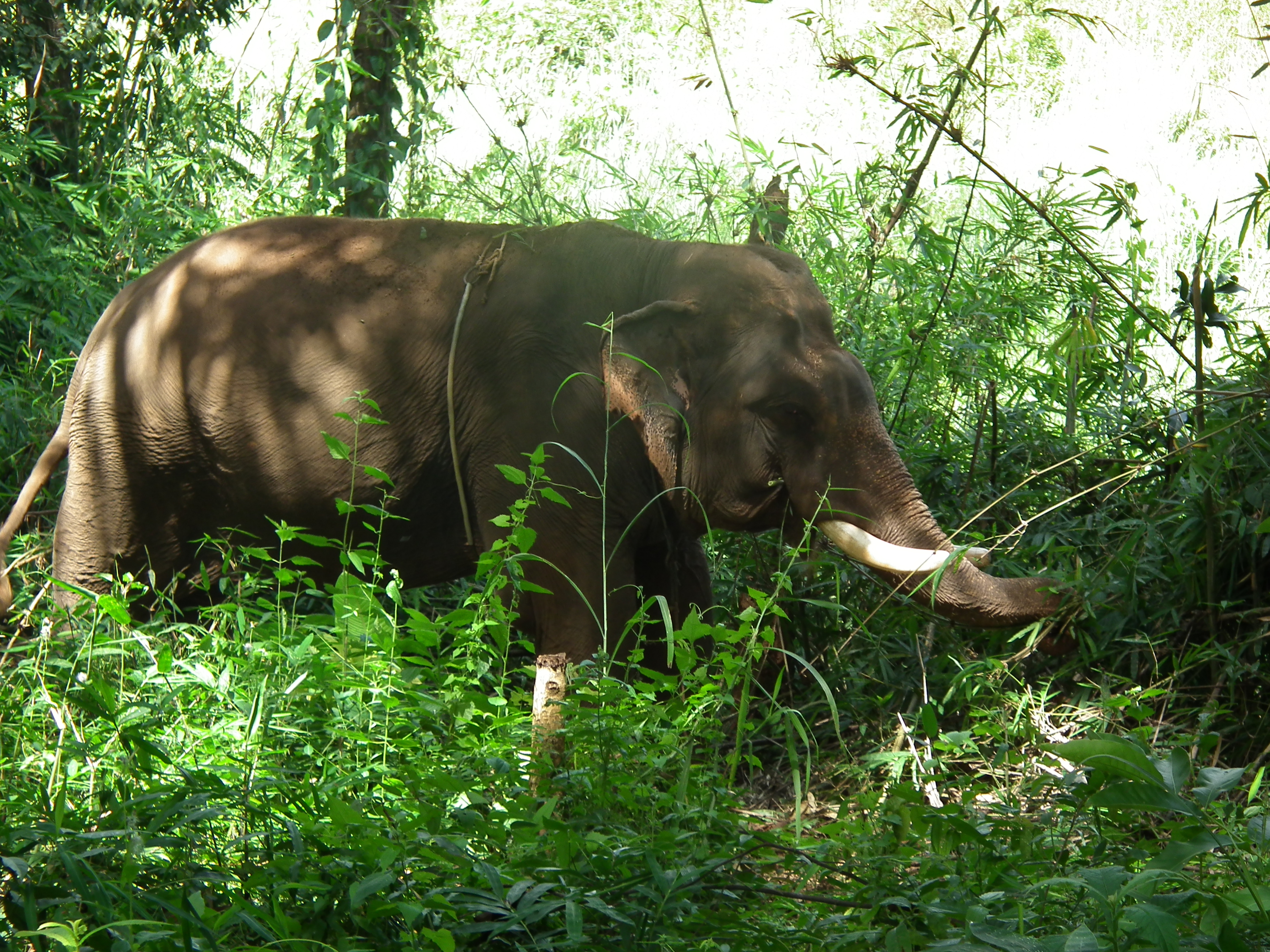
We went for a walk with an elephant called Tom Parr, a large male with long tusks. Tom Parr was very calm and co-operative, but was apparently scared of chickens and cars. He adored going into the jungle – many elephants who have been rescued from the logging industry have been traumatised and refuse to go back into the forest; they are never forced to go where they do not wish to.
Tom Parr knew very well that we had some sugar cane on him.
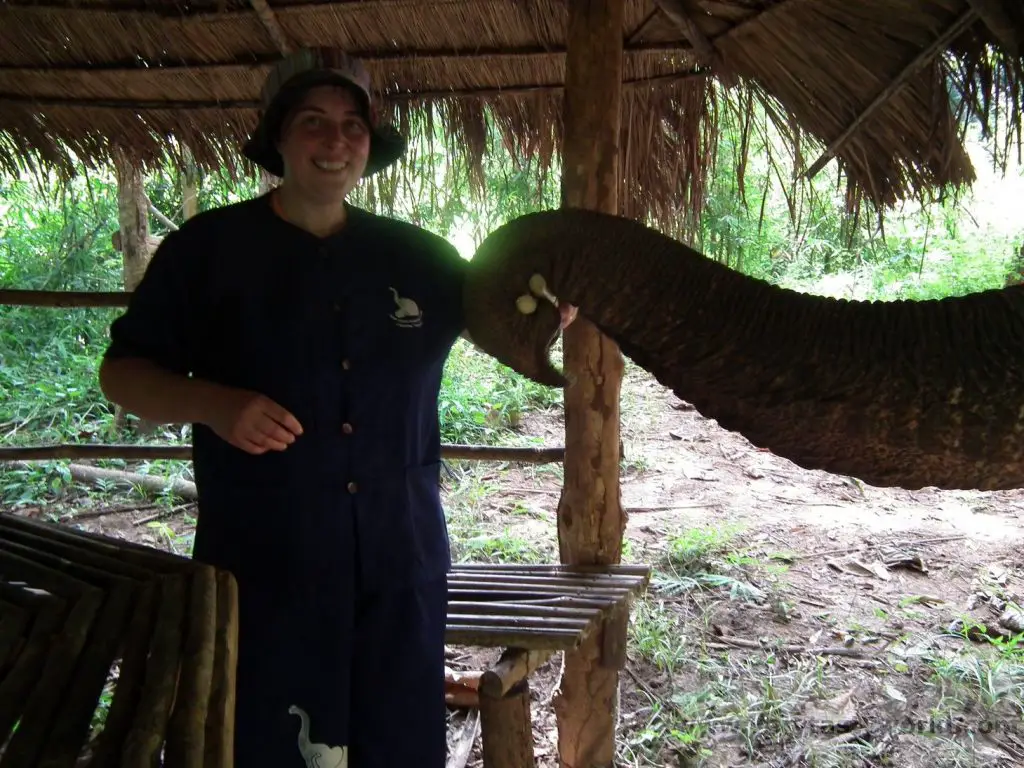
All the elephants are bathed at the sanctuary at least once a day. Tom Parr was very much looking forward to his bath and eagerly walked into the water and sat himself down. We joined him in the pool, which is fed by a local river, to give him a well-deserved wash. We showered him with water and scrubbed his skin and tusks. He was so happy. If he had been a cat, he would have been purring.
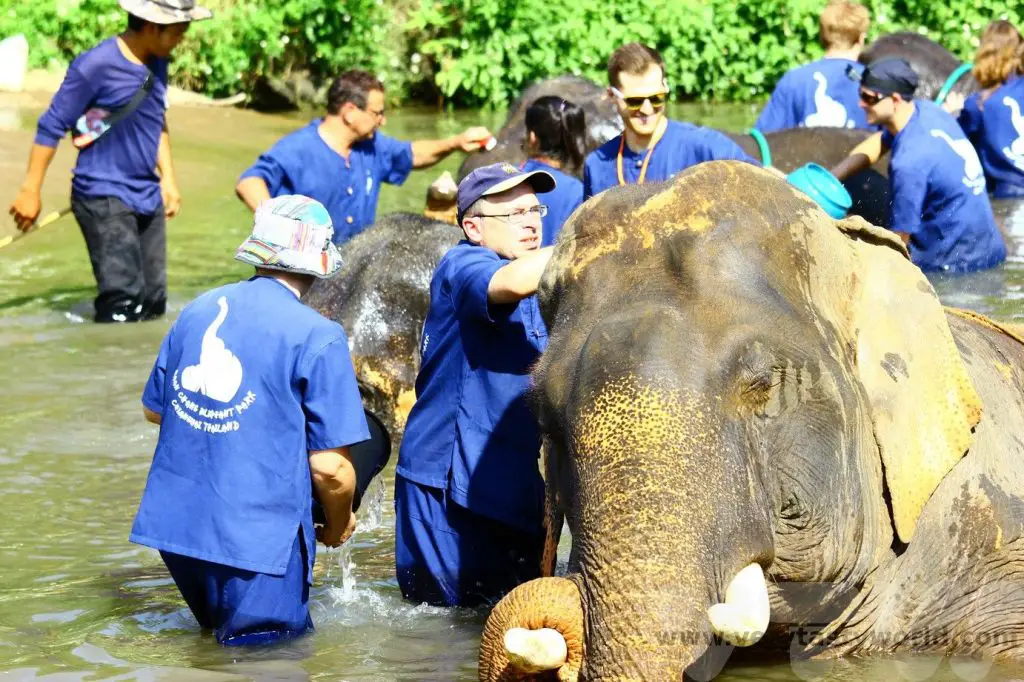
Throughout the experience we had been wondering whether we would need to ‘muck out’ the elephants at any time, something we had been quite prepared to do. However, the sanctuary had made arrangements such that the tourists’ exposure to poo was minimised. In fact, they even had a pooper-scooper chap on hand at the pond, ready to scoop any errant dung that the elephants generated into a bag and prevent the tourists getting too filthy. The sanctuary offers showers so you can wash down afterwards and change into your own clothes. The dung is often used to make paper.
A Chiang Mai Tour – Street Food and Markets
Back in the city, you’ll find that there are a number of bustling markets to explore, notably the night market which is a short walk away from the old city. On some nights of the week certain streets are closed to traffic and stalls pop up. These are really popular so expect crowds.
Of course, markets wouldn’t be markets without food stalls and Thai street food is amazing. The markets often have plastic tables and chairs nearby – they are not necessarily associated with any particular stall – so you can order your food and then take it to any table to enjoy at leisure.
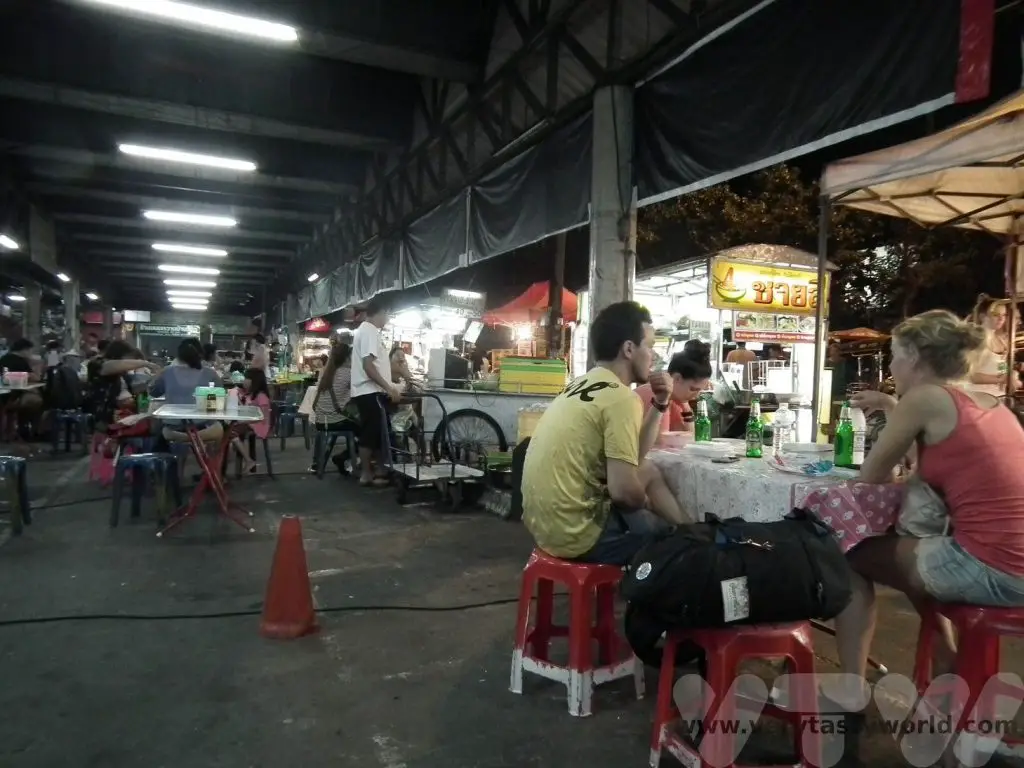
One of the best street food dishes is som tam – green papaya salad. Green papaya is shredded into a large wooden bowl and then pounded with beans, carrots and tomatoes. Sometimes little shrimp are added although you can ask for them to be excluded if you are vegetarian. Chillies, lime juice, palm sugar and fish sauce are added to the mix and pounded to release the flavours giving that characteristic Thai combination of sweet, sour, salt and spice. Be warned though, those teeny Thai chillies are hot! The dish is then adorned with crushed toasted peanuts for added crunch. On a warm, humid evening, it’s the perfect dish for a refreshing snack, preferably accompanied with a nice cold beer.
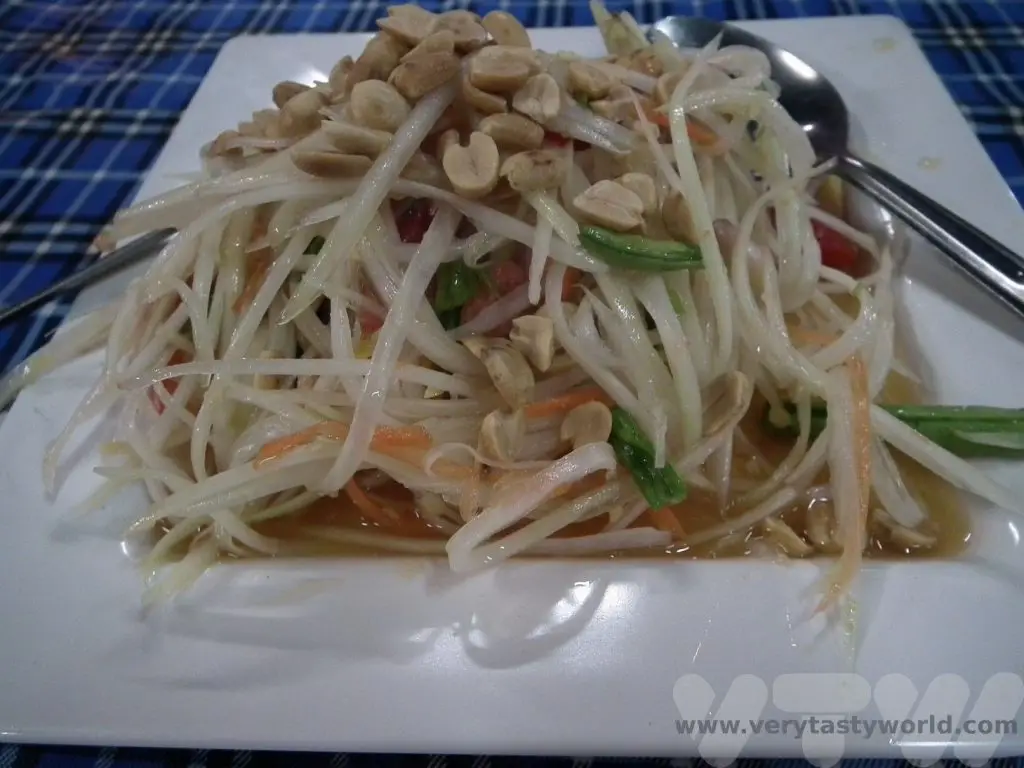
Related Posts You May Enjoy

A Day in Ronda
Ronda in Andalusia is a charming place to visit. It is most famous for being a town split in two – located on either side of a deep chasm, El Tajo, through which the Guadalevín River flows. It is a magnet for daytrippers – at just 60km from Marbella and 100km from Malaga, both on the Costa del Sol, and around 128km from the wonderful city of Seville. Here’s our guide for spending a day in Ronda.
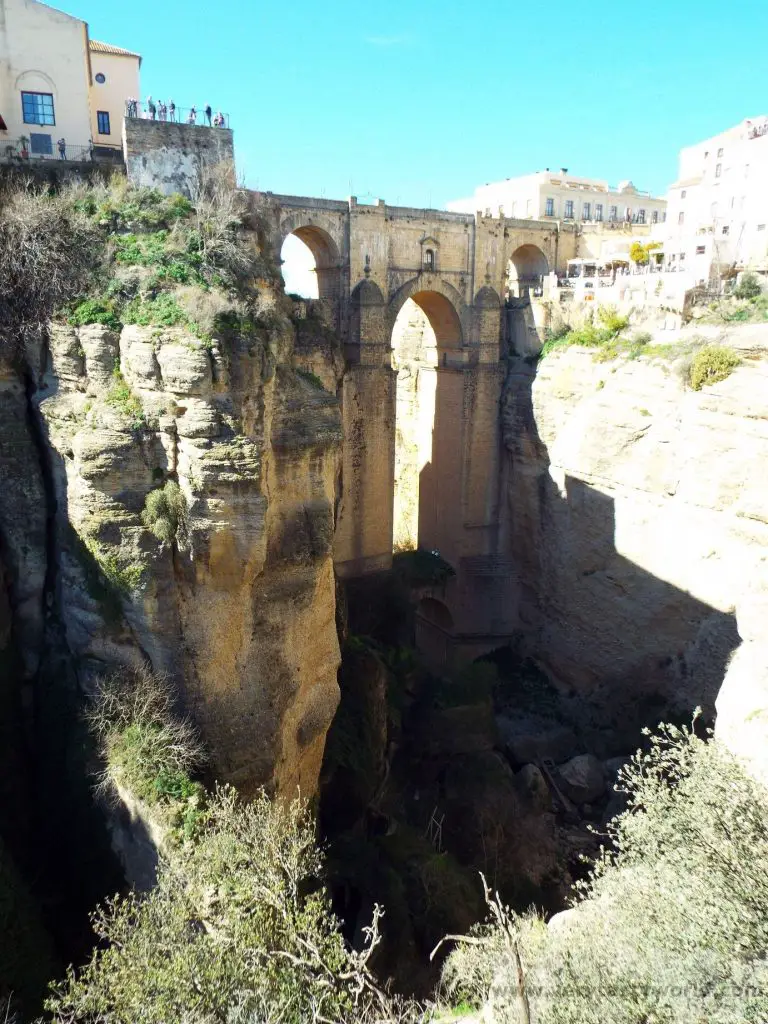
History of Ronda
Ronda is one of the oldest towns in Spain with settlements known to have dated from the Neolithic period. Celtic people arrived in the 6th Century BCE, naming the town Arunda. It was invaded by the Romans and became an important city in the region but fell into decline following the fall of the Roman Empire.
When the Moors, led by Prince Musa Ben Nusayr, conquered Spain in 711 the invaders recognised the strategic importance of its location; Ronda flourished as a city once more and became the capital of one of the five districts in Andalusia. The Moorish influence on the buildings remains to this day. Eventually Ronda became a focal point of Christian armies trying to recapture Southern Spain in the early 13th Century and the conquest of Ronda resulted in Christian knights establishing themselves in the city and replacing mosques with churches. By 1570 the city had become a completely Christian town.
It wasn’t until the 17th century that the major bridges were constructed across the town’s mighty gorge. The Old Bridge – Puente Viejo – was built in 1616. And the Puente Nuevo was completed in 1793, part of a series of buildings constructed in the town, including the famous bullring.
The city was occupied by the French in the 19th Century which resulted in hardship for many of the citizens. It is thought that legends of the guerrilla fighters, known as bandaleros, originated during this era. (There is a museum dedicated to bandits in the town.) Similarly, in the 20th Century the city also suffered significantly during the Spanish Civil War. Apparently the chamber above the arch on the main bridge was used as a prison and torture chamber by both sides, some unfortunate prisoners being thrown to the rocks in the gorge.
These days the town is thriving and is a hugely popular with tourists.
Jardines de Cuenca
The Puente Nuevo Bridge is the town’s most popular attraction and it’s easy to see why. It’s possible to walk down to the hillside to the Jardines de Cuenca, a serene set of gardens that you can wander through and get a spectacular view of Puente Nuevo and the gorge. But don’t forget to turn around and get some shots of the lovely countryside. We were lucky to visit in early spring, when the blossom was just coming out.
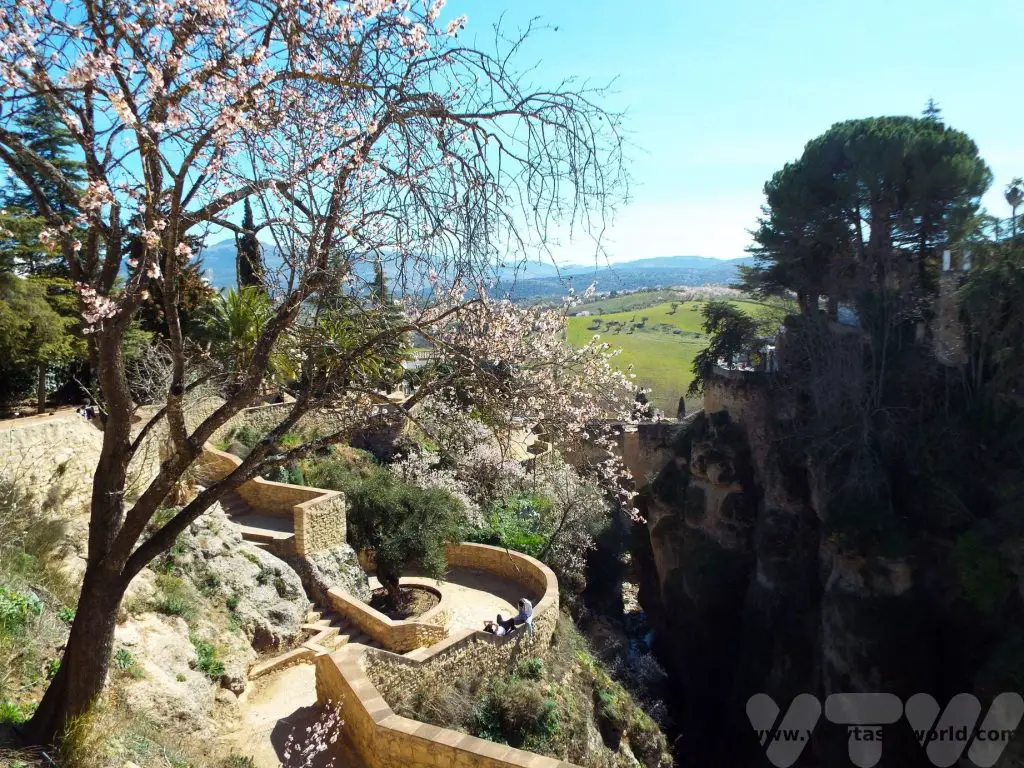
If you want to stay in a hotel or eat at a restaurant with a view of the gorge and bridge, the prices are likely to be higher than in other parts of Ronda. Although the dramatic bridge Puente Nuevo is the main attraction of the town, there are two other bridges in Ronda and both of them are lovely. They are located further down the gorge.
Puente Arabe (also known as the Roman bridge) – is the smallest bridge. Its foundations are Roman but it was rebuilt by the Moors. It is located close to the Arab baths.
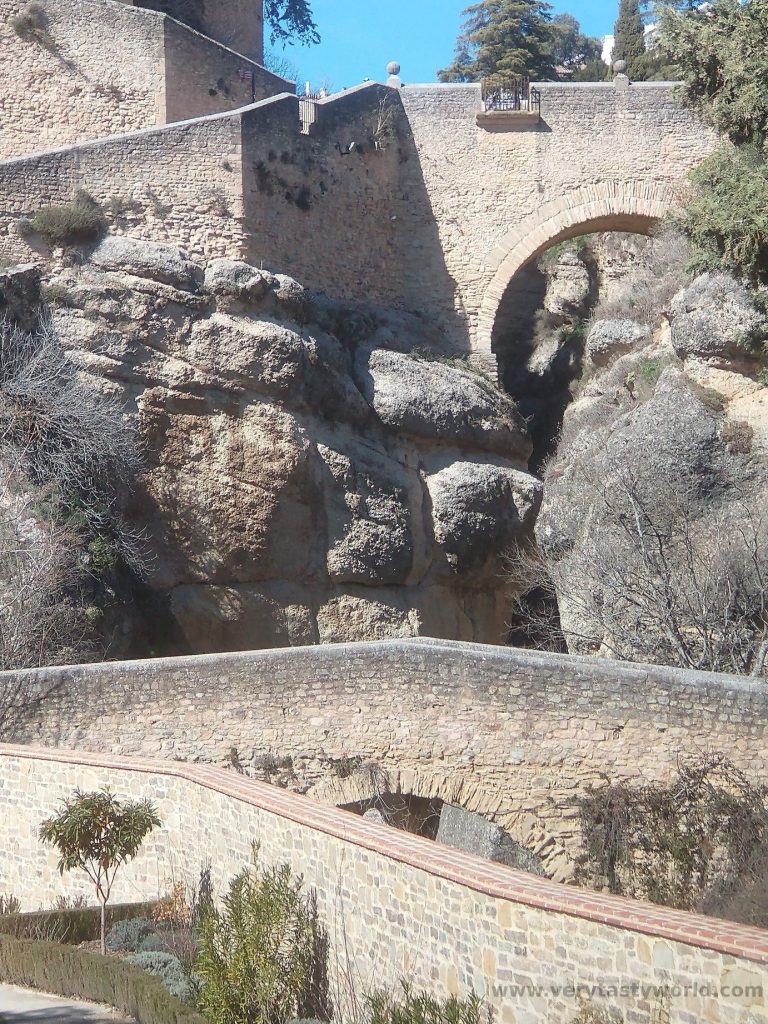
Puente Viejo is the “old bridge”, a single arch bridge constructed in the 16th Century.
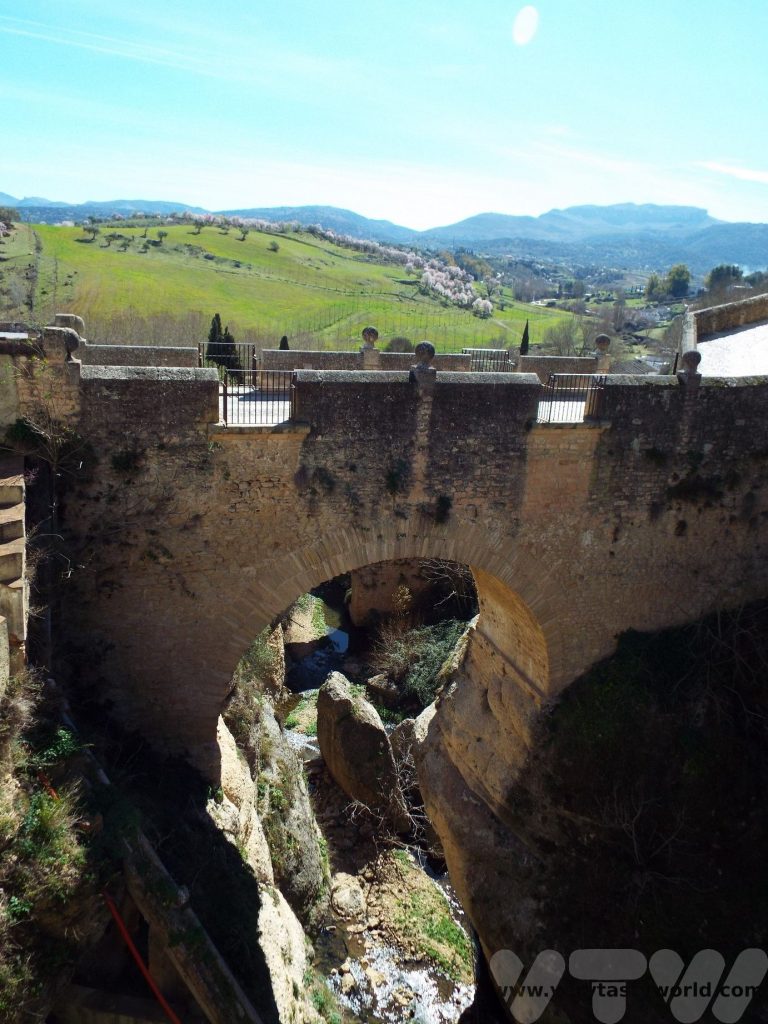
Puente Nuevo is the “new bridge”, even though it was completed over 200 years ago. The interior above the main arch used to be a prison (you can imagine it being very secure!), was briefly a bar and is now a museum dedicated to the history of the bridge.
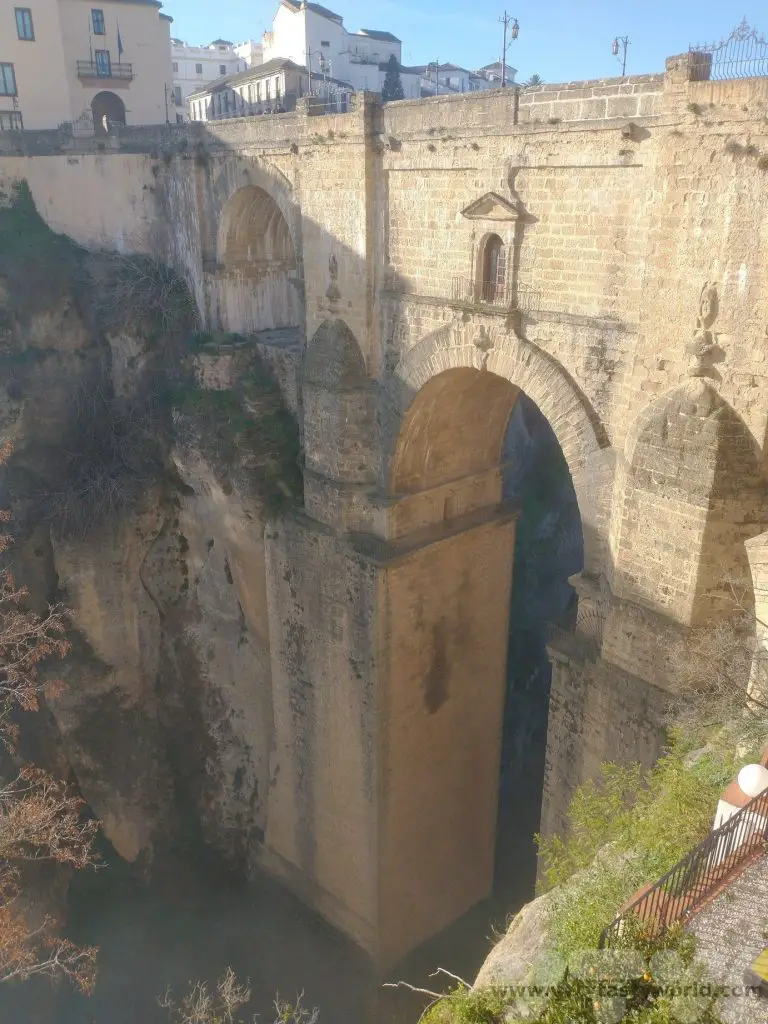
The city walls can easily be reached from the Roman Bridge and it is possible to walk along them to see fantastic views.
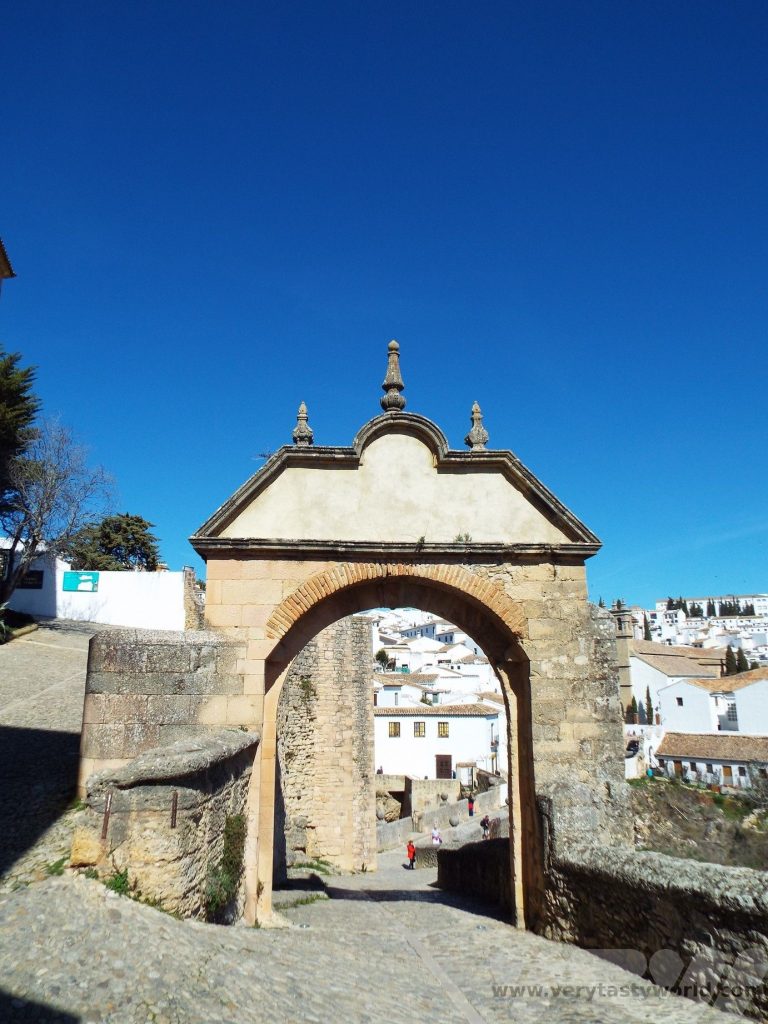
The Arabian Baths
The Arabian Baths are well worth visiting. They are located at the original entrance to Ronda, close to the Roman Bridge. They were built in the 13th Century by the Moors, who were Muslim, and hence placed a very great importance on cleanliness. But they weren’t just for cleaning, they also offered a social space where people would meet as well as bathe.
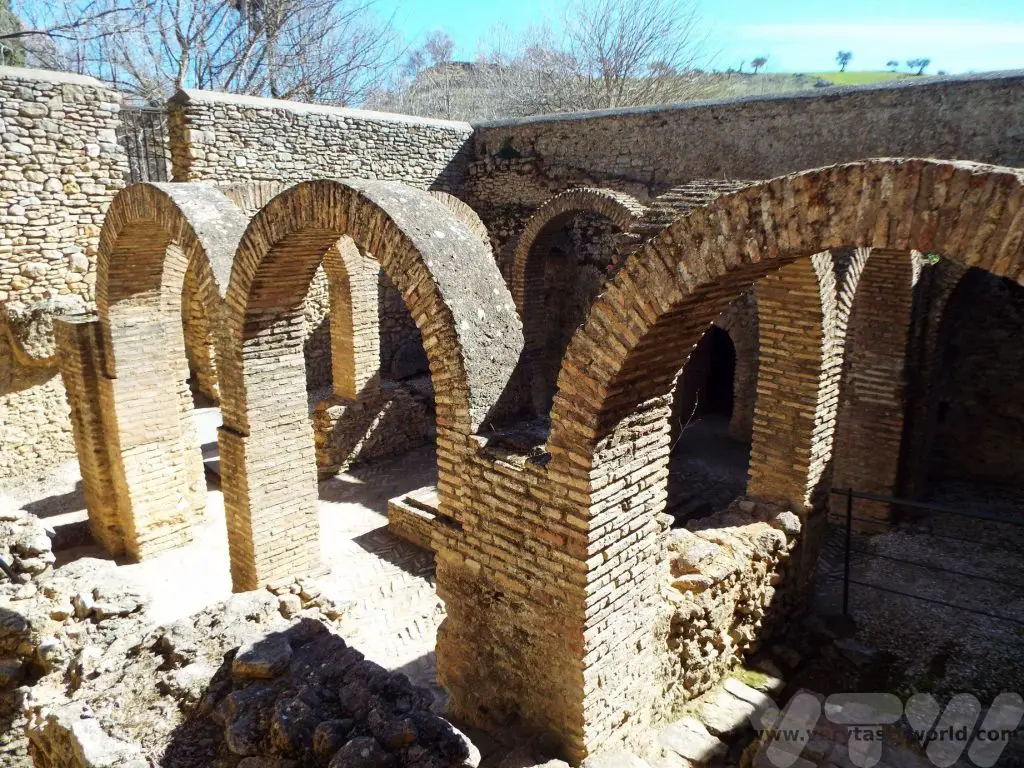
The baths are located next to the river to ensure a constant water supply, and were constructed partially underground in order to control temperatures. There are many similarities with the design of Roman baths.
The baths here are remarkably well preserved (in fact they are considered to be the best in Spain) and it is possible to visit the cold, warm and hot bathing rooms as well as some of the sanitary facilities. There is a central room with vaulted ceilings and wonderful star shaped skylights.
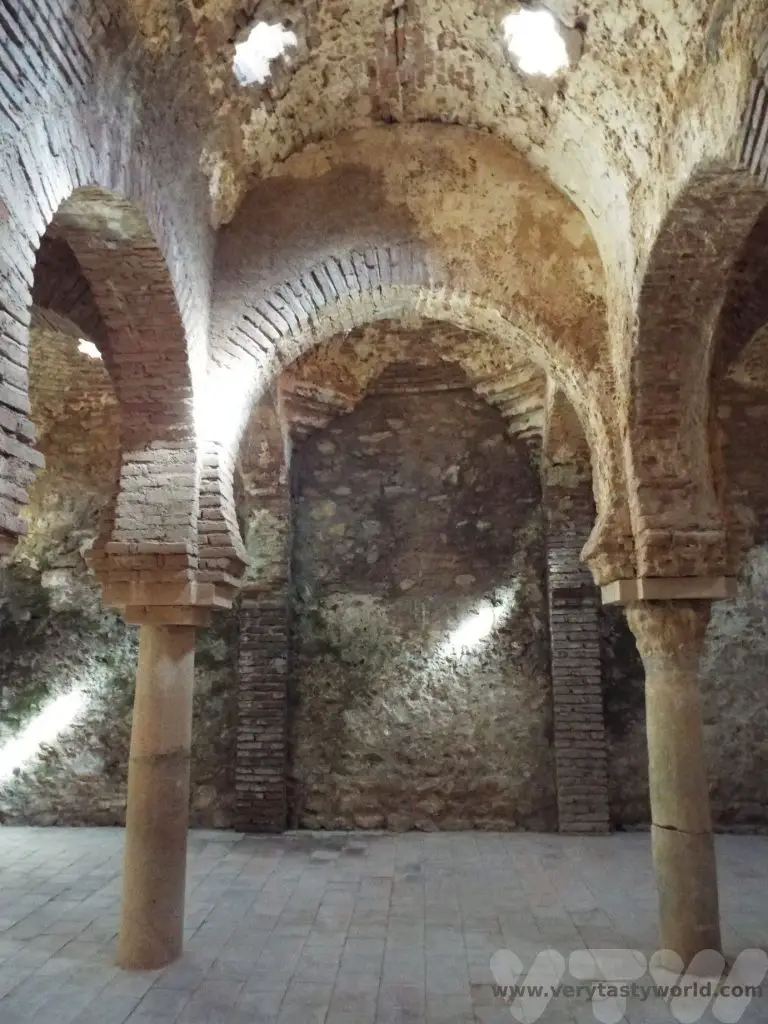
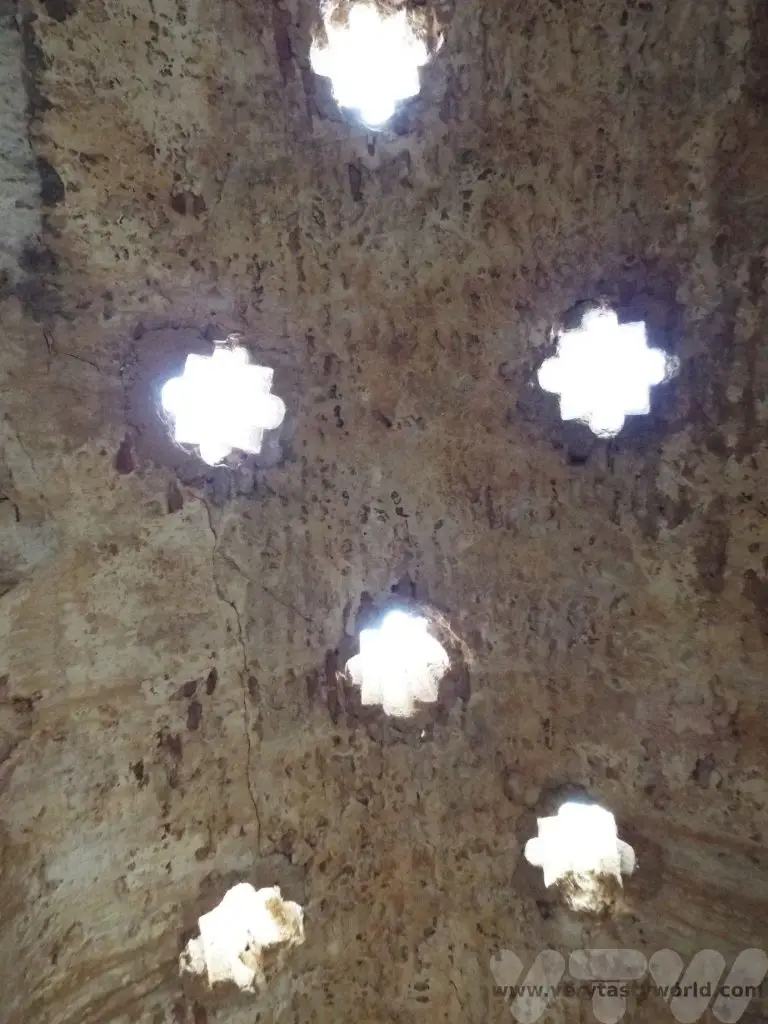
Outside the main baths is the water pump tower, known as a saqiya. A donkey would have turned a wheel to pump water from the river, which would flow along an aqueduct towards the boiler room, which heated the water for the baths.
The Water Mine and Garden Palacio del Rey Moro y La Mina
We found this to be disappointing and not very good value for money. The main attraction of interest was the water mine – a staircase that leads from the top of the gorge down 231 steps that have been carved into the rock to reach the river below. The history is interesting: the mine was the only source of water for the city. In Moorish times, Christian slaves, chained to the steps, were used to carry the water in bags up to the top. When a Christian army invaded the city in 1485 the mine was blockaded and the inhabitants of the city lost their water supply. It is possible to enter the mine and walk down the steps.
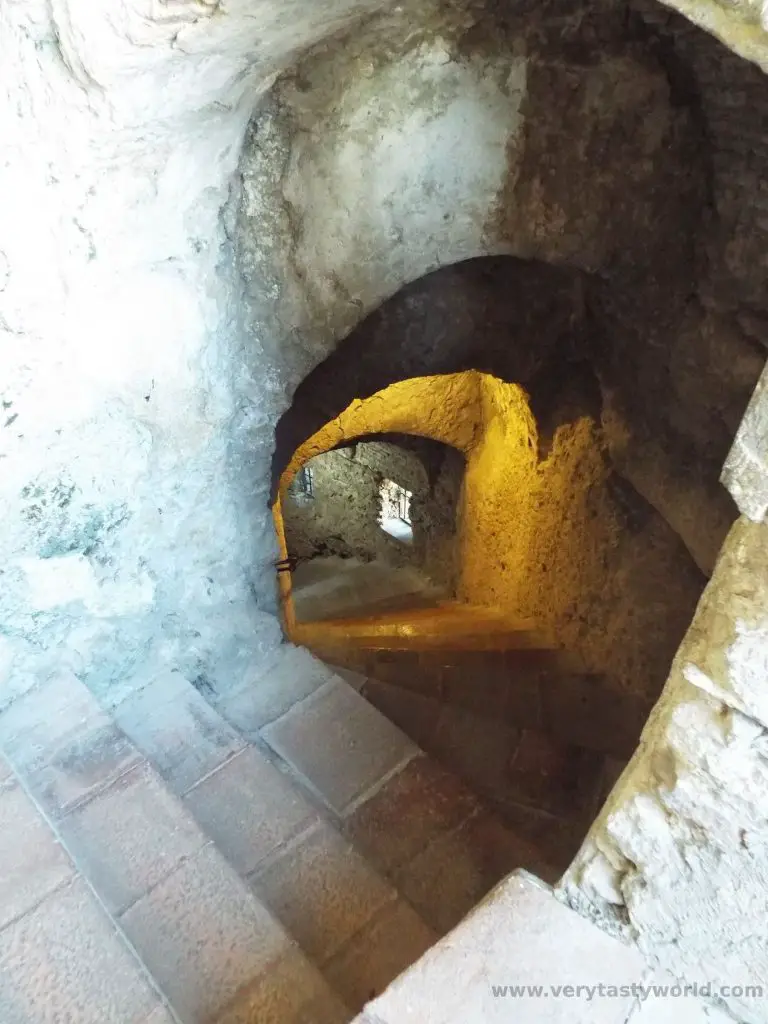
Beware, though, the steps are well maintained at the start but soon get slippery. It would have been helpful if the warnings about steep, slippery steps had been given outside the entrance, before we paid up, and entered the site. And, what goes down must come up, so be prepared for a long climb back.
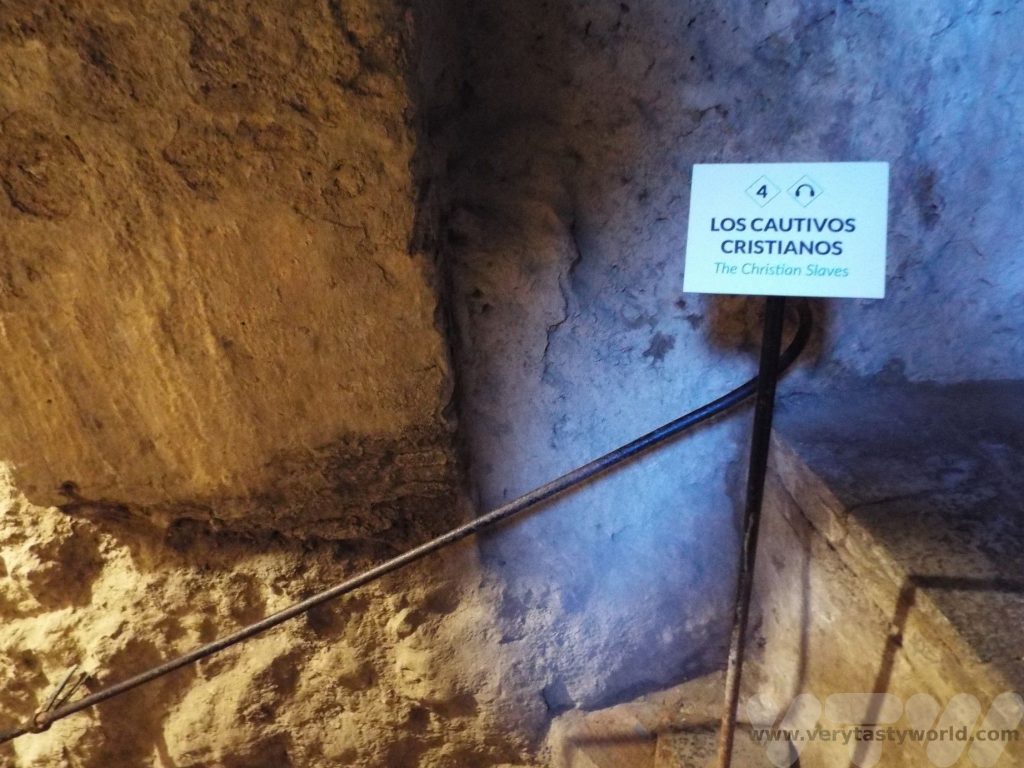
The garden of the Moorish King’s palace is pretty but not extensive. Also, it was built in the 18th Century, long after the Moors had gone, and the garden was designed in 1912, which feels like a bit of a cheat.
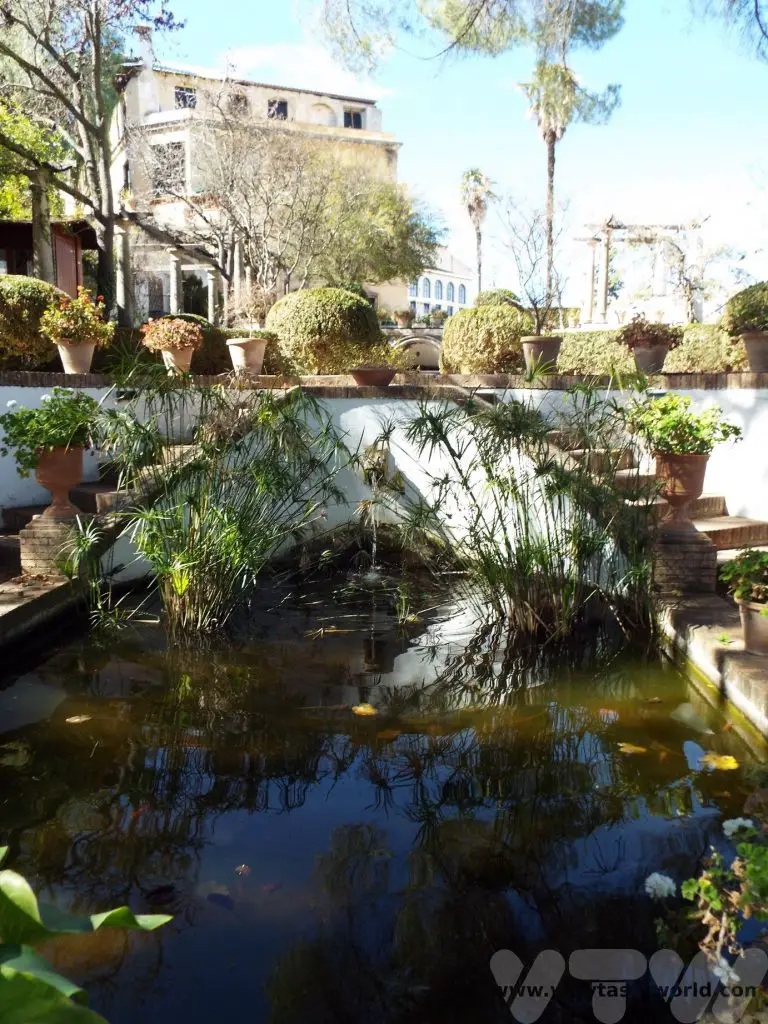
The Bullring
Ronda is considered the place where modern bullfighting began. At the Plaza de Toros, Ronda has a large bullring, built in 1785, which is one of the oldest in Spain. There is a museum which gives a history Bullfighting is a part of Spanish culture and history but it wasn’t something that we wanted to see. If you are in need of visitor information, the tourist office is located close to the bullring.
Next to the Plaza de Toros is a small park with two unusual statues by sculptor Seville Parra. Film director Orson Welles and author Ernest Hemingway both fell in love with Ronda and Spain. Hemingway wrote about Spain in his novels Death in the Afternoon and For Whom the Bell Tolls. Welles was so taken with Ronda that his ashes are buried close by, in a well on the estate of his friend, bullfighter Antonio Ordóñez. The park itself offers some nice views of the surrounding area.
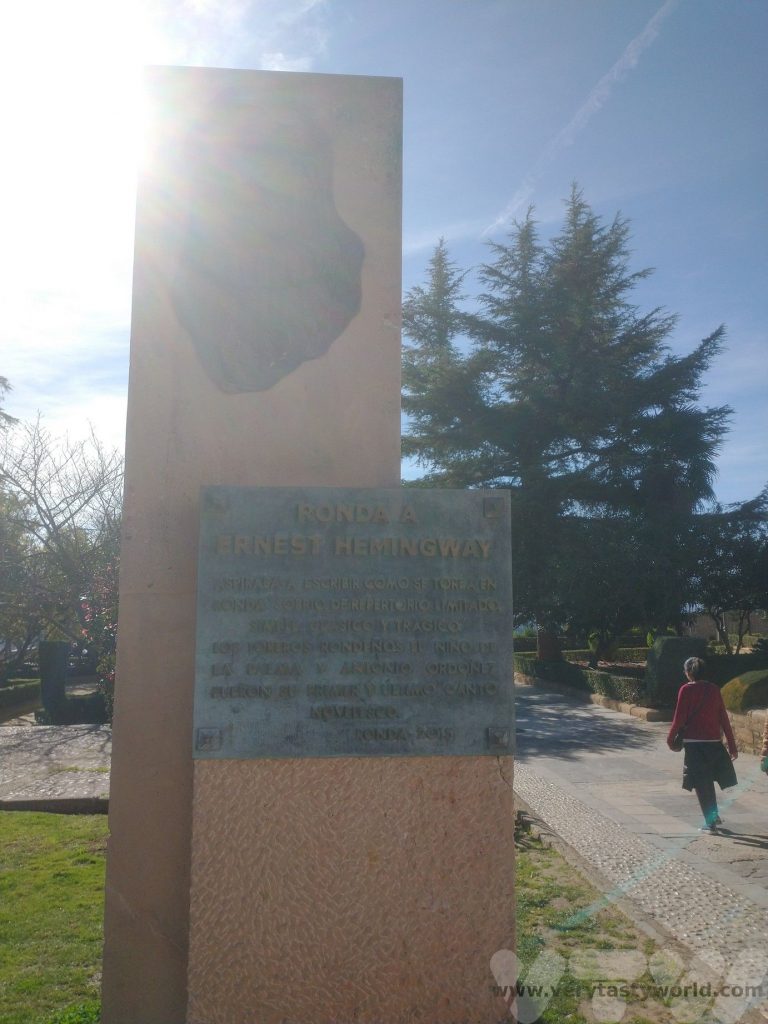
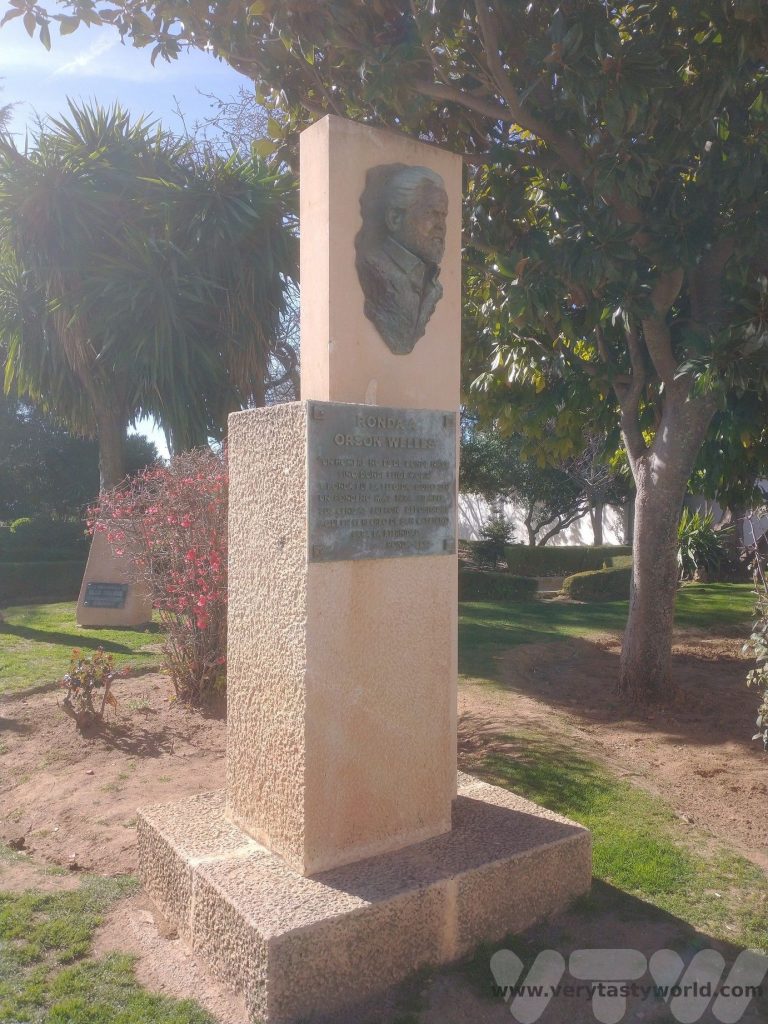
It’s lovely just wandering through the town. The oranges were already ripening on the trees.
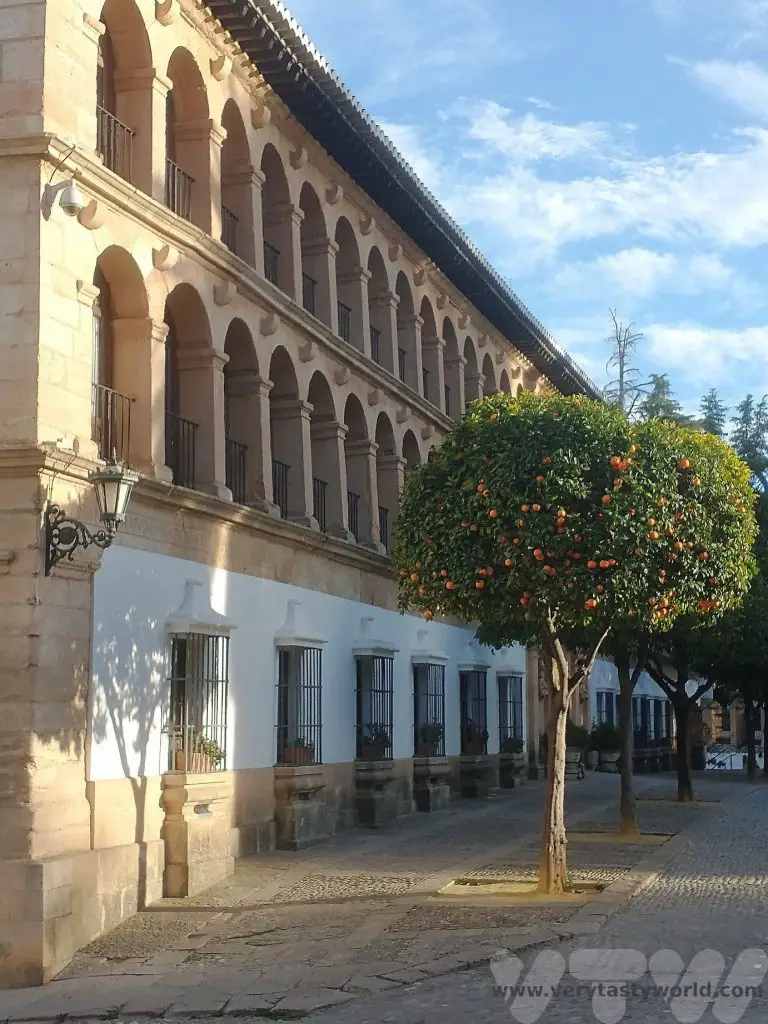
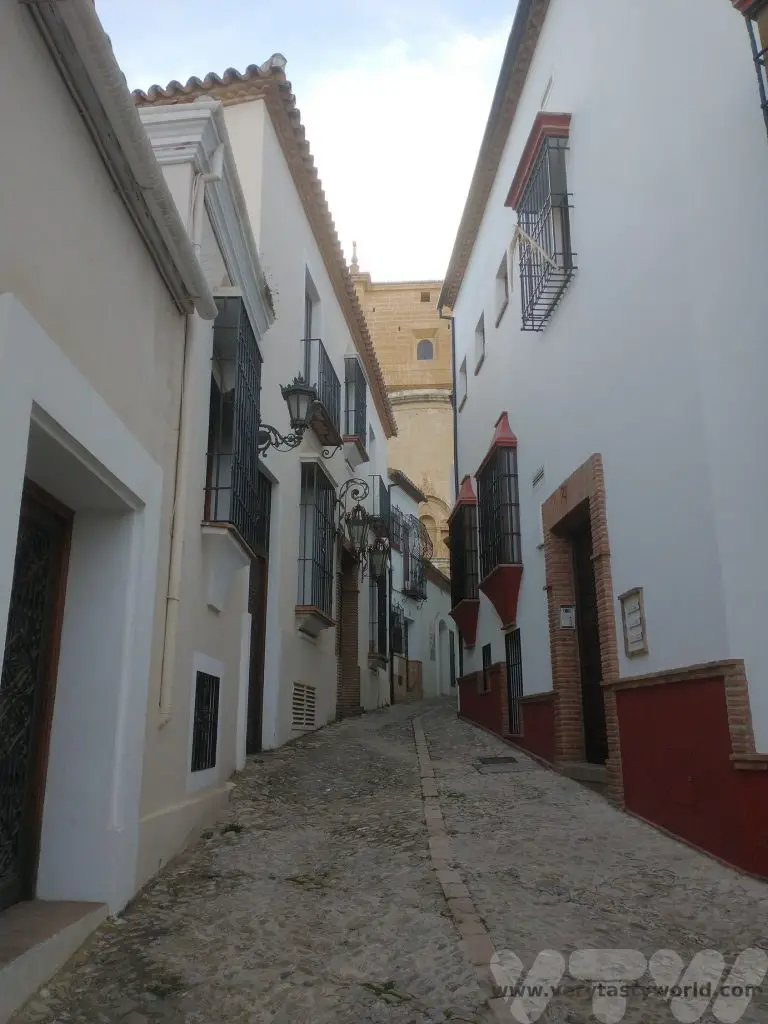
Eating in Ronda
In terms of eating, like much of Spain, Ronda has its fair share of restaurants that offer a menu del dia at lunchtime – a fixed price set menu which is usually good value. Bear in mind that the restaurants are likely to be busy at lunchtime because of the day trippers. Prices in the evening are likely to be more expensive. Sadly some of the restaurants we wanted to visit were closed, so we contented ourselves with tapas followed by churros.
Meats and cheeses in Andalusia are fantastic – with a wide choice available and all delicious.
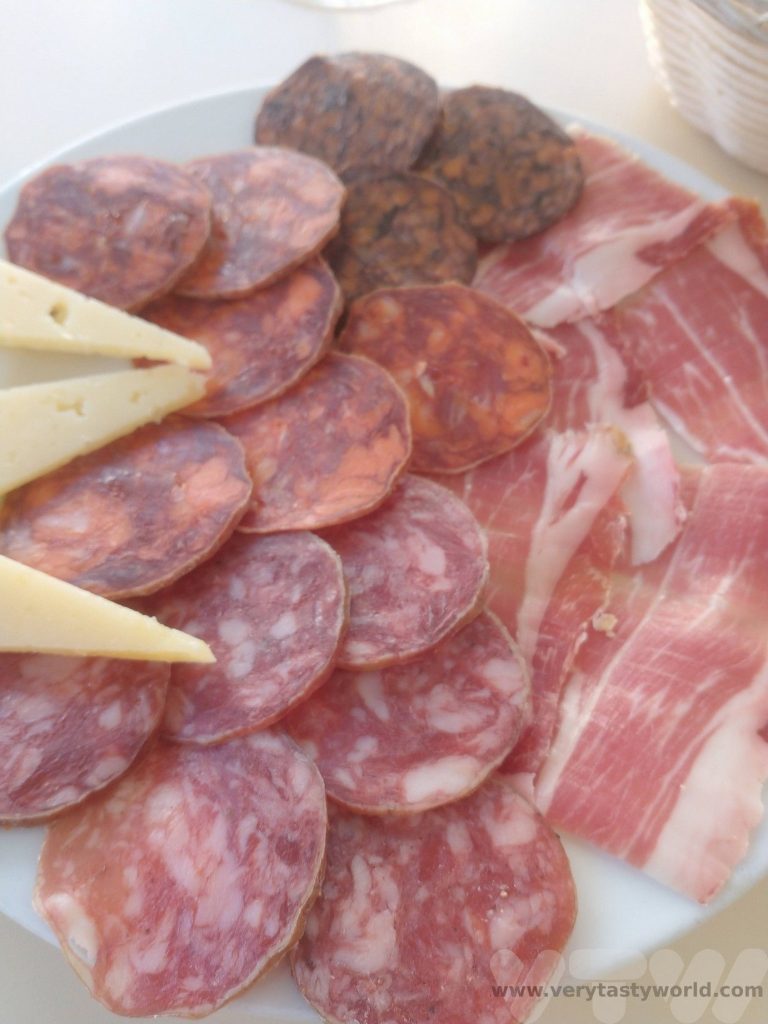
Churros are cylindrical fried dough delights. They can vary in shape and length – some thicker, thinner, longer or shorter, but they usually have a ridge along the length due to the dough being piped into the sizzling oil using an implement called a churrera, which is a bit like a syringe with a star-shaped nozzle. They may also be coated in sugar. Churros are traditionally dipped into hot chocolate, which is rich, thick and deeply chocolatey.
Churros are usually eaten at breakfast but there were restaurants all over Ronda offering them as daytime snacks. They are popular so some cafes may run out later in the afternoon. They are so sweet! We got such a sugar rush we felt like we could have run up and down the gorge several times after eating them.
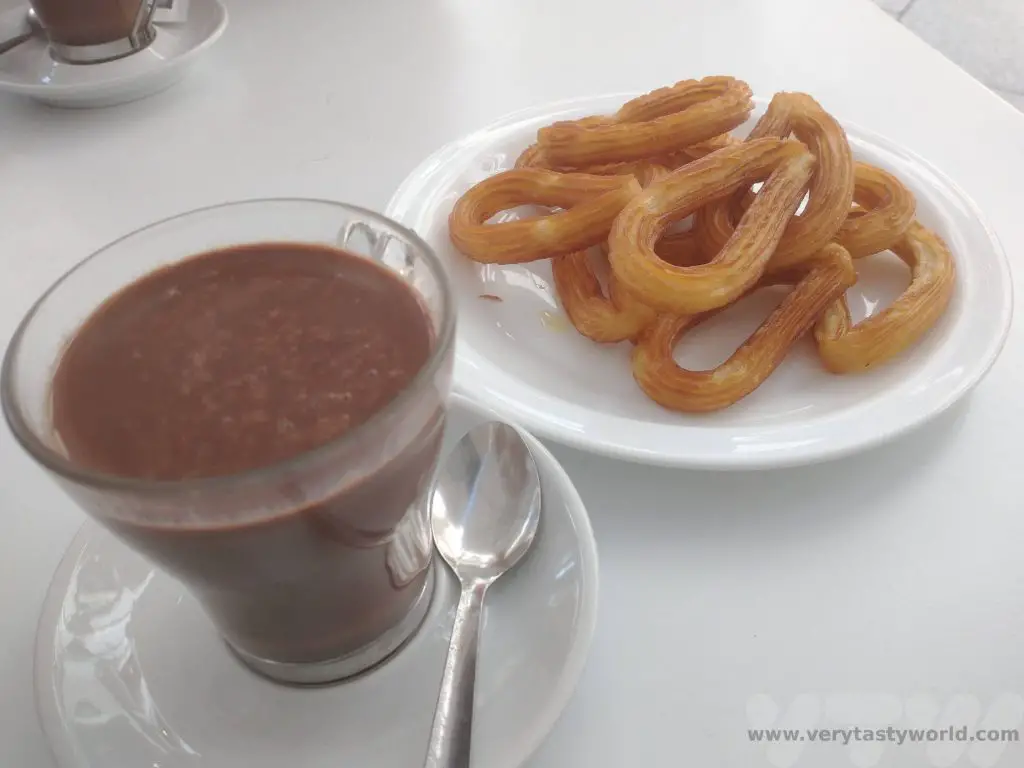
While many people spend just a day in Ronda day, we would actually recommend an overnight stay if possible. One of the reasons for wanting to stay overnight was that we could see the bridge lit up at night. The daytripper crowds will have melted away by this time.
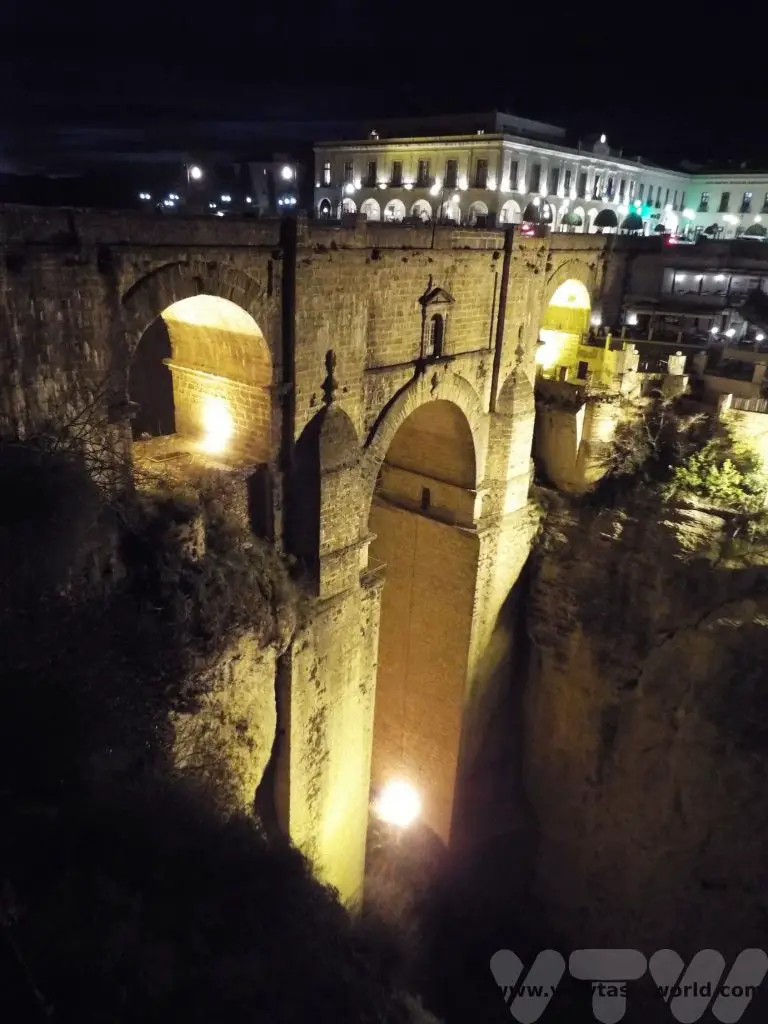
We paid a bit extra for a room with a view of the bridge. It wasn’t quite what we expected – it did include a bit of the bridge but the hotel’s claim that we had a ‘bridge view’ didn’t really meet our expectations. Hey ho.
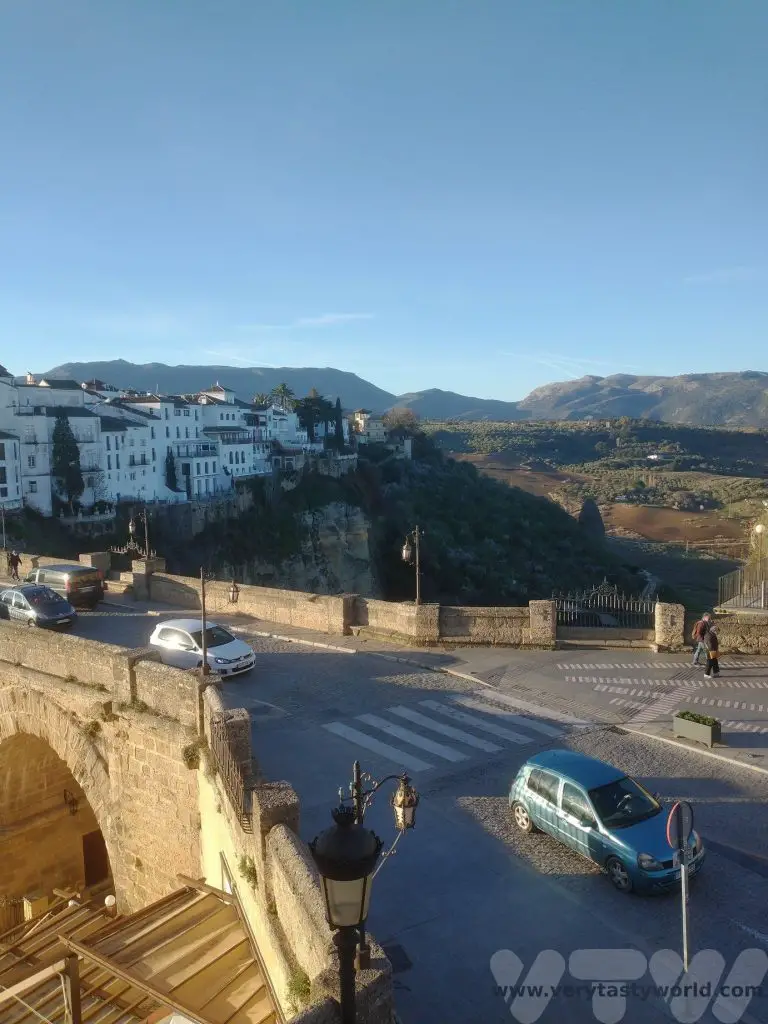
Much better was eating a traditional Andalusian breakfast in their restaurant…
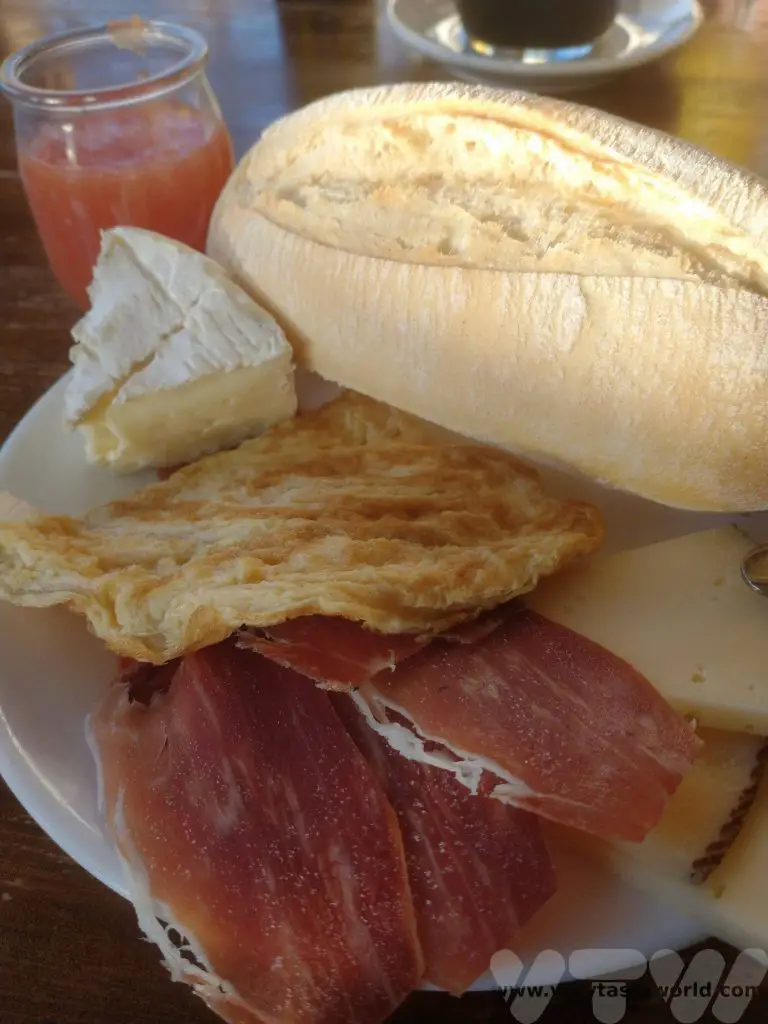
…overlooking the gorge on a beautiful misty morning.

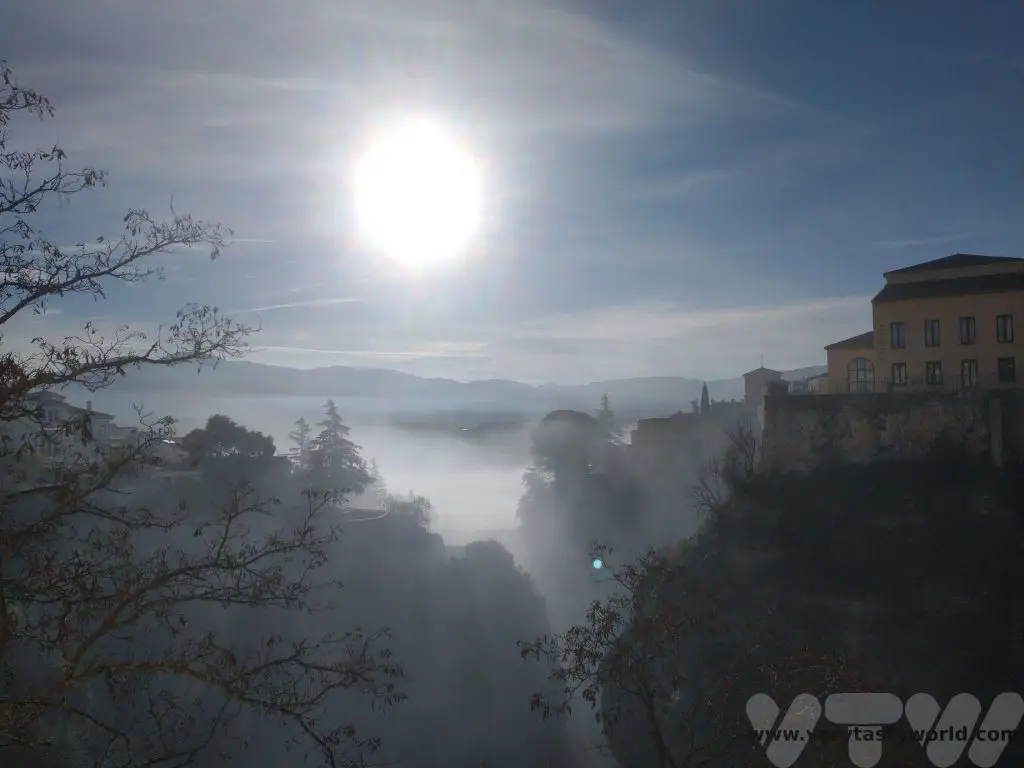
Related Posts You May Enjoy

Visit Torres del Paine National Park in Patagonia
The Torres del Paine National Park in Chilean Patagonia is one of the most breathtaking places to visit in the region. It is wild, windswept and utterly wonderful and we thoroughly enjoyed spending a couple of days exploring.
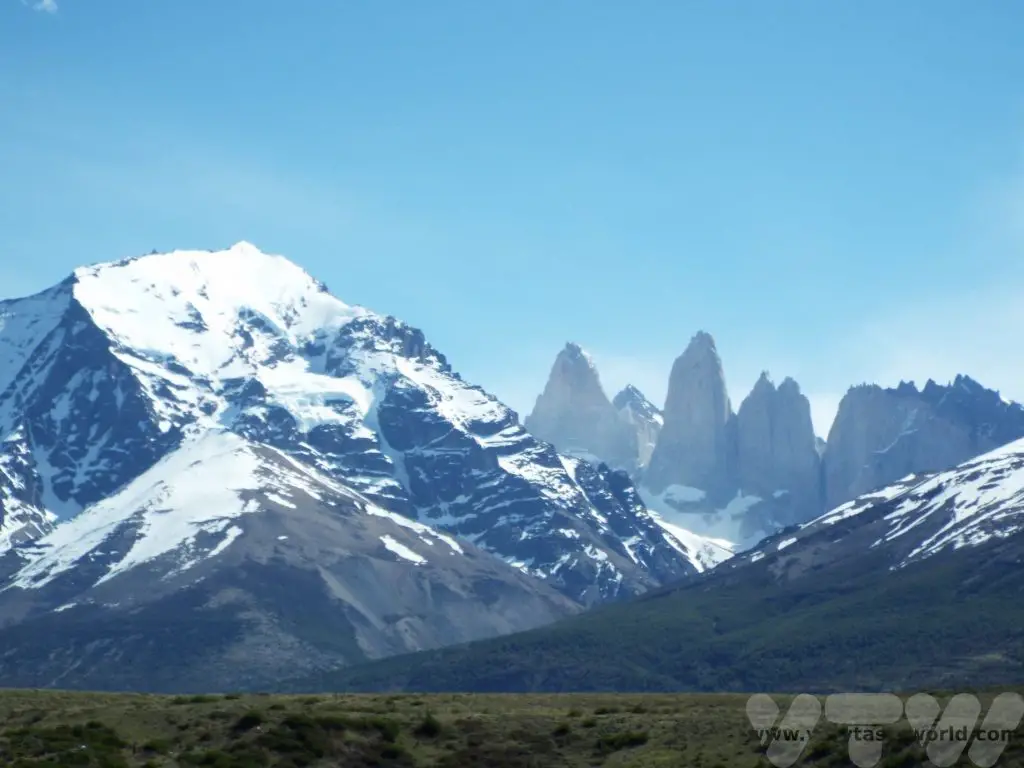
We had flown to Patagonia from Chile’s capital Santiago, where we had spent a couple of days enjoying great seafood at the Mercardo Central and visiting wine country in the Maipo Valley. The flight allowed us to enjoy spectacular views of the Andes and Chilean Lake District as we flew into Punta Arenas.
From there we caught a bus to Puerto Natales which is the gateway to Torres del Paine.
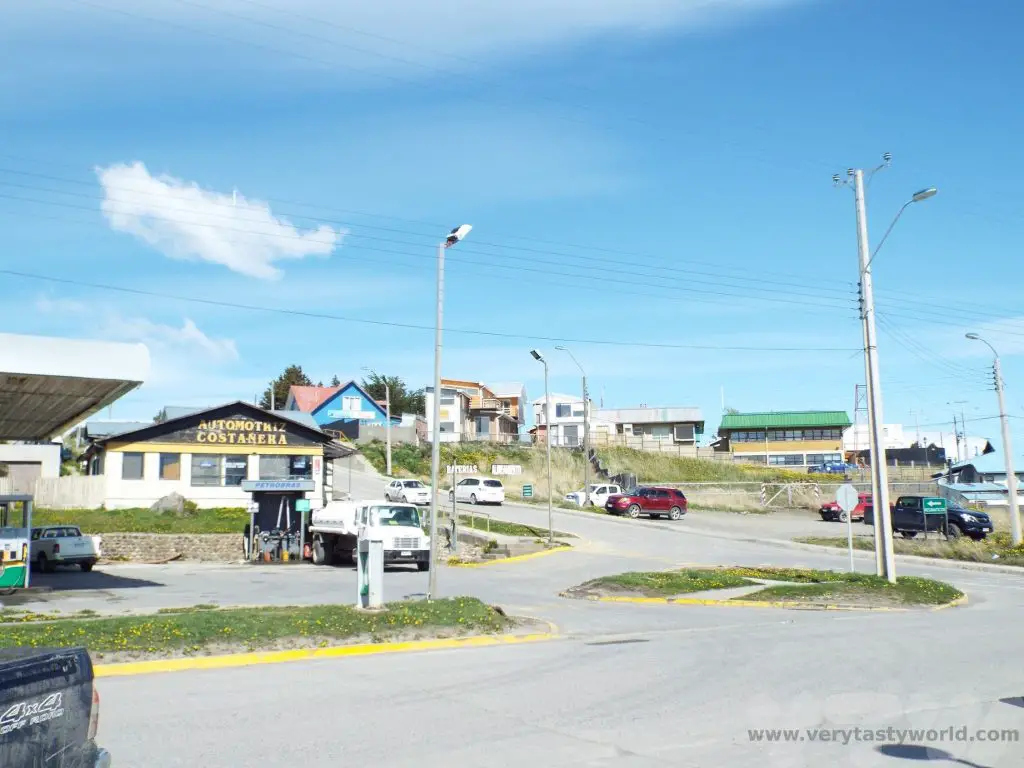
It’s a small town with a pretty lake area and we spent the night there before heading out to Torres del Paine.
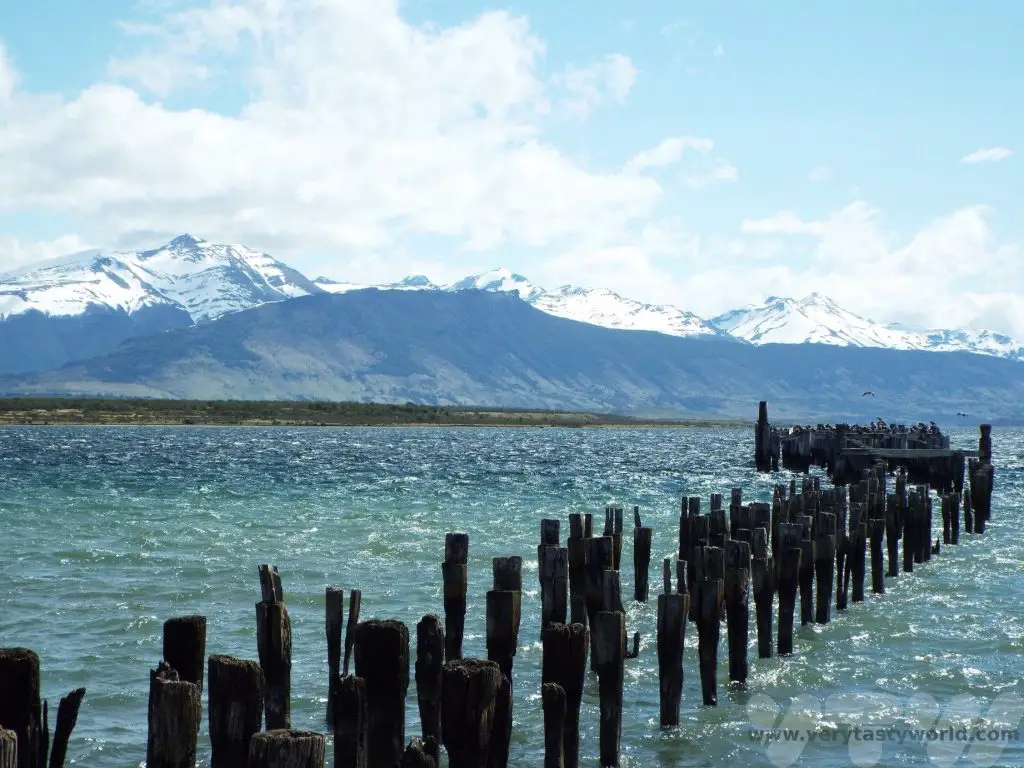
There were plenty of restaurants in town offering great seafood. With its incredibly long coastline, Chile can offer some of the best seafood on the planet. We enjoyed lots of fresh seafood platters in Patagonia, all of which were utterly delicious.
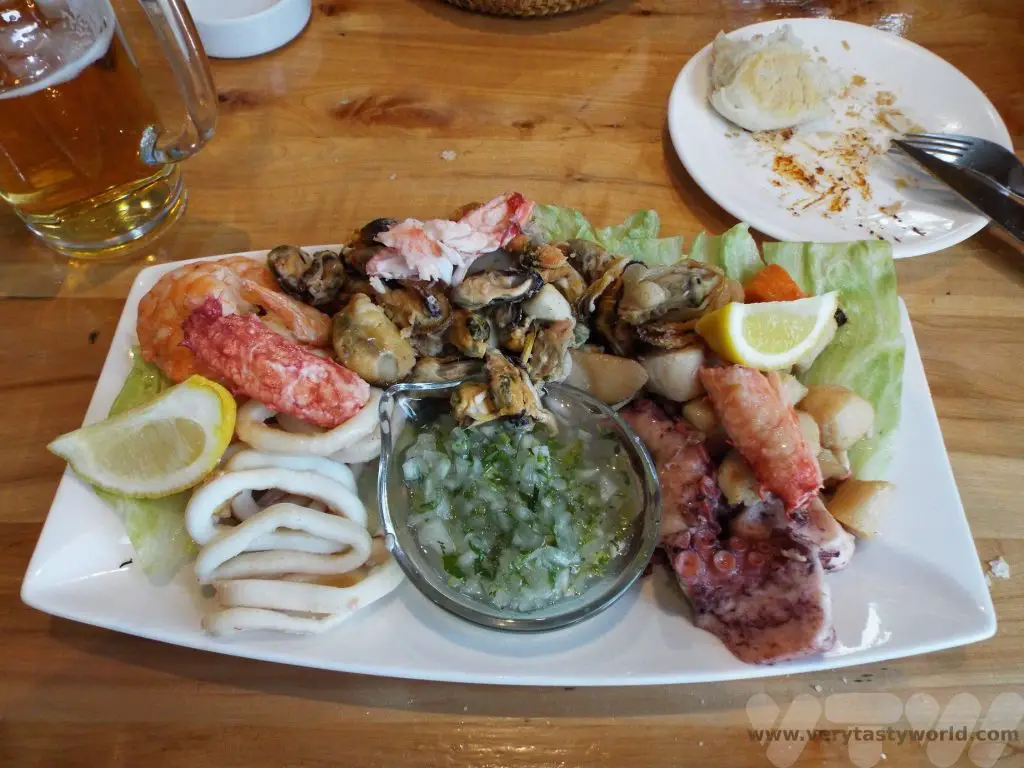
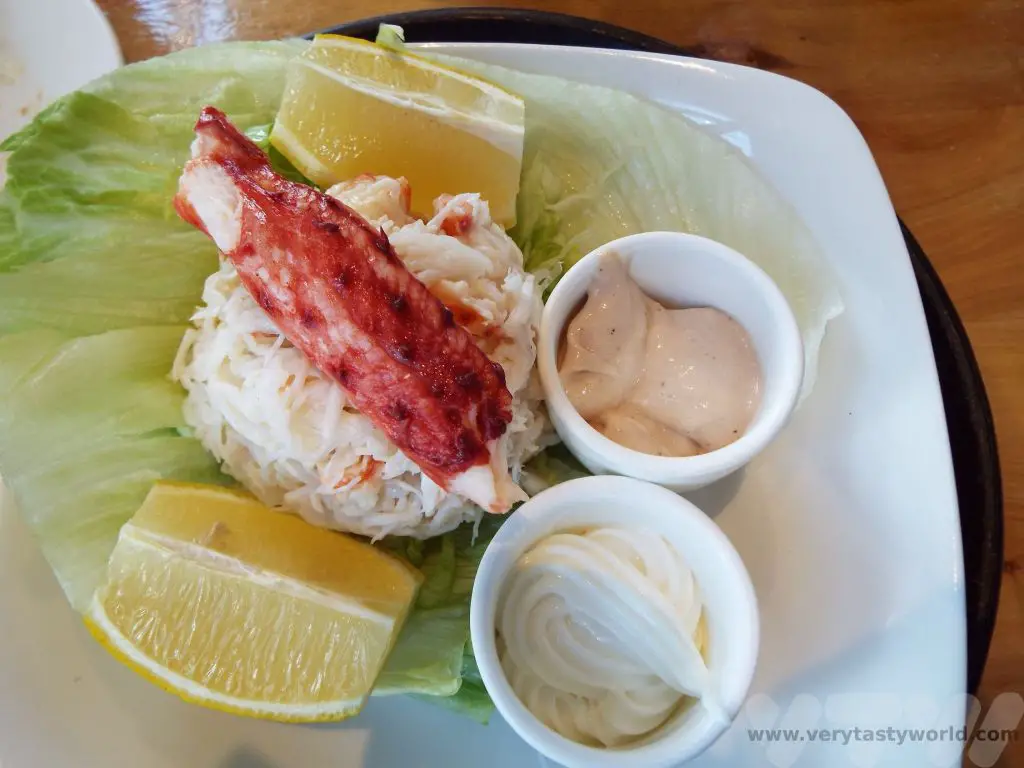
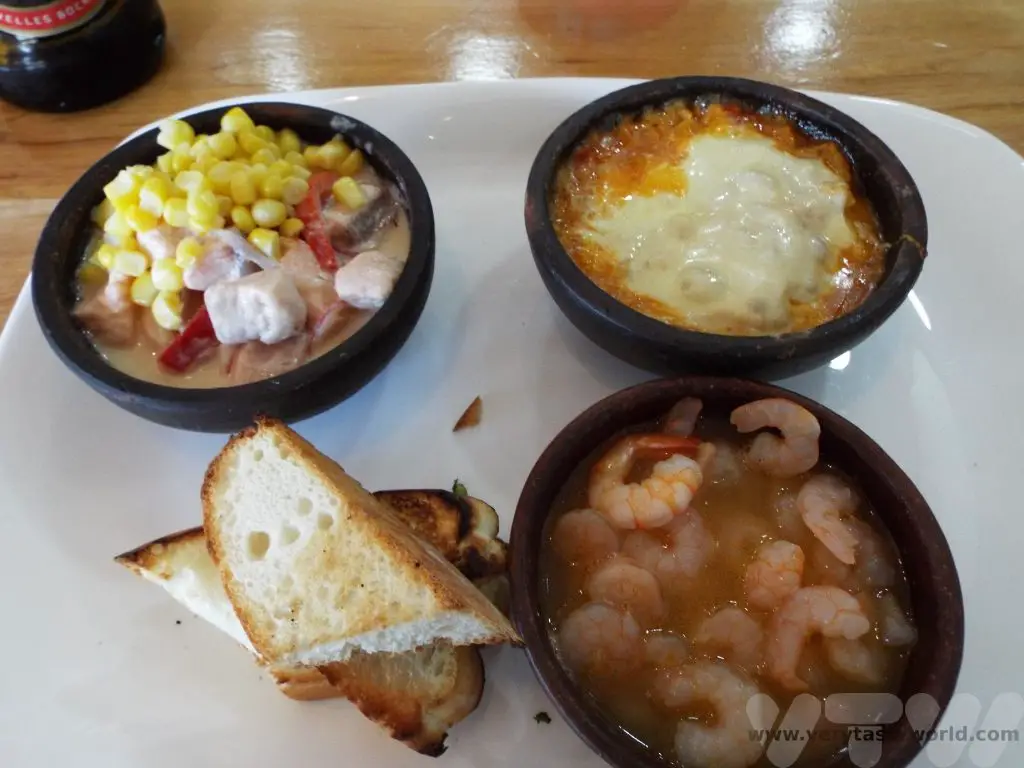
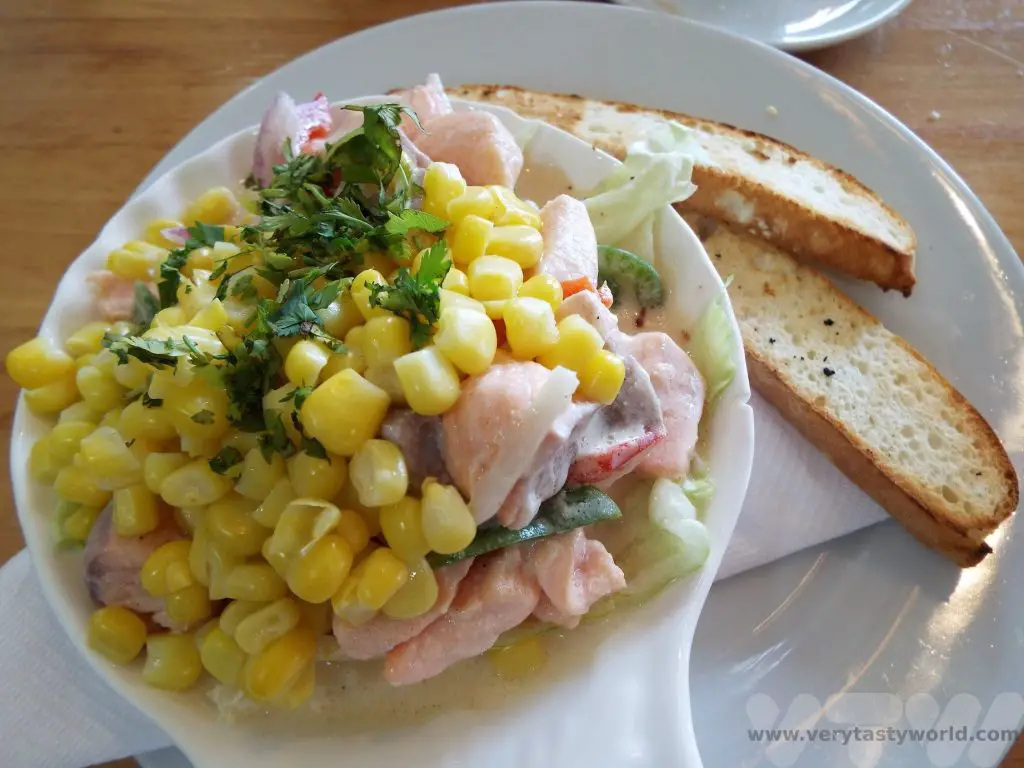
And an intriguing dish called king crab pie. We weren’t sure what it was, so we had to order. It was a gratinated dish – delicious crab meat in a cheesy sauce.
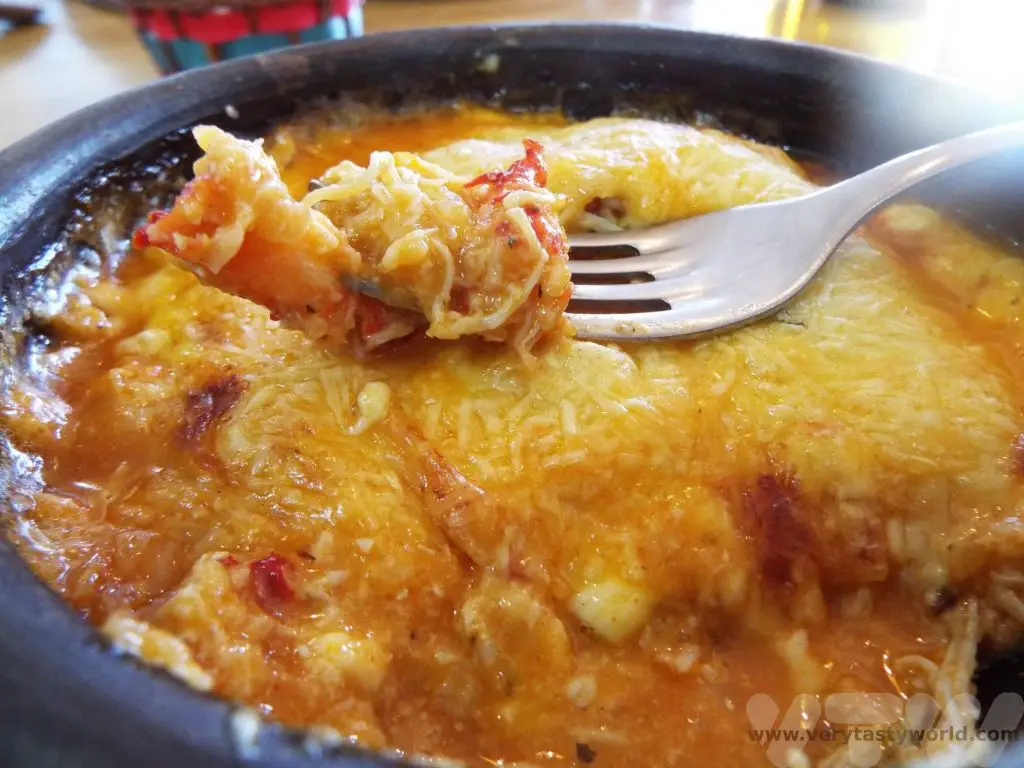
Visiting Torres del Paine – Practicalities
We hired a car for just a couple of days to take us to the National Park – the driving was very easy on clear roads. It is possible to pick up a car at Puerto Natales – the hiring process was all very straightforward and all we needed was a standard driving licence and an international driving permit. We definitely recommend driving if possible – the park is very large with amazing scenery and a car is the best way to visit the various locations at your own pace. However, buses are available from Puerto Natales and run on a regular schedule. It is also possible to join a tour – there will be agencies in Puerto Natales or Punta Arenas which offer coach tours.
When you visit Torres del Paine you have a choice of multiple entrances to the park – the tourist information centre in Puerto Natales gave us a free map of the area. It’s a maximum of 132 km from the town on well-made roads that are clear of traffic.
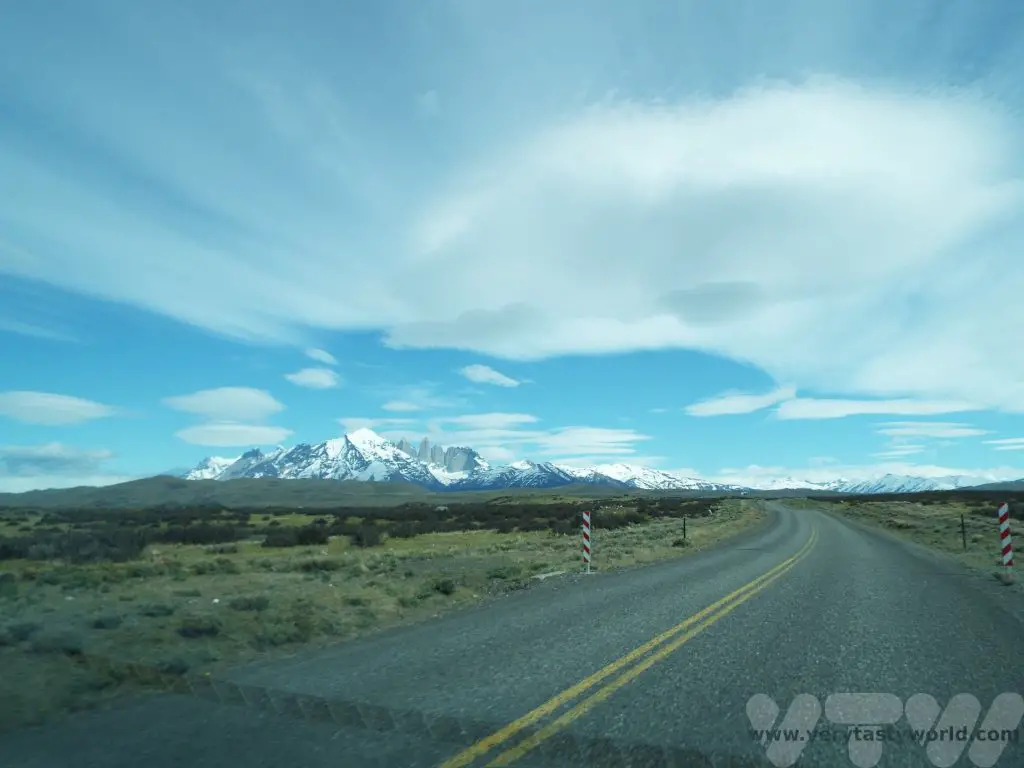
It wasn’t long before we spotted Torres del Paine’s cuernos – ‘horns’ – the famous granite peaks that rise upwards of 2000m and define the area. The cuernos have brilliantly descriptive names: Aleta de Tiburón (Shark’s Fin), Fortaleza (Fortress), La Espada (The Sword), La Hoja (The Blade), La Máscara (The Mask), Cuerno Norte (North Horn), and Cuerno Principal (Main Horn).
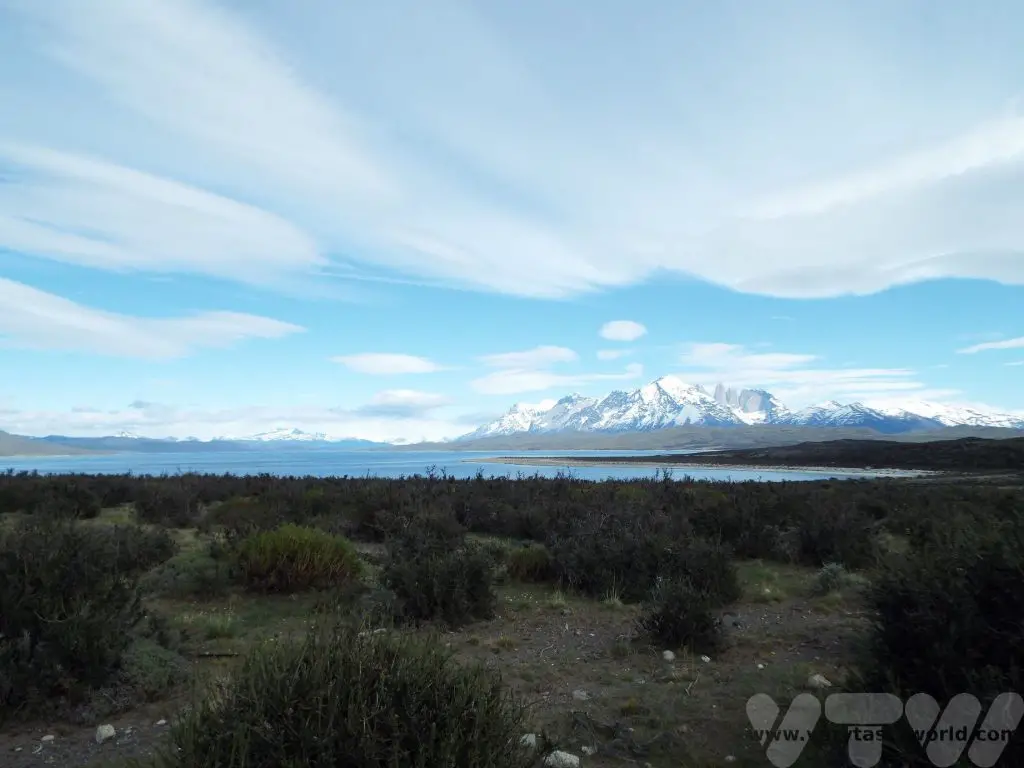
You need a ticket to enter the park – follow this link for entrance fees and ticketing information.
You also need to register at the park entrance – just show your tickets at the checkpoint.
Once inside the park the roads are more ‘natural’ – narrower, even single track in places, and many were of a gravel construction. This didn’t make the driving much more difficult – we just had to take a bit more care when encountering cars or coaches coming in the other direction.
The region is stark, wild and windswept and every inch of the journey offered us fantastic views.
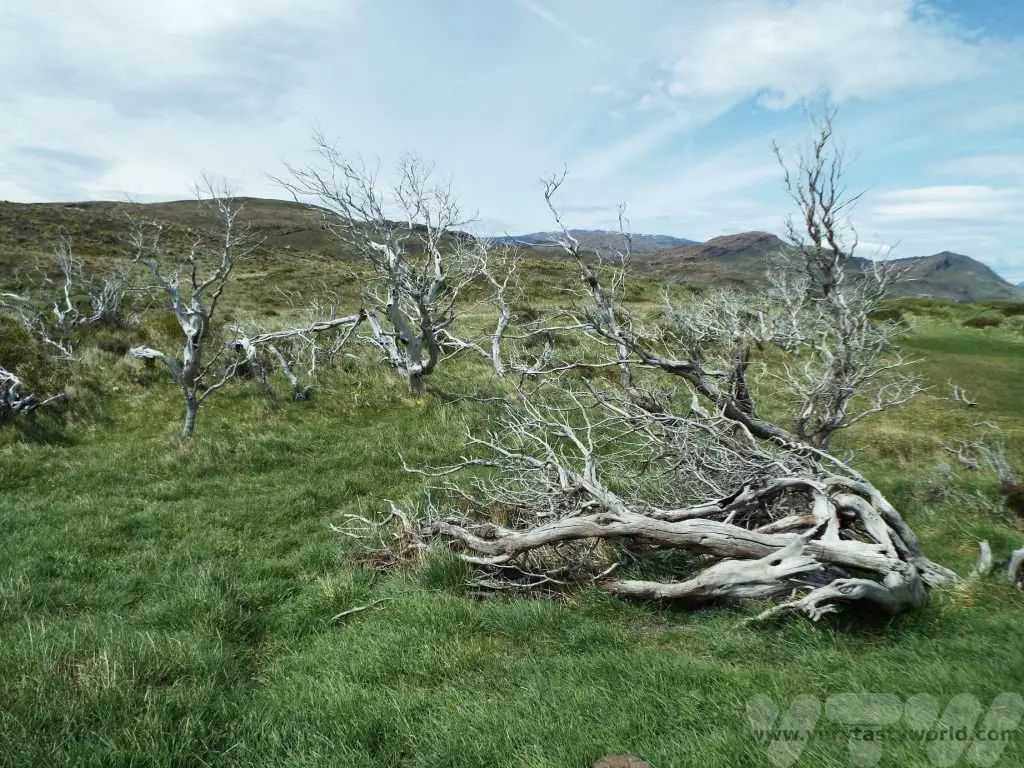
A Tour of the Park
The park is stunningly beautiful and joyful to drive through. There are plenty of places to stop and admire the views of the mountains and lakes. If you are serious about hiking, there are a number of routes through the region, some of which can take several days to complete. We were more limited on time so enjoyed a leisurely combination of driving to the many scenic places and taking lots of walks in those areas.
We passed by Lake Nordenskjöld with its turquoise water…
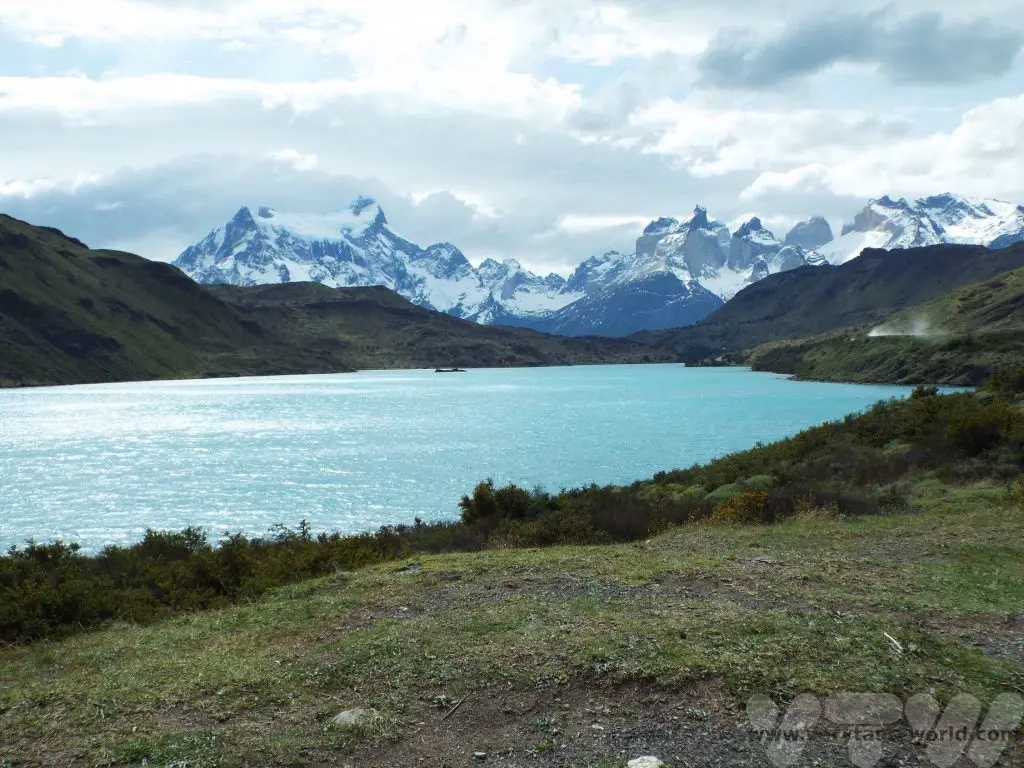
… and towards Salto Grande Waterfall is on the Paine River, fed by Lake Nordenskjöld. The falls drop around 15m into Lago Pehoé.
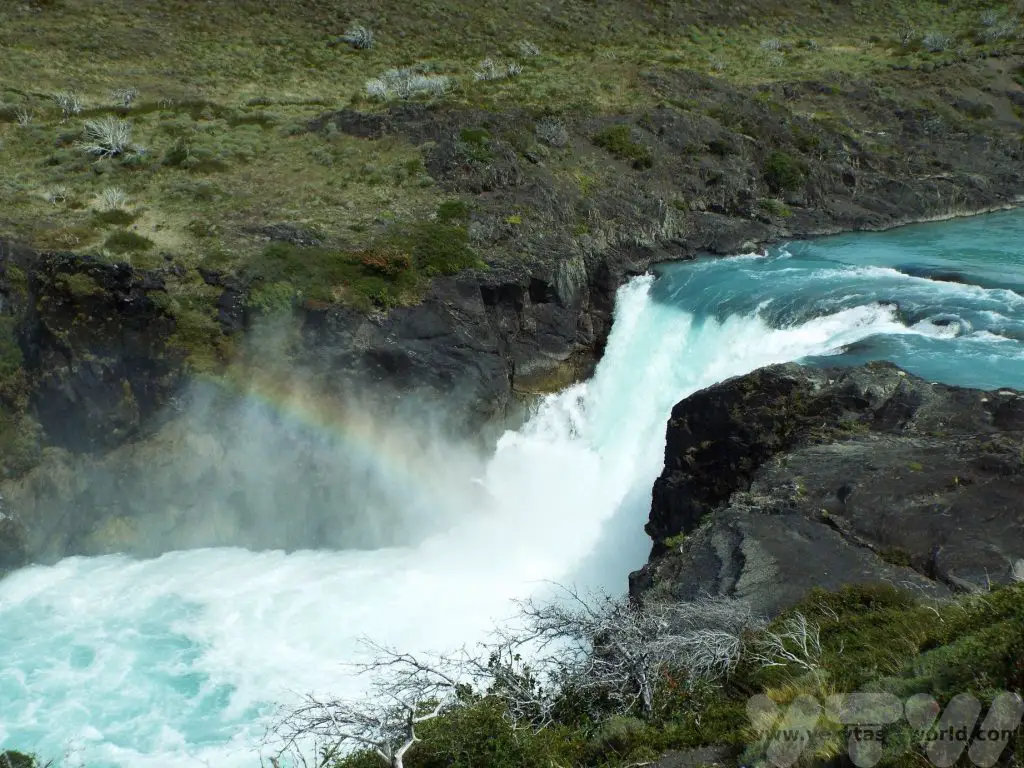
Lago Grey
Grey Lake’s name suits it perfectly. It is a fed by Grey Glacier which is part of the Southern Patagonian Ice Field. The glacier is around is thirty metres high at its highest point and approximately six kilometres wide. There is a visitor centre for Lago Grey close to the road which offers parking and refreshments/toilet facilities. It is possible to walk a 6km trail onto a desolate but strangely beautiful beach to view the lake and the icebergs that float serenely across it.
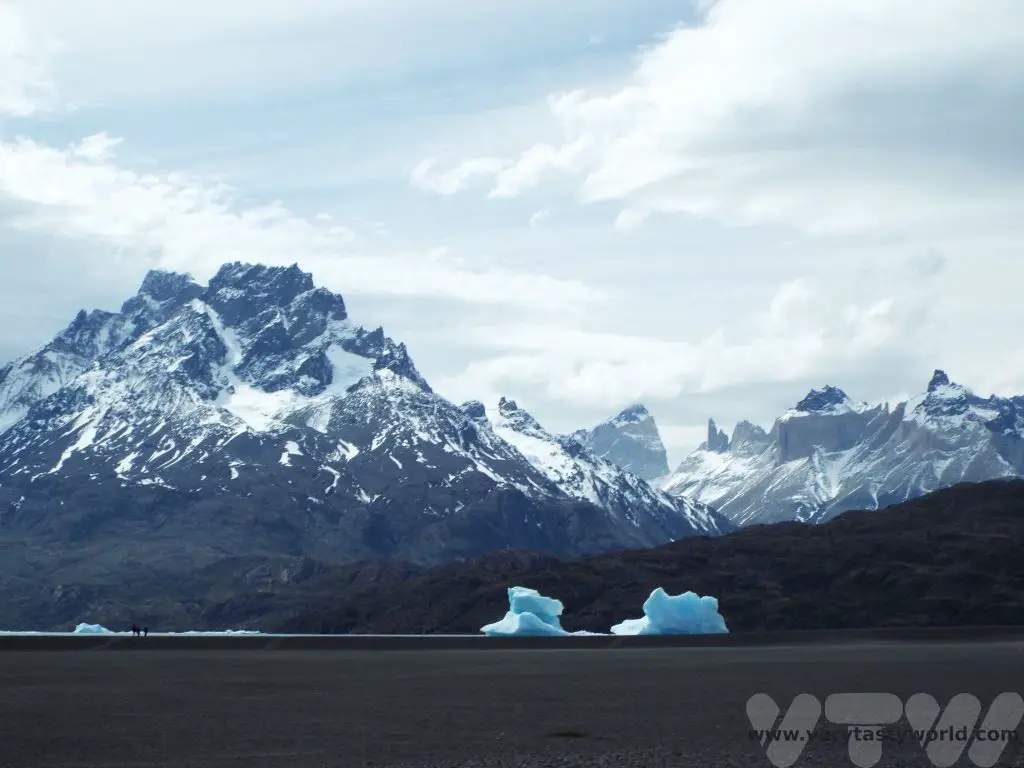
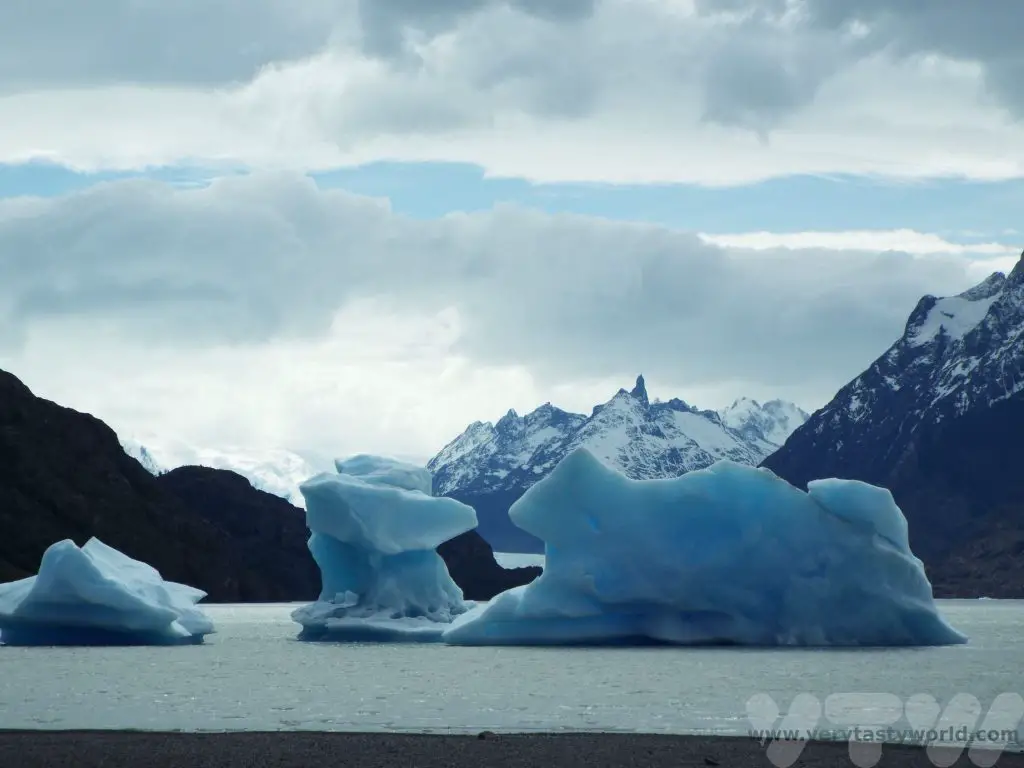
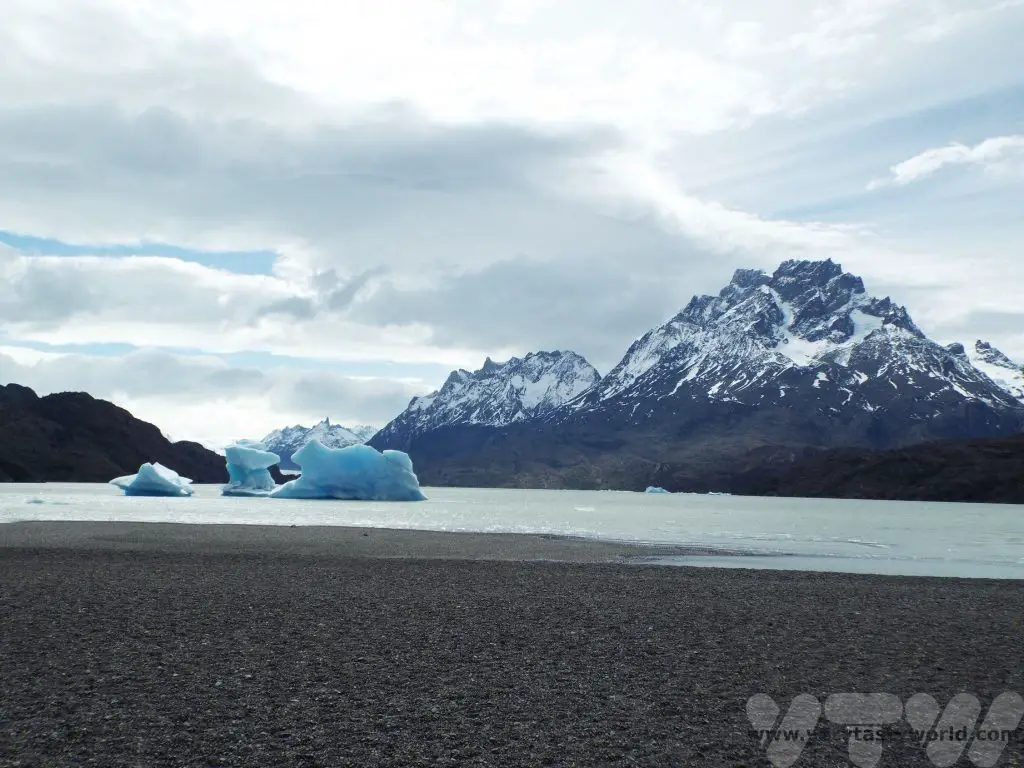
It is also just about possible to see the glacier way across the lake.
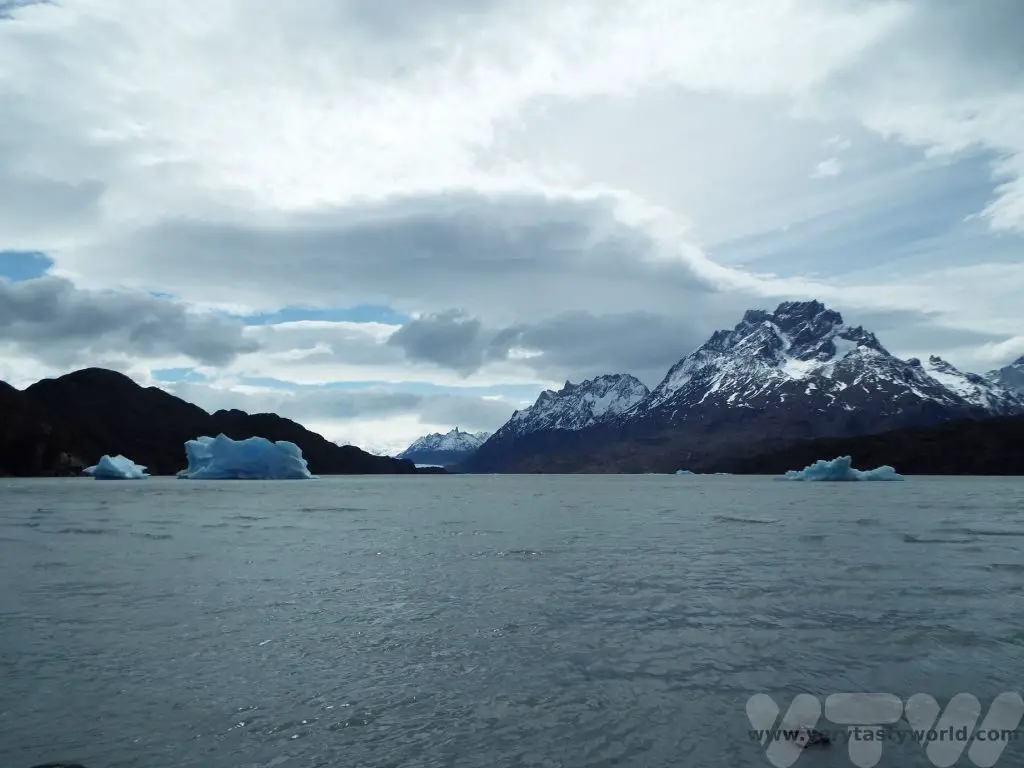
Base de Torres
We then drove up to the Base de Torres towards our hotel for the night. We stayed at Hosteria Los Torres, which was the posh accommodation option and a bit of a splurge for us.

There are cheaper accommodation options, including shelters and campsites.
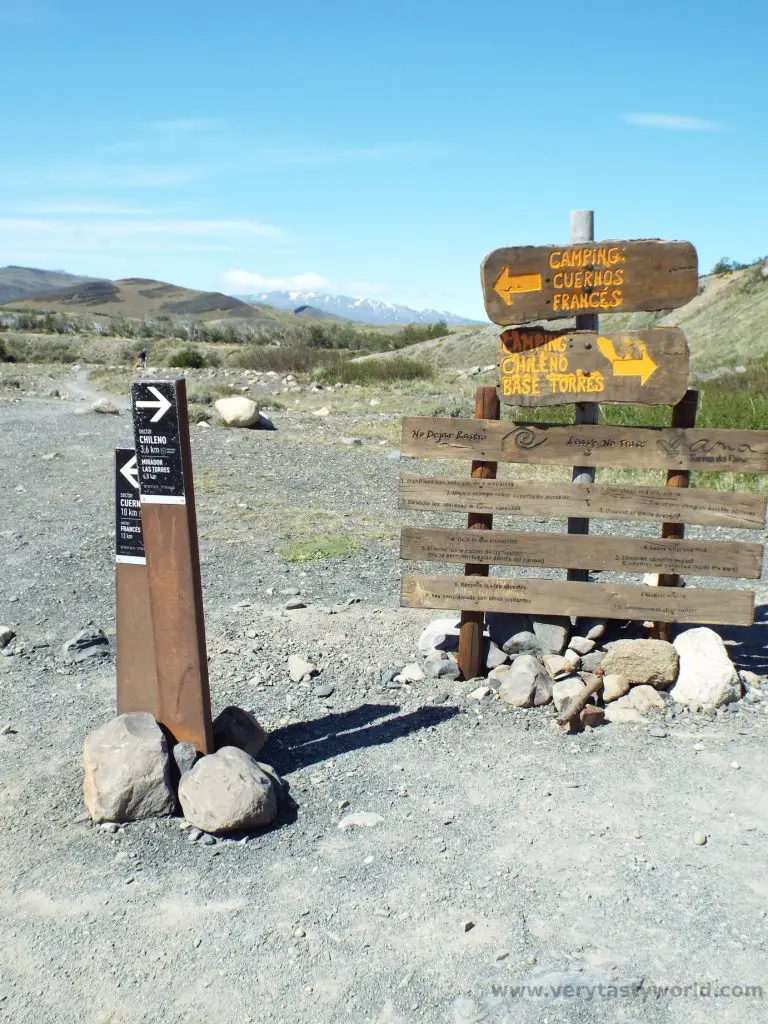
The following day we enjoyed some hiking along the Base de Torres path. We didn’t have time to do the full trek (the round trip takes around 7 hours) as we wanted to spend time exploring other areas of the park, and also needed to return the hire car, but we enjoyed a lovely, long walk on a gorgeous day. We visited in October, which was just at the start of spring and we were expecting the weather to be cold. It wasn’t – the temperature reached an unseasonably warm 20 deg C but the breeze was strong which made for perfect walking weather.
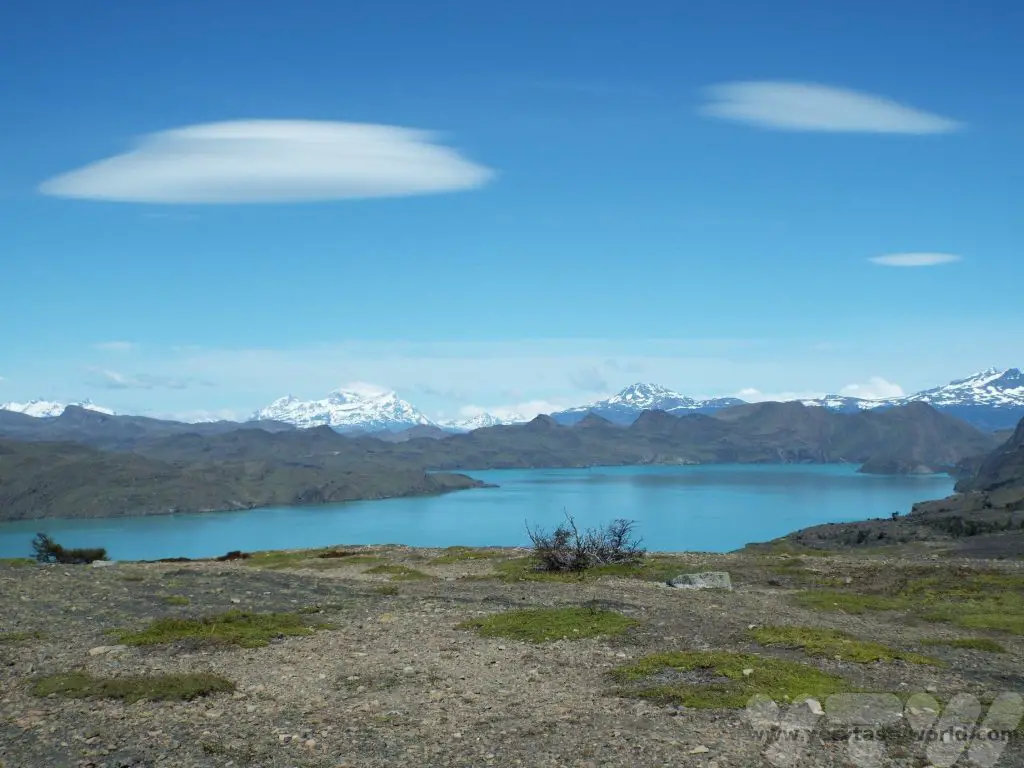
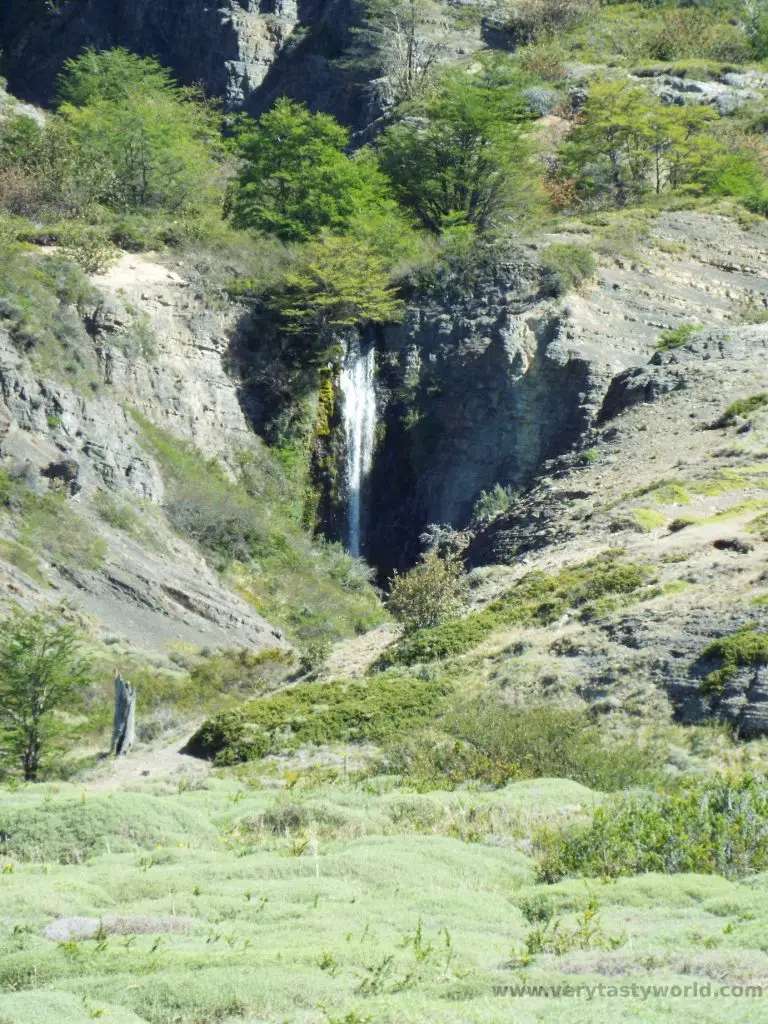
Laguna Azul
Before leaving the park we took a detour to view Laguna Azul. The road to the lake offered some fantastic views of the Torres Peaks along the way.
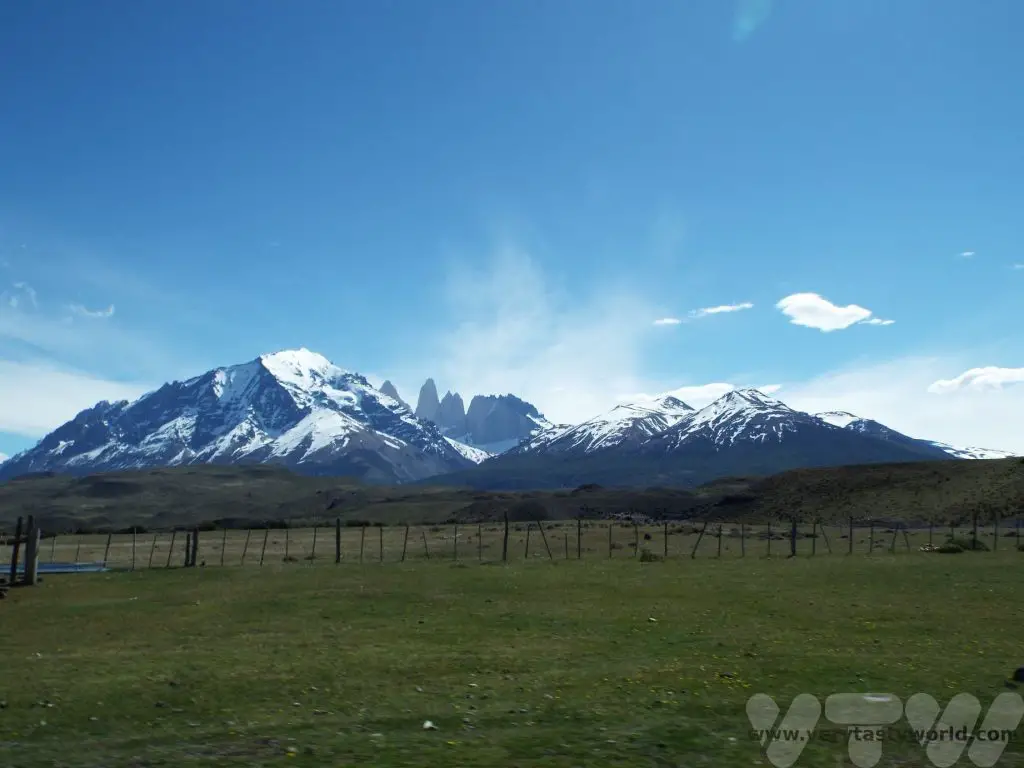
And the lake itself is very pretty.
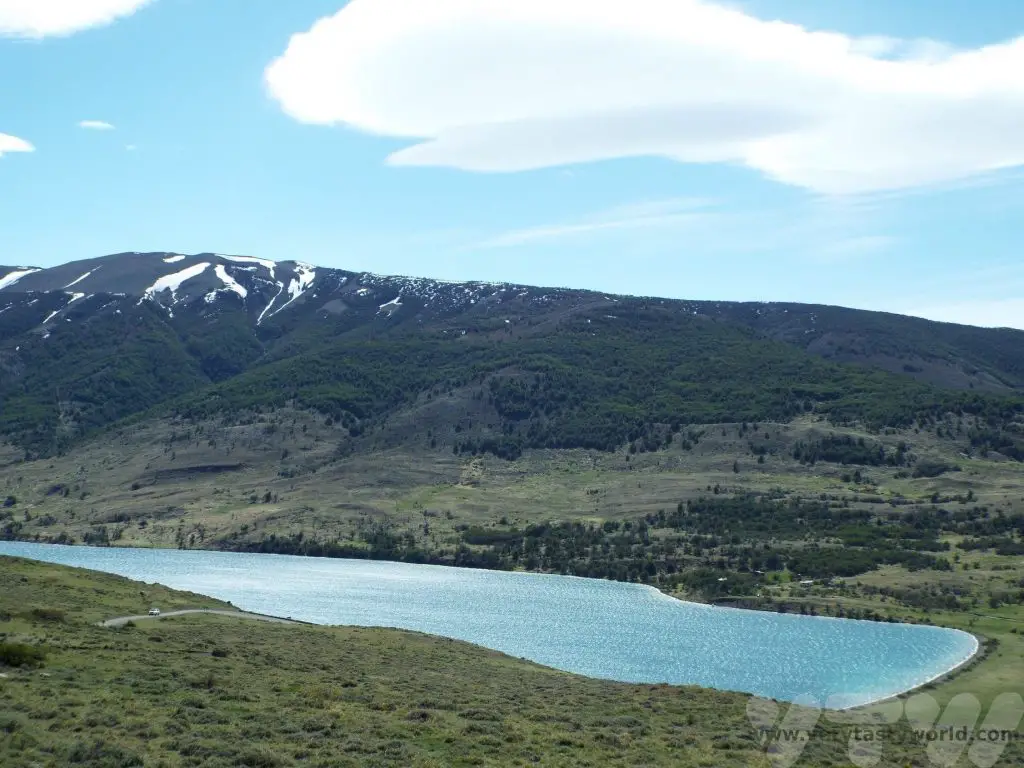
Wildlife in Torres del Paine
There is plenty of wildlife in the area although, as with all wildlife, the clue is in the name: it is wild and therefore sightings cannot be guaranteed. We were unbelievably lucky during our visit. One tip that we learned many years ago: if you see people stop, look in a particular direction and point, go over to them and find out what they are pointing at. It’s usually something interesting.
We were initially quite confused by guanacos – when we first saw them we knew they weren’t llamas or alpaca, but weren’t quite sure what they were. Fortunately local people were around to tell us about them. They were to be found all over the park.
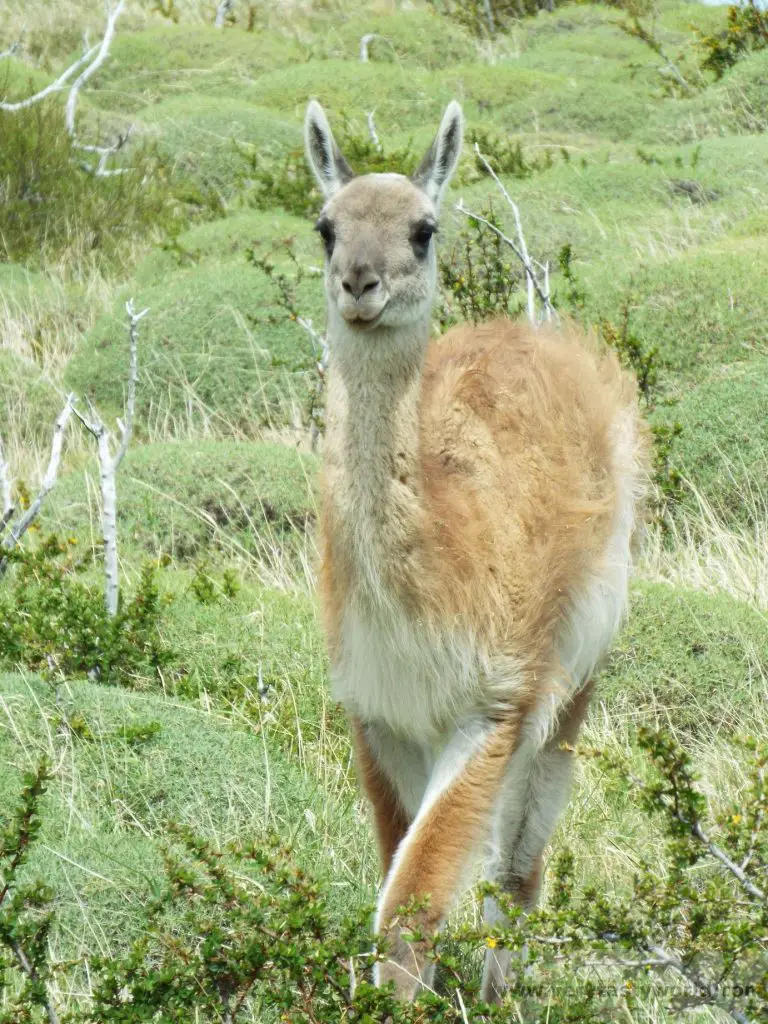
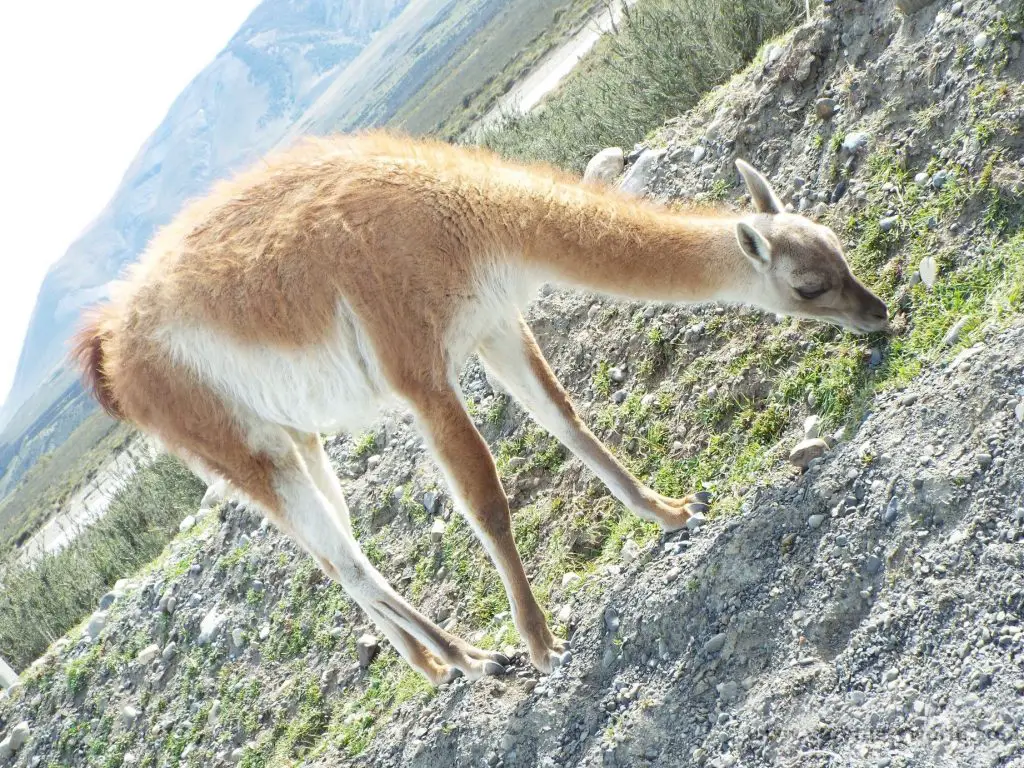
Because it was early spring when we visited Torres del Paine, the rutting season was beginning. The males compete with each other to impress the lady guanacos. They had a very funny rutting technique. (The background noise is the wind – Torres del Paine is very windy!)
We also spotted hares and lots of birds
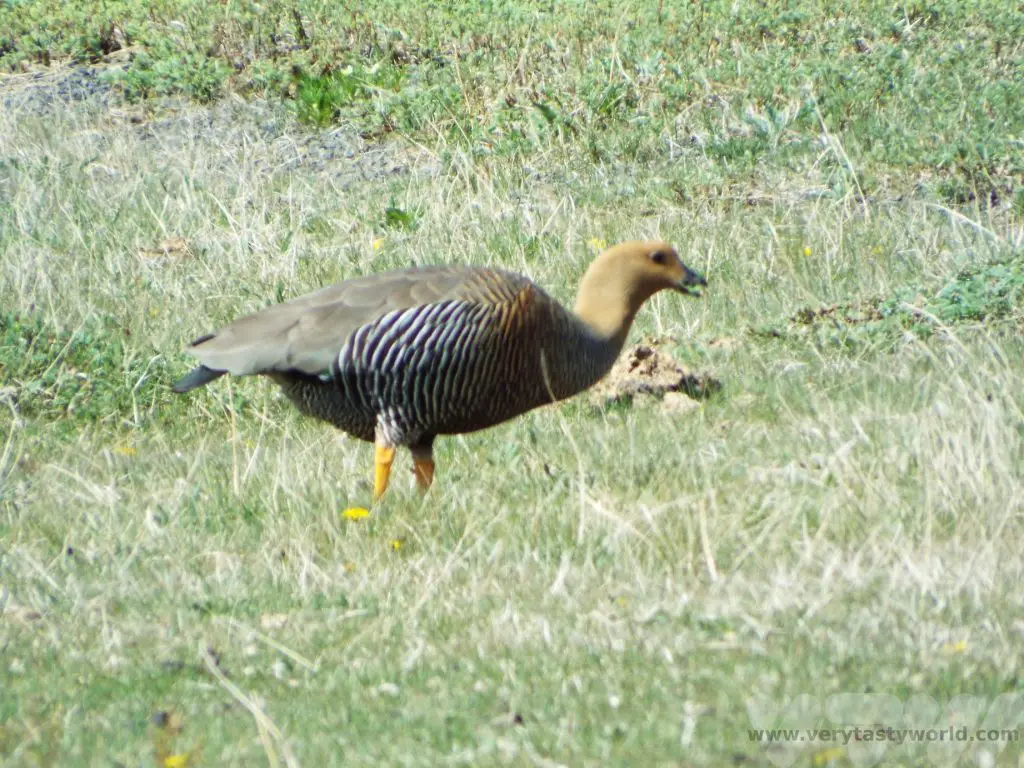
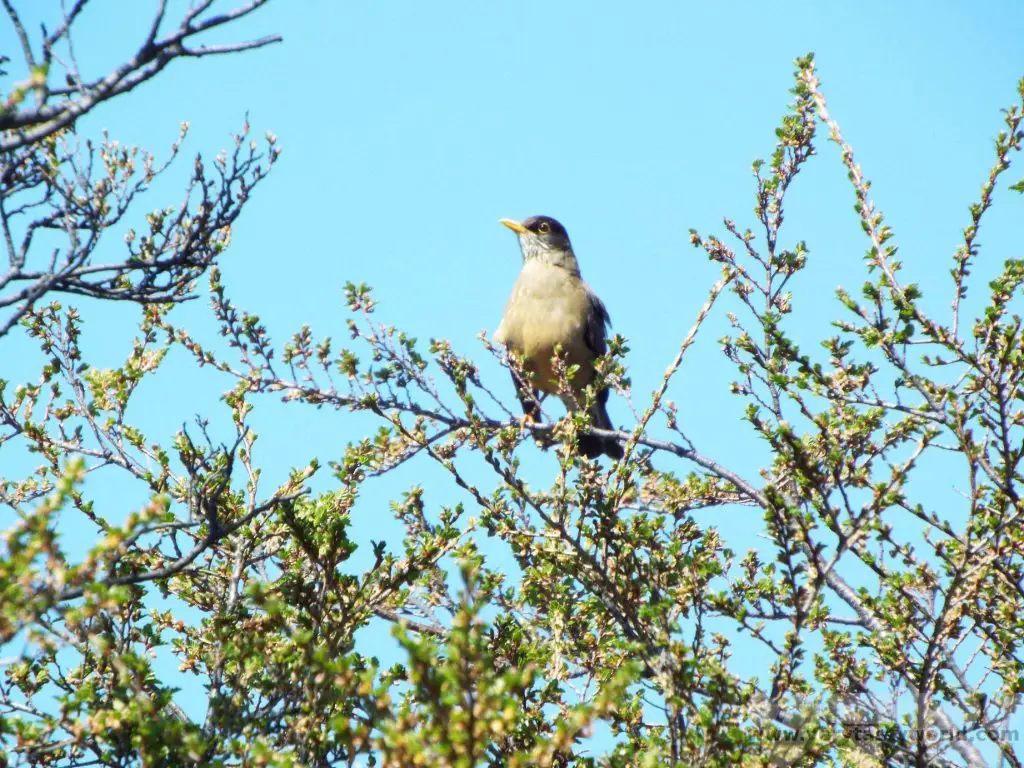
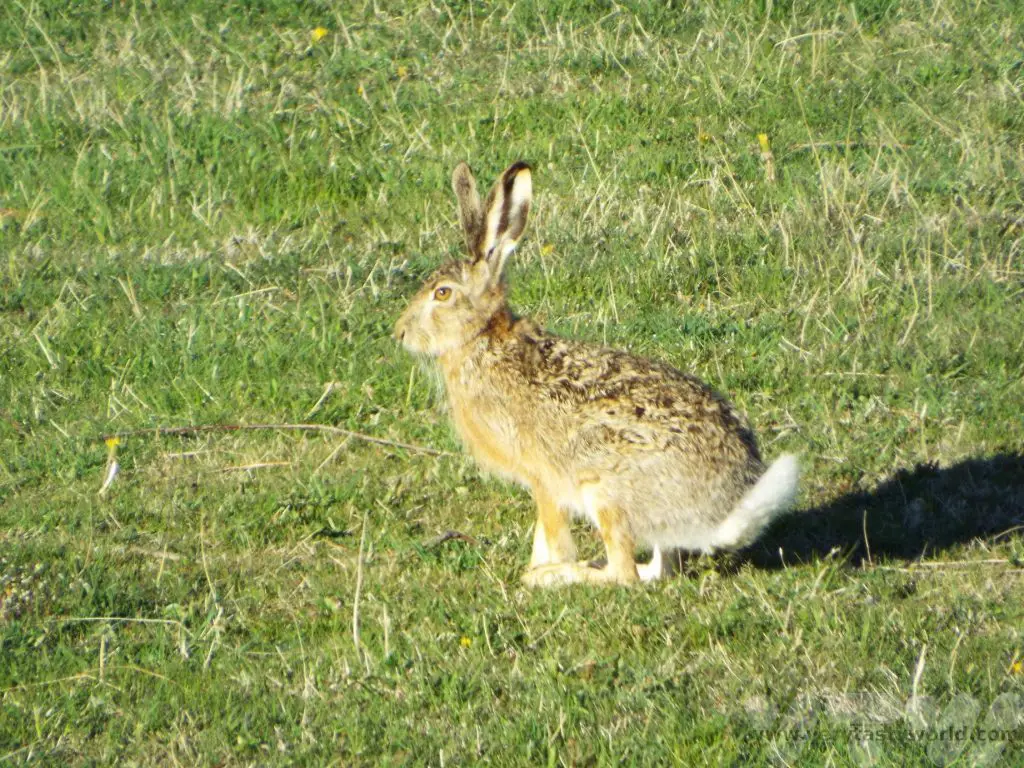
There are apparently around 200 puma living in the area, which is one of the highest concentrations in the world. They are generally quite shy and, although it is quite common to see evidence of their kills along pathways, we didn’t have high expectations of actually encountering one. You obviously have to be cautious – while they are unlikely to attack, they are big, wild cats so it is important to keep a distance. Also, never run away from a big cat – it would definitely want to chase!
We were lucky enough to see this magnificent puma on our Base de Torres walk. It was casually striding through the long grass. We got chatting to another walker as we climbed further up the route. He had been searching for a puma all day and was very envious of our sighting. We pointed him in the direction of where it had been heading but it was probably long gone.
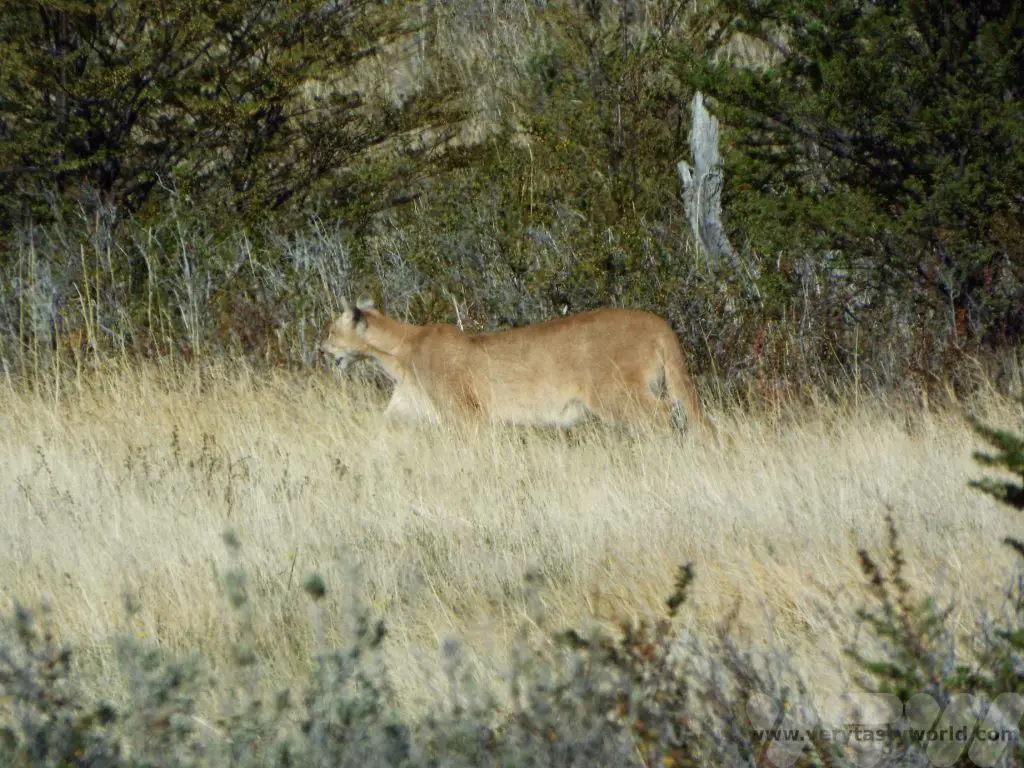
Having been lucky enough to have seen so much of the local wildlife, just as we started the drive back to Puerto Natales, we commented to each other that it would have been perfect if we had been able to see a rhea. And what should appear?
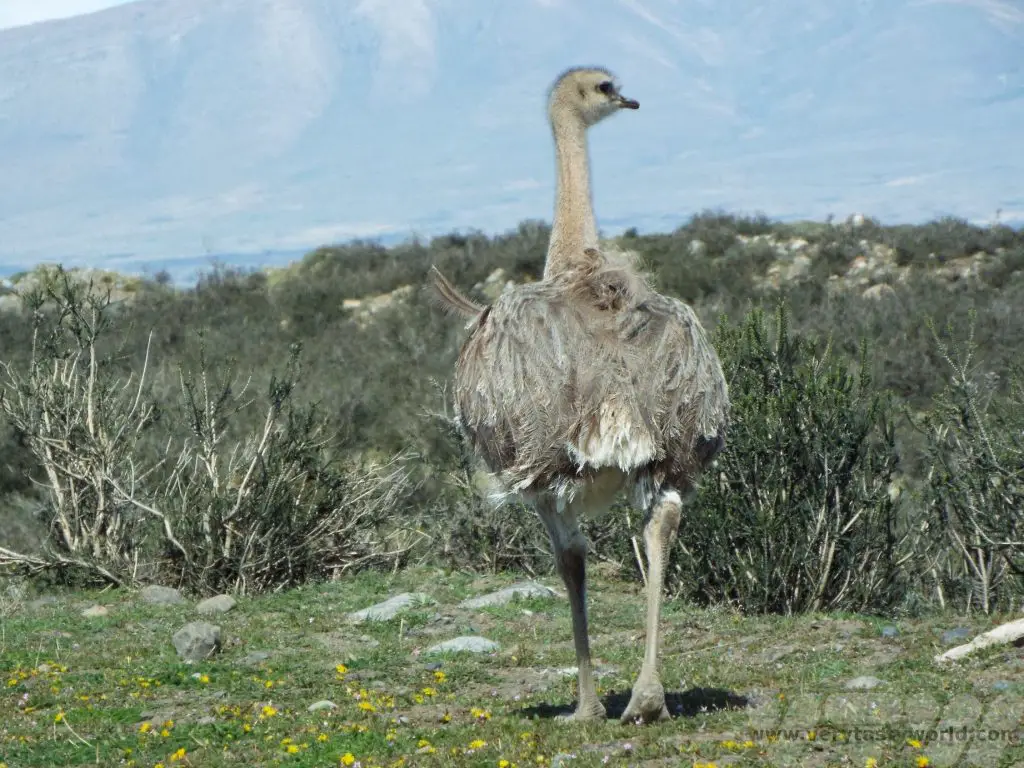
A rhea is a large, flightless bird which is similar to an ostrich. This one was enjoying a strut through the scrub.
And then, on our return to Puerto Natales, we spent one more night enjoying more seafood before heading for the bus stop the following morning, in order to make our way across the border into Argentina. Our aim was to visit Los Glaciares National Park at El Calafate and to hike in El Chalten. Torres del Paine was one of the highlights of our trip to Patagonia – wild, desolate and utterly magical.
Related Posts You May Enjoy

- Best Time To Visit Machu Picchu 2024 Update
- A 2 Week Patagonia Itinerary
- Day of the Dead in Campeche
- A Galapagos Land Based Itinerary
- RECIPE: How to Make Costa Rica’s Gallo Pinto
- A Tasty Puebla Food Tour
- Costa Rica Wildlife Sanctuary – Caño Negro
- Visit Torres del Paine National Park in Patagonia
- Atacama Desert Itinerary
Things To Do In Oban, Scotland
Oban is a town in Argyll and Bute located around a pretty bay on the west coast of Scotland. It’s a popular place to visit and also has a ferry port from which it’s possible to travel to some of the western islands and as such is often considered the gateway to the Hebridean islands. But there are plenty of things to do in Oban itself and the surrounding area.
A Towering Folly
McCaig’s Tower is the town’s most prominent landmark, set on a hill looking over the bay. It was funded by John Stuart McCaig in 1897, a local banker who wanted to ensure employment for local builders and stonemasons as well as to leave a monument dedicated to his family. But he died before his plans fully came to fruition and, although he left a legacy for its completion, his family contested this and work stopped.
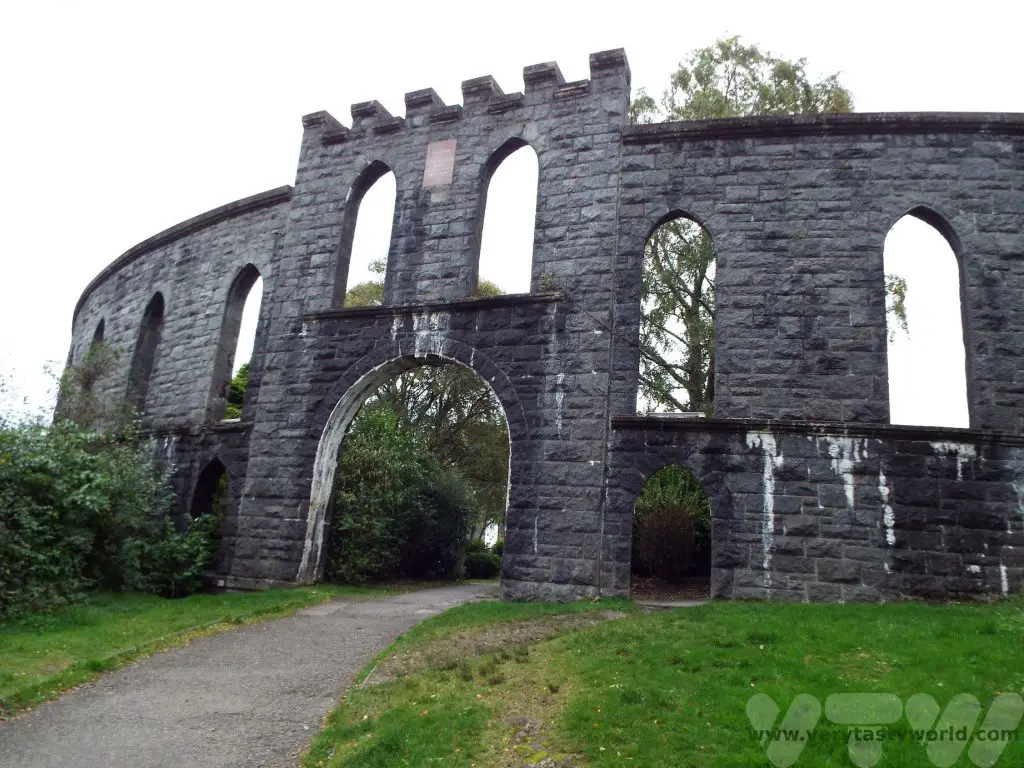
McCaig had apparently wanted a grand design based on the Colosseum in Rome, which would have been impressive, but it was not to be. It is a folly, but is nice to climb the hill and walk around the tower to have a look at the design and also to get a panoramic view of Oban below.
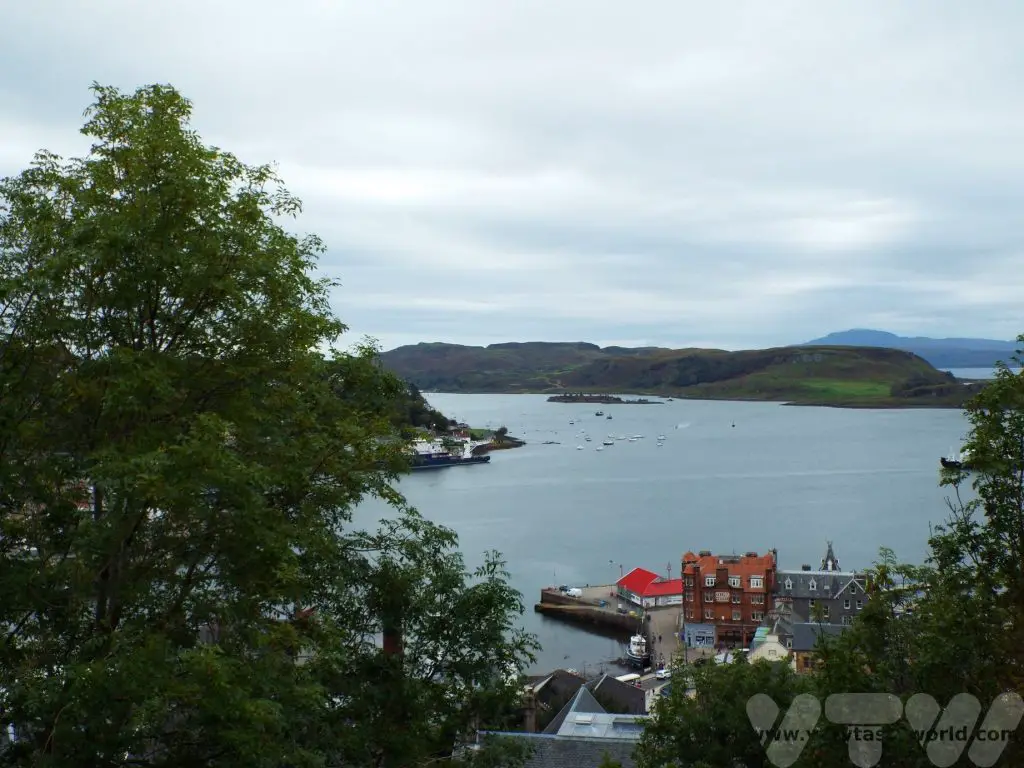
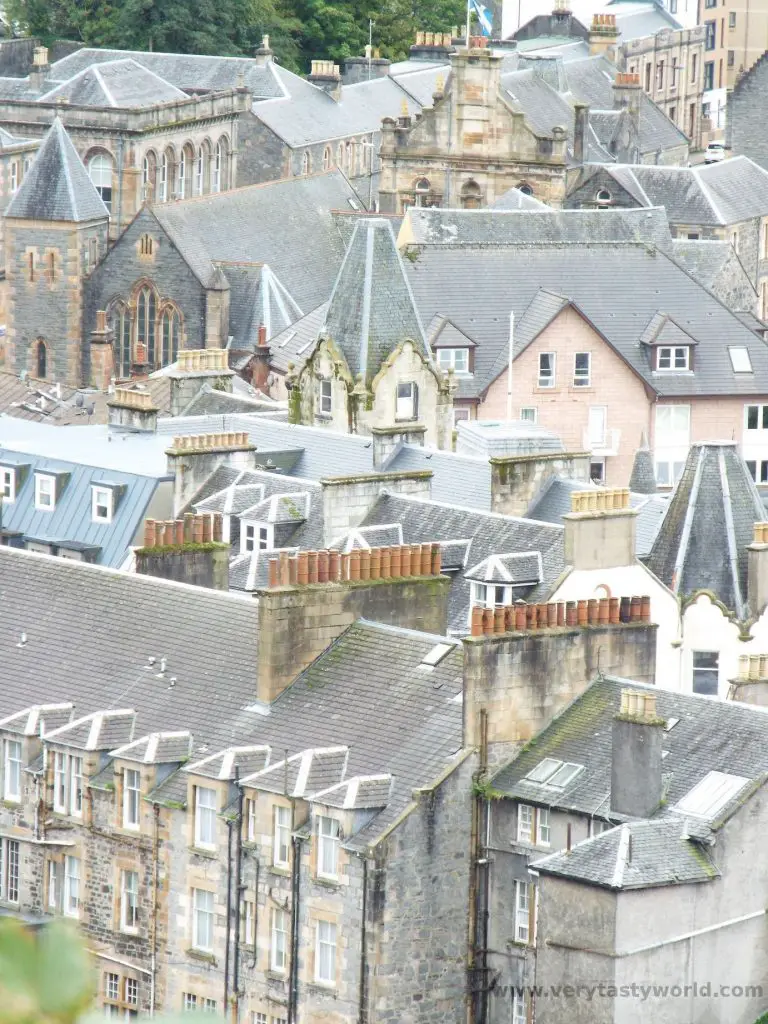
Visit Oban Distillery
Oban has one of the smaller whisky distilleries in Scotland. In fact the town developed around the distillery which was established in 1794. Hence it’s very conveniently located right in the centre of Oban. Because of its location the distillery didn’t really have the opportunity to expand so it remains small but perfectly formed. Also, because it’s town-based, there are no issues with someone having to drive to the distillery if you want to indulge in a tasting and are staying locally.
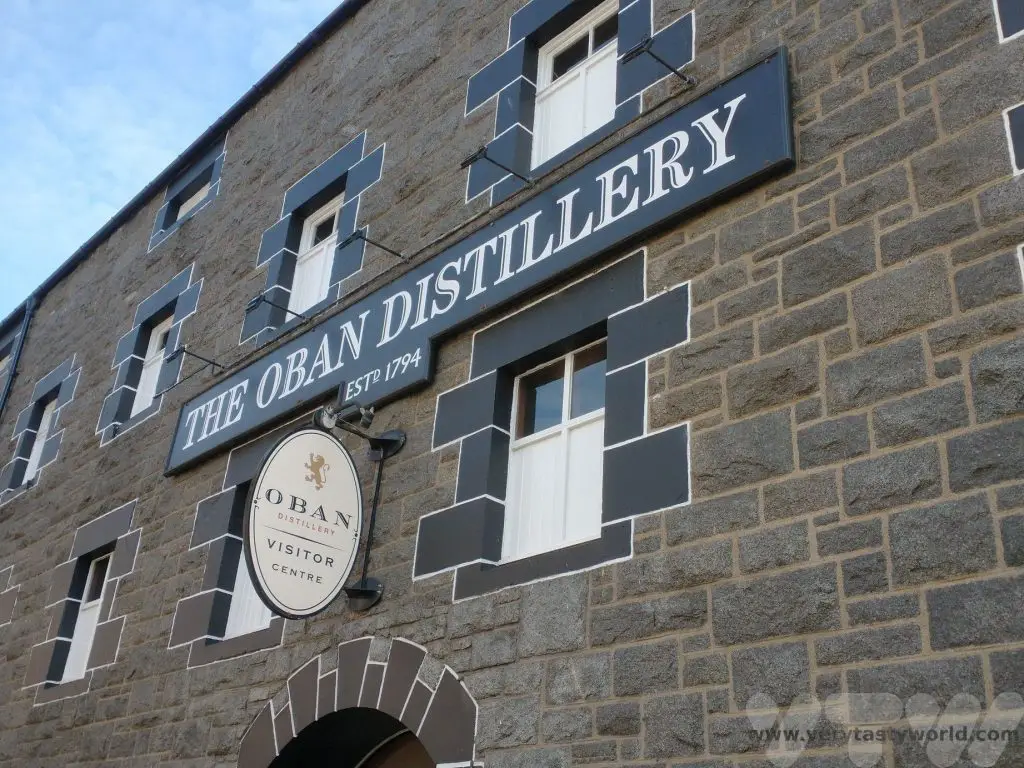
Of course they offer tasting tours. It’s definitely worth making a booking. You can tour the distillery itself or enjoy a tutored tasting. On arrival you are shown to a table and presented with some samples in little glasses and a tasting card.
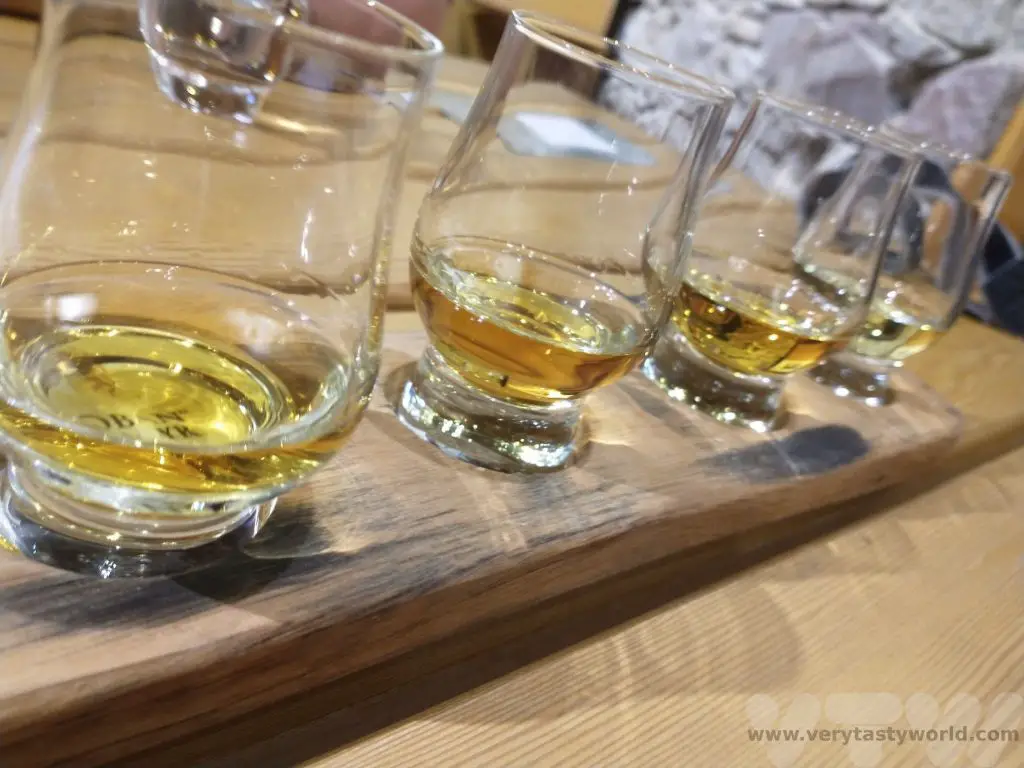
It was really useful to have some guidance as to how to taste whisky. The advice was to sip and don’t sniff the whisky on the first taste. Definitely don’t quaff the shot or you will just get a burn at the back of the throat. Sipping again, your mouth is now used to the whisky, so let the whisky lie on your tongue for 15-20 secs to let the saliva glands release saliva and savour the flavour. You don’t expect to get a peaty whisky in Oban, the water is sourced from a local loch, about three miles away.
When whisky is first distilled it is a clear liquid. Its colour and flavour derives from the barrels it is stored in and the length of time the whisky is aged. There are some interesting techniques – the whisky can be aged in bourbon or sherry barrels but the casks can only be used a certain number of times (around five). Some barrels are charred inside, then the burned timber is scraped away to expose new timber and this offers a new flavour. Some whiskies are tripled matured in three casks. We tried the 14 year old whisky, which had a light, citrusy flavour; the 14 year old (charred barrel); the Distiller’s Edition which had been aged in a bourbon and then a sherry cask, which had a sweeter, more caramel roundness; and the triple matured Little Bay, which had a great complexity of flavour.
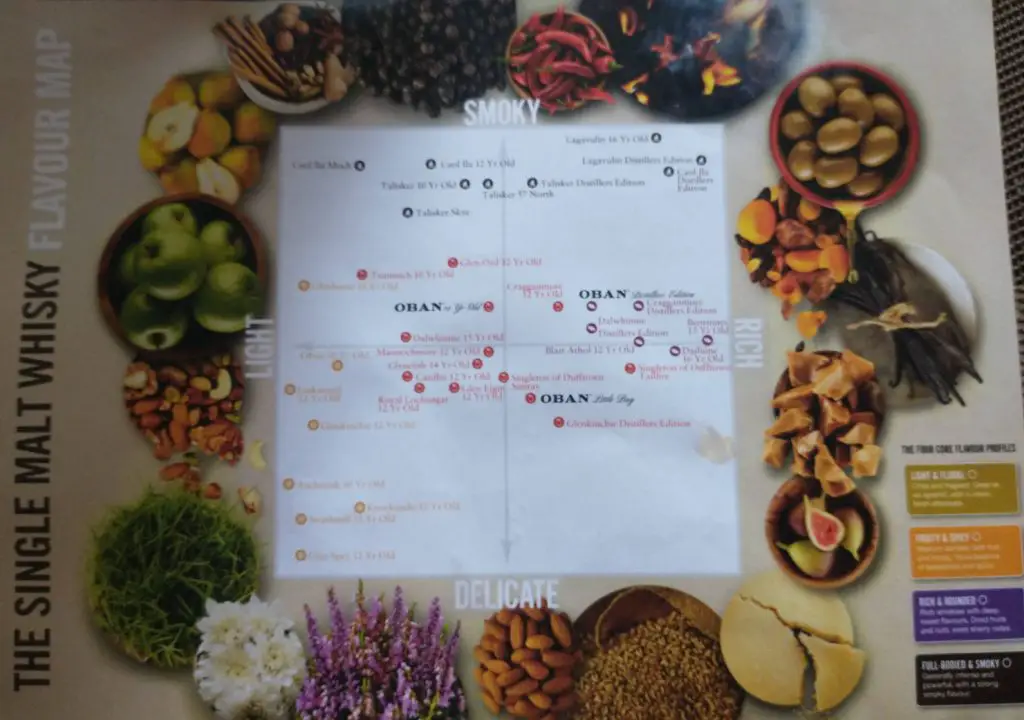
Of course, there are lots of bottles of whisky available to buy. We were quite taken with their Game of Thrones special edition.
Things to Do Around Oban – Day Trips
We recommend using a car to get around Scotland if you can – the driving is generally easy, the routes are guaranteed to look beautiful and it gave us flexibility to explore the wider area. However, there are public transport options if that is preferable.
Easdale Slate Island
Easdale is a tiny island located around 25 km from Oban. It’s easy to reach but first you have to cross the Bridge Over The Atlantic – possibly the cutest bridge in Scotland. Clachan Bridge joins Seil Island to the Scottish mainland so it really does cross the Atlantic – sort of! It’s a darling humpbacked bridge, built in 1792. It’s on a single track road, so take care when crossing.
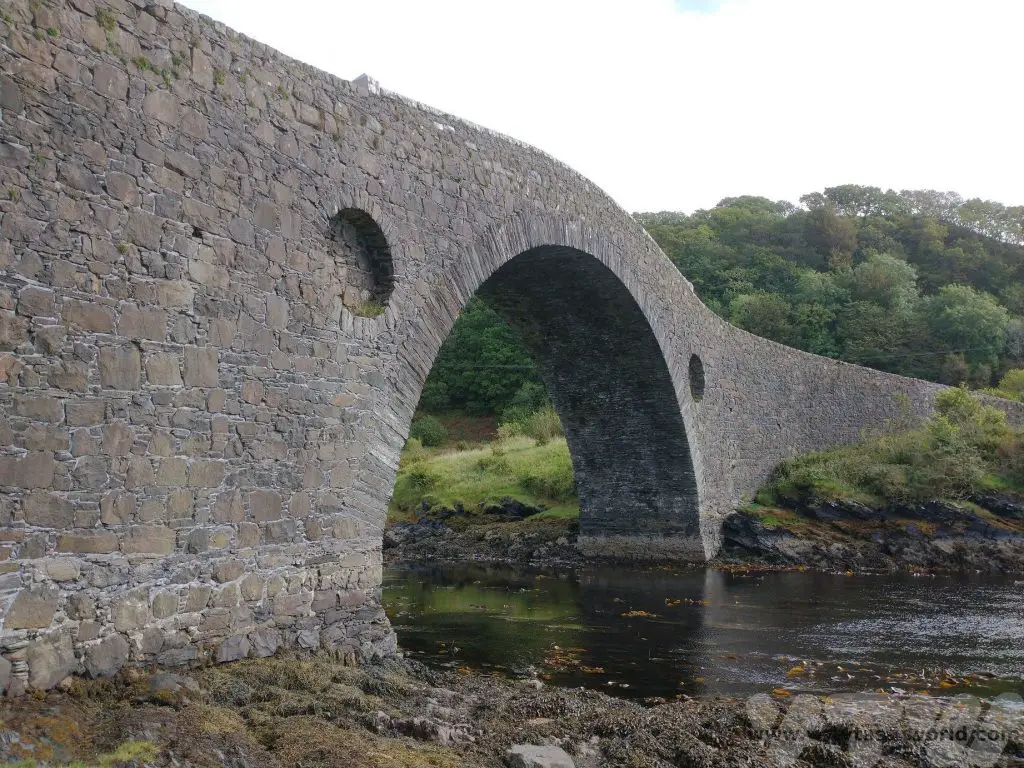
From there head to Ellenabeich, which has a large car park and the ferry port for the three minute journey across the sea to the island. It costs just a few pounds to make the crossing.
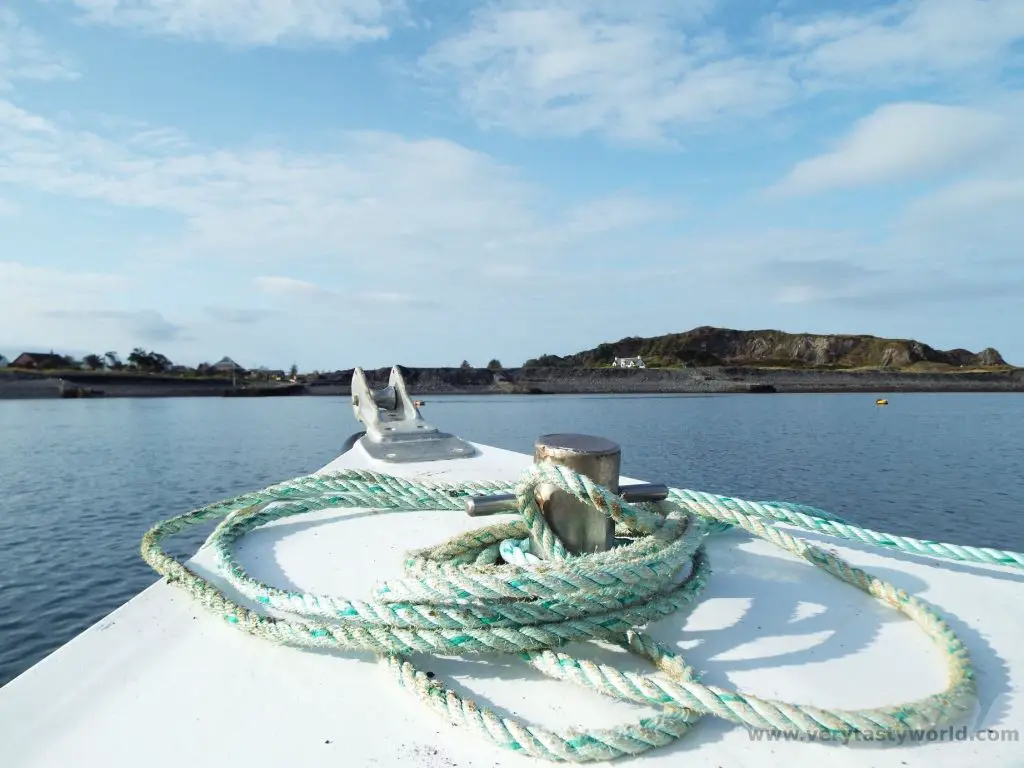
On arrival at Easdale you discover that there are no cars but it is the most delightful place to go walking. There is a café/reastaurant and a folk museum.
Easdale was once the focal point of the Scottish slate industry. As such it has a number of slate quarries, many of which are now flooded. Despite the industry, the island is really beautiful. Skimming Quarry holds a national stone skipping competition every September.
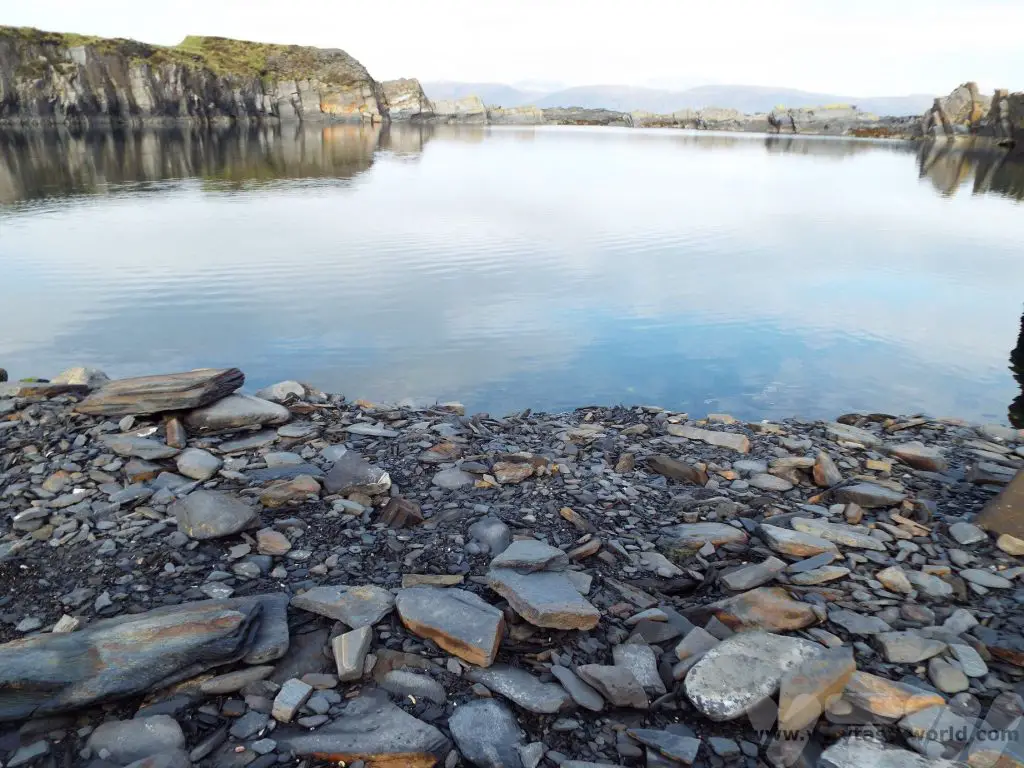
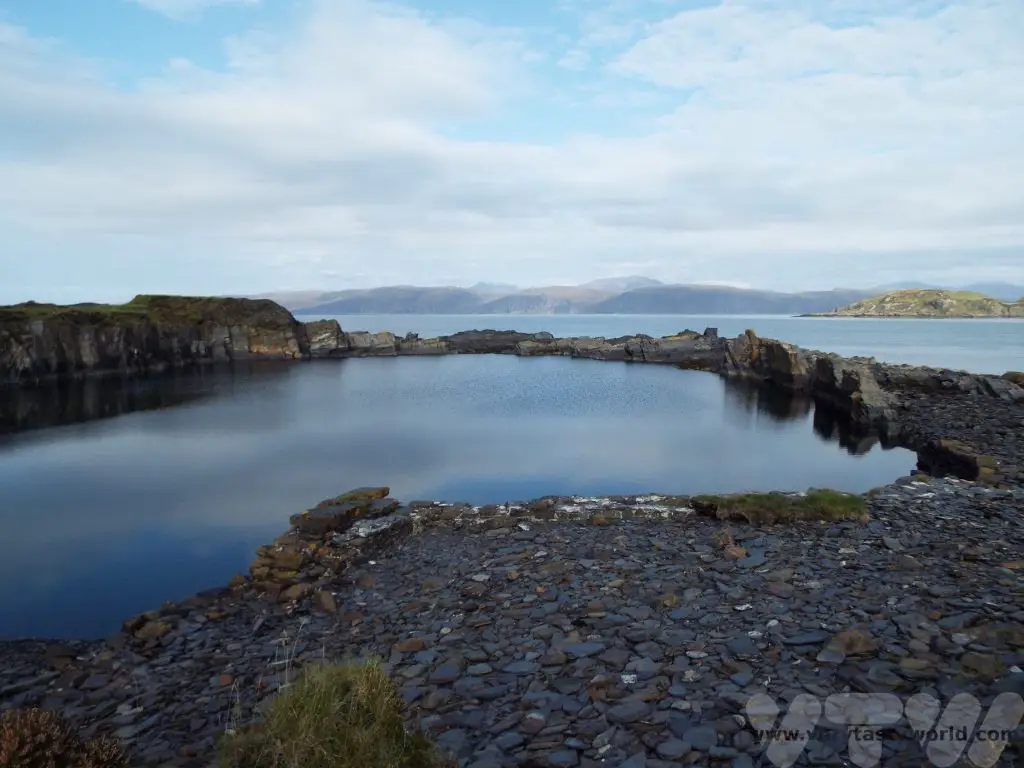
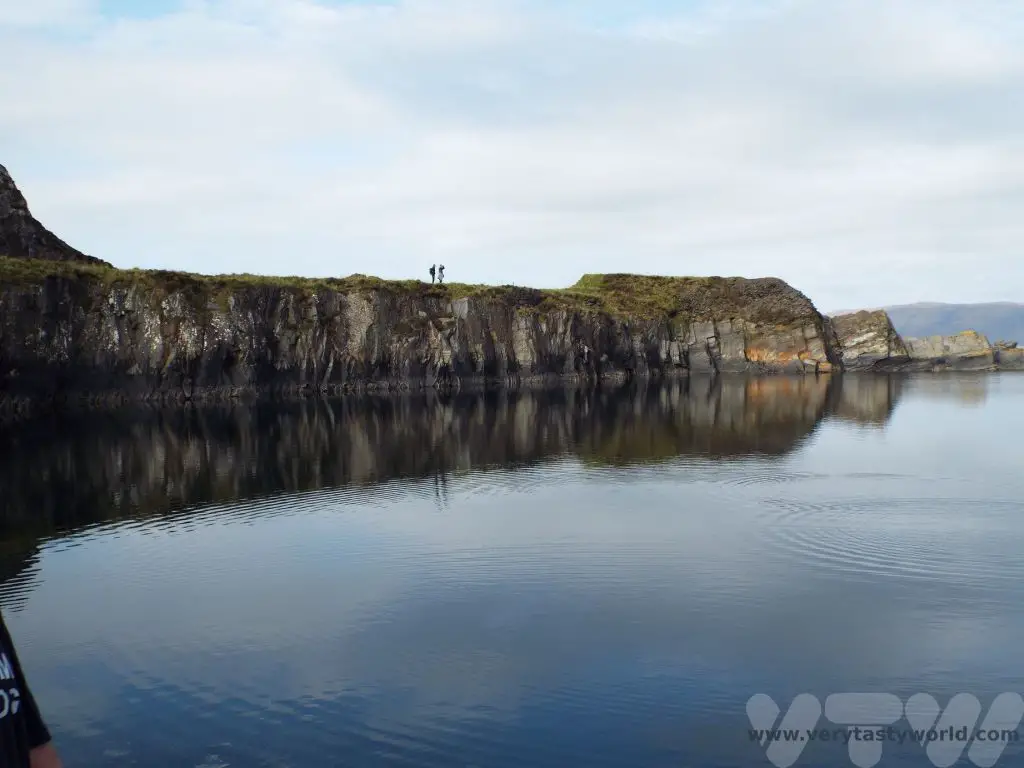
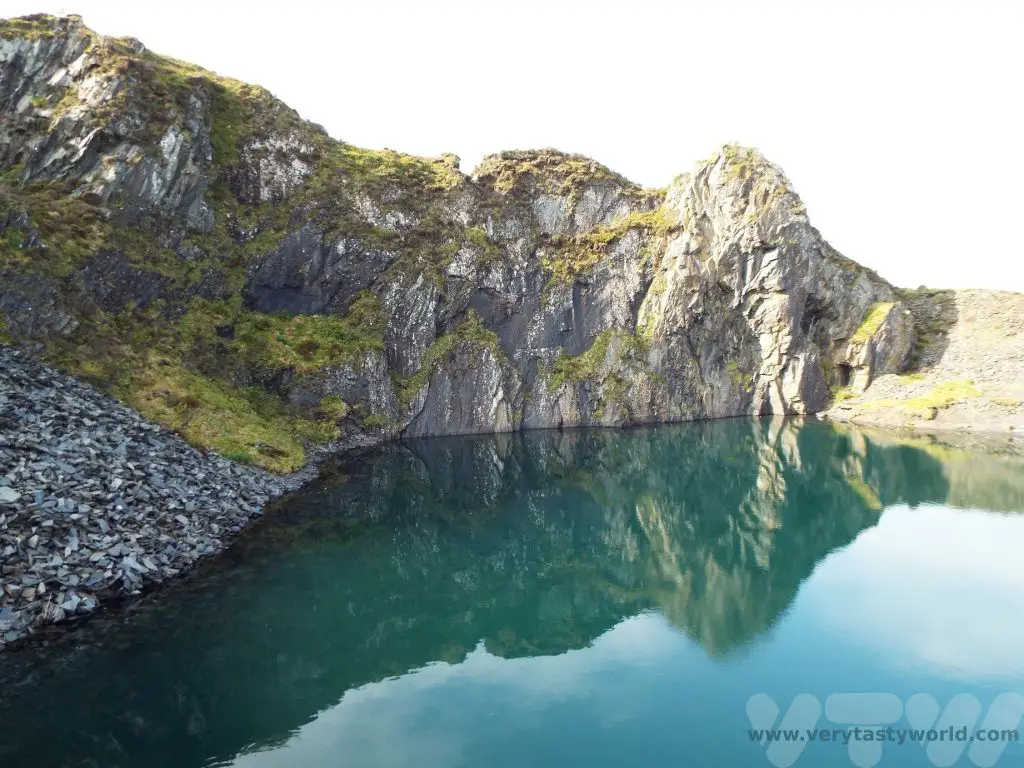
It’s very easy to walk all the way around the island and sometimes you get lucky with perfect weather.
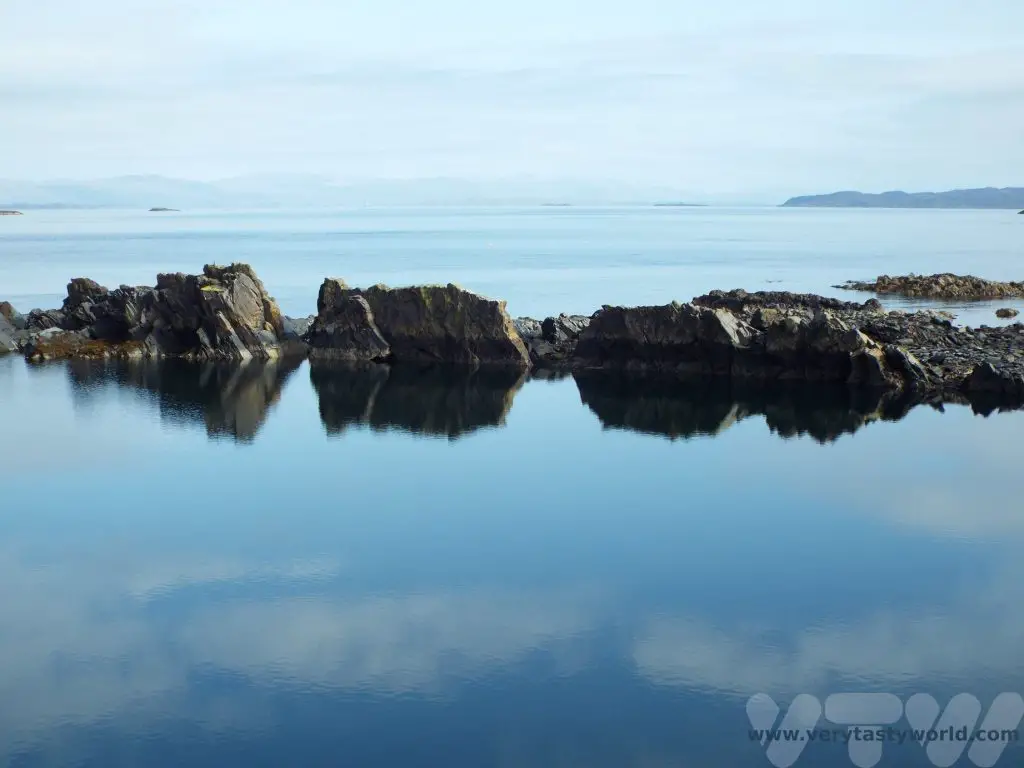
Kilmarten Glen and the Standing Stones
Driving further south towards Kilmarten it’s possible to explore some of Scotland’s prehistoric monuments, including cairns and standing stones.
Stopping in Kilmarten itself there is a museum which gives a history of the area, and the church next door, which has a collection of early grave slabs.
Further down the road there is a car park and, after crossing the road into the field, it’s possible to see Nether Largie Stones. The stones, believed to have been erected 3200 years ago, align with the midwinter sunrise and the autumn and winter equinoxes.
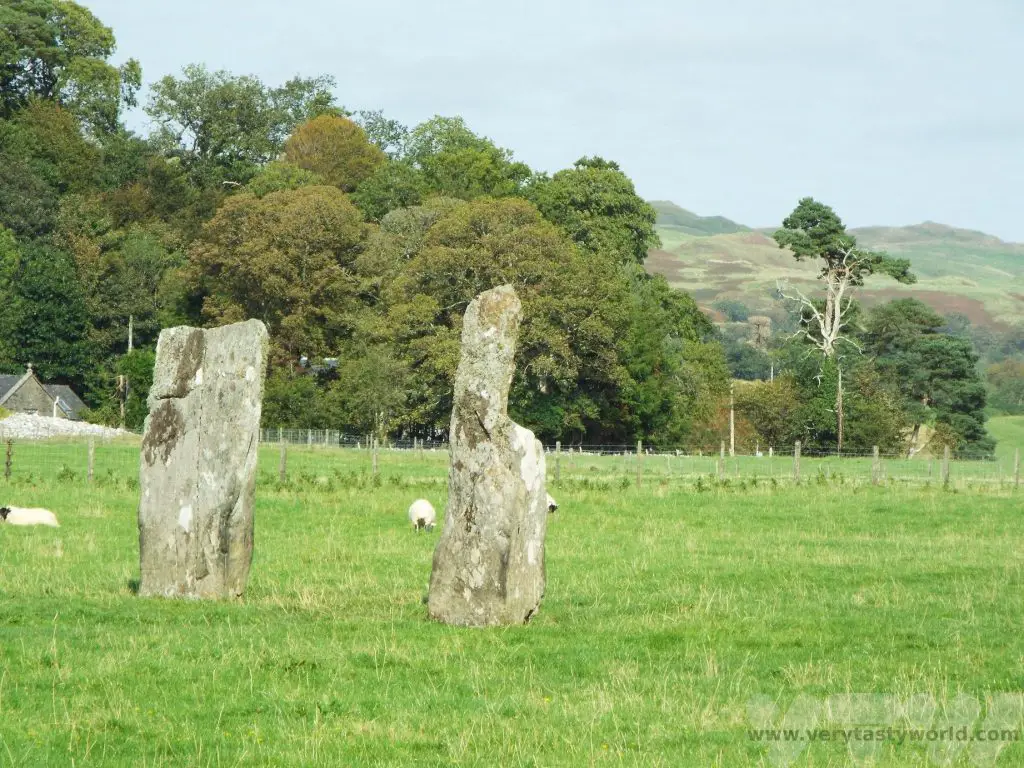
Temple Wood is a stone circle which has a cairn in its centre. It was originally a wood circle, dating from about 5000 years ago but the wood was later replaced with stones. Cremated remains, dating from around 3300 years ago, were found inside the centre of the circle.
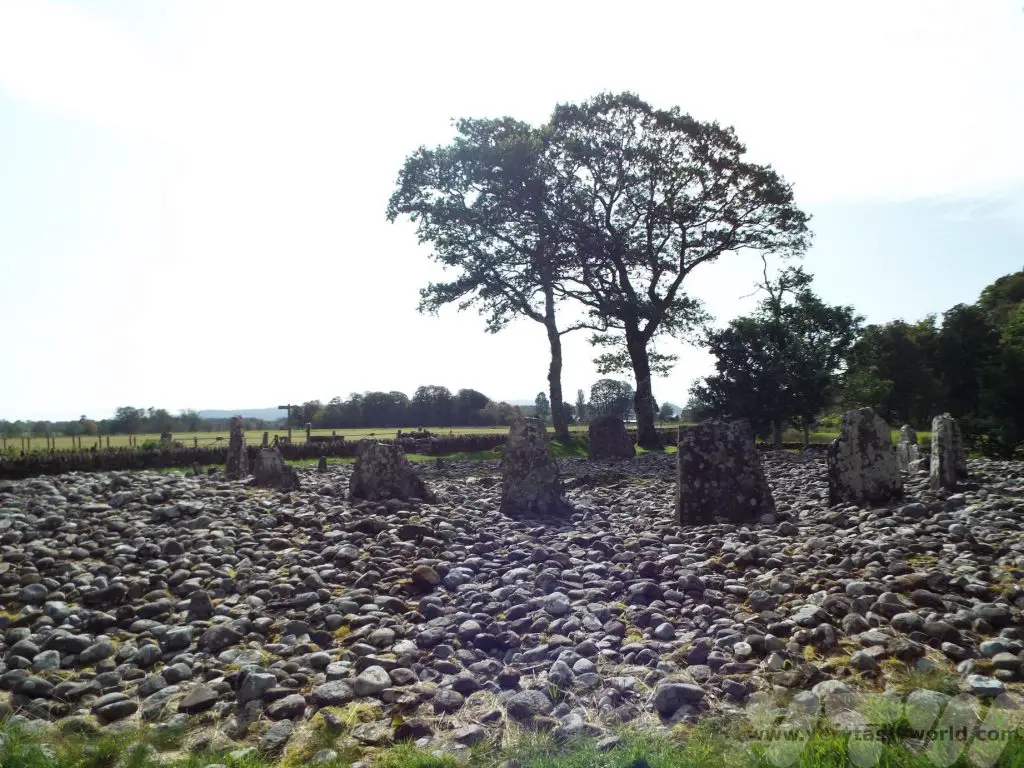
Another short walk just down the lane takes you to the Nether Largie South cairn, a Neolithic chamber tomb. It is thought that it was constructed around 5600-5500 years ago. It’s believed that it was used for burials in the early Bronze Age as well.
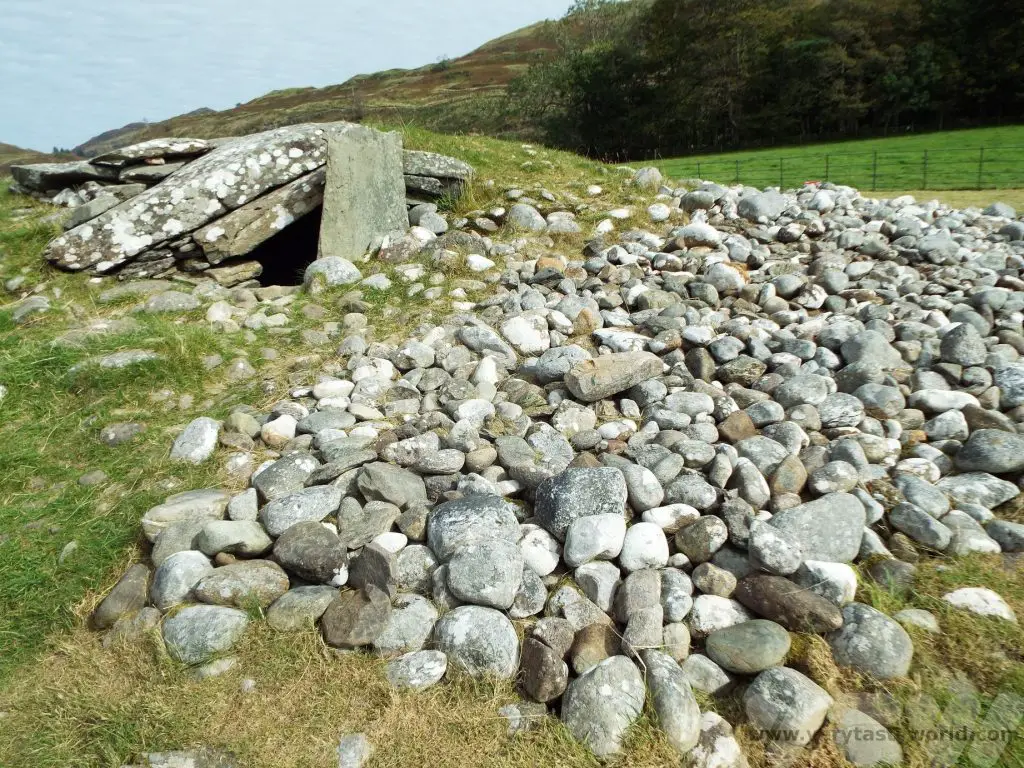
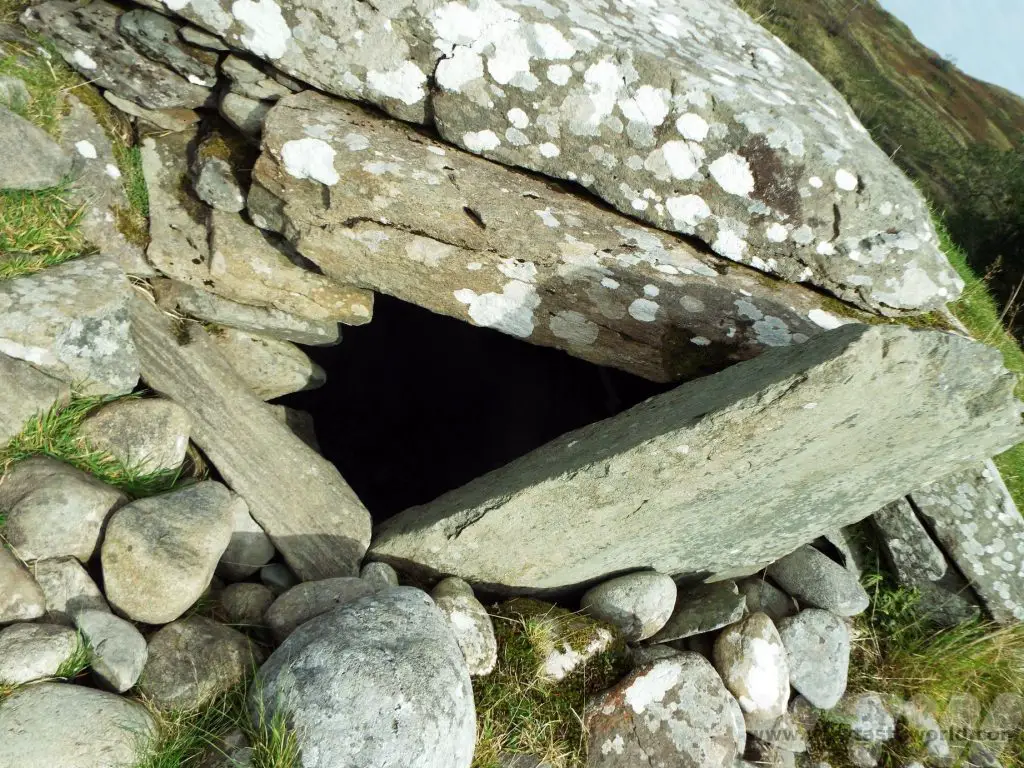
Seafood and Eat It!
On our return to Oban we discovered plentiful restaurants, many of which offer seafood. Blessed with a long and beautiful coastline, Scotland’s seafood is fantastic! If you want the very best, which is also incredibly good value for money, there is only one place to go: Oban Seafood Shack, also known as The Green Shack, located by the harbour on the railway pier.
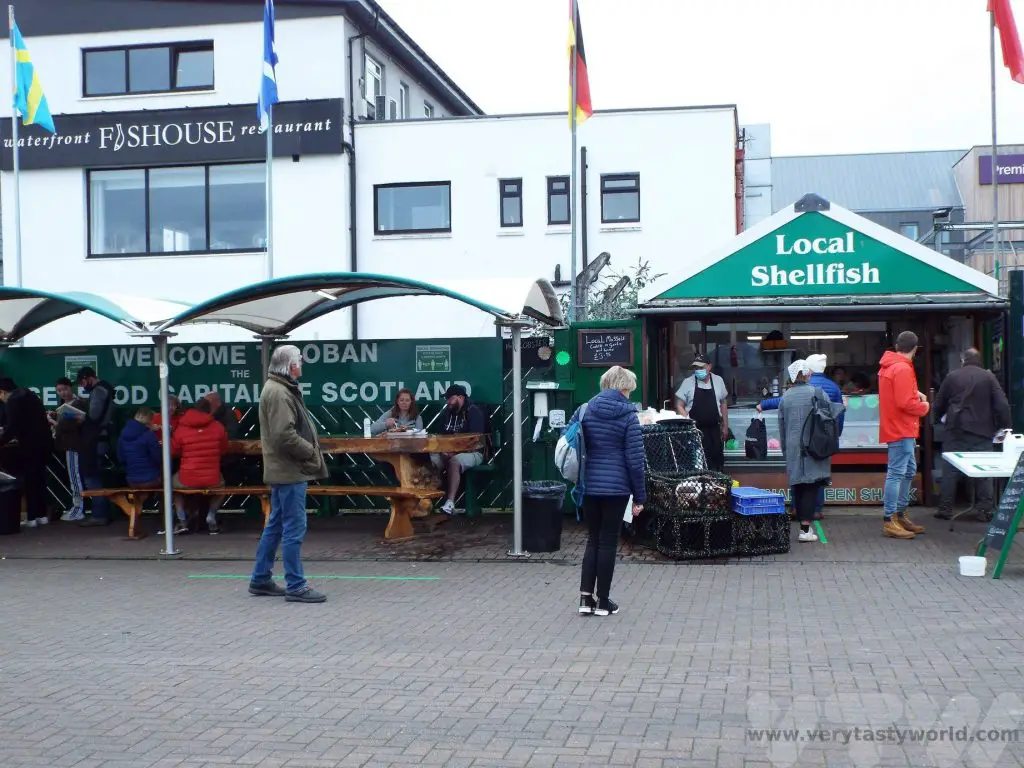
It’s so good, there will almost certainly be a long queue, but it’s emphatically worth the wait as you can order a huge variety of fresh seafood. It is literally a shack – a tiny hut – where you place your order. There’s not much seating, just a small covered area next to the shack and some tables for standing. It’s not the place for an intimate dinner but who cares when the food is this good? We ordered the seafood platter which was just divine: lobster, crab claw, langoustine, mussels, prawns, scallop in butter sauce, hot smoked salmon, pickled herring, crab sticks, squid rings. It was served with simple bread and butter, Marie Rose and sweet chilli sauce.
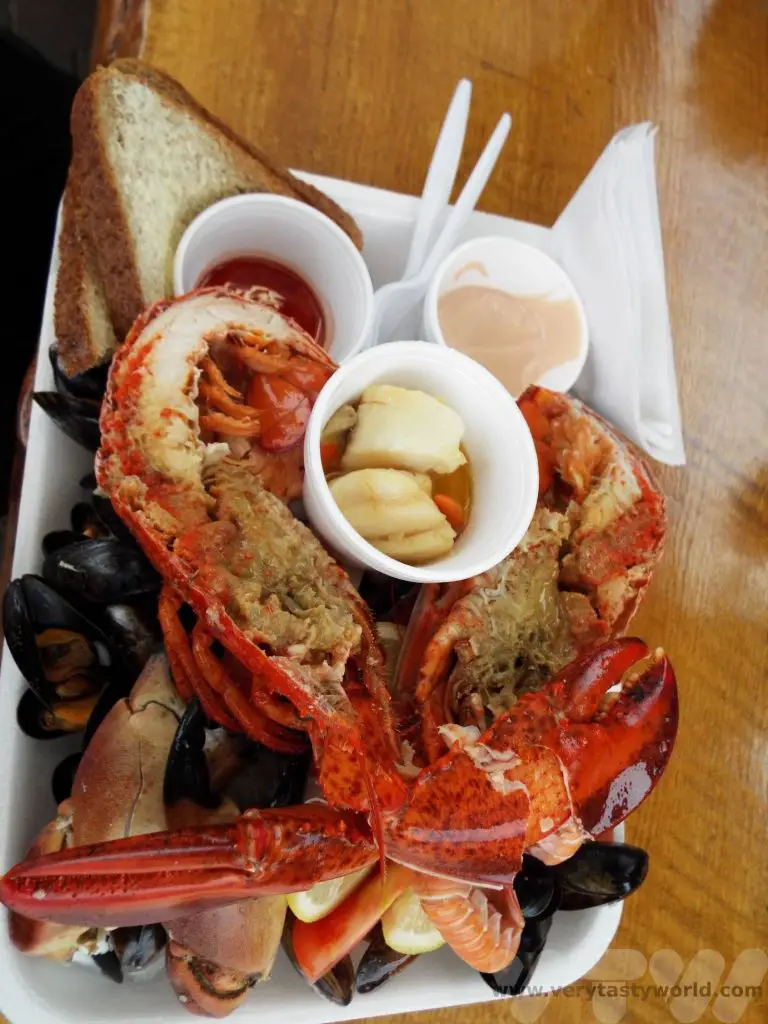
There was so much we needed a platter for the debris. We ate standing up, using our fingers (they have a wash station), although forks were provided to pick crab and lobster meat.
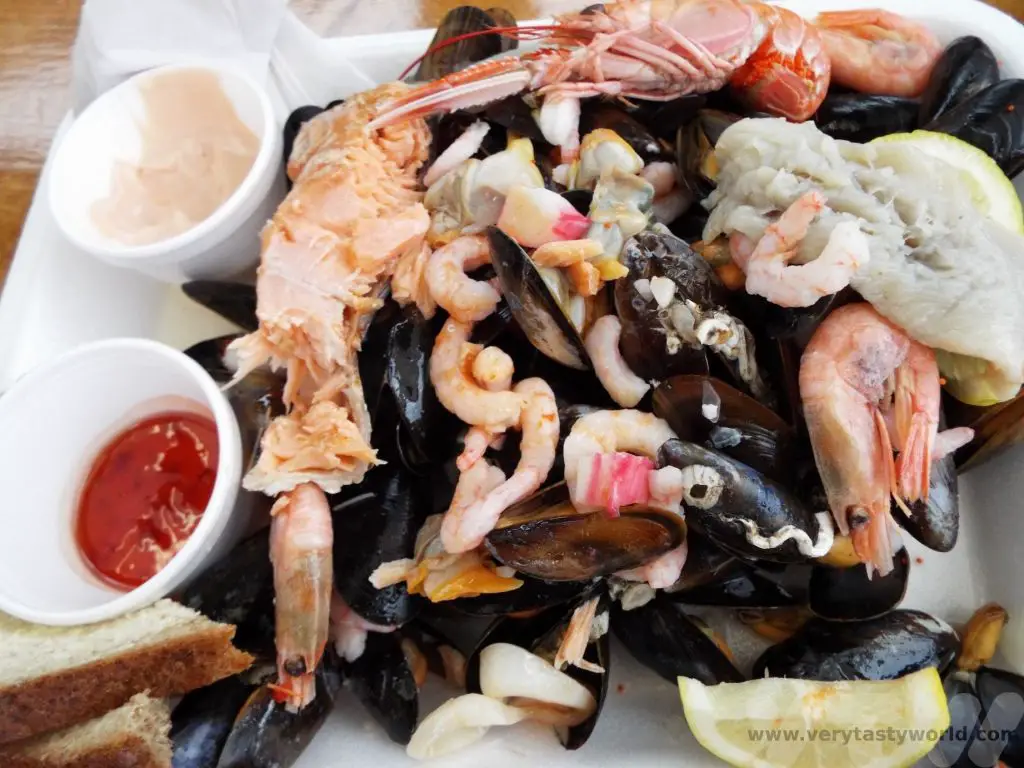
The seafood shack offered food as it should be – fresh ingredients, perfectly cooked, friendly service, no pretension whatsoever. Perfect. (It’s worth noting that at the time of our visit they only accepted cash as payment.)
The following day we skipped breakfast at the hotel in favour popping down to the shack to pick up some prawn and crab sandwiches. Absolutely delish! It set us up for the day to continue our journey through Scotland and onto the Isle of Skye.

Other Attractions in the Area
If you like castles, there are a couple close by: Dunollie Castle is located about 1.5km north of Oban. You can visit the castle, a museum and the grounds. There’s also Dunstaffnage Castle & Chapel, one of the oldest stone castles in Scotland which stands on an enormous rock overlooking the Firth of Lorn.
Oban is also gateway to some of Scotland’s marvellous Hebridean islands via the ferry port. It is possible to enjoy trips to Mull, Lismore, Coll, Kerrera and Barra, some either as day trips or to continue your journey through Scotland. Check the Calmac website for information and timetables.
Related Posts You May Enjoy

RECIPE: How to Make Umeboshi
A typical Japanese breakfast will comprise of a bowl of rice, some grilled fish and pickles accompanied by a bowl of miso soup. What a lovely way to start the day. And at the Japanese breakfast table you will often come across a bowl of pink, wrinkly fruit, roughly the size of an apricot.
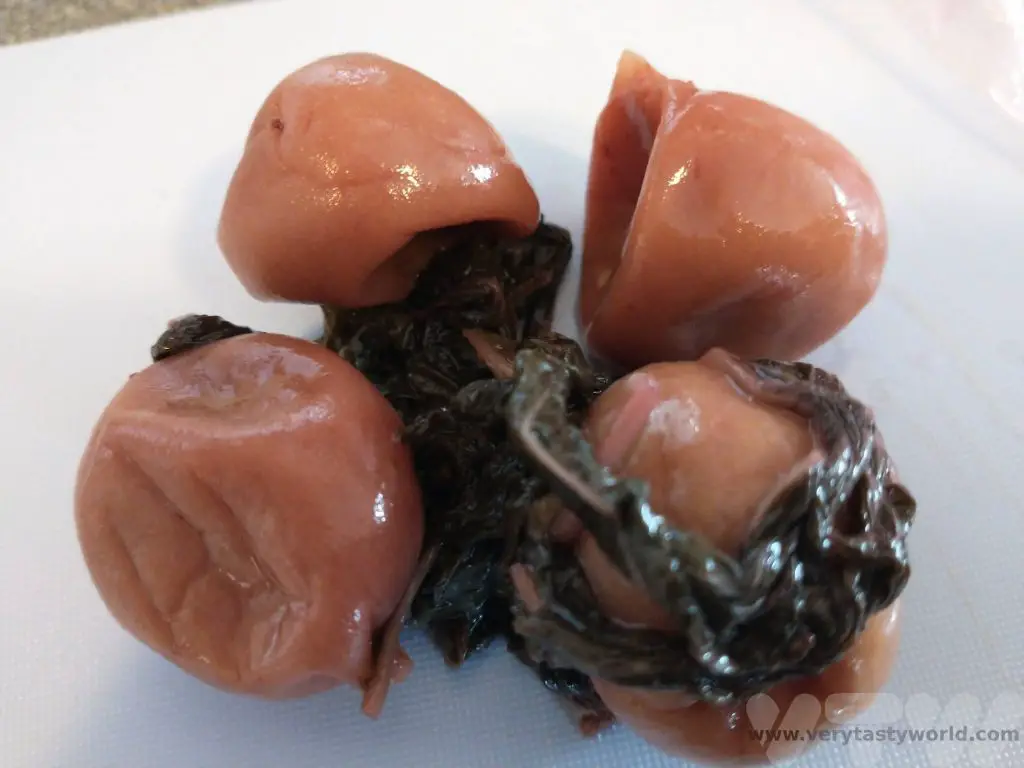
These are umeboshi, incredibly sour and salty ume fruit, which are like small plums or apricots, and are absolutely guaranteed to wake you up. They are also reputed to be a hangover cure, especially good if you are a salaryman who has had a late night out in the city. Or tourists who have had a late night in the city which involved chatting with all sorts of very interesting people in random bars and drinking quite a lot of booze.
Beware the stone, especially if you have a hangover.
Umeboshi are tsukemono, literally “pickled things” which brined and therefore fermented, so they will last for ages. Some will even last decades. If they turn black, they should be chucked. We always bring some back from our trips to Japan and rationed them so had some in our fridge for about 5 years – they were still pink and wrinkly and utterly delicious. Most Japanese meals have tsukemono as an accompaniment but umeboshi are most often eaten at breakfast. They are also used in onigiri (rice balls) as a flavouring and can be converted into a paste to add plentiful salty/fruity flavour to a variety of dishes.
Some Japanese households make their own umeboshi. If you are lucky enough to be offered these, don’t be polite. Well, do be polite because that would be the right thing to do, but don’t hesitate to take your host up on their offer. Home-made umeboshi are absolutely delicious. The pink colour derives from red shiso – also known as perilla – which is a herb added during the pickling process. Shiso is a very common herb used a lot in Japanese cuisine. Green shiso is often the herb that garnishes a sushi platter.
It is possible to make sort-of-umeboshi in western countries. The ume fruit is not usually available, but you can have a bash using plums and salt.
We treated ourselves to a Japanese pickle press a while ago but it should be possible to make umeboshi using a wide-mouthed jar, just as long as you have something heavy that will fit inside the jar to weigh the plums down and a utensil that can extract them (tongs should be fine) as you will need to take them in and out of the jar after the fermentation.
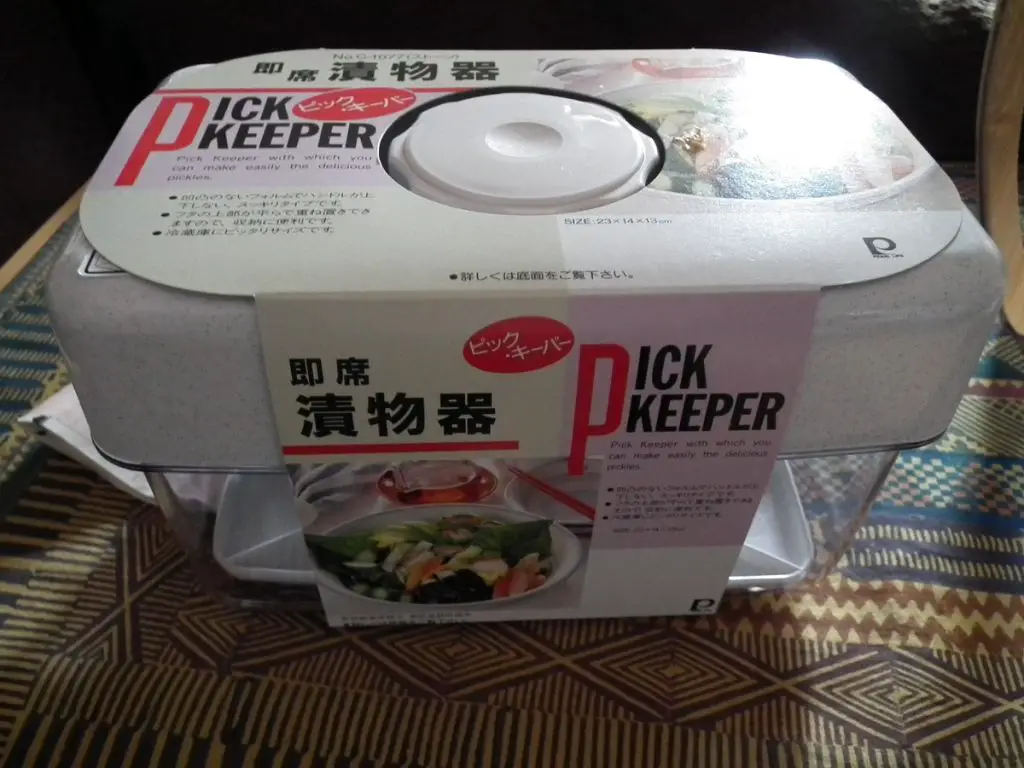
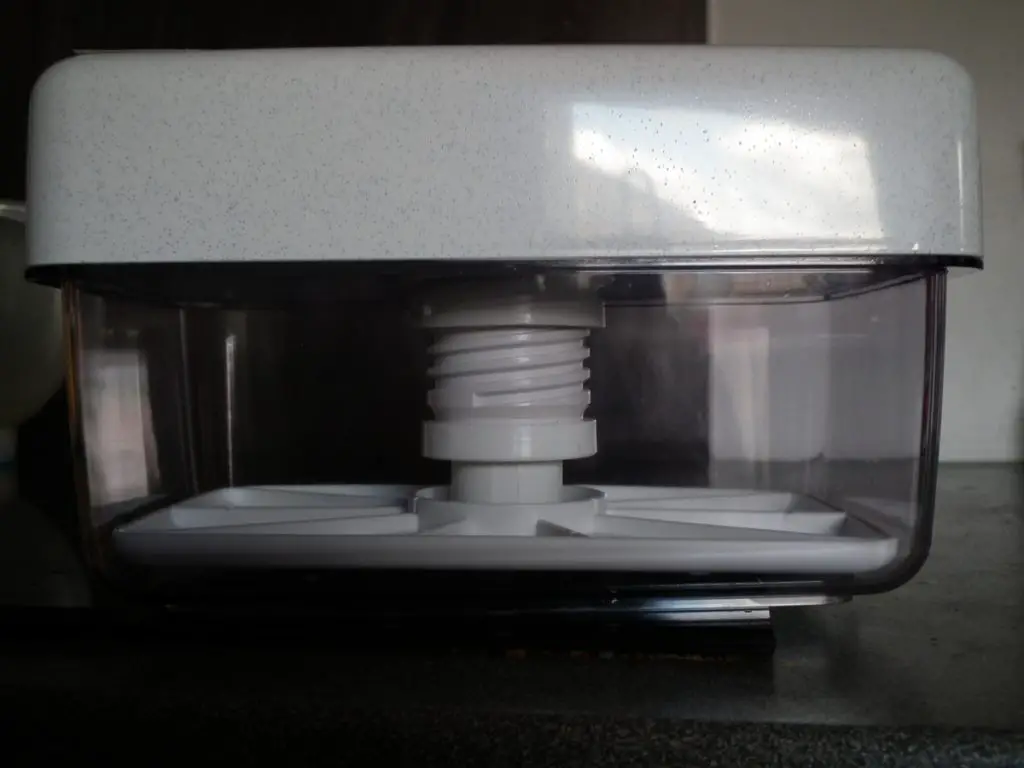
We use plums from our allotment. They have the delightful name Warwickshire Droopers. The great thing is that we can assess how ripe our plums are and pick them. This year the plum tree has been very generous. If you don’t have a plum tree your local market or greengrocer may well have a variety of plums for you to choose from.
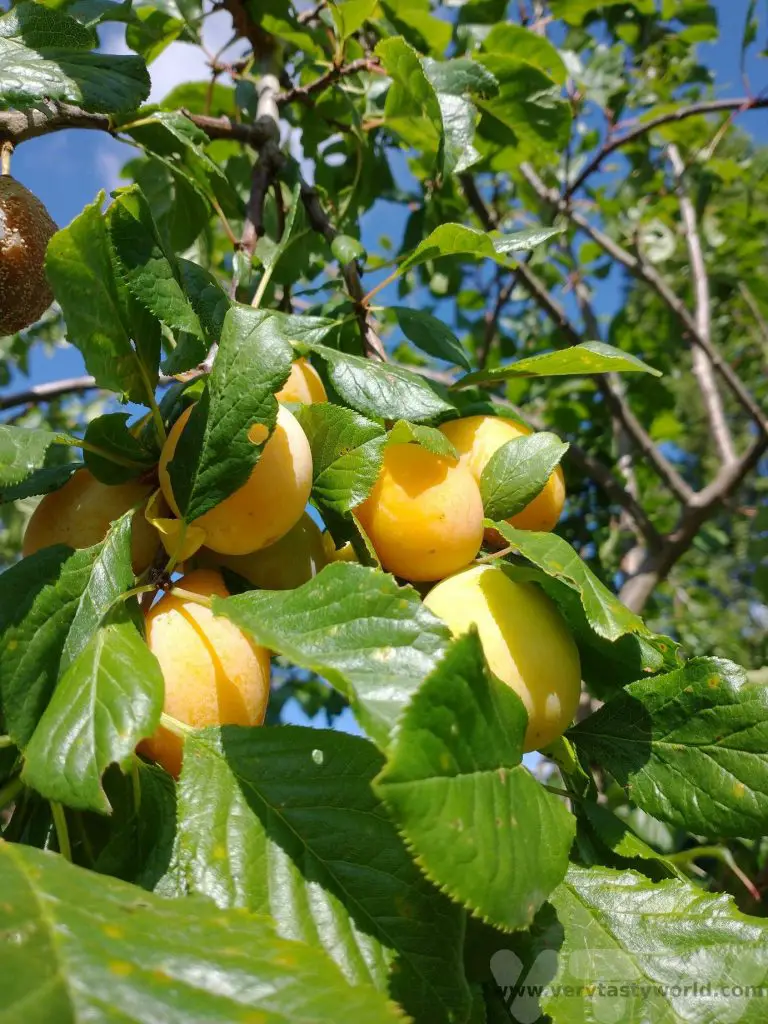
You want the plums to be ripe but not over-ripe, they need to have a degree of firmness.
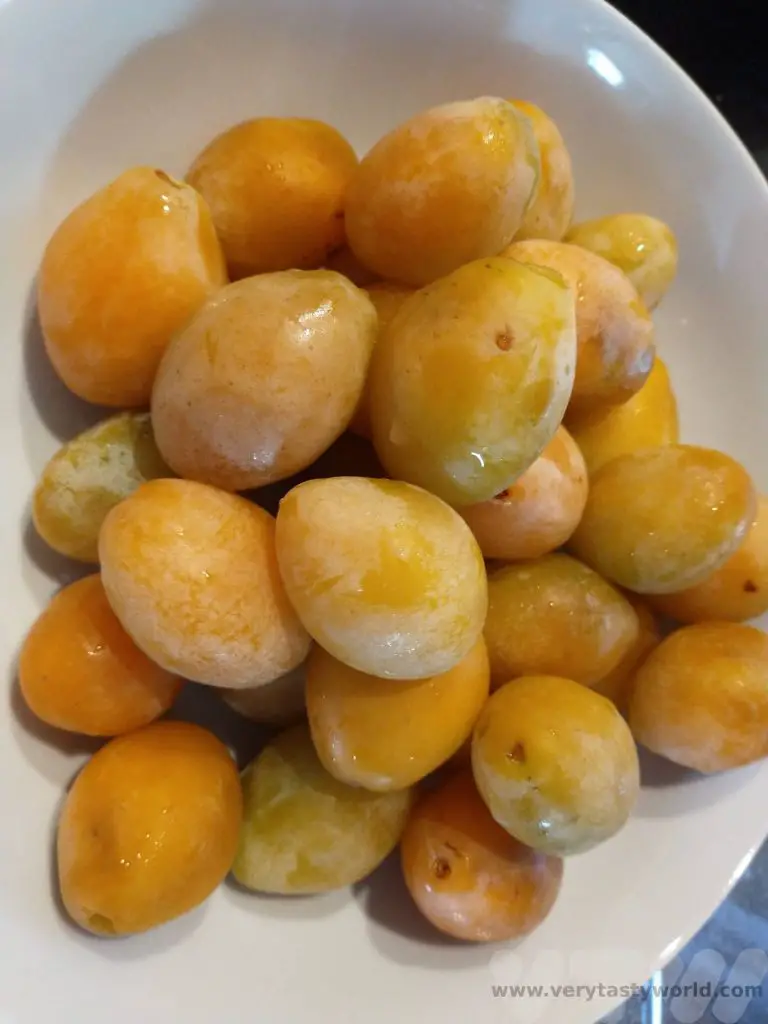
How to Make Umeboshi
Ingredients
Plums – enough to fill your container but leaving enough space to add a weight. If using a press, make sure the press can close and provide enough pressure.
Salt – 8% of the weight of the plums. Try not to use table salt, as this contains anti-caking agents. We prefer Himalayan pink salt but any pure salt will be fine.
2 red shiso leaves (optional)
Method
Wash your plums and pat them dry. Weigh the plums.
Measure out your salt – the total should be around 8% of the plum weight. This is a lot of salt but most of it will leach into the juice during the pressing process.
Massage the salt into the plums
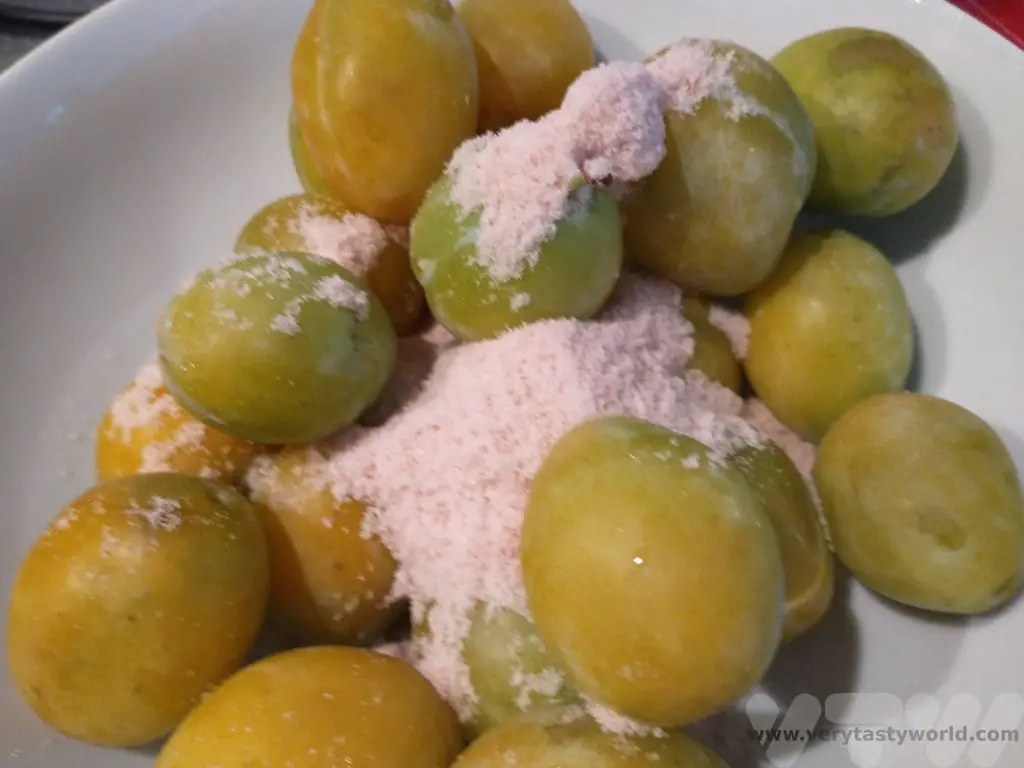
Place in the press. Add the shiso/perilla leaves if you are using them.
Attach the lid and screw the pressure plate down as far as it will go. If you are using a jar, put a clean weight (you can put a weight inside a plastic bag) that puts pressure on the plums.
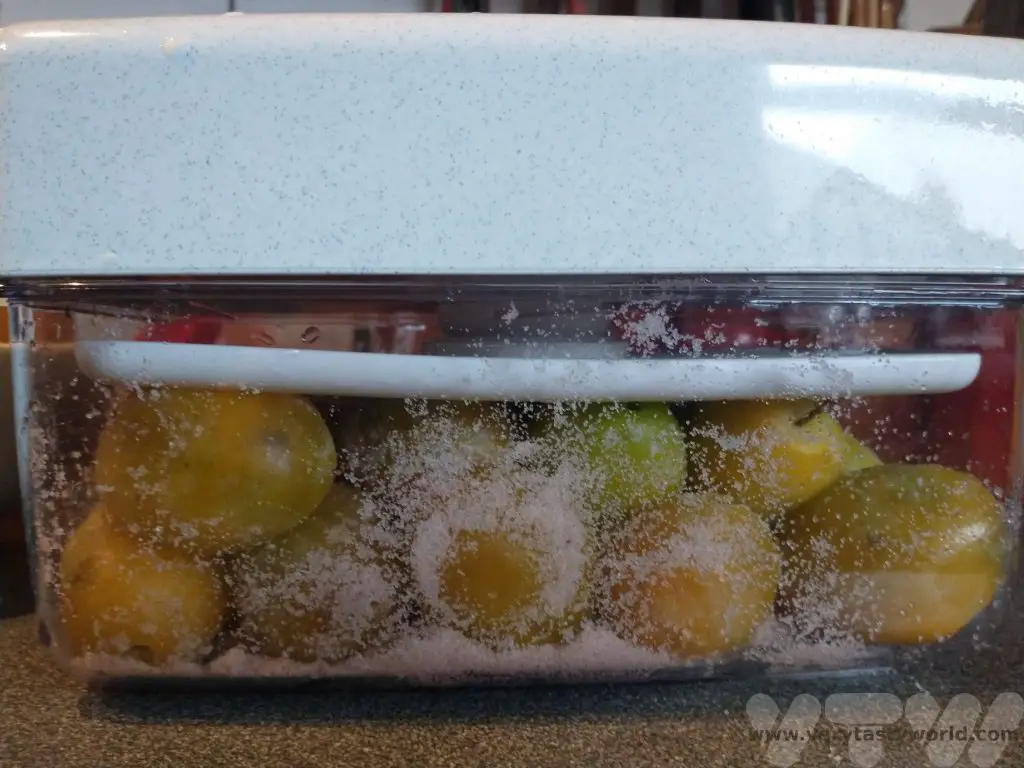
This ferment doesn’t use a brine. The pressure of the weight will release juice from the plums.
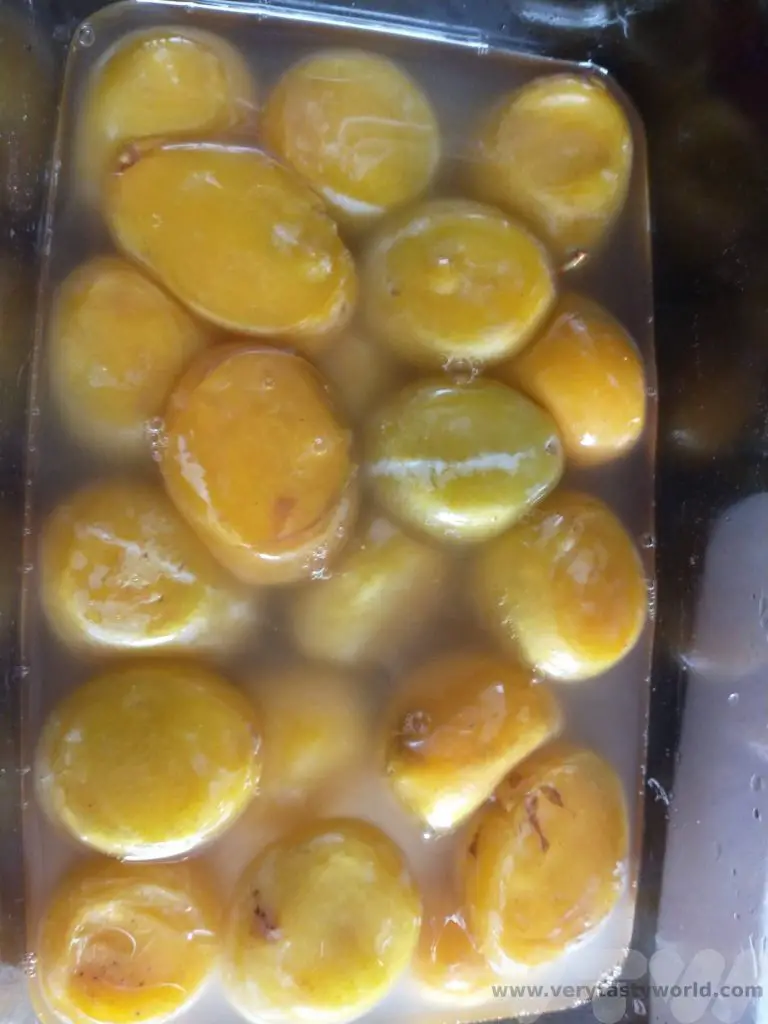
Leave in a cool, dark place for 2-3 weeks. Check the plums occasionally. You will start to see juice appearing in the bottom of the press.
(As with all ferments, if you ever see any mould on the fruit you should throw it away as the spores could cause illness if you consume the plums. It is unlikely that mould will develop with an 8% salt mix as that is lot of salt.)
The next step requires a bit of luck with the weather. Ideally you want a warm, sunny day. In fact, you need three warm, sunny days.
On your sunny day, remove all the plums and place them on a mat, or some kitchen paper, in the sunshine to dry. Place them back in the juicy brine at the end of the day.
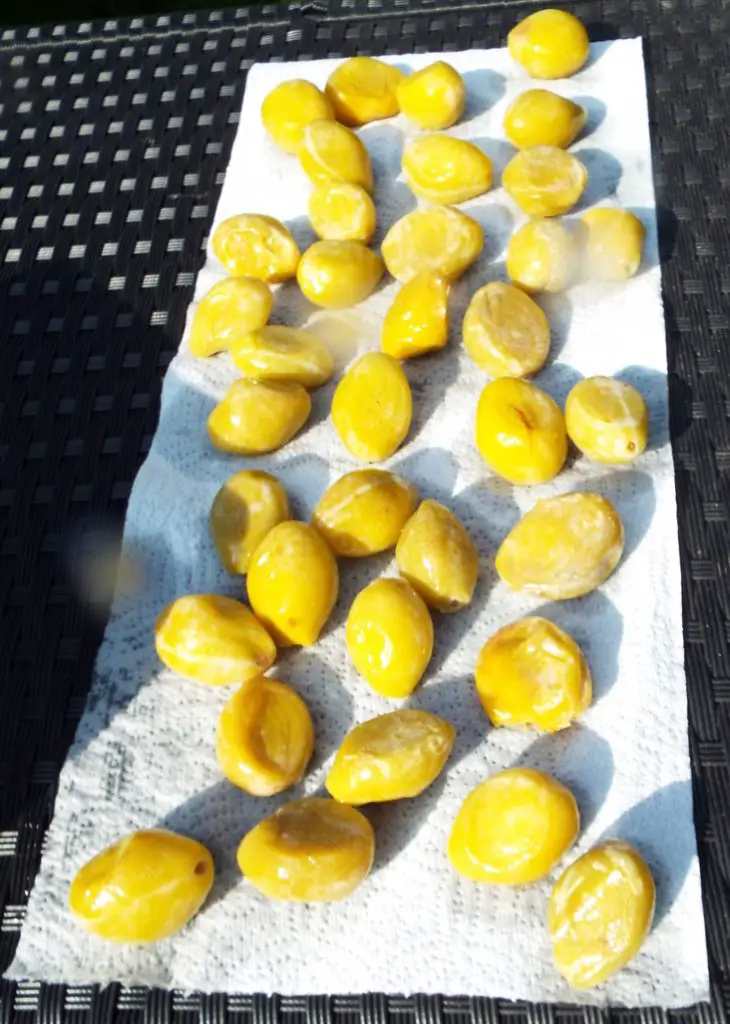
Repeat for a further two days. They don’t need to be consecutive days but it would be helpful if you can dry the plums over the course of a week.
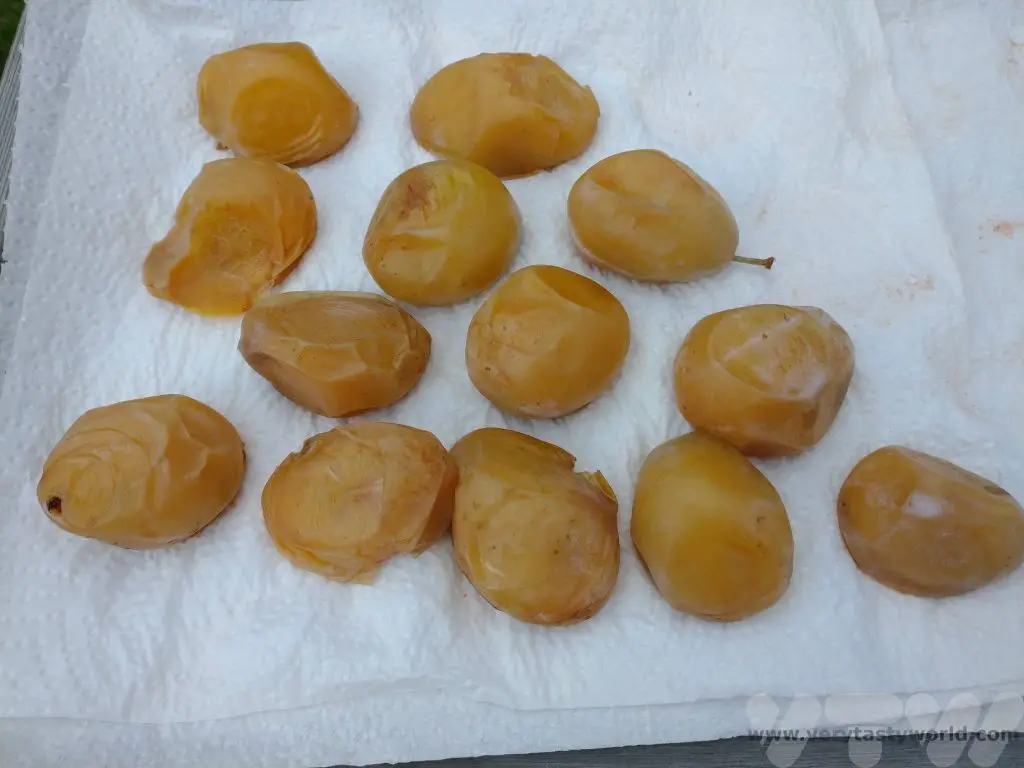
After the third day, you can place the plums in a jar or a plastic container, or even a plastic bag. They will last for months and months. That’s if you don’t scoff them…or have too many hangovers to cure!
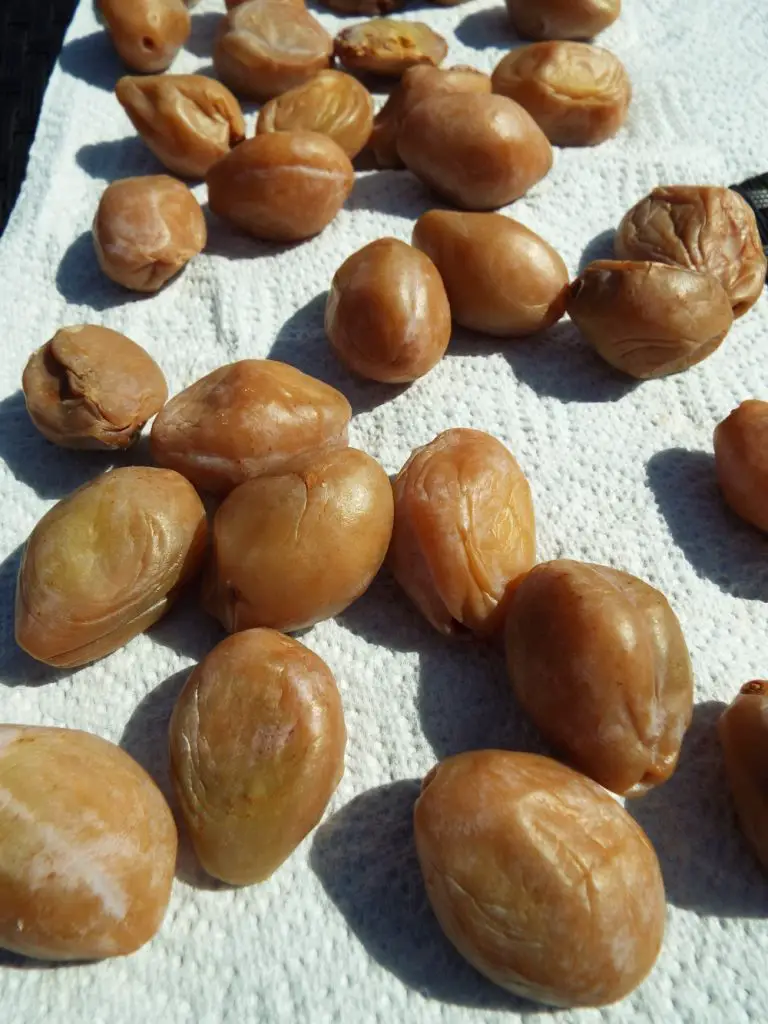
Save the Brine!
We hate food waste so we have devised a way to re-use the salty plum juice brine.
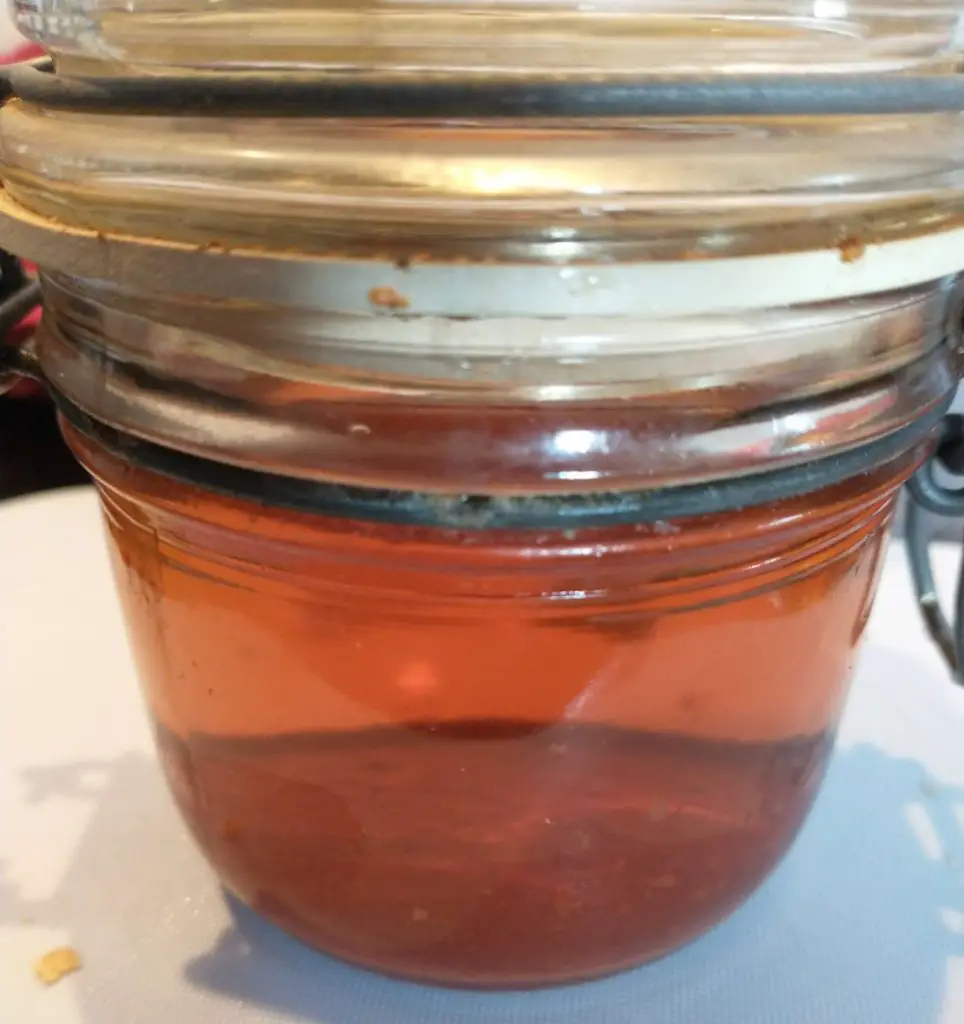
We use it to pickle ginger.
Peel the ginger and cut into matchsticks.
Place them in a jar and cover them with the brine. After a couple of weeks they will be deliciously sour and salty. We use them to add some zing to rice and noodle dishes or as a garnish.
Actually, we have been known to open the jar and sneak a matchstick or two for a quick snack.
Related Posts You May Enjoy

- RECIPE Oyakodon Donburi
- Zero Waste Recipes Before Your Holiday
- RECIPE: Vegetable Biryani Tamil Nadu Style
- RECIPE: Vegan Wild Garlic Pesto
- Recipe: Venetian Pasta Sauce
- RECIPE: Biryani Raita Recipe
- RECIPE: How to Make Costa Rica’s Gallo Pinto
- Recipe: Japanese Simmered Pork Belly – Buta no Kakuni
- RECIPE: How to Make Umeboshi
Recipe: Shopska Salad
One of the dishes that was pretty much ubiquitous when we visited Bulgaria, and could be found pretty much every meal we had, was shopska salad. It is Bulgaria’s national salad, apparently created as part of tourism campaign in the 1950s, its colours of red, green and white match those of the Bulgarian flag.
The dish is popular throughout the Balkans – we also enjoyed it in Bosnia and Herzegovina and it made a regular appearance on menus in Croatia as well. There are all sorts of variations. Fruit and vegetables in Eastern Europe are usually more delicious than those we get at home. They make look uglier but they taste so much better. Because the salad uses very finely grated cheese you get a lovely hit of salty cheese with every forkful as opposed to, say, a Greek salad which uses cubes of cheese. It’s a really easy recipe that tastes absolutely great. This version is the one that we ate in Bulgaria.
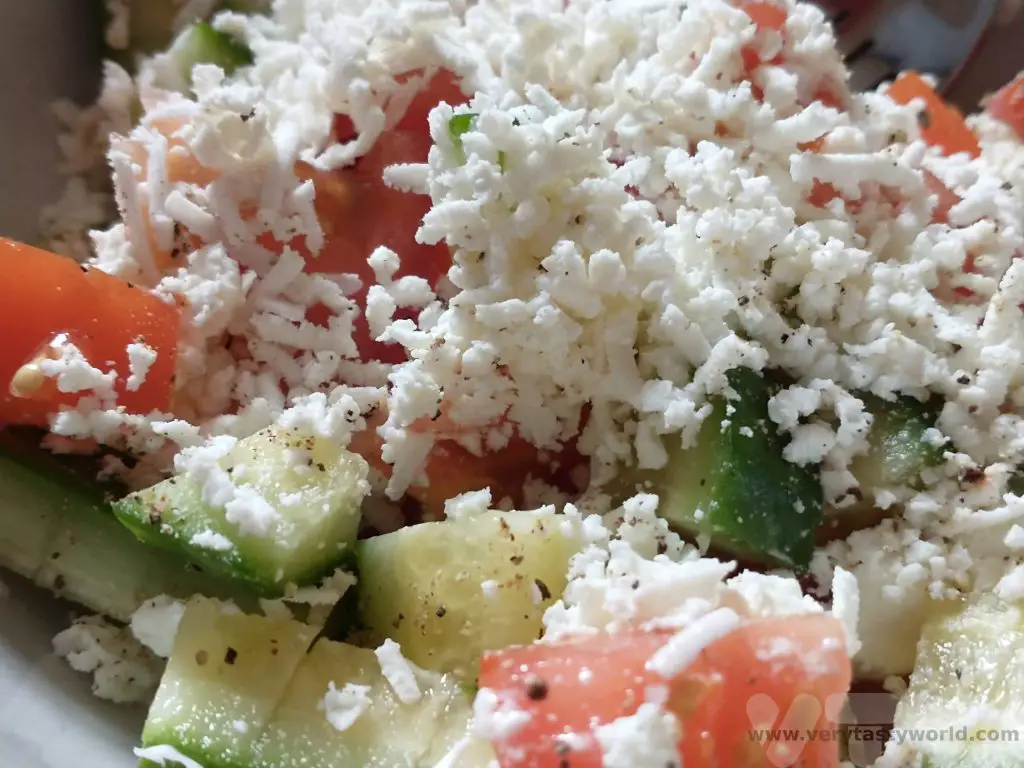
Shopska is traditionally made using Bulgarian sirene cheese which is difficult to get in the UK. Feta cheese is more easily available and is a really good substitute. Here’s our recipe for shopska salad.
Shopska Salad Ingredients
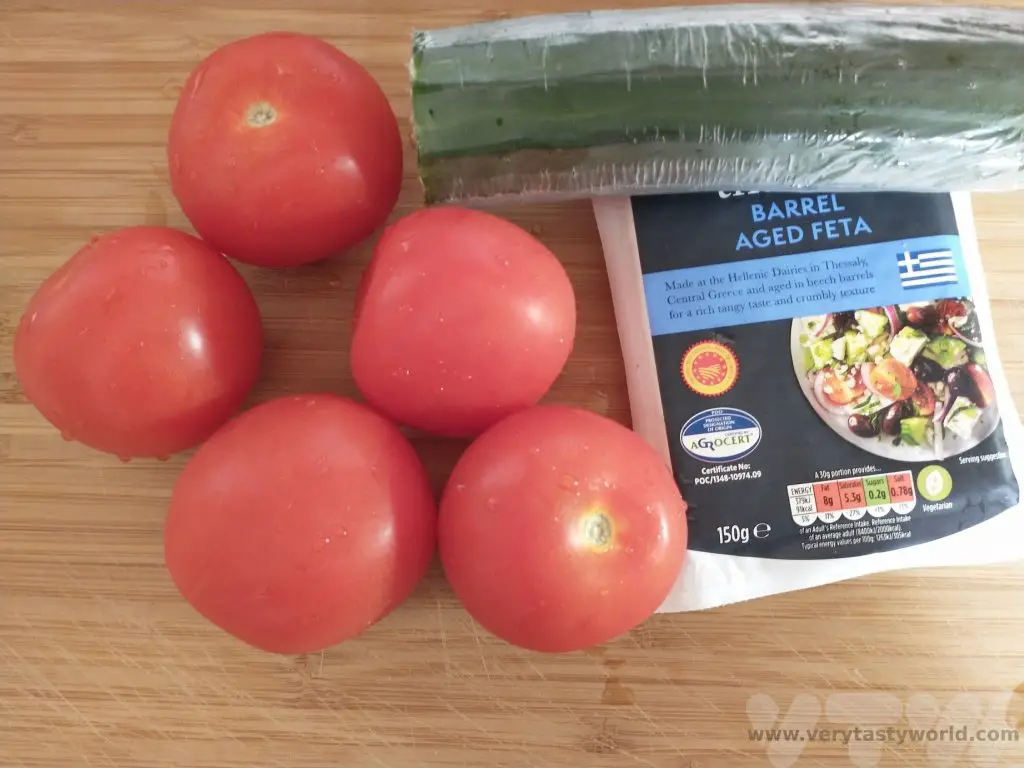
1 cucumber
4 tomatoes
1 cup of feta cheese (we like the barrel aged variety as it has a lovely rich, salty flavour)
1 tbs red wine vinegar (white wine or cider vinegar can also be used)
2 tbs sunflower oil (sunflower is more traditional but it is fine to use olive oil if you prefer)
Pinch of salt (go easy) and pepper (as much as you like)
Method
Many recipes recommend removing the seeds from the tomatoes and cucumber but we hate food waste so we tend to leave them in.
Wash the cucumber and chop into cubes
Wash the tomatoes, cut out the stem and cut into small cubes.
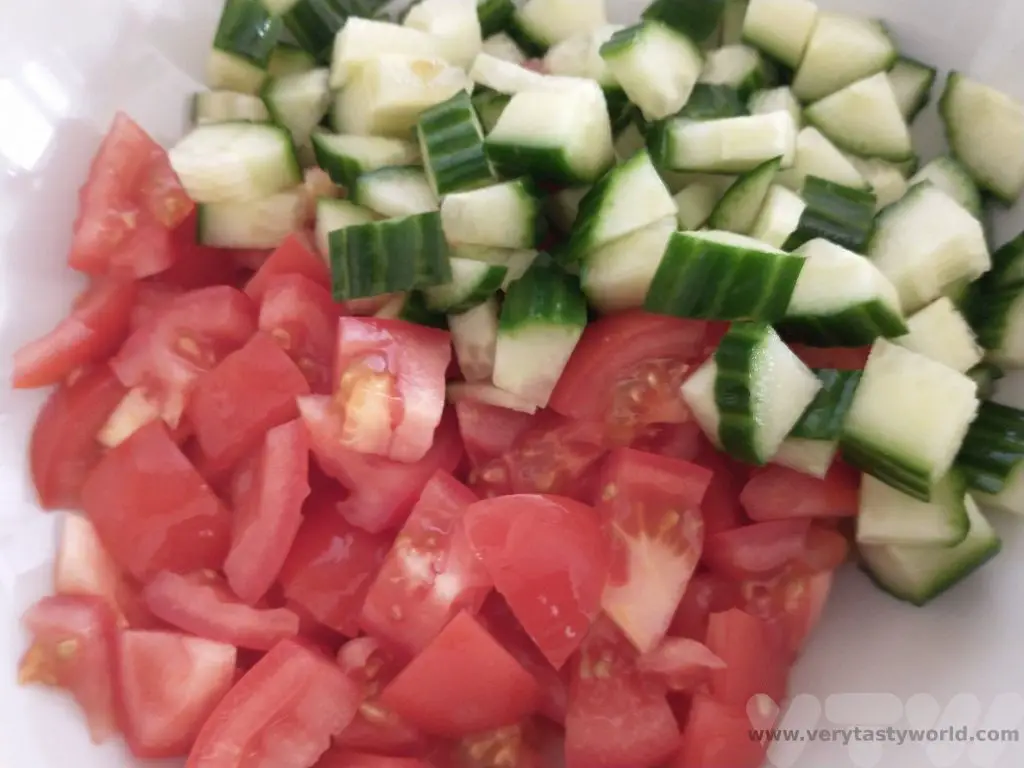
Make the dressing: combine the oil, vinegar, salt and pepper – we recommend minimal salt as the cheese is salty; often we omit the salt altogether. Mix together and then pour over the cucumber and tomatoes. Let them marinate for a few hours if you wish.
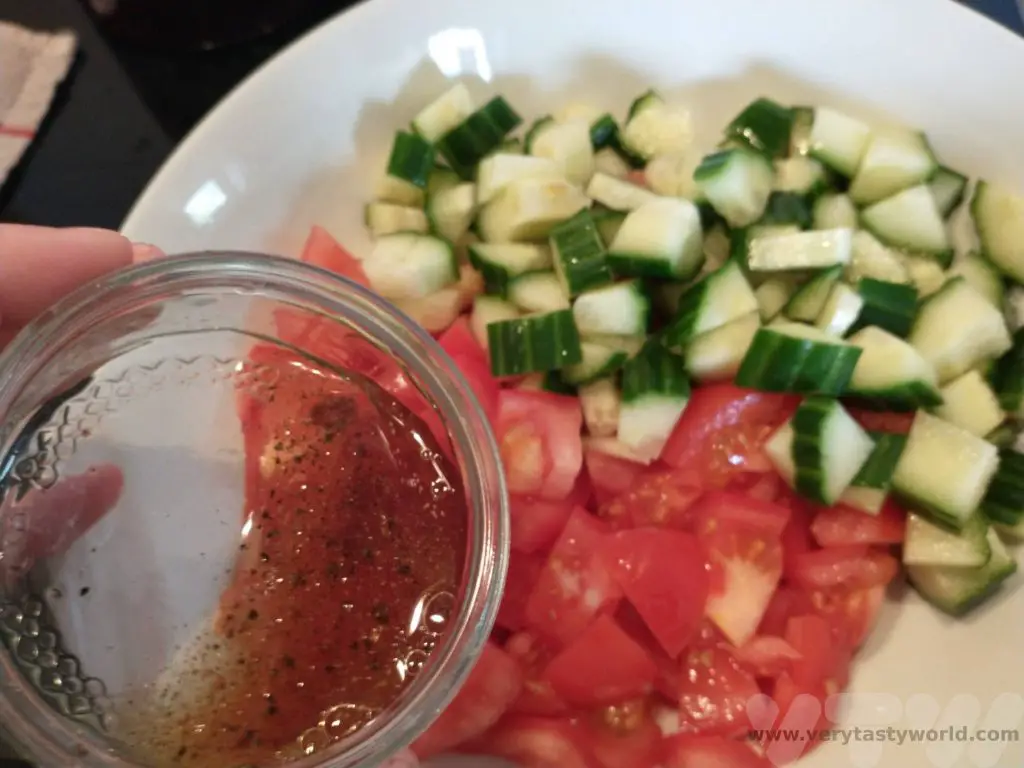
Finely grate the cheese. If you have an ordinary grater that’s absolutely fine but if you can, use a grater with a really fine setting. Feta is quite soft, so isn’t the easiest cheese to grate but it is worth persevering to get a lovely fine mass of cheese.
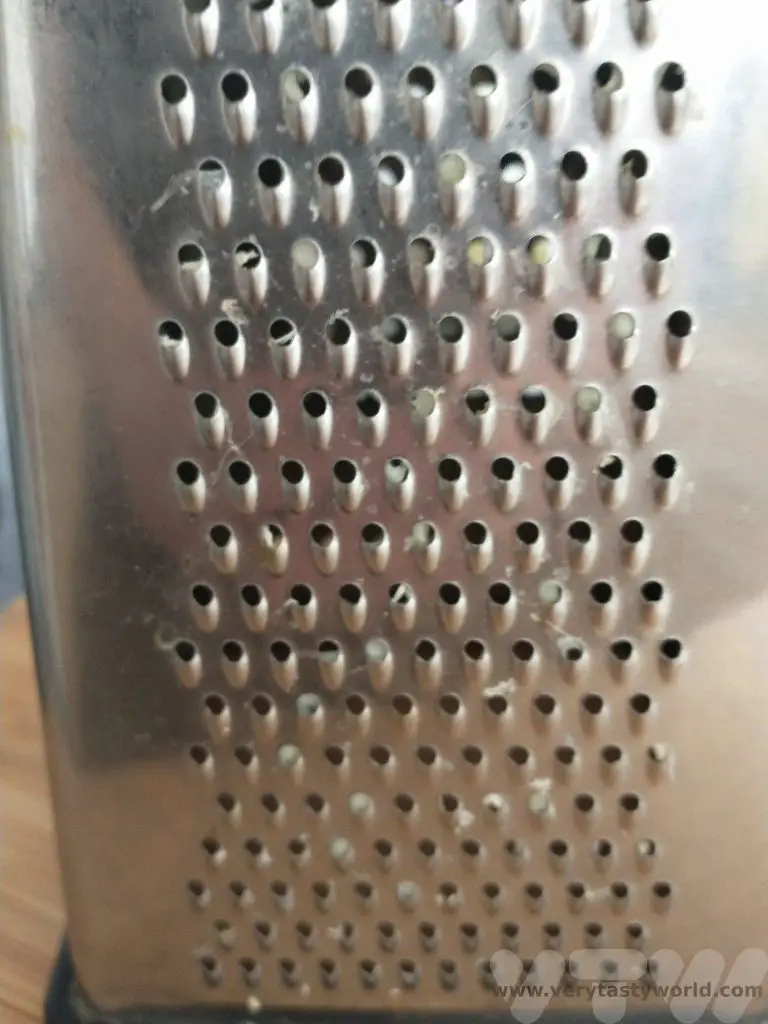
Place the marinated vegetables in a bowl. Sprinkle over the grated cheese. Devour.
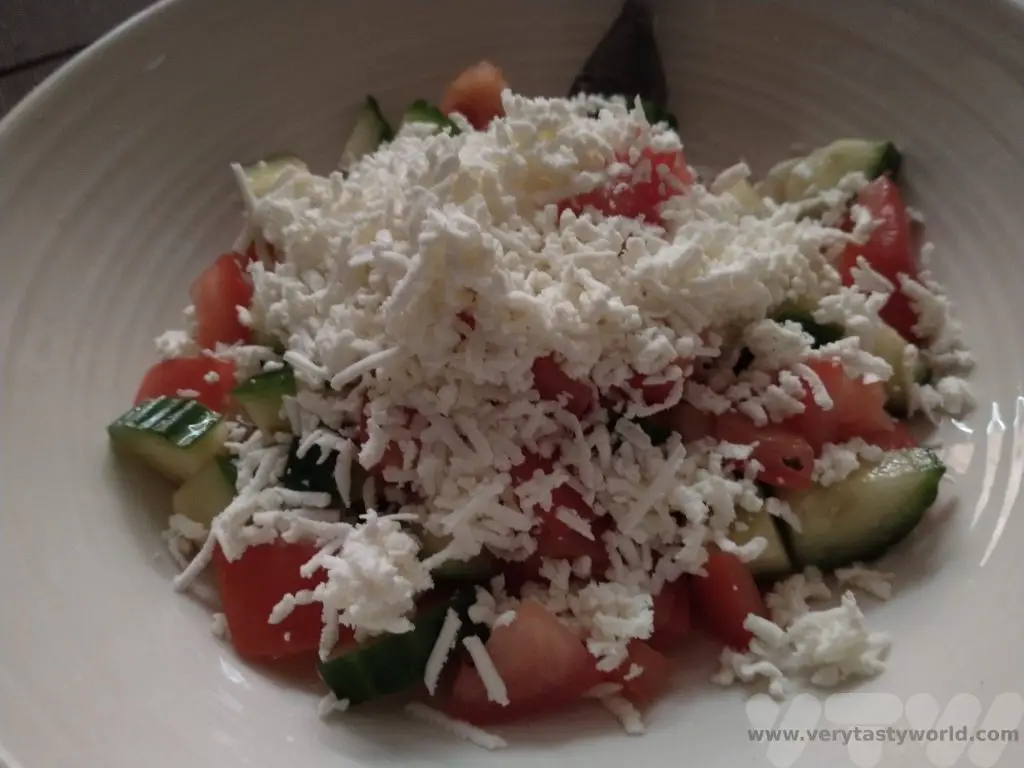
Variations. It is perfectly fine to add in other vegetables: finely chopped red onion, chopped celery, red or green bell peppers etc. If you want to add some herbs such as parsley or basil, that’s okay too.

- RECIPE Oyakodon Donburi
- Zero Waste Recipes Before Your Holiday
- RECIPE: Vegetable Biryani Tamil Nadu Style
- RECIPE: Vegan Wild Garlic Pesto
- Recipe: Venetian Pasta Sauce
- RECIPE: Biryani Raita Recipe
- RECIPE: How to Make Costa Rica’s Gallo Pinto
- Recipe: Japanese Simmered Pork Belly – Buta no Kakuni
- RECIPE: How to Make Umeboshi
Mekong Delta River Cruise in Vietnam
Fruits of the Dragons
As the mighty Mekong river reaches Vietnam and approaches the South China Sea the main waterway splits into a maze of rivers that form the Mekong Delta. The region is known locally as Cuu Long, or “Nine Dragons”, representing the nine main tributaries. Located just a few hours away from Ho Chi Minh City, enjoying a Mekong Delta river cruise is a lovely excursion when visiting south Vietnam.
The delta region covers an area of around 40,500 square kilometres in south-western Vietnam. It is the mouth of the Mekong, Asia’s third longest river, which has run nearly 5000km from its source in the Tibetan plateau, through China, Myanmar, Lao PDR, Thailand, Cambodia and finally into Vietnam.
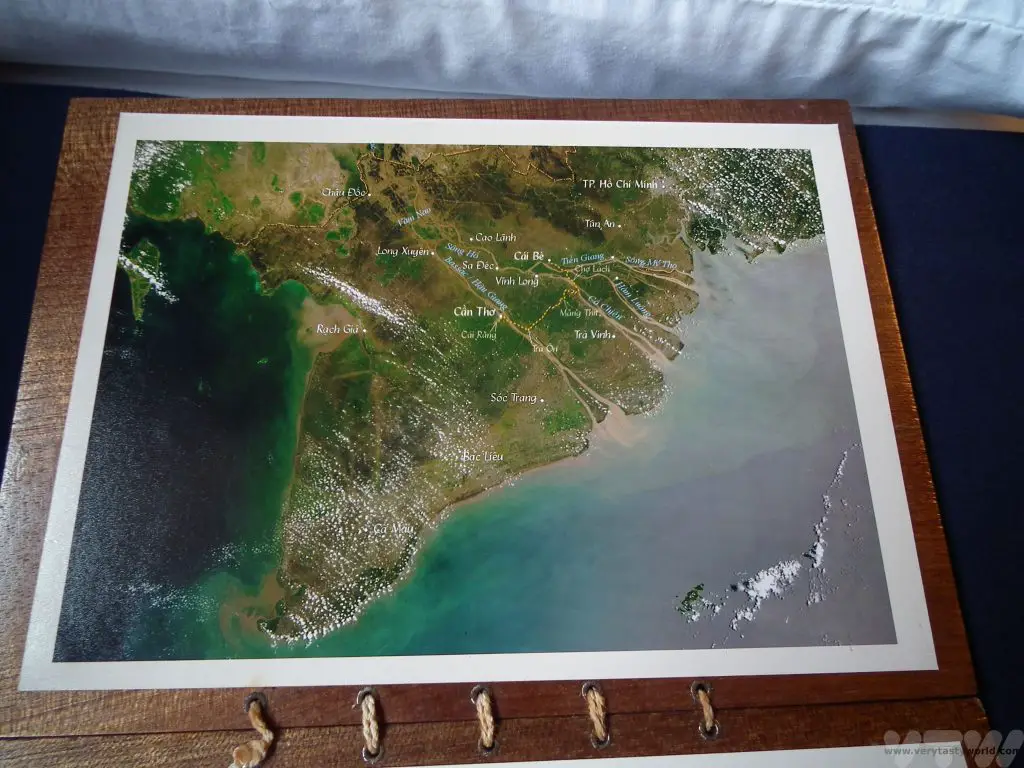
River Cruise
Three to four hours’ drive away from the relentlessly loud and energetic Ho Chi Minh City, the hectic urban hubbub slowly transitions to rural rice fields. It is possible to undertake a river cruise along the Mekong Delta from a number of locations in the area; there are plenty of choices with various levels of indulgence. It’s a lovely way to see the country from a very different perspective and at a pace that is much more laid back. We chose a two day journey from Cần Thơ to Cái Bè starting along the Sông Hậu branch of the river and sailing into the Mekong.
Depending on budget there are different boats available. Some are rather splendid – we travelled on a traditional style Bassac boat. These are wooden vessels with private cabins and a decks with seating so that you can enjoy the view.
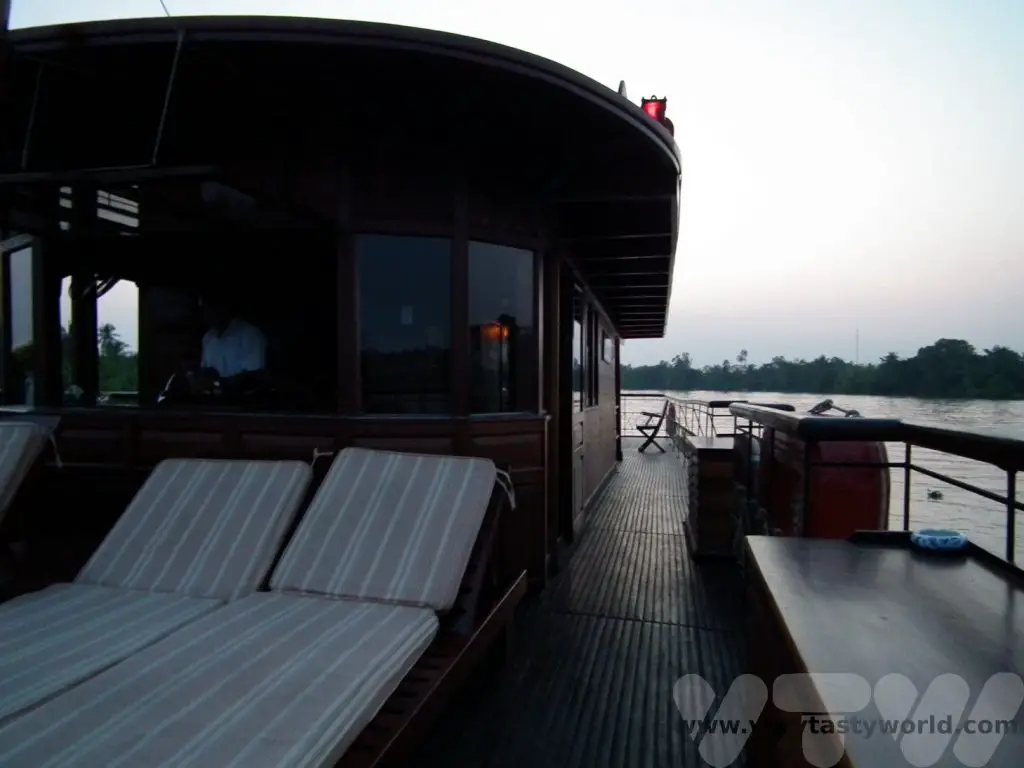
The cabins are compact, but had all the facilities we needed, including a teeny en-suite shower room.
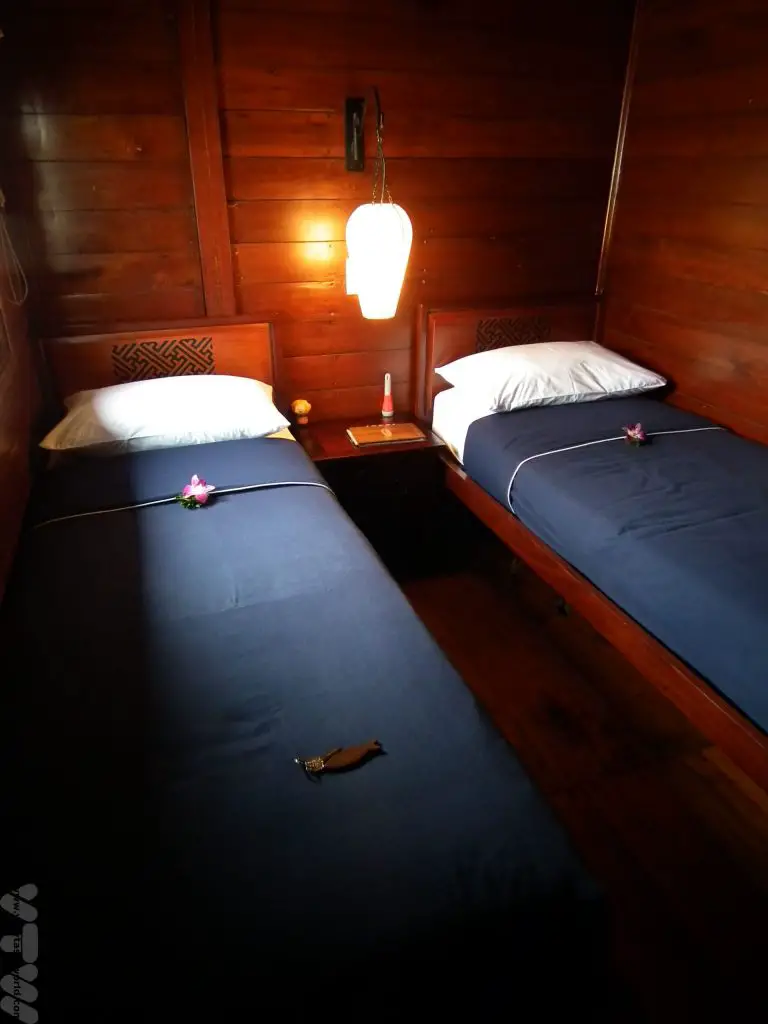

A Slow Journey Along the Mekong Delta
Cruising along the Mekong can best be described as ‘leisurely.’ We saw all sorts of vessels, large and small, as we travelled along.
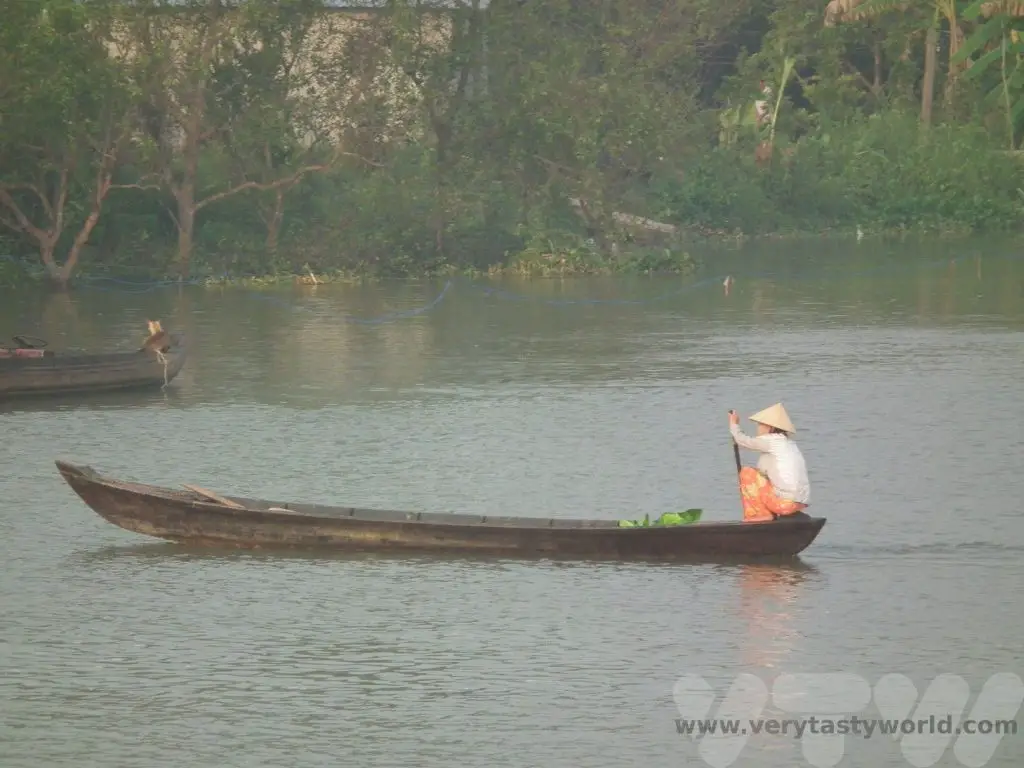
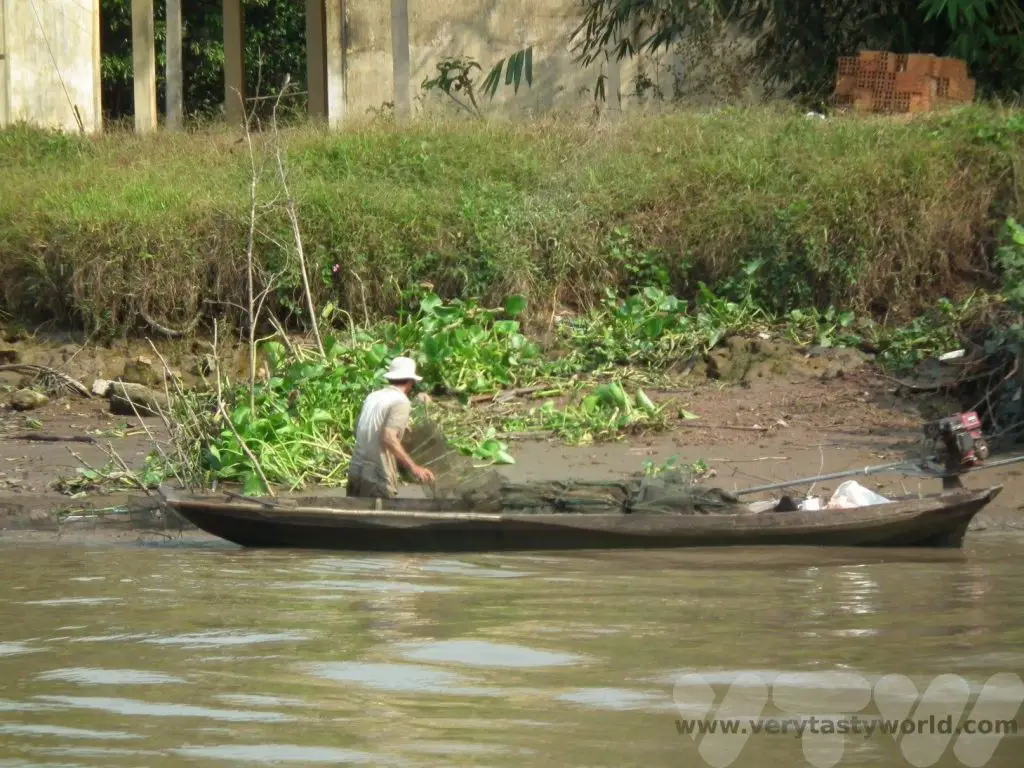
All along the journey we saw water hyacinth floating gently by. This is a fast growing plant that floats freely in the river. It is a bit of a problem in the delta as it can get clogged up in a motor boat’s propellers and is also somewhat invasive, preventing other life thriving on the river. It is apparently edible (not sure we’d want to fish it out of the river and have a munch and, anyway, it needs to be cooked first) but it can also be collected and processed in order to make woven products such as mats, bags and baskets, which local people can sell.
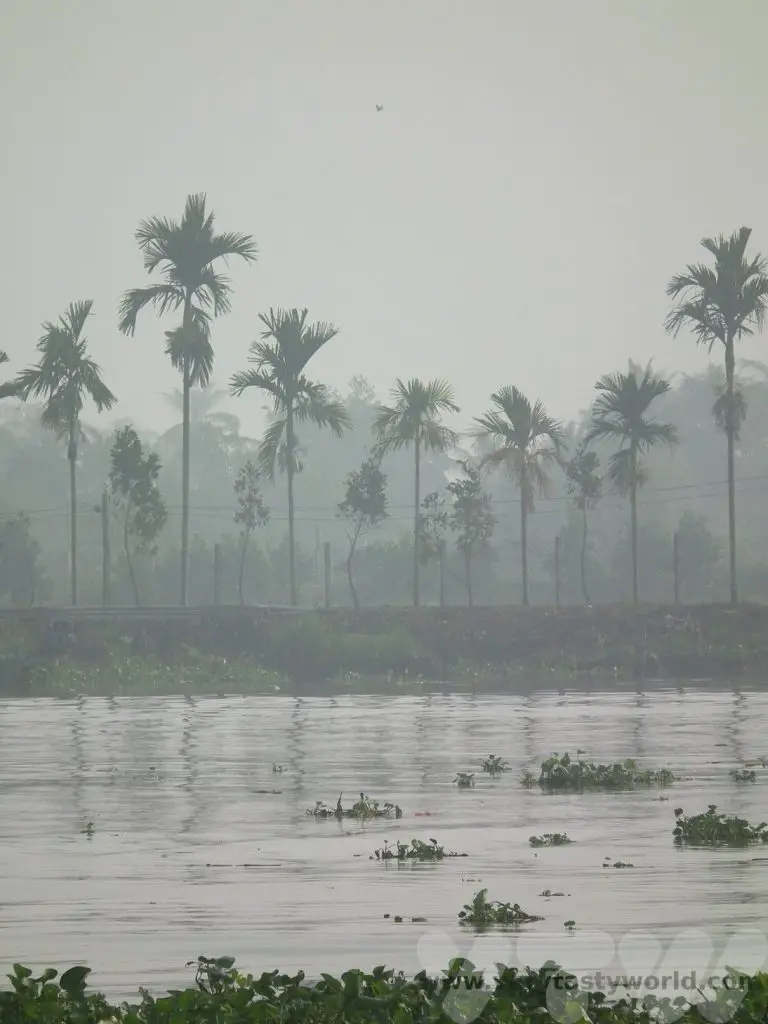
Mekong Delta River Cruise – A Land Excursion
Many of the boat trips offer excursions to various attractions along the way. It is also possible to visit some of the onshore villages in the area and to explore them on foot, visiting local farmers and learning about the food that’s produced there.
The area is extremely fertile and rice is the major crop grown. Due to the climate in South Vietnam it is possible to achieve three crops per year.
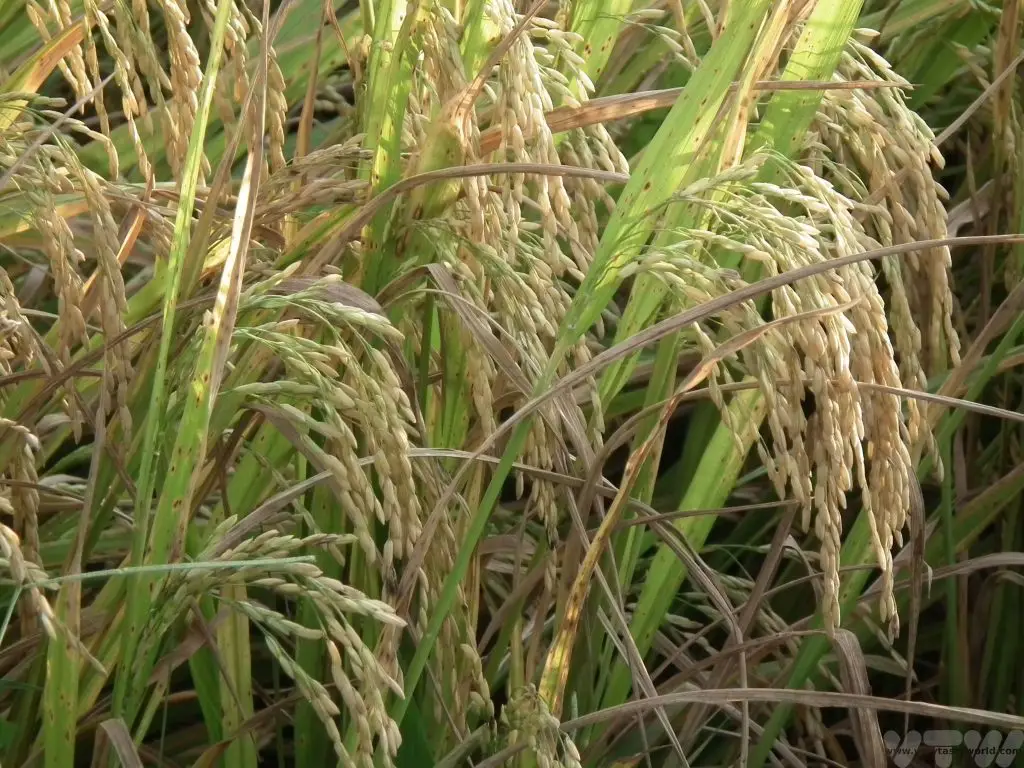
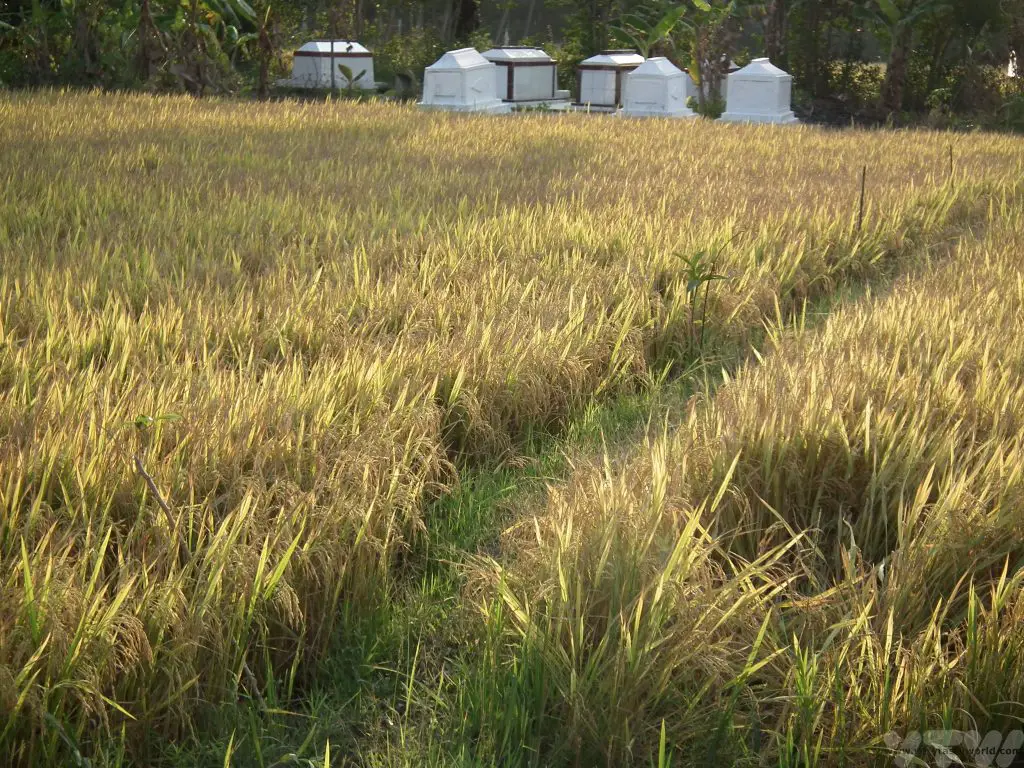
There are no cemeteries in Vietnam so families set up graveyards in the fields.
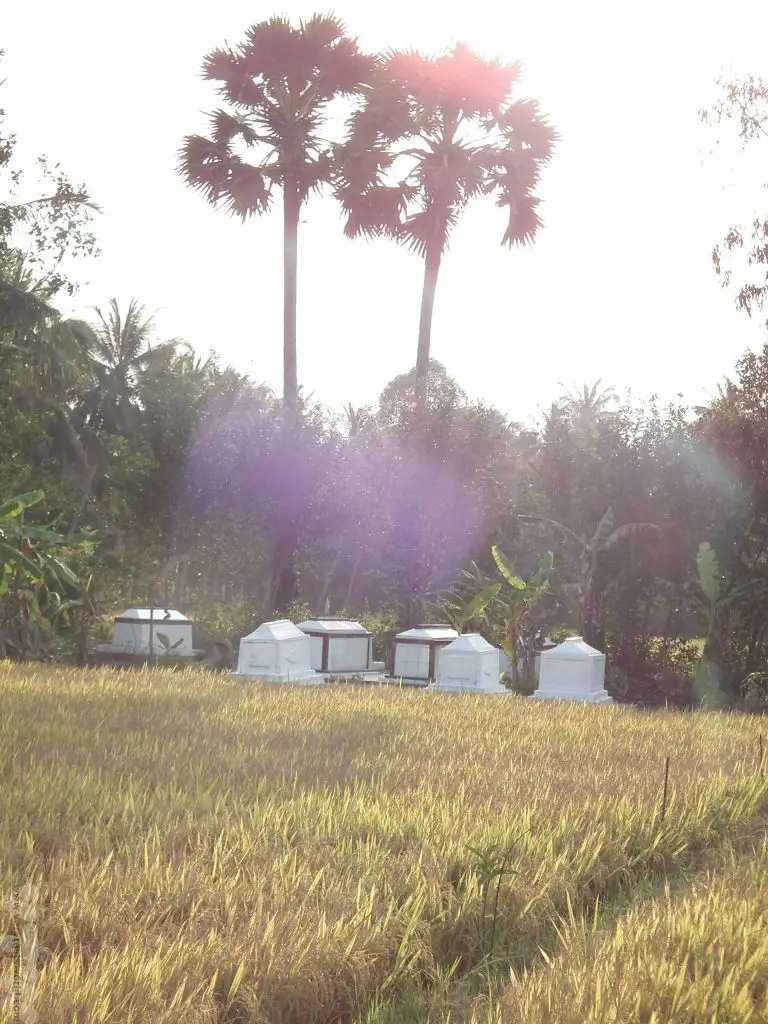
There are also a number of fruit trees that grow in the region. Some are familiar.
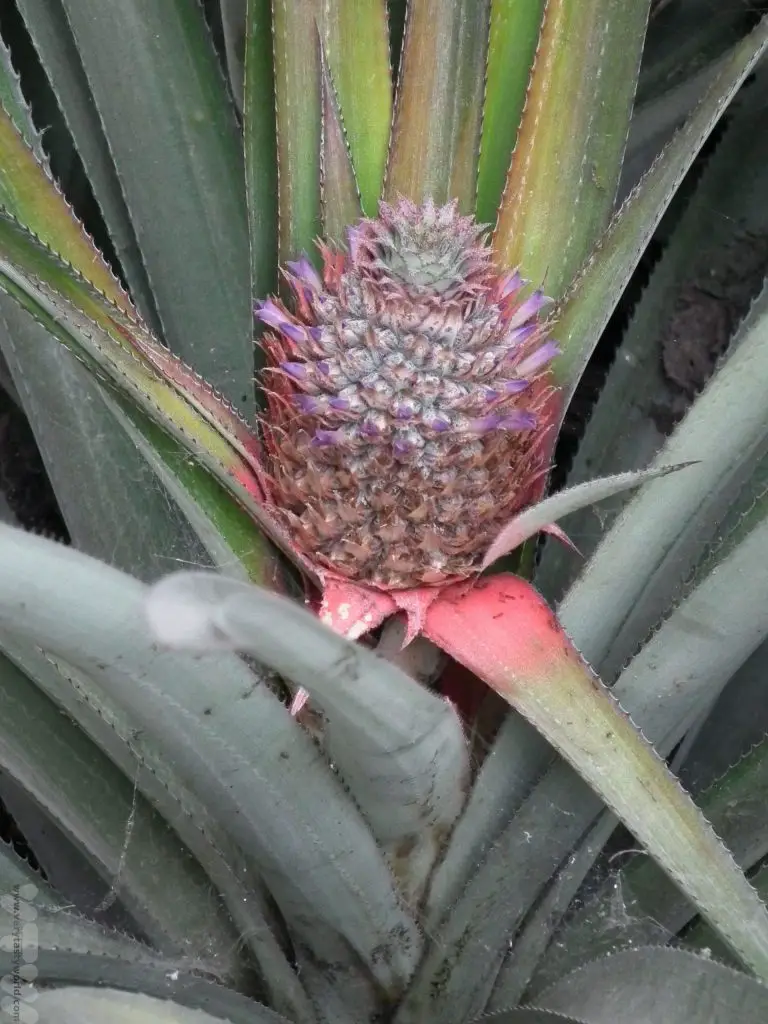
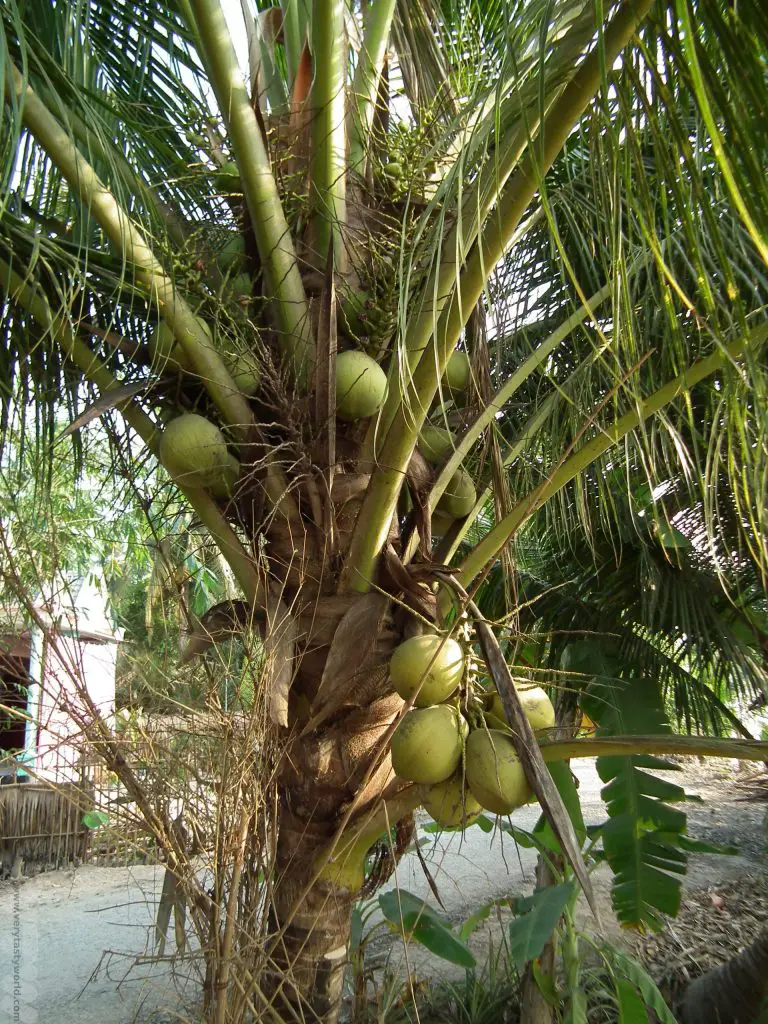
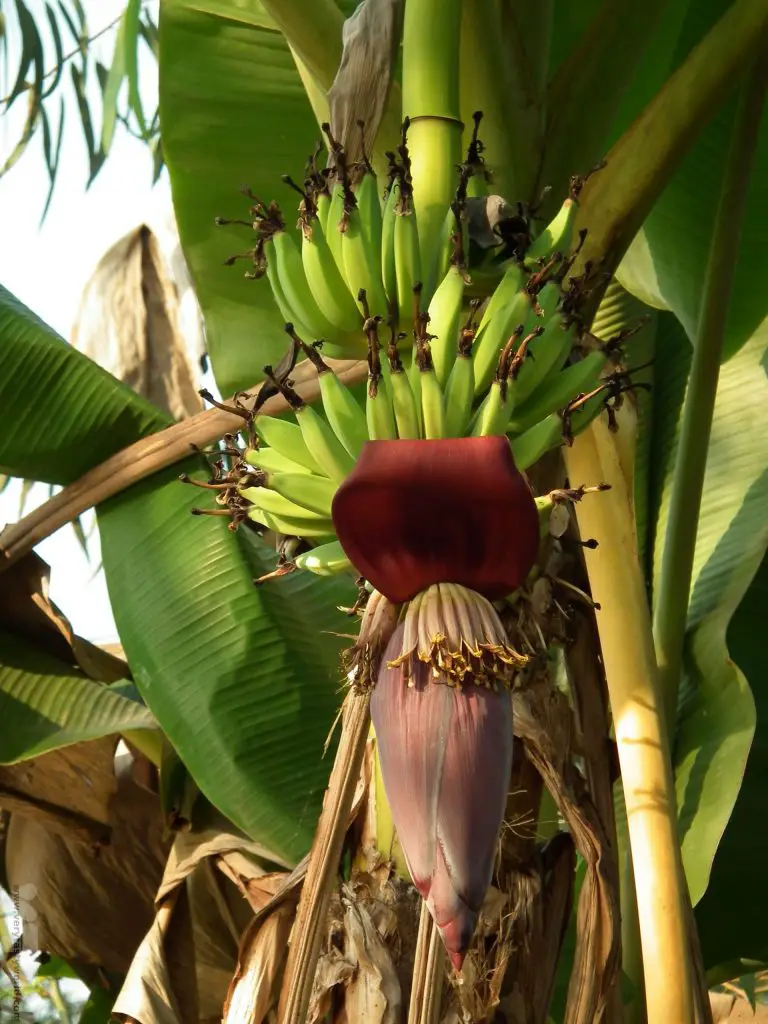
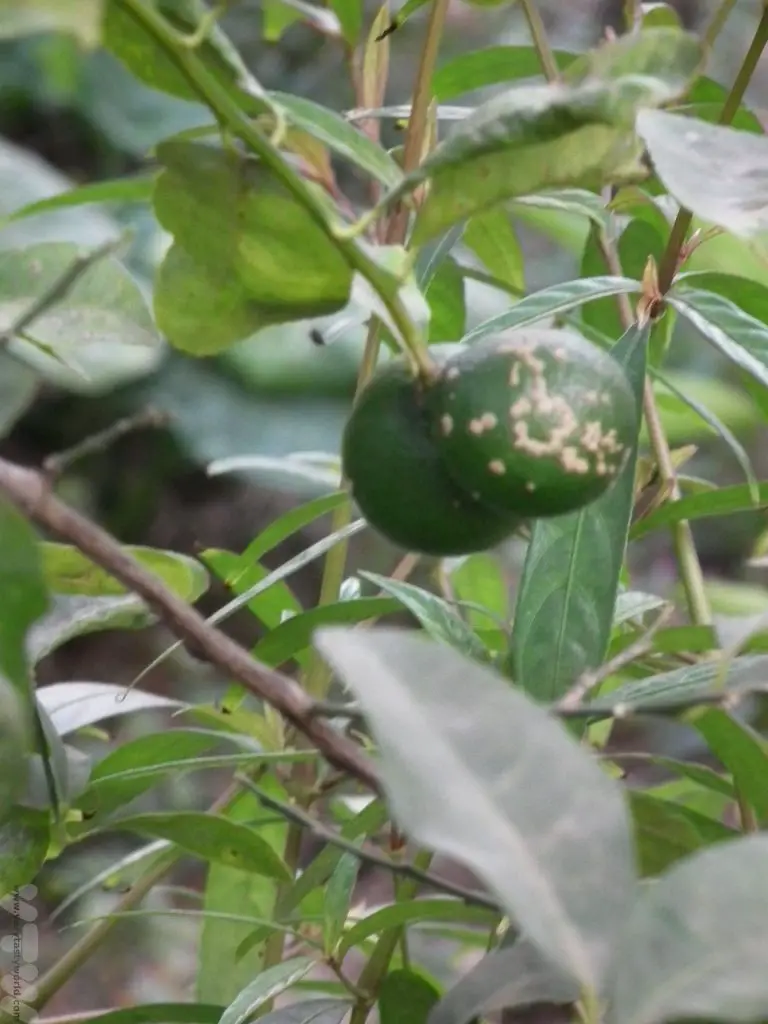
Jackfruit has become hugely popular in recent years as a ‘meat substitute’. Its texture and ability to absorb flavours make it incredibly versatile for vegetarians and vegans – mock ‘pulled pork’ is a particular favourite. But actually it is very tasty as a fruit in its own right.
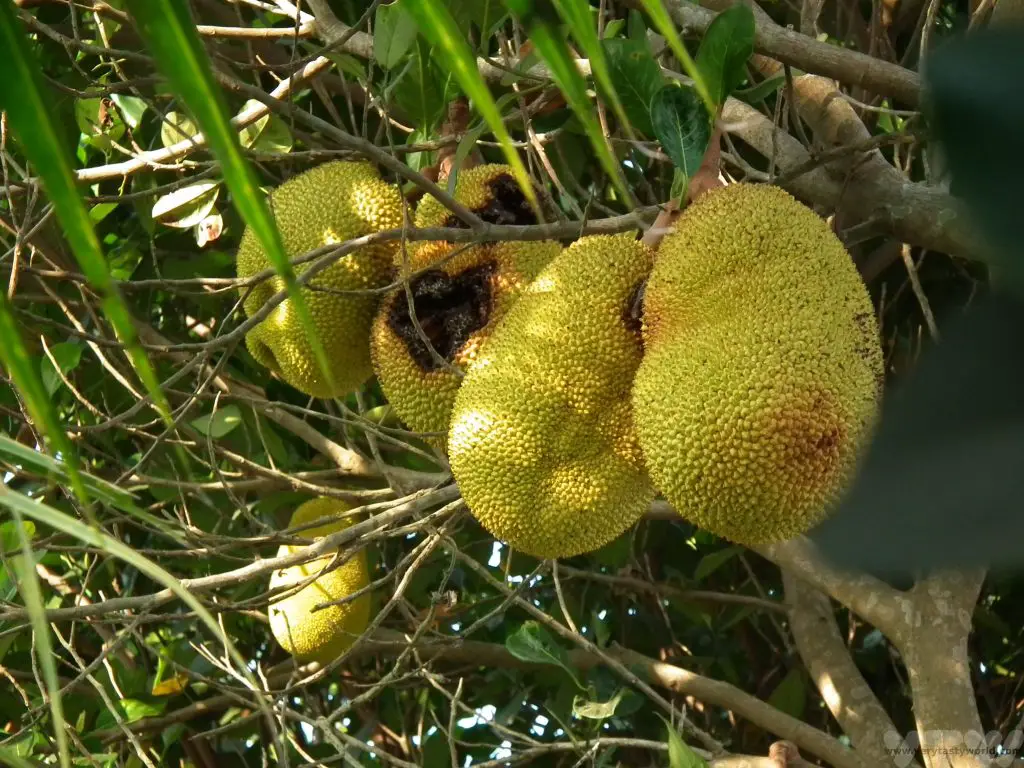
Tapioca is the starch derived from the roots of the cassava trees and often used in puddings (which are far more delicious than school dinners).
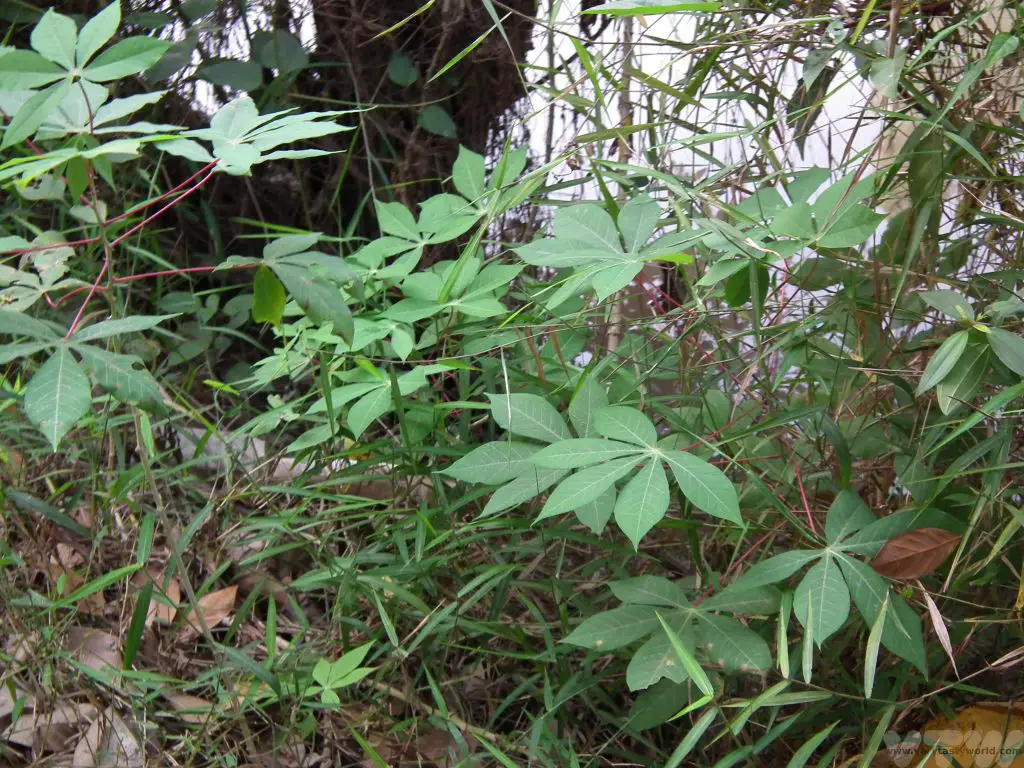
Some of the residents are happy to open up their houses and it is possible to do home stays with local families. If you’re just on a day trip, visitors are sometimes offered some of the amazing fruits grown on the island.
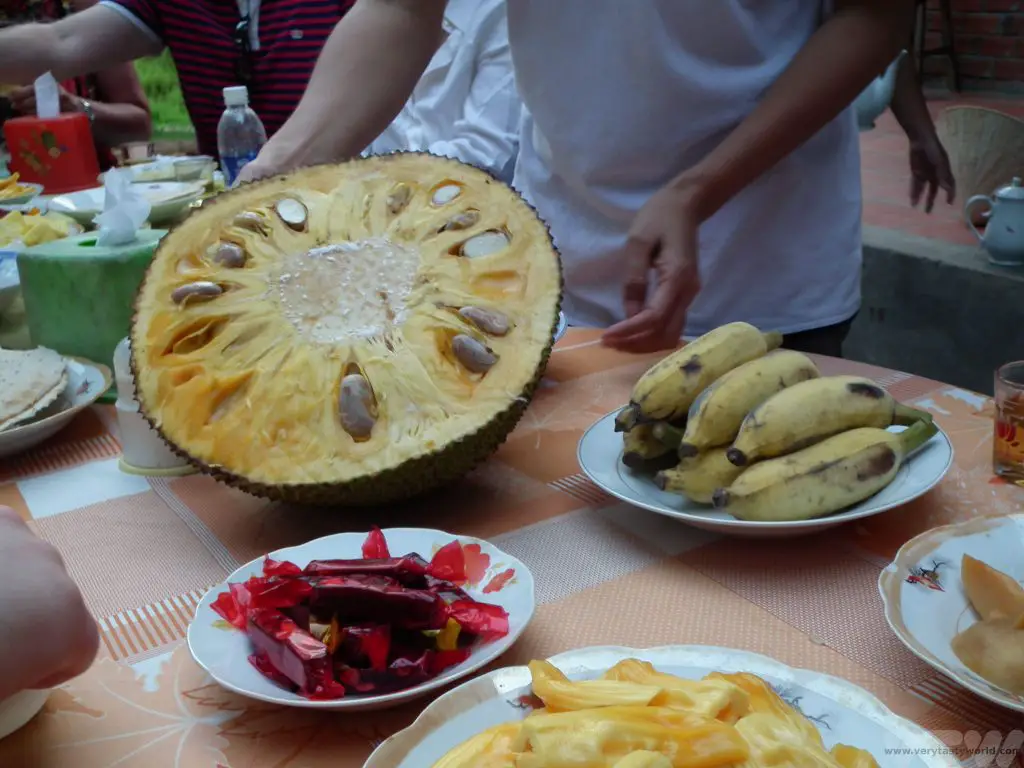
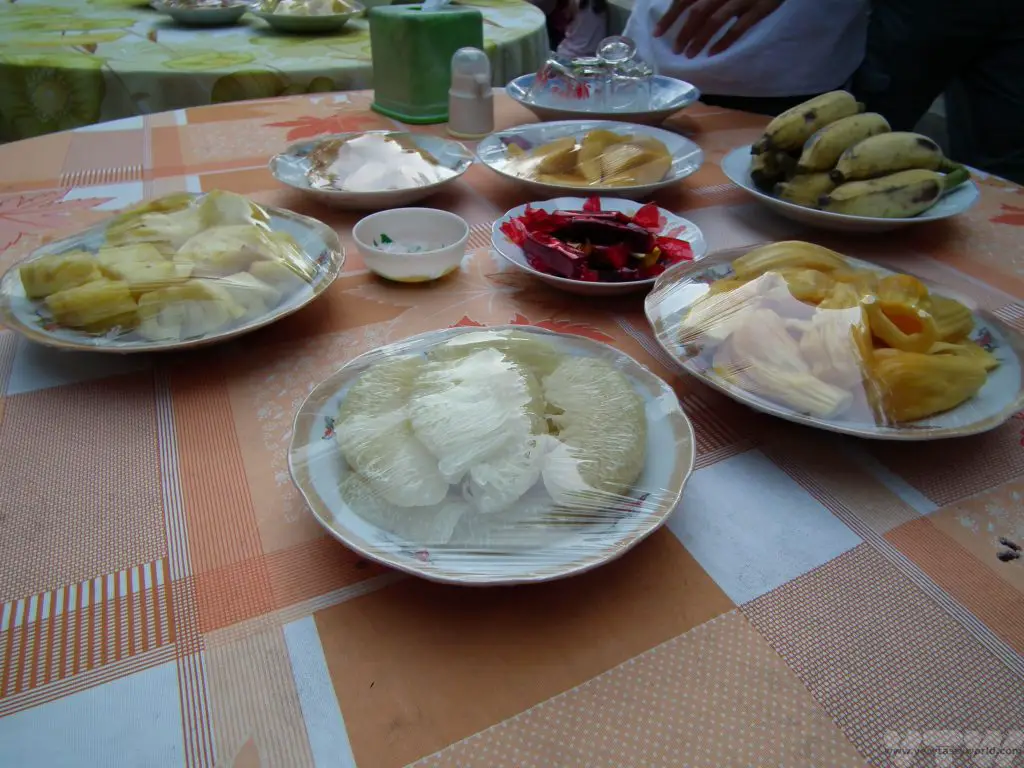
This platter was exceptional. There is an sequence to eating the fruit in order to gain maximum enjoyment: Always start with the fruit with sour flavours and finish with the sweet.
One plate that was a particular revelation was the pineapple. Of course, fresh pineapple is utterly scrumptious, especially when it hasn’t travelled half-way around the globe, but it was served by sprinkling a little chilli and salt on each piece and was a taste sensation. It makes sense: like a lot of Vietnamese food it includes sweet and sour flavours (which the pineapple provides) plus an additional salty dimension and a good dose of heat from the chilli.
Banana leaves are not only functional, they can also be decorative – just look at this lovely banana leaf ‘origami’ grasshopper.
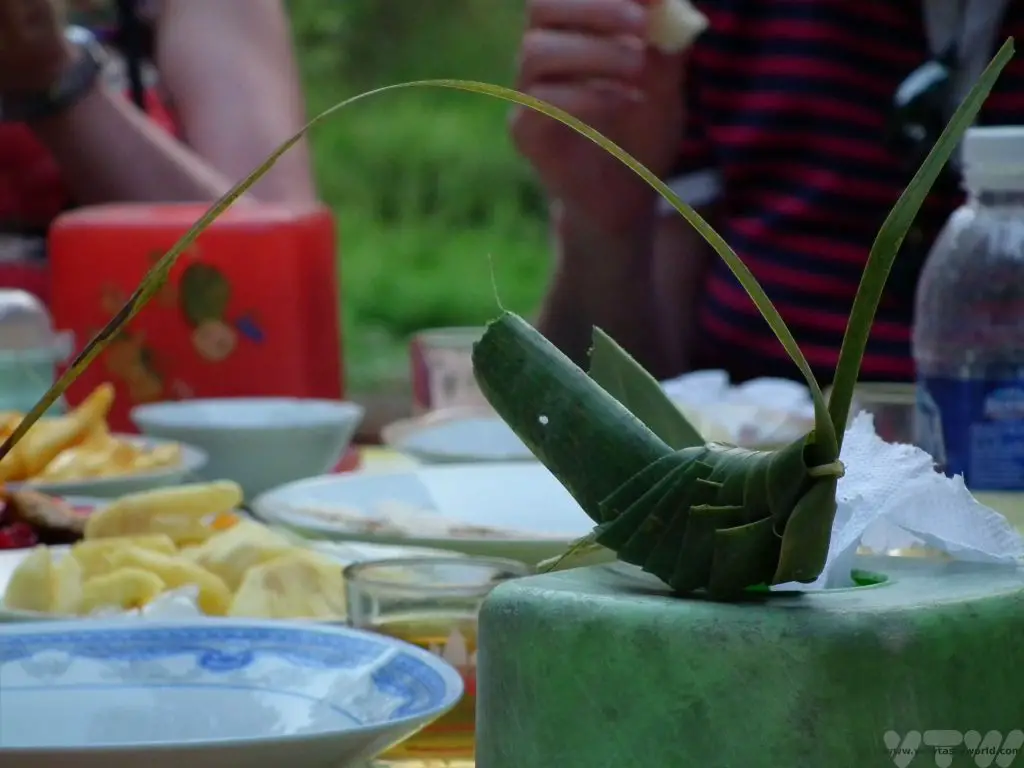
It was late afternoon by the time we returned to our boat.
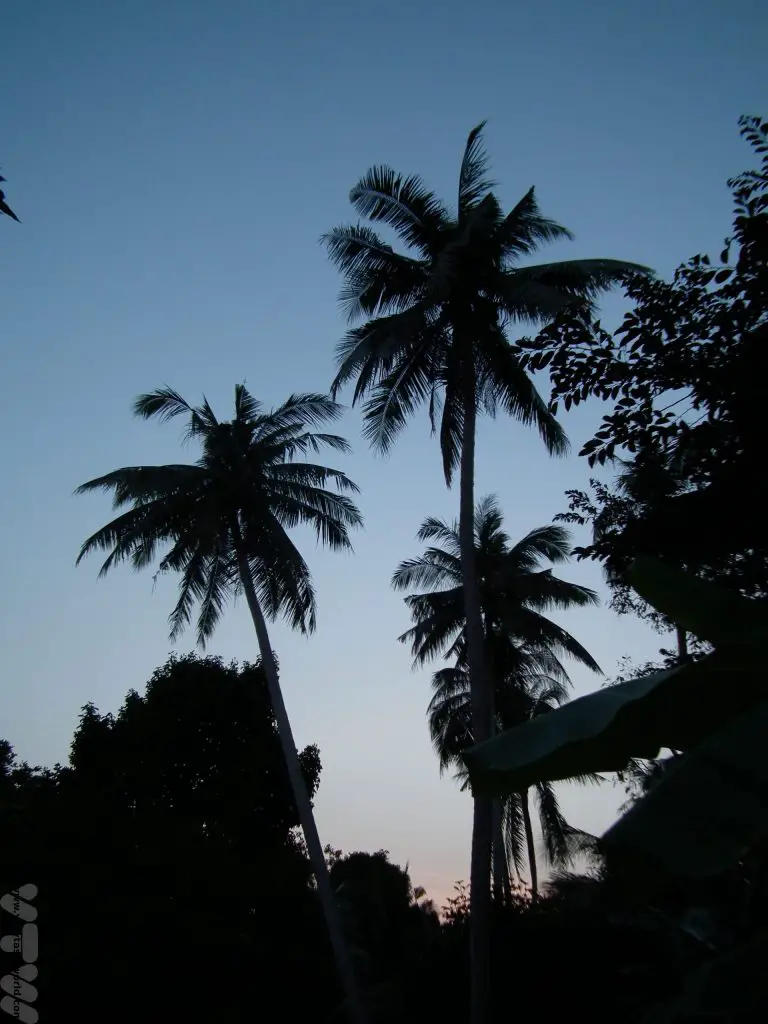
Time for a delicious, decadent seafood dinner…
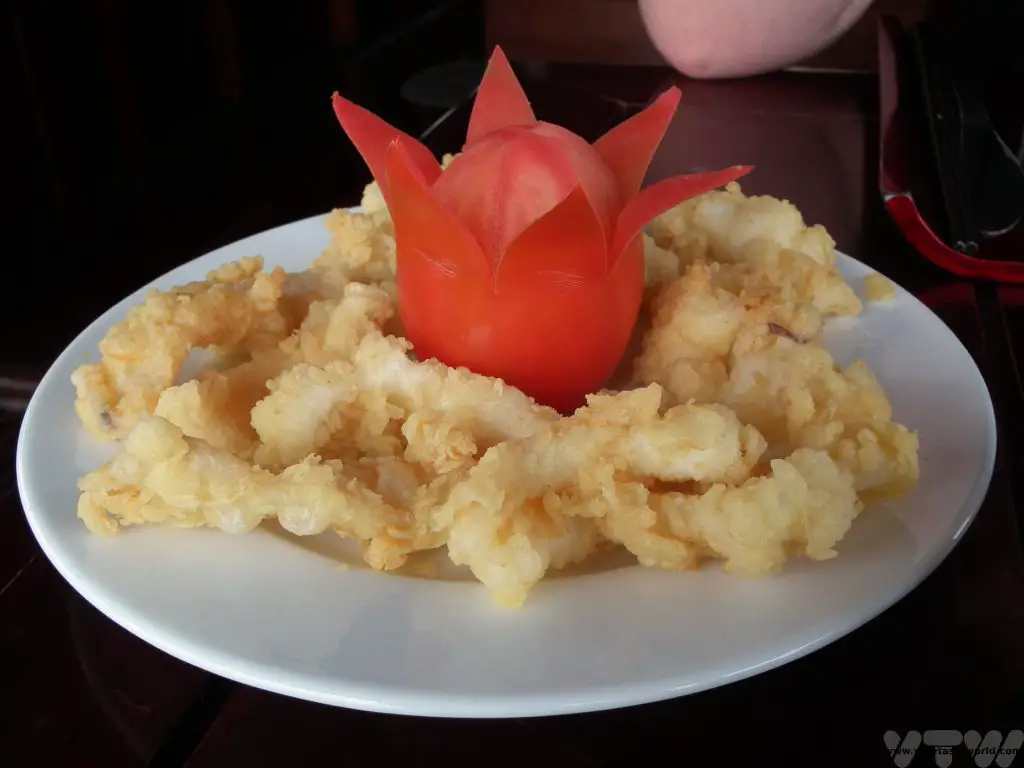
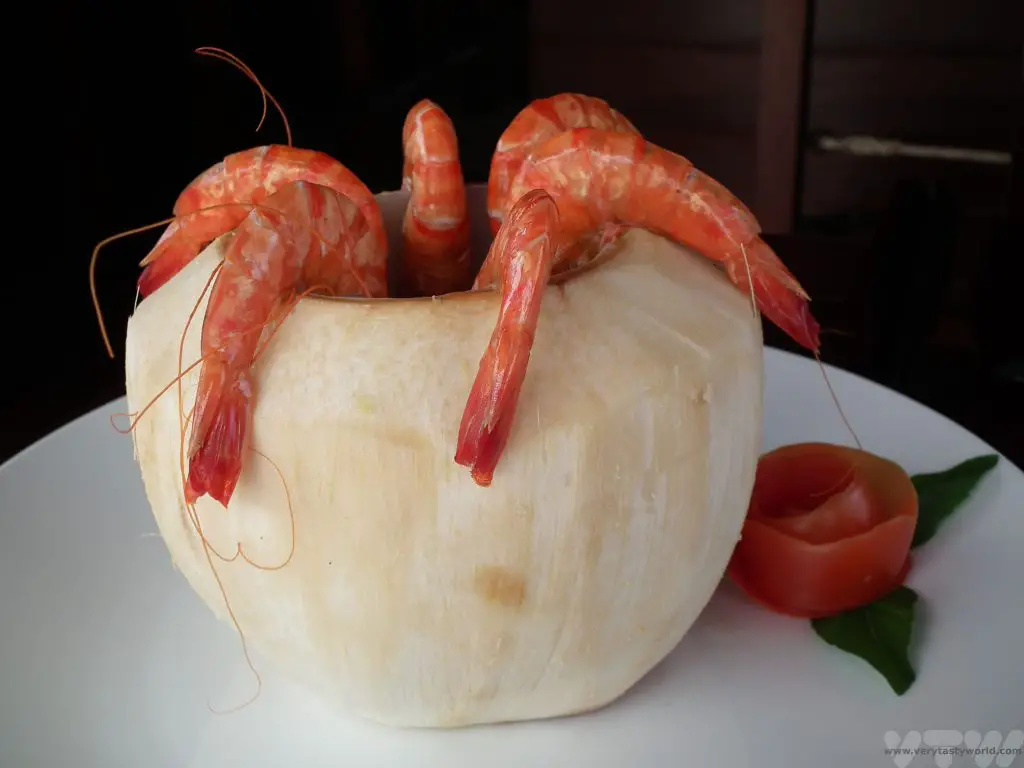
…followed by after-dinner drinks watching the sun set over the Mekong.
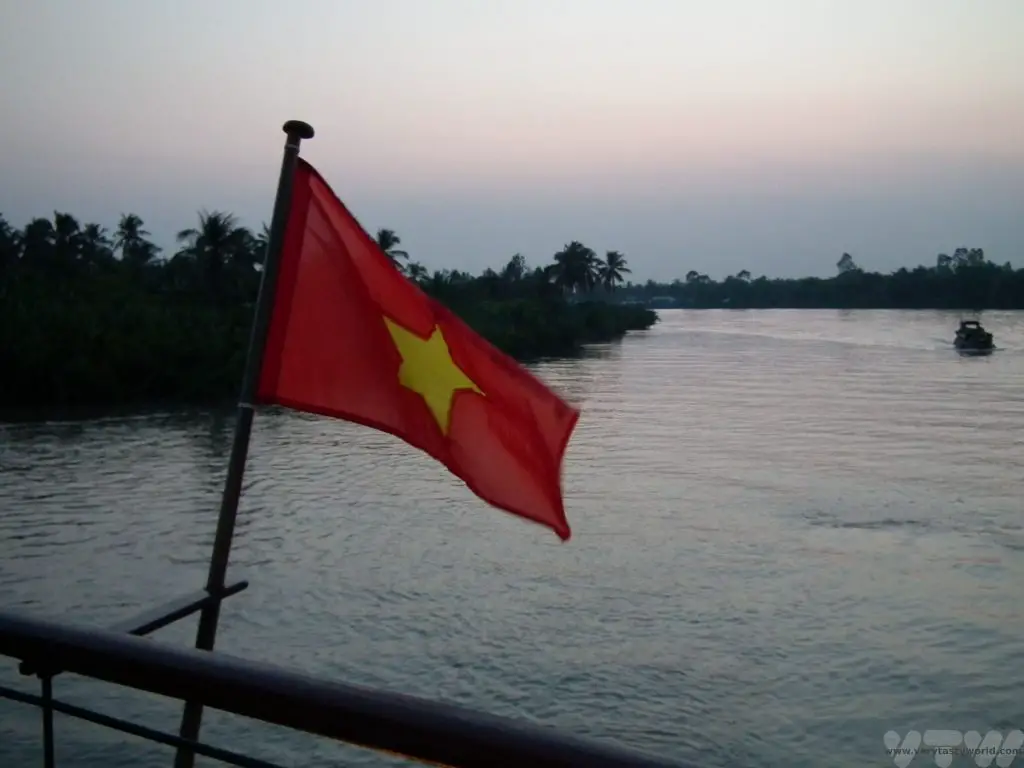
Journey to Cái Bè
Our boat docked at Tra On for an overnight stay onboard. The following morning we headed towards Cái Bè. The Mekong becomes much more of a working river and we passed by many riverside emporia and floating shops.
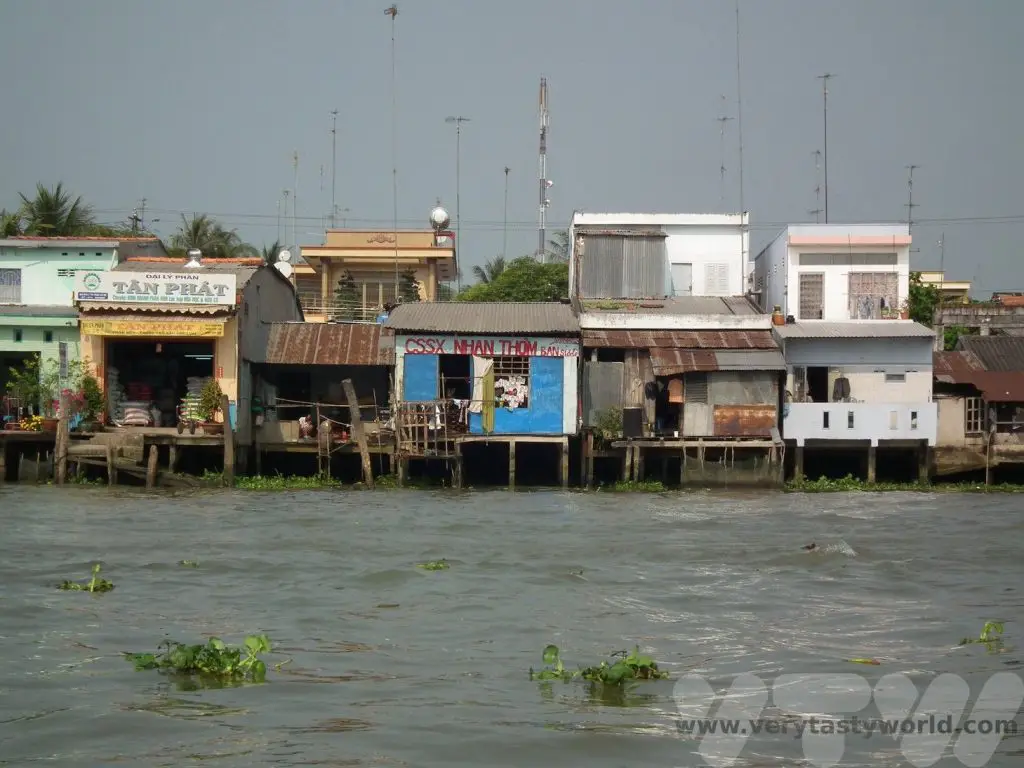
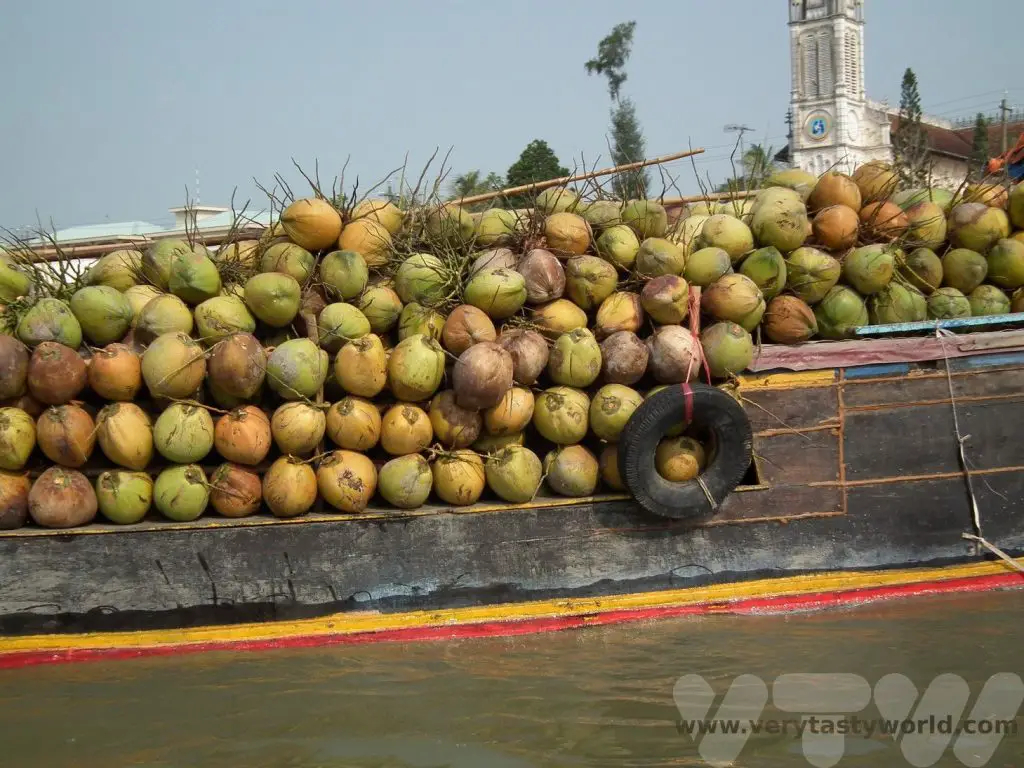
Cái Bè has a Catholic church – an unusual structure to see in the region. Dating from 1929-1932 apparently it has the tallest bell tower in the province.
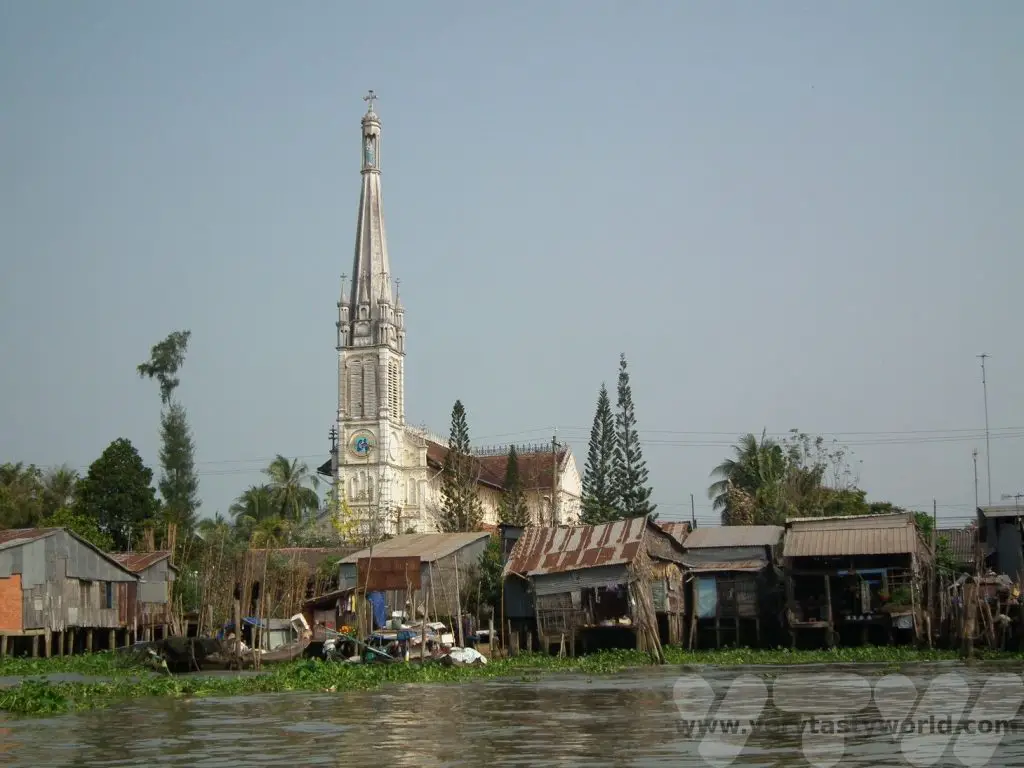
The local boats have eyes painted on them which reputedly scares away the crocodiles.
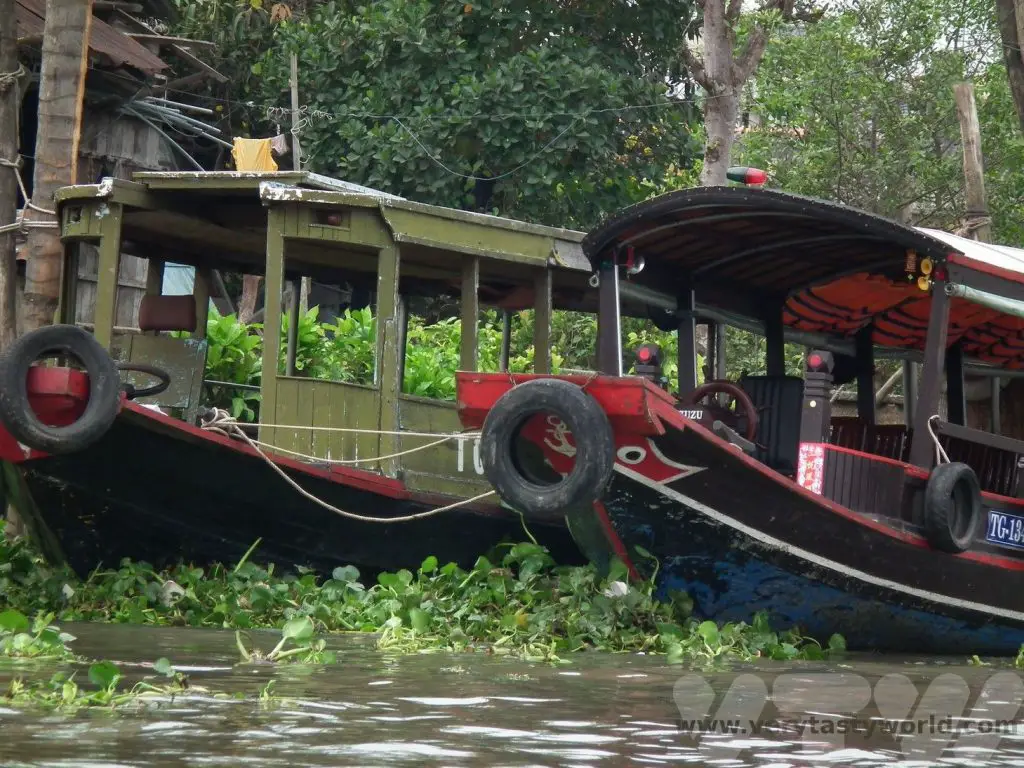
On arrival at Cái Bè we disembarked and visited a factory which made rice products – rice paper and rice cakes – as well as candies.
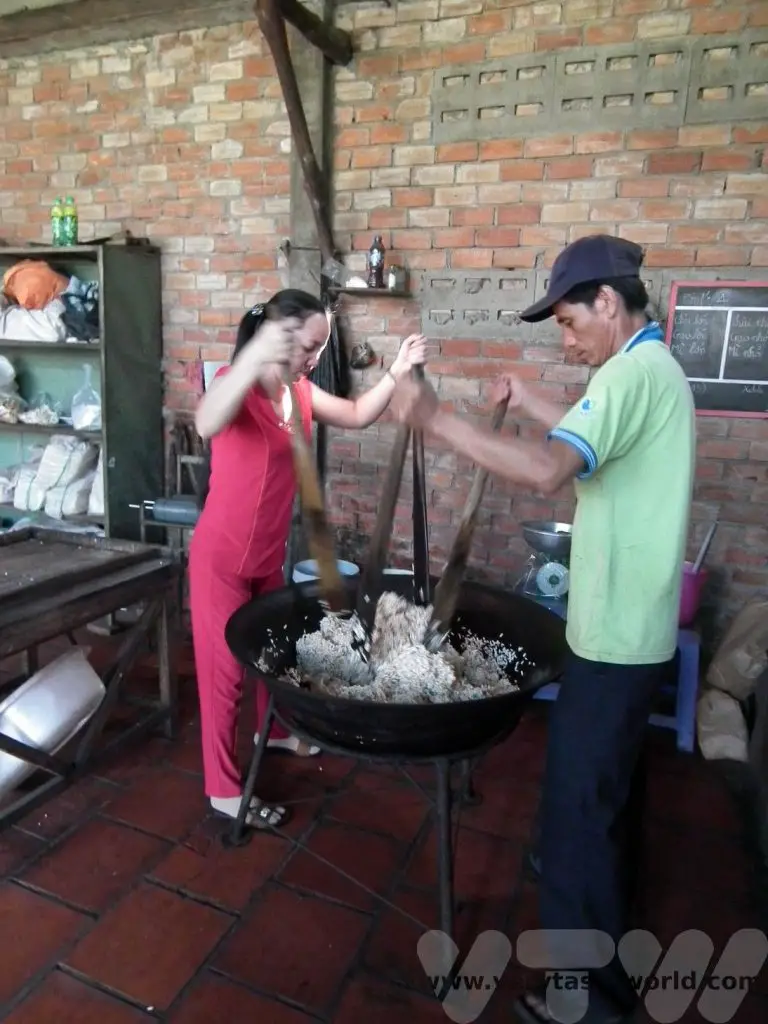
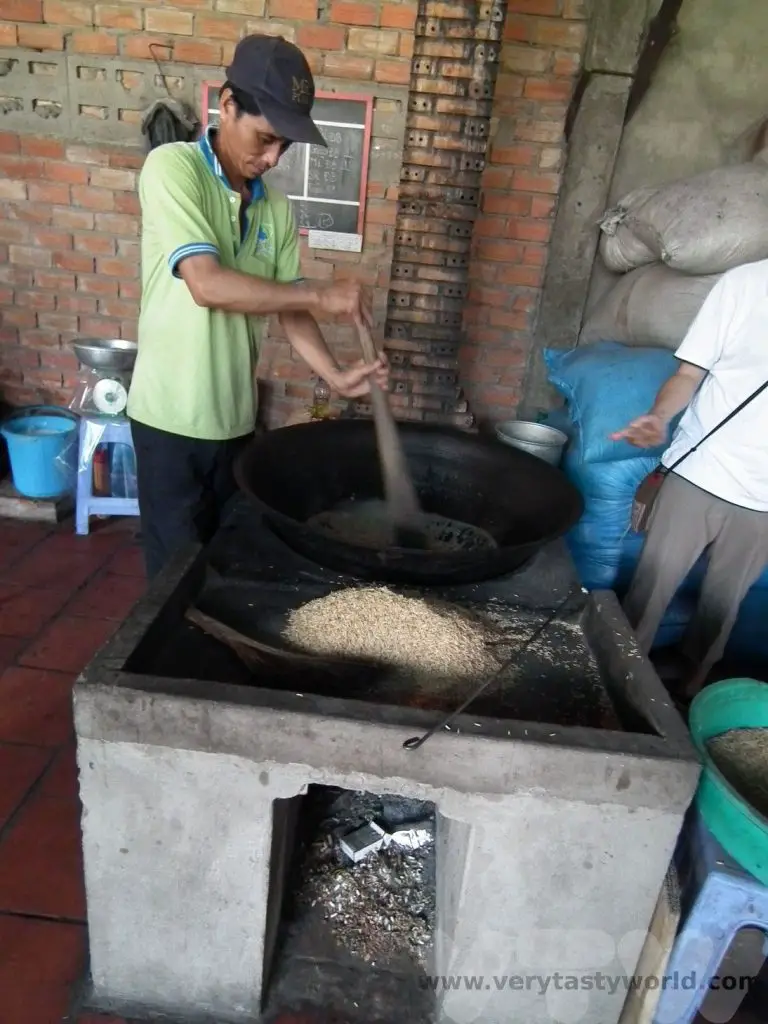
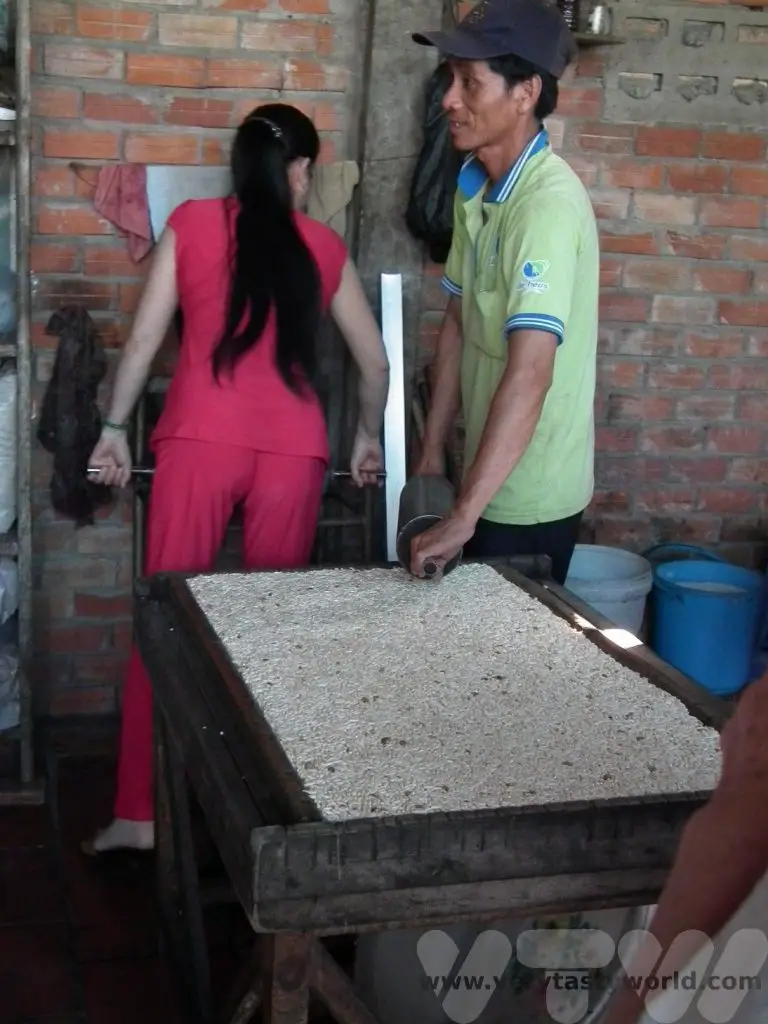
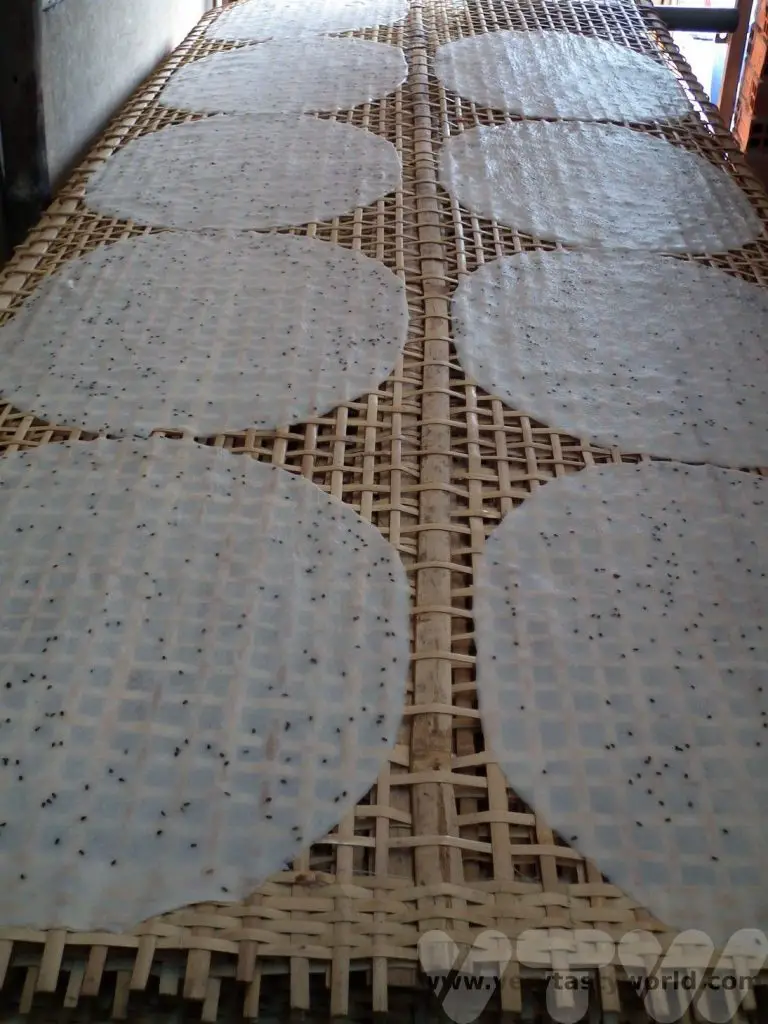
In making coconut candy, shredded coconut is used to make coconut milk and cream which is combined with sugar and malt syrup and then heated and mixed together.
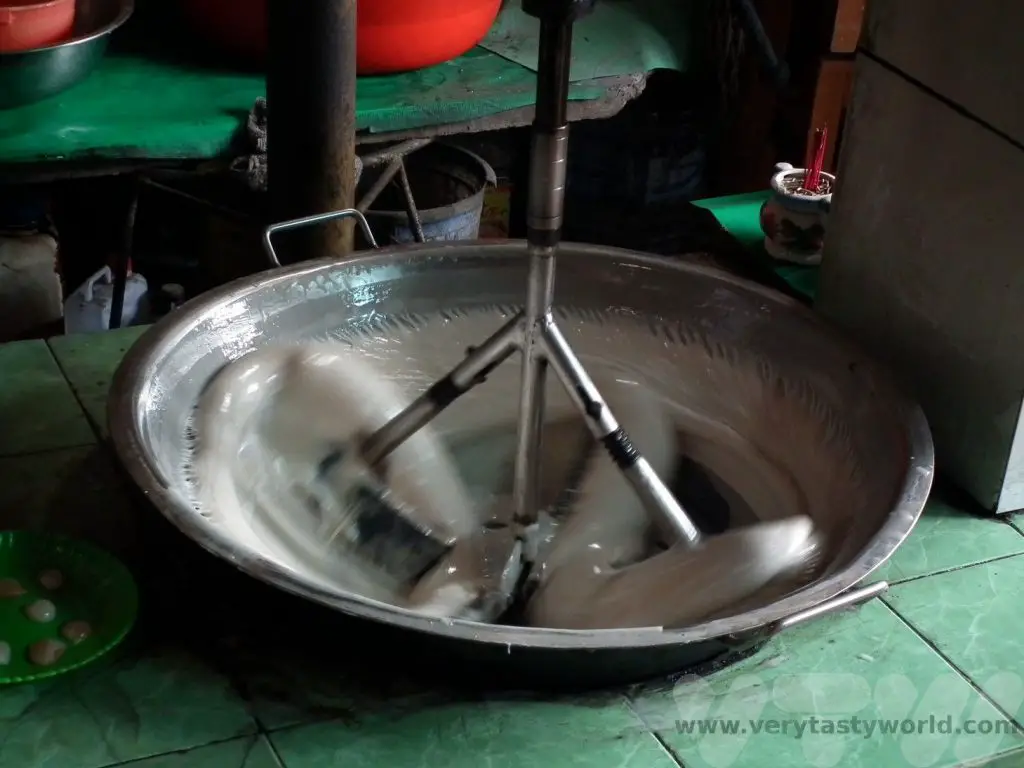
Whilst still warm, the mixture is then laid into strips to cool and then they are cut into bite-sized candy pieces.
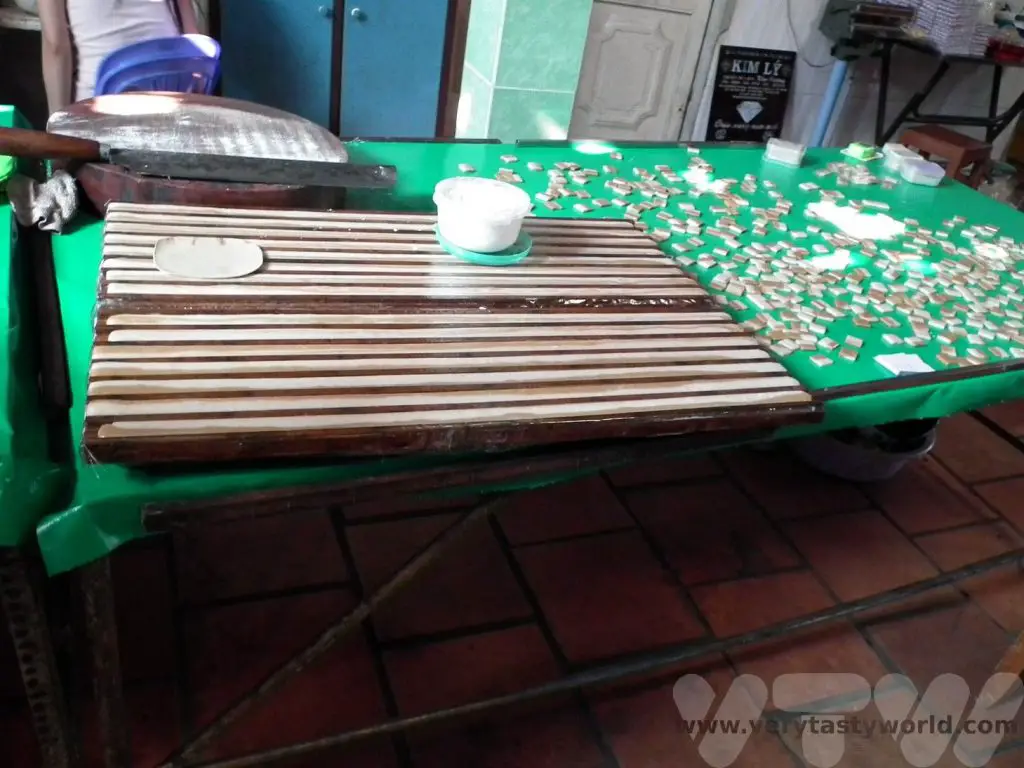
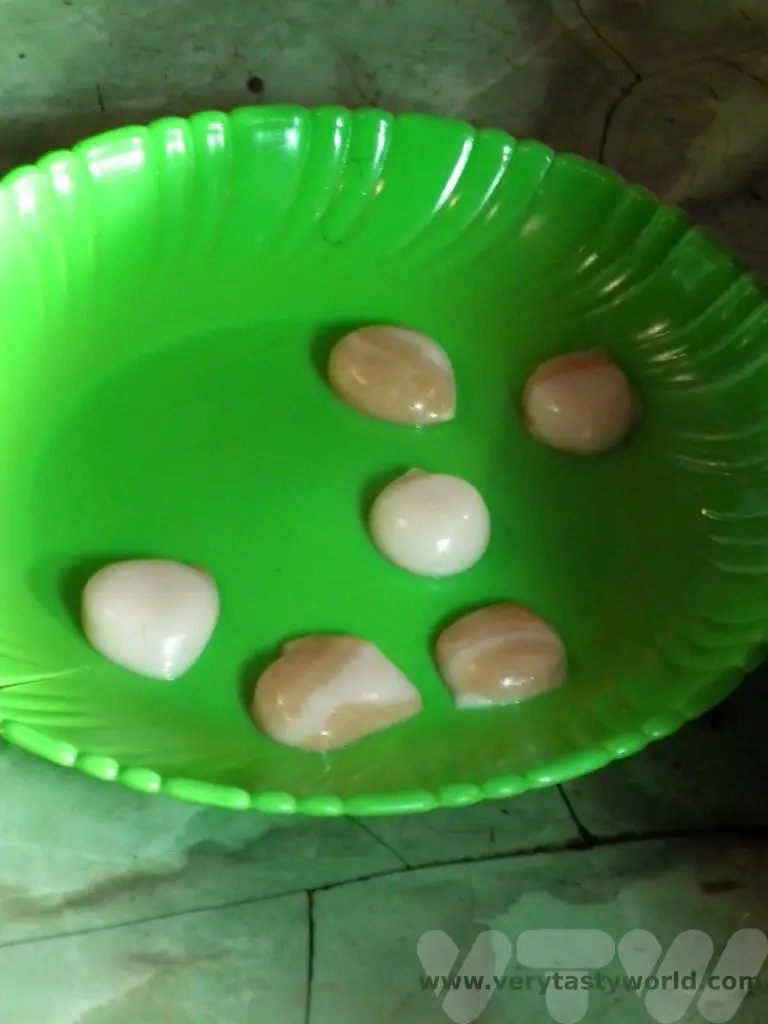
Related Posts You May Enjoy

